The 12 best places to visit in Sri Lanka

Nov 9, 2023 • 9 min read
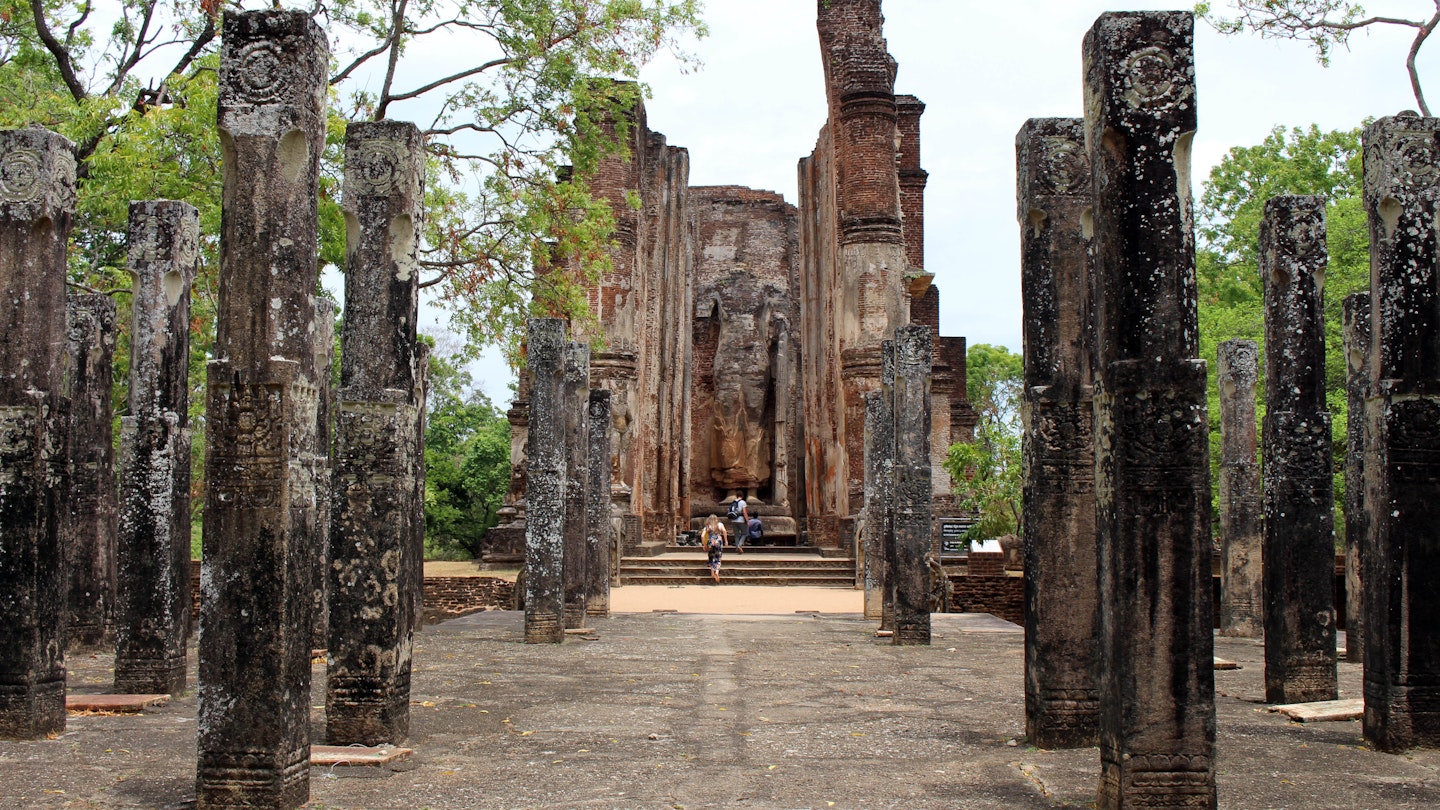
Polonnaruwa is famed for its ancient ruins, rock temples and Buddhist heritage © leodaphne / Getty Images
With rugged mountains, untouched beaches and fertile soil that grows coconuts, tea and spices, Sri Lanka offers travelers a wondrous mix of experiences unmatched for an island of its size.
Today the country’s rich heritage, delectable cuisine and astonishing wildlife are more accessible than ever, thanks to an ever-improving public transport system. Trains, buses, coaches and tuk-tuks carry visitors to all parts of the island at various price points. But with so many charming places to choose from, where does one start?
Depending on what you’re looking for – art, culture, history – what you put down on your Sri Lanka itinerary is bound to change. Still, here’s our selection of the best places to visit in Sri Lanka to get you started.

Best for exploring on foot
No Sri Lanka itinerary is complete without Colombo , the country’s culturally diverse hub. (But not its capital – that’s actually Sri Jayawardenepura-Kotte!) An ideal first taste of Sri Lanka, with tuk-tuks, cars and buses rushing through busy lanes, Colombo is renowned for its landmark buildings around the cosmopolitan Fort district, including the terracotta-roofed Dutch Hospital .
Be sure to spend some time at Galle Face Green , a seaside promenade where hundreds of families gather to dip their toes in the sea at sunset and children fly kites overhead. Order yourself isso wade , deep-fried prawn and lentil cakes, topped with spicy sambol , and people-watch.
Planning tip: While Colombo is a safe and walkable city, tuk-tuks are inexpensive and convenient for getting around. Always check that your tuk-tuk has a working meter before you get in to ensure you pay the correct fare for your ride.


2. Sigiriya
Best for history buffs and art aficionados
With ornate ponds, royal sleeping chambers and majestic lion paws carved into the base of the rock, the colossal granite fortress of Sigiriya is easily Sri Lanka’s most recognizable site, peeking out of a thick jungle canopy for a glimpse of the ancient kingdom of Kassapa.
Although its frescoes – images of bare-breasted women adorned in jewelry with flowers in their hair – are famous, the view from the top of the rock is unparalleled. A hush of calm echoes over the terraced summit, which covers 1.6 hectares (4 acres).
Planning tip: Get here around 7am – the cooler morning air makes for a pleasant walk up the 1200 steps to the top. Aim to head back down before noon (before the rock surface gets too hot), stay hydrated and wear soft shoes with tread.

3. Anuradhapura
Best for experiencing Buddhist culture
Anuradhapura looks misleadingly like any other Sri Lankan town when you arrive: an unremarkable clock tower, a single train station and small shops lining a busy main road. But the town's simple facade gives nothing away regarding the enormous scale of its heritage as the heartland of Sri Lankan Buddhist culture.
The main feature of this area remains the sacred Sri Maha Bodhi tree, believed to have been planted from a cutting from the tree Buddha attained enlightenment under in Bodhgaya, India. Beyond this, Anuradhapura is bursting with archaeological wonders: colossal dagobas (stupas), temples, palaces and venerable Buddhist sites scattered among the jungles and villages of the area.
Planning tip: Comfortable shoes are a must for walking between sites. Buddhist temples, even as ruins, are still places of worship, and footwear must be removed before entering. Carrying a scarf to cover legs and shoulders is always a good idea.
4. Polonnaruwa
Best for ancient archaeological wonders
Often twinned with a visit to Anuradhapura, Polonnaruwa is also famed for its ancient ruins, rock temples and Buddhist heritage.
As you gaze upon the 14m (46ft) reclining Buddha in Gal Viharaya and its surrounding carvings, you can’t help but imagine what went into creating these figures. The white, grey and black granite softens the details of these intricate carvings, and the scent of fresh flowers and incense, offered to the statues by devotees, floats through the temple's air.
Don’t skip the remaining archaeological sites in the area, including the Royal Ruins , which can be visited in a day and contain closely grouped temples and stupas.
Planning tip: If traveling toward Jaffna in the north of Sri Lanka, both Anuradhapura and Polonnaruwa are great places to stay and break up the journey.
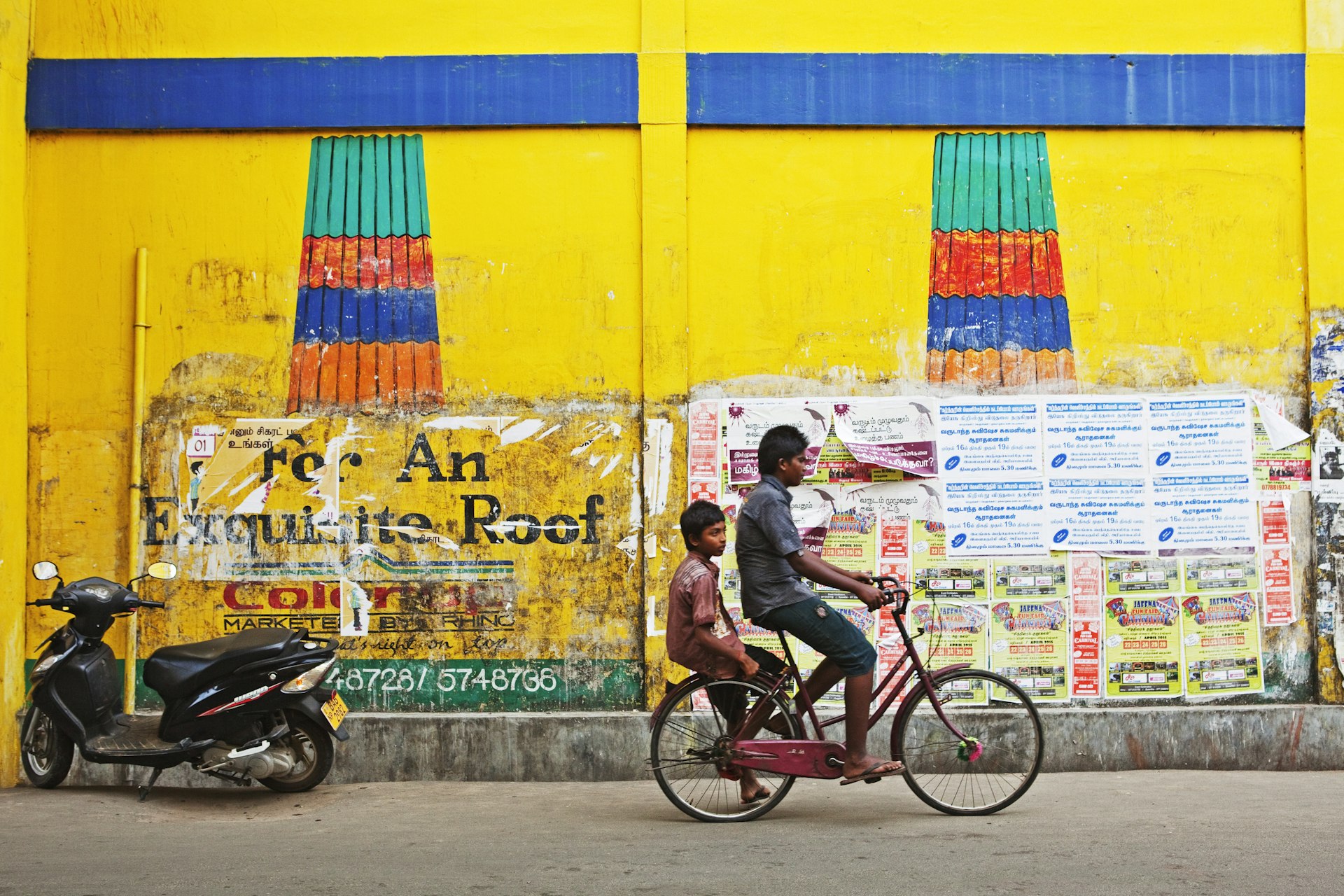
Best for a taste of Tamil culture
From the Jaffna Fort to the architecturally marvelous Nallur Kandaswamy Kovil , a Hindu temple adorned with brasswork and staggering murals, Jaffna is a relaxed change from the rest of the country. Here you can immerse yourself in the culture and heritage of Sri Lanka’s largest ethnic minority: the Tamil people.
Once under Portuguese and Dutch occupation, today’s Jaffna is revitalized with up-and-coming restaurants. Of the several islands off the coast of Jaffna accessible by roads and ferries, Kayts – a hauntingly beautiful, quiet island of fishing communities – and Delft, with its wild ponies descended from horses abandoned by Dutch colonists, are worth a visit.
Planning tip: The Tamil-centric culture in Jaffna differs from the rest of the island. Be mindful of local customs, such as removing footwear when entering certain sites. This includes the Jaffna Public Librar y, where footwear is removed as a means of respecting the knowledge within the building.

6. Trincomalee
Best for an unspoiled beach vacation
Stretches of powdery soft beaches and calm waters meld with dramatic cliffside Hindu temples – among them the famous Kandasamy Kovil , with unmistakable ornamental architecture and a monumental statue of Shiva looking out to sea – for a touch of Sri Lanka that remains off most tourists’ radars.
The coastline here is only disturbed by the occasional bit of driftwood or coconut husk washing ashore in the shallow waters, ripe for snorkeling, where miles of coral reefs and marine life thrive.
Planning tip: Public beaches here do not have lifeguards, and swimming and snorkeling should only be undertaken with a guide.

7. Dambulla
Best for pilgrim trails
An important part of the country’s pilgrim trail, set within a quiet jungle that's home to the native toque macaque (aka toque monkey), Rangiri Cave Temple in Dambulla is the most visited place in Sri Lanka.
Expect troops of monkeys to accompany you on the walk up to the temple, inside which you'll find a series of five caves containing 150 well-preserved statues of Buddha alongside religious art, sculpted and painted into the rock.
Planning tip: Wear white or soft colors as a mark of respect, and expect crowds on full-moon days, which are holy days in the Buddhist calendar. While toque macaques are delightful to watch, they are wild and should never be approached.
8. Minneriya National Park
Best for witnessing the largest gathering of Asian elephants in the world
Herds of wild elephants – around 300 in number – graze nearly 9000 hectares (22,240 acres) of Minneriya National Park, where life centers around Minneriya Lake. Watch in awe (cameras at the ready, naturally!) as long trunks draw water and calves roll around on the banks in wet mud.
Once a year, during the dry season, all 300 elephants gather around the banks of the lake to graze in a marvelous natural event known as "the Gathering." This also happens to be the largest gathering of Asian elephants in the world.
Planning tip: April to October is the best time to see the Gathering. Prebooking your safari and sharing jeeps helps to reduce the number of vehicles entering the park during this busy period.

Best for experiencing Sri Lanka’s Hill Country
An ideal day trip from Colombo, the train departs the city’s Fort Railway Station and pulls into the heritage town of Kandy in under four hours. As the train curves and winds around mountains to connect rural towns, wide windows frame the view of deep ravines and hillsides densely covered in emerald-green tea bushes.
The Temple of the Sacred Tooth Relic and Kandy Lake , both must-do attractions for anyone visiting Sri Lanka, are easily reached via tuk-tuk from the station.
Planning tip: Visitors are required to cover their arms, legs and shoulders when visiting the Temple of the Sacred Tooth Relic. The Kandy-to-Colombo train is an alternative way to experience Sri Lanka’s railway journeys, as popular towns such as Ella are 10 hours away from Colombo.
10. Kalpitiya
Best for surfing enthusiasts
Despite attracting thrill-seekers from around the world, Kalpitiya retains most of its quaint coastal charm, with the exception of a Dutch-era fort that is occupied by the Sri Lankan navy. Cows, goats and donkeys stroll across the villages. Thatched-roof beach huts with outdoor showers offer that stereotypically pleasing surf-shack vibe, and most mornings you’ll wake to a crowing rooster. Most important, just 30km (19 miles) north of here at Vella Island, a narrow sandbar, you’re surrounded by tall, clear waves – kitesurfing heaven.
Planning tip: The weather for kitesurfing is ideal between October to May, and there are several kitesurfing schools around Kalpitiya.
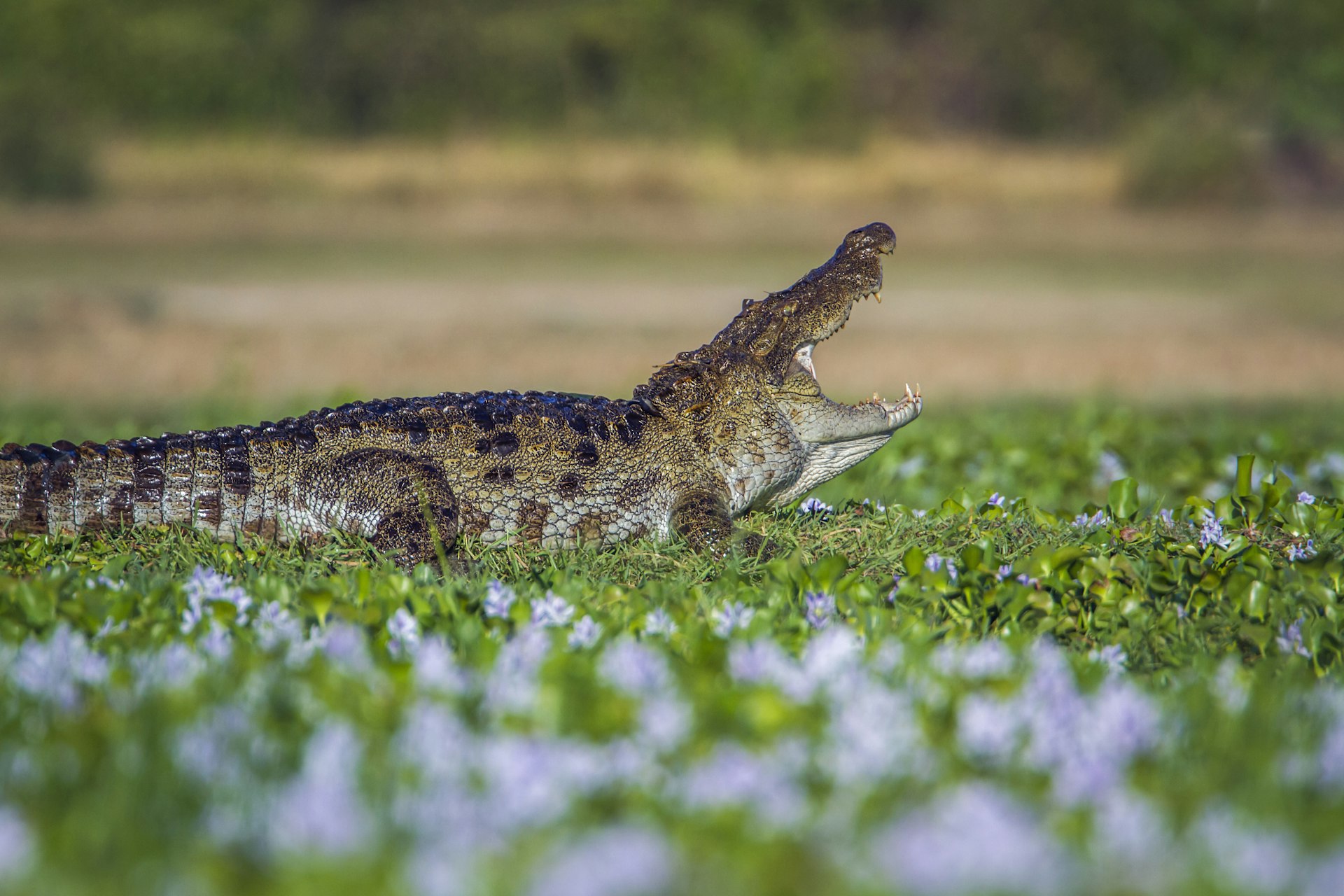
11. Kumana National Park
Best for spotting birds
Known for its 200-hectare (494-acre) bird reserve, Kumana National Park is a birder’s dream, home to throngs of vibrant kingfishers and jungle fowl alongside 255 recorded species of endemic and migrating birds, all of which find sanctuary in the park's mangrove swamps and lagoons.
Expect to spot falcons and eagles as they soar above or peacocks shimmying on the ground. Also frequently spotted here: cleverly camouflaged crocodiles lying in wait on the sandy banks of the lake for a chance encounter with buffalo.
Cap off your trip here with a visit to the coastal village of Panama, which many visitors bypass in favor of bigger towns, such as Pottuvil and Arugam Bay . Between the tiny monastery under a rock, thatched-roof homes and dirt tracks through paddy fields, Panama is one of the most remote places to see.
Planning tip: Entrance to Kumana National Park is through the village of Okanda. Prearranging a guided jeep safari is best for enjoying the park.
12. Adam’s Peak
Best for experiencing a night hike
Adam’s Peak (the footprint of Prophet Adam, in Islam), Sri Pada (the sacred foot of Buddha) and Samanala Kanda (the mountain of the butterflies and a reference to the local deity Saman) are multiple names given to Sri Lanka’s holiest peak, considered sacred by all religions on the island.
Join thousands of pilgrims, dressed in white, in the early hours of the morning to hike slowly and quietly to the little temple at the top . Humble teahouses, resting places and shrines dot the landscape as you ascend. Pilgrims greet each other through blessings for a good climb. The hike to the top takes three to four hours, depending on the trail you choose. Aim to summit at dawn to catch the first rays of the sun wrapping around the mountain.
Planning tip: Adam’s Peak is 2243m (7359ft) high and a moderate climb. Ascending via Hatton and descending via Ratnapura is the shortest route, although steeper.
The full-moon days in December and May mark the beginning and end of the climbing season. During this period, set off earlier to sidestep the crowds, or expect slow and packed trails. Climbing in the offseason is not recommended, as it coincides with the southeastern monsoon.
This article was first published April 2021 and updated November 2023
Explore related stories
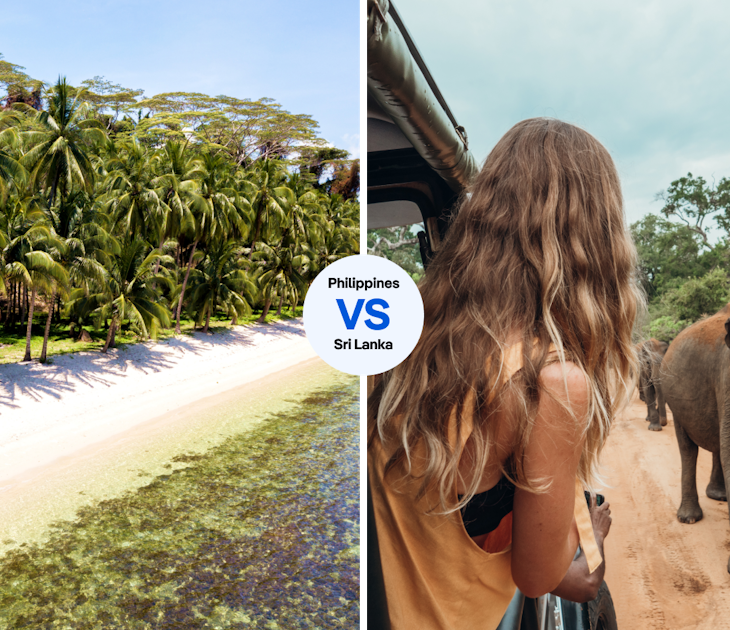
Feb 14, 2024 • 8 min read
We asked a pair of passionate writers to make the case for two of Asia’s most fabulous destinations.

Nov 7, 2023 • 8 min read
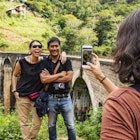
Oct 29, 2023 • 6 min read

Oct 15, 2023 • 3 min read
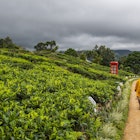
Oct 14, 2023 • 11 min read
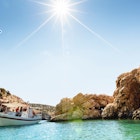
Jun 2, 2023 • 8 min read
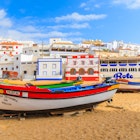
May 26, 2022 • 18 min read

Jan 20, 2021 • 6 min read
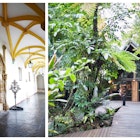
Nov 3, 2019 • 8 min read

Jan 2, 2024 • 11 min read
Things to Do in Sri Lanka
Things to Do in Colombo
Things to Do in Galle
Where to Safari
Best Beaches
Adventurous Things to Do
Top Dishes to Try
Best Time to Visit
Weather & Climate
Bandaranaike International Airport Guide
Top Destinations in Sri Lanka
The Top 10 Destinations in Sri Lanka
Jamie Hergenrader is the Commerce Director of the Travel Group at Dotdash Meredith where she leads the content strategy of product reviews and recommendations for the company's travel brands. She joined the company in 2018 and has nearly a decade of experience writing and editing for travel and lifestyle publications.
Sri Lanka’s rich culture and history, gorgeous landscape and scenery, and plentiful wildlife-spotting opportunities are the main reasons the country tops many travelers’ bucket lists. And due to its relatively small size, many of the best attractions and destinations are within only a couple of hours of each other. In one day, if you’re on a tight schedule, you could spend the morning at one of the country’s eight UNESCO World Heritage sites, go on a safari in the afternoon, and then in the evening, relax and enjoy a cup of tea from one of the hill country plantations. Or, with more time, allow the opportunity for spontaneous exploration—road tripping throughout the country offers scenic views almost everywhere, and you might pull over for an elephant sighting or two along the way!
Jamie Hergenrader
Kandy, a major city in Sri Lanka’s hill country, is one of the most popular tourist destinations and one corner of the country’s Cultural Triangle. It’s surrounded by mountains of rainforest and tea plantations and is home to a beautiful lake within the city. Visit the Temple of the Tooth, a sacred temple that houses Buddha’s tooth; wander the city’s colorful streets, and admire the architecture while sampling food from the many street vendors; walk around the lake for scenic views of the lake itself and also the colorful buildings that dot the hillsides around it; and make the quick drive outside of the city to the Peradeniya Royal Botanical Gardens to visit its orchid house and its spice garden, the latter of which will take you on an olfactory tour of the country’s native spices.
This massive rock formation is not only a breathtaking sight to take in as you approach, jutting up from the flat lands that surround it but also a place of cultural and historical significance. The UNESCO World Heritage site was a fort and palace that dates back to the fifth century. A network of winding staircases and paths will lead you to the top of the rock if you’re game to do the 1,217-step climb. Along the way, you’ll get panoramic views of the valley around you, you’ll pass ancient paintings by monks on the rock walls, and learn about the kingdom that once called this rock home. If you plan on making the entire climb (which we highly recommend), arrive at the park at opening time—you’ll avoid the afternoon heat and beat most of the crowds.
Anuradhapura
Anuradhapura, one of the three corners of Sri Lanka’s Cultural Triangle and the current capital city of the North Central Province, was the first ancient capital in Sri Lanka, thriving for more than 1,300 years until it was abandoned in 993. Tourists visit this UNESCO World Heritage site to explore the well-preserved ruins and significant Buddhist history. Several dagobas, distinctive dome-shaped memorials, remain in the city, one of which is said to house Buddha’s collarbone. Another important site is the Bodhi tree found in the Mahamewna Gardens —it’s the oldest known human-planted tree in the world, and it grew from the southern branch of a sacred fig tree in India, the tree under which Gautama Buddha was said to have gained enlightenment.
Polonnaruwa
Jamie Hergenrader
The third corner of the Cultural Triangle , Polonnaruwa became the second capital after Anuradhapura was abandoned. Like Anuradhapura, Polonnaruwa is a draw for visitors interested in touring the city’s history and ruins, including those of the royal palace and other royal spaces, the quadrangle (a raised, walled-off area of monuments and Buddha statues), and dagobas. You’ll undoubtedly spot many monkeys (toque macaques) in the area, and that population of native, endangered monkeys was featured in Disney’s nature documentary, “Monkey Kingdom.”
Yala National Park
Yala National Park, located along the southeastern coast of Sri Lanka, is the most visited national park in the country, primarily because of the chance to spot the leopards in the area—it is home to one of the largest concentrations of leopards in the world. (The land became a wildlife sanctuary in 1900 and then a national park in 1938.) Although it comprises five blocks, only two of them are open to the public for safari to preserve and protect the majority of the land. Between February and July is the best time to visit; during these months, the lower water levels bring more animals out in the open searching for water. However, the park can get crowded in these peak months, and higher traffic through the park can lessen your chances of spotting one of the elusive leopards. Even so, you’ll still have the opportunity to see elephants, crocodiles, and water buffaloes.
Minneriya National Park
TripSavvy / Lauren Breedlove
Sri Lanka has plenty of safari opportunities, but Minneriya National Park is known for having the world's largest gatherings of Asian elephants. Previously an elephant sanctuary, the land was converted to a national park in 1997, and Asian elephants still freely roam the grounds in large herds. While you'll likely get a glimpse of several whenever you visit, the dry season from June to September is the best time to visit. This is when the elephants (sometimes as many as 300) will congregate around the reservoir. It might be most famous for these elephant sightings, but the park is also home to more than 170 species of birds, leopards, monkeys, and other wildlife.
Many tourists skip Colombo to set off for the country’s beautiful nature destinations, but the capital city deserves some of your time . Colombo comprises several distinct neighborhoods that showcase the old and new—from ancient temples and colonial architecture to modern skyscrapers and city parks. It’s easy (and recommended) to wander and simply take in the sights as you go. One impressive architectural sight you won’t be able to miss is the Jami Ul-Alfar Masjid (also known as the Red Mosque), a red and white mosque in Colombo’s Pettah neighborhood. Admiring it from the outside is intriguing enough, but if you want to go inside, ensure you’ve dressed appropriately; women need to cover their hair, arms, and legs.
This fortified old city on the southwest coast of Sri Lanka is another of the country’s impressive UNESCO World Heritage Sites. One of the best things to do is walk along the fort’s ramparts that give you a view out to the water and inward toward the fort and city. You can also take a self-guided tour of the fort to learn about its history and architecture. Although the fort is the main attraction for visitors to the area, Galle is a prime destination for shopping as well; wander the pedestrian-friendly streets to check out the many art galleries, upscale markets, and boutique stores selling clothes, jewelry, souvenirs, and home goods.
Nuwara Eliya
Tea is one of Sri Lanka’s biggest exports, so a trip to the rolling hills of tea country is well worth your time. Nuwara Eliya boasts hundreds of acres of tea plantations and several tea production facilities you can visit to learn about the entire tea-making process, from planting to picking and steeping at home. Once you’ve had your fill of tea, be sure to explore the other gorgeous surroundings of Nuwara Eliya, such as the manicured and well-maintained Victoria Park, Lake Gregory for a day on the water, or a lakeside picnic, or the beautiful, 350-foot tall Ramboda Falls.
As one of the main beach destinations in the country, Mirissa attracts those looking for a laid-back, leisurely vacation of days lounging on the sand and nights out on the town. Among the gorgeous beaches in Mirissa, Mirissa Beach and Secret Beach are two of the best for their beauty and seclusion, but neither one gets too crowded. If you’d rather be out on the water, Mirissa is a surfer’s paradise, especially from October to April, and it’s also a popular destination for whale watching tours to spot blue whales. After a day in the sun, hit some of the casual but lively restaurants and bars, some of which are right along the beach, making them a perfect setting for a sunset cocktail.
Best Spas in Sri Lanka
20 Top Things to Do in Diverse India
The Top 7 Adventurous Things to Do in Sri Lanka
17 Top Tourist Places to Visit in Rajasthan
The Top 11 Things to Do in Sri Lanka
Your Trip to Sri Lanka: The Complete Guide
Where to Safari in Sri Lanka
The Top 11 Things to Do in Galle, Sri Lanka
Where Is Sri Lanka?
Top Mexico Destinations
Weather in Sri Lanka: Climate, Seasons, and Average Temperatures
10 Top Tourist Places in Madhya Pradesh
16 Best Tourist Destinations in India
19 Top Tourist Destinations in Tamil Nadu
16 Cheapest Islands in the World to Visit
Guide to Popular Tourist Sites in India by Region
Sri Lanka Travel Guide: a 3-week travel itinerary
Sri Lanka has to be one of the greatest travel destinations of all time, a beautiful tropical island in the middle of the warm Indian ocean waters. Three weeks is an ideal length for a Sri Lanka route, as you cross through the jungle, mountains, tea plantations, and paradise coastline. Start in big metropolitan cities and end your time relaxing on beautiful beaches with a coconut in hand. Everything you could possibly dream of is in this beautiful country with the perfect Sri Lanka route.
Sri Lanka Route Guide
This 3-week itinerary through Sri Lanka is a day-by-day Sri Lanka route. The island is easy to travel through and can be done by bus, tuk-tuk, motorbike, taxi, or private driver. One of the more popular options is to travel by traditional Sri Lankan train , gaining a wonderful insight into Sri Lankan culture as you fly through beautiful landscapes.
Use this 3-week route to cover the top things to do in Sri Lanka, and if you have more time, we’ve added some additional options.
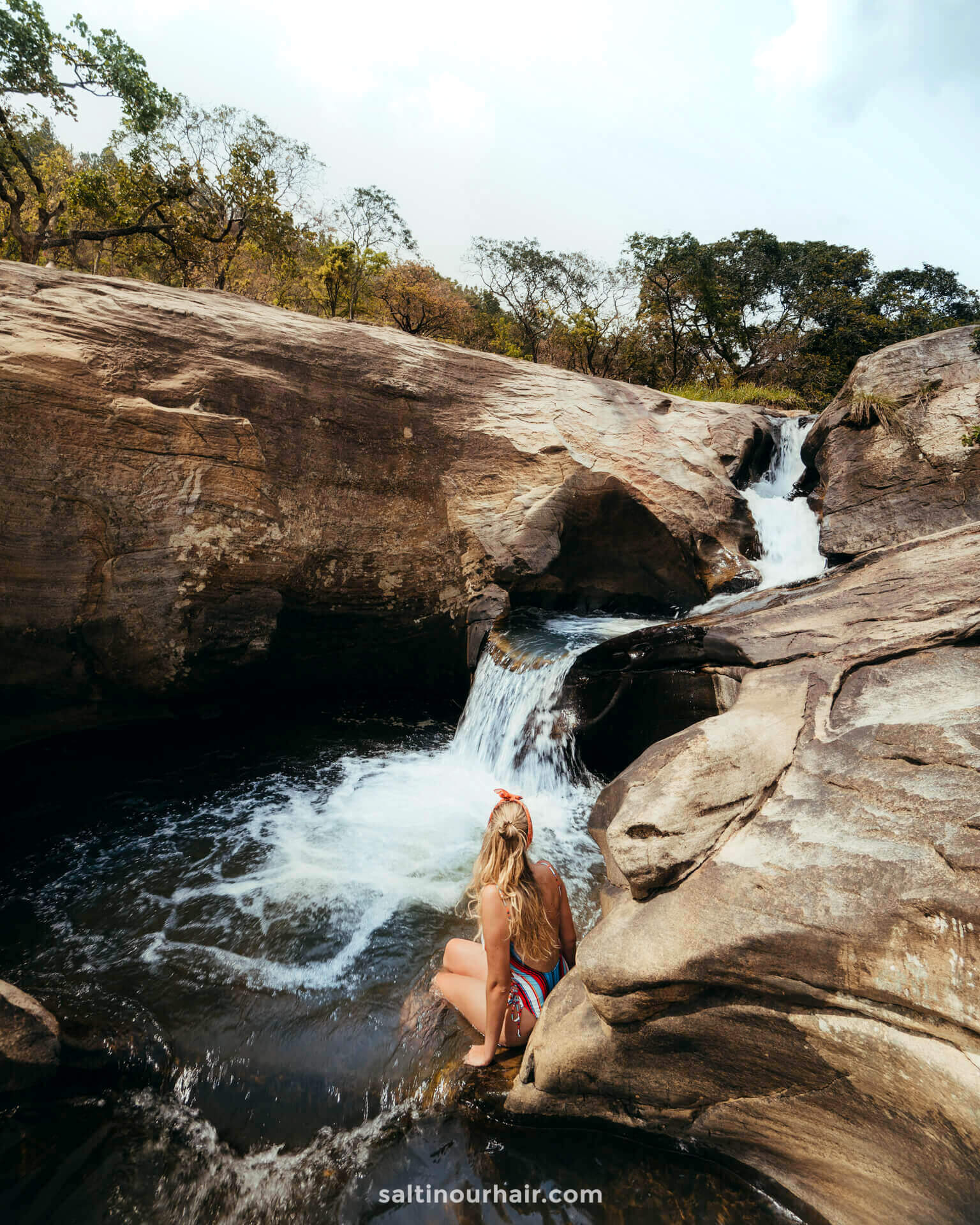
Day 1 – 2: Relaxing in Negombo or Colombo
Start your trip in Colombo, Sri Lanka’s capital city. Here you’ll discover a unique mixture of modern and traditional, where towering skyscrapers and luxurious rooftop bars sit next to stunning mosques, traditional houses, and bustling street markets.
After a busy day of sightseeing, head to one of the beautiful parks to relax and see unique tropical plants, trees, and flowers. Alternatively, take a wander down to the city beach, where you can watch locals flying their kites in the coastal breeze or cheering as they score points playing cricket.
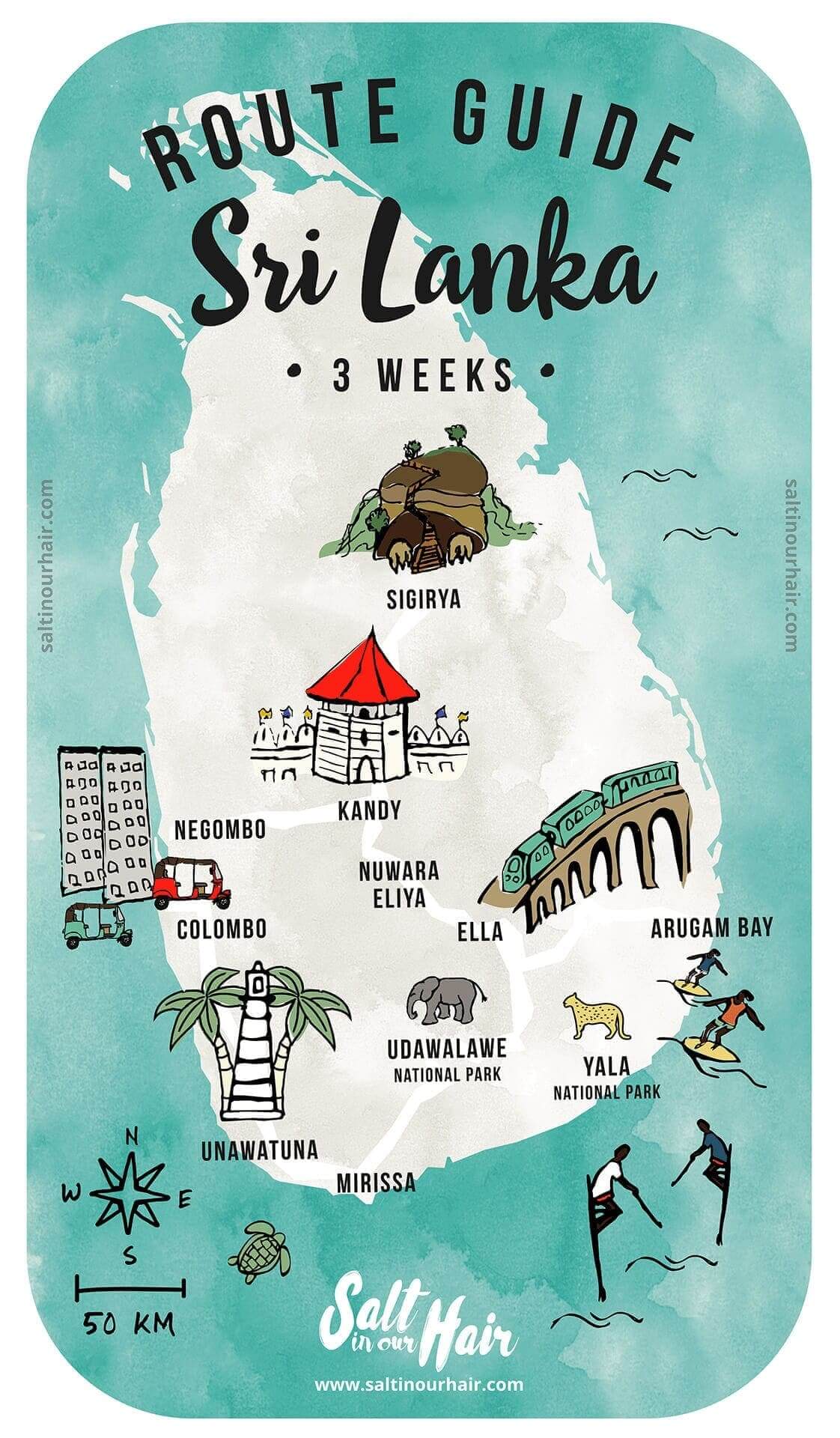
However, Colombo is not the closest city to the airport. For more convenience, head to Negombo, a laid-back town that’s right next to the airport.
Where to Stay in Negombo
Negombo is a great place to stay for cheaper accommodation with swimming pools where you can relax and unwind after the flight.
Hotels in Negombo 😴
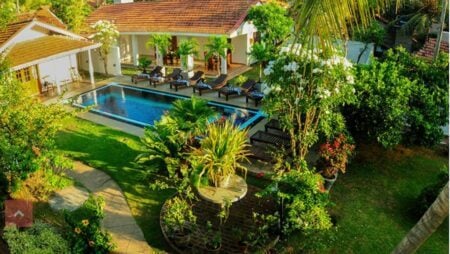
The beaches are also far more picturesque in this city, so if you’re looking to enjoy coastal relaxation, it’s a better choice to begin your trip.
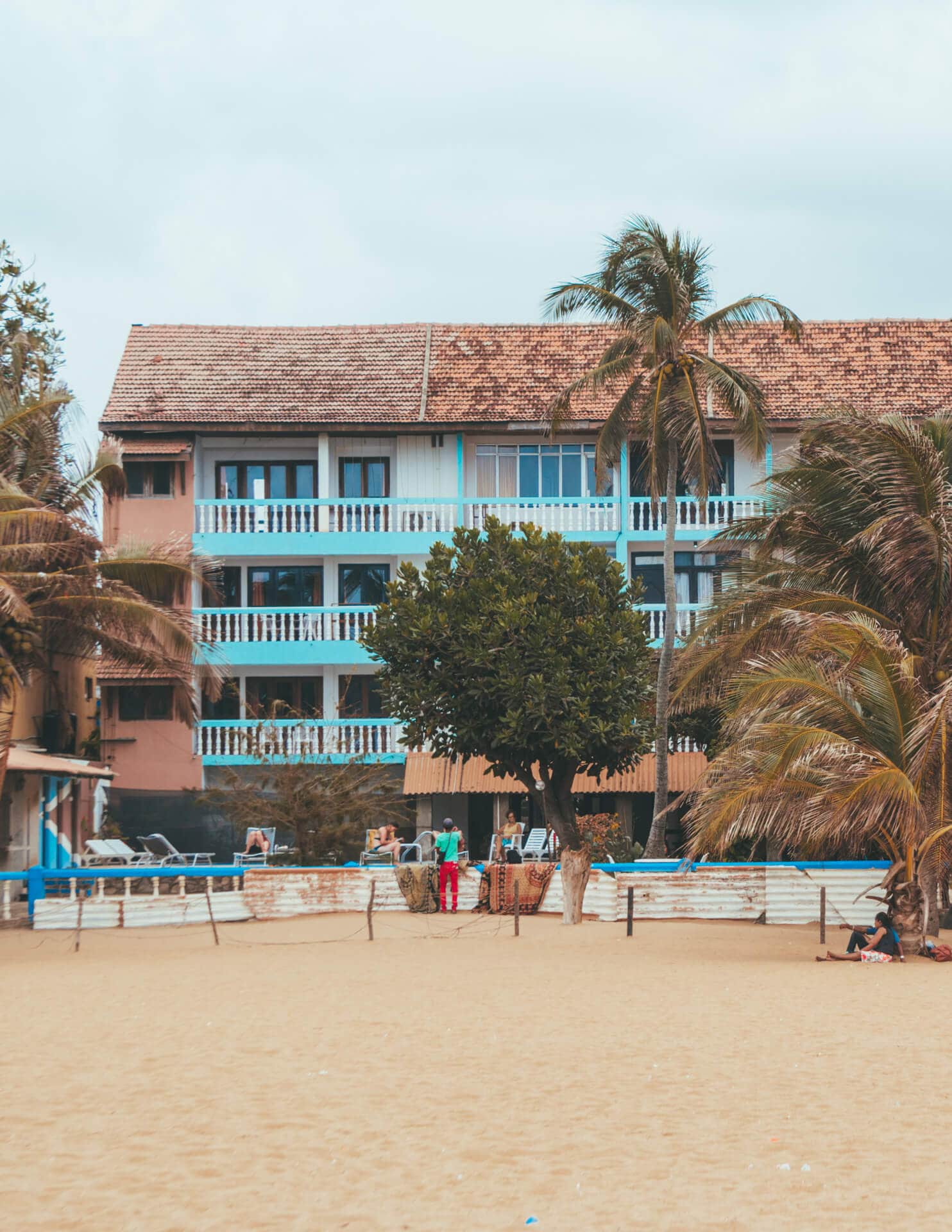
Day 3: Sightseeing in Kandy
Kandy is Sri Lanka’s second-largest city and one of the most beautiful you’ll find in all of Sri Lanka . Discover the old colonial buildings that line the edges of a vast lake in the center, keeping an eye out for exciting wildlife and unique plants. Plus, the buzzing streets filled with coconut sellers and stalls are just a stone’s throw away from this fantastic nature.
To get from Colombo or Negombo to Kandy you have three options, the bus, train, or a taxi. Looking for a Sri Lankan driver? Contact our friend Indi on Whatsapp (+94777644144) .
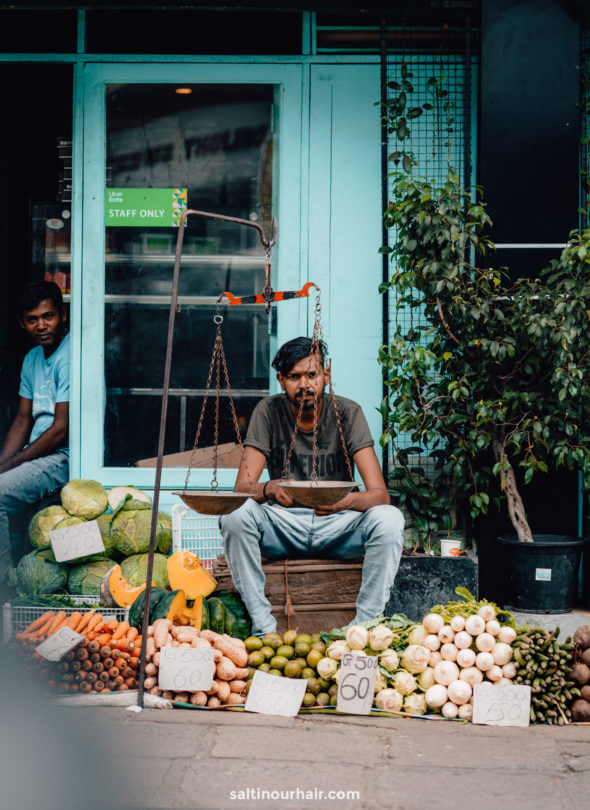
Don’t forget to pay a visit to the Royal Botanical Gardens, a fantastic tranquil wilderness in the city full of a diverse range of plants, trees, and flowers. As you look around, you’ll notice that the mountains and tropical rainforests are never far away! It’s this proximity that makes Kandy a great jumping-off point for day trips.
Read : 9 Things to do in Kandy
Where to Stay in Kandy
Kandy offers a good selection of affordable hostels and hotels to suit every kind of traveler.
Hostels in Kandy 😴
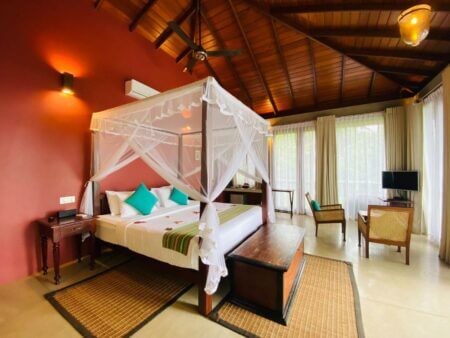
We recommend staying in the city center to explore everything easily. Alternatively, choose to stay up in the hills for ultimate tranquility.
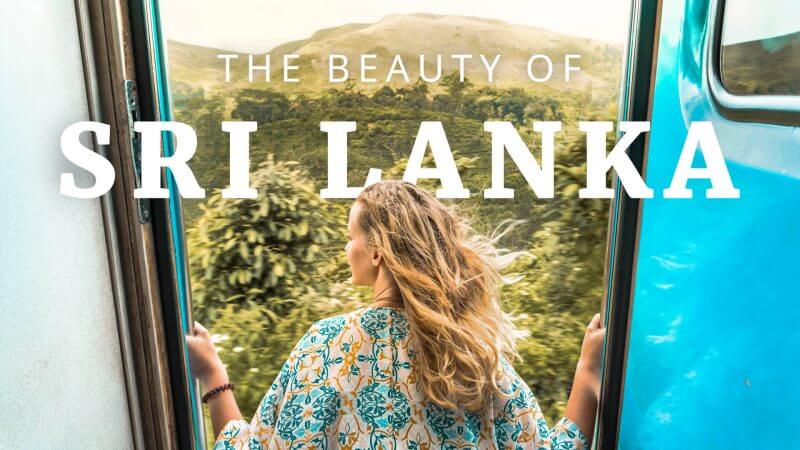
Day 4: Sigiriya
Lion Rock in Sigiriya is one of the country’s most famous landmarks. The enormous natural formation sticks out of the flat landscape, towering above forests and grasslands filled with elephants. On top of the 200-meter square-shaped rock, you’ll find the remains of an ancient palace and gardens and many rock drawings along the way. Additionally, Lion Rock is one of the eight UNESCO World Heritage sites in Sri Lanka, which is another reason to add it to your Sri Lanka route!
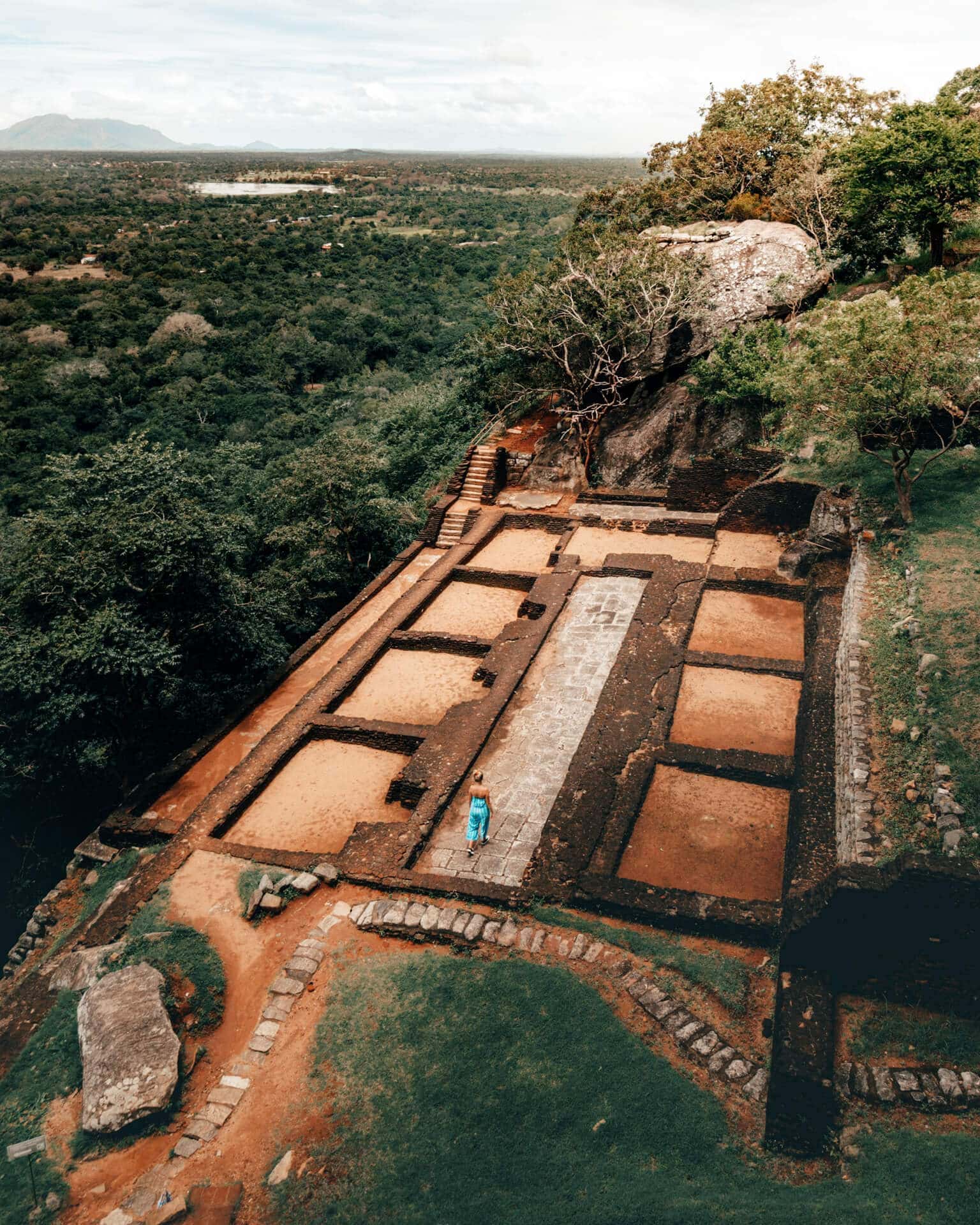
Alternatively, visit Pidurangula Rock , Lion Rock’s nearby little sibling. This rock may be smaller, but it provides a better view as it looks directly onto Lion Rock. There’s also a cheaper entrance fee too!
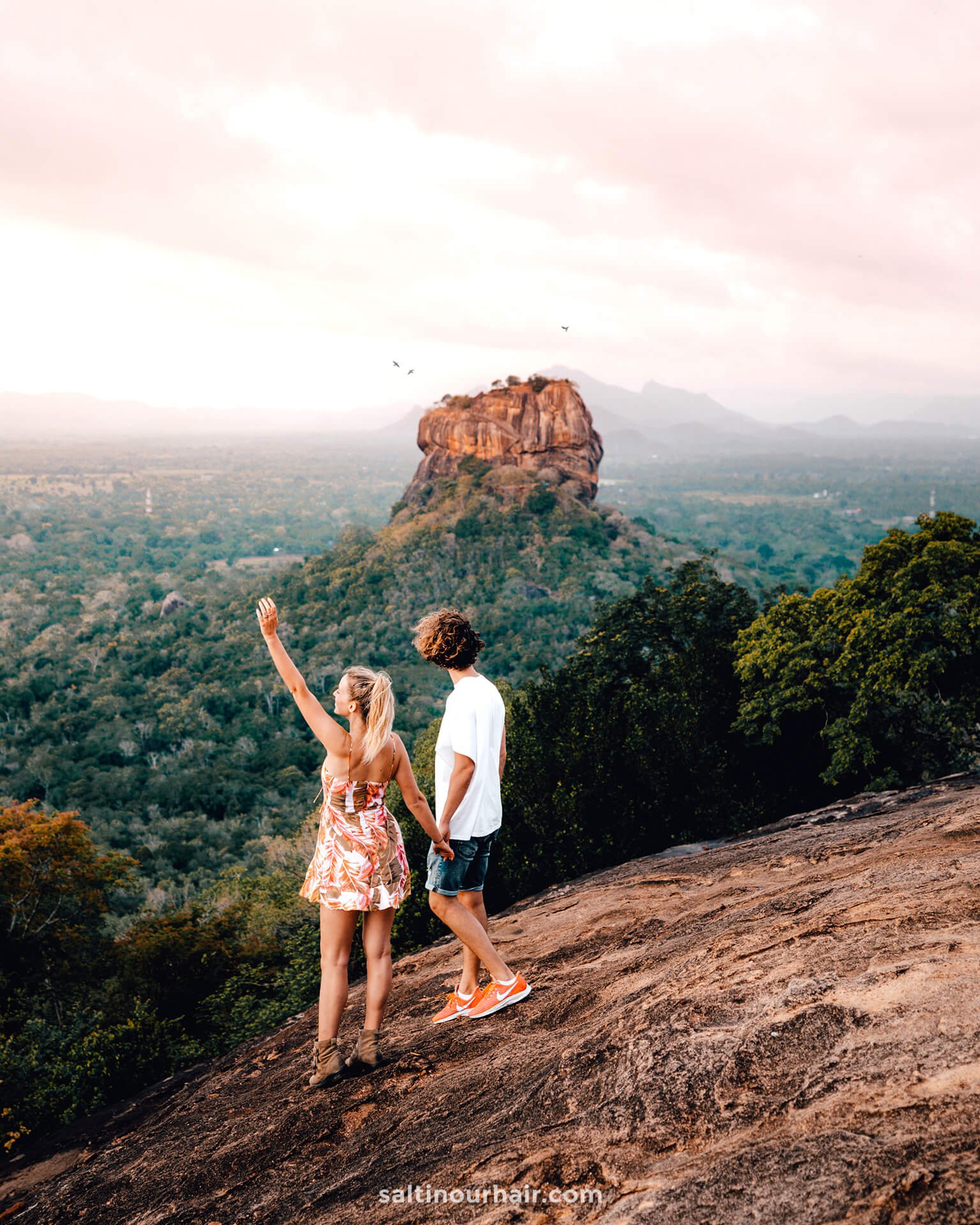
If you have time to stay a few nights in Sigiriya, we recommend relaxing in one of the many beautiful hotels in nature, hiking the rocks, or going on an elephant safari in the flat valley. To get there, hire a driver or look for a shuttle bus (a 3-hour drive from Kandy).
Read: Climb the World-Famous Sigiriya Lion Rock
Where to Stay in Sigiriya
Most of the accommodation in Sigiriya is a bit higher in price. However, it does allow you to enjoy and make the most of the incredible scenery in this area.
Hotels in Sigiriya 😴
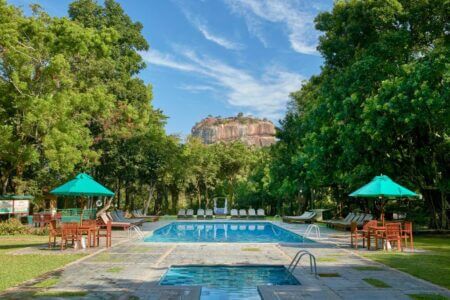
Tip: Some hotels even have direct views from the rooms of the rocks themselves!
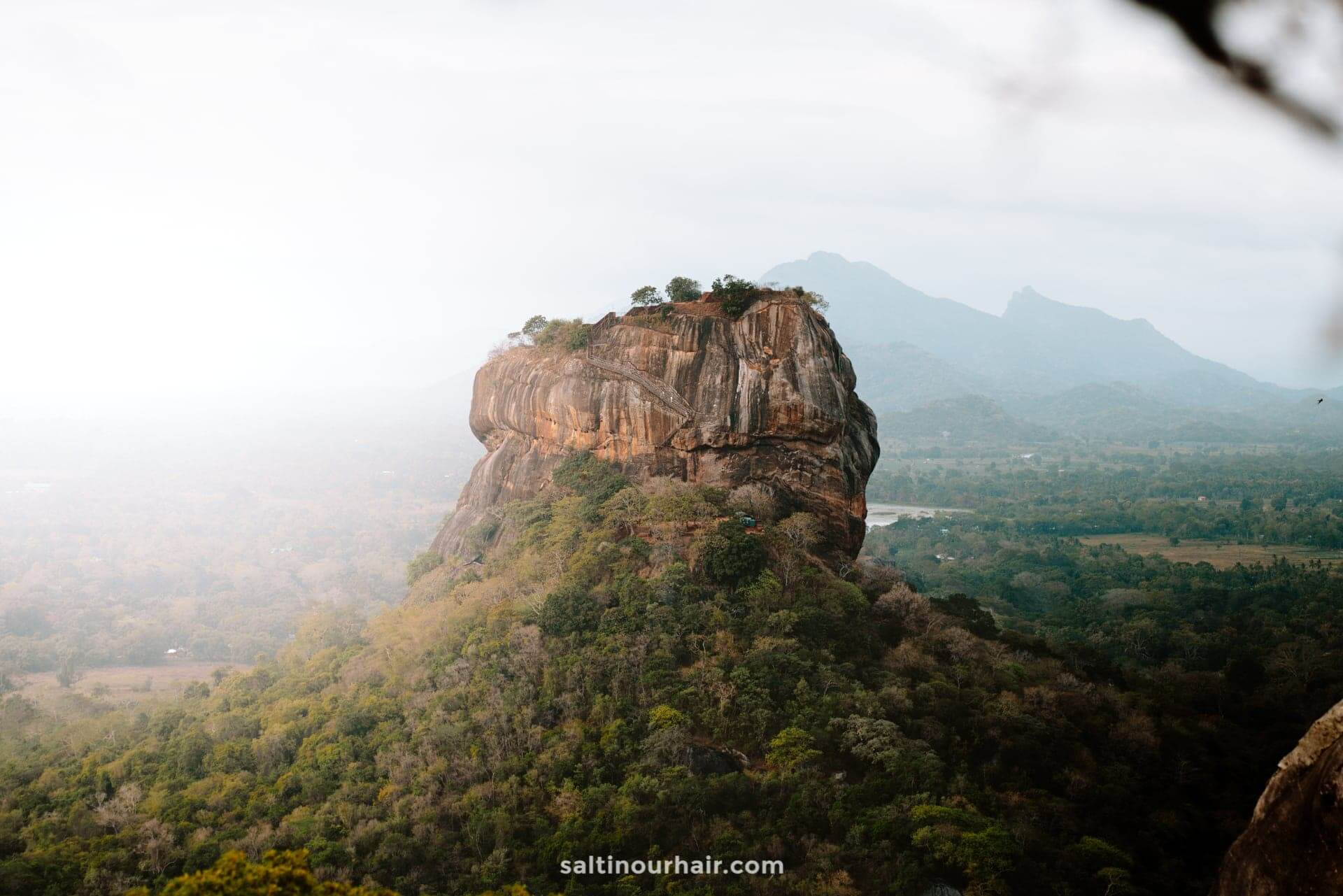
Day 5: Kandy to Ella Train Ride
Head back to Kandy to catch the most beautiful train ride in Sri Lanka . This long train ride is one of the top things to do on any Sri Lanka route, taking you through stunning rolling hilltops, rainforest, and luscious green tea plantations. Hang out the door with the wind in your hair and feel the weather get cooler as you move higher up into the mist and the clouds of the Sri Lanka highlands. Get Kandy Train Tickets here .
Read: Kandy to Ella Train
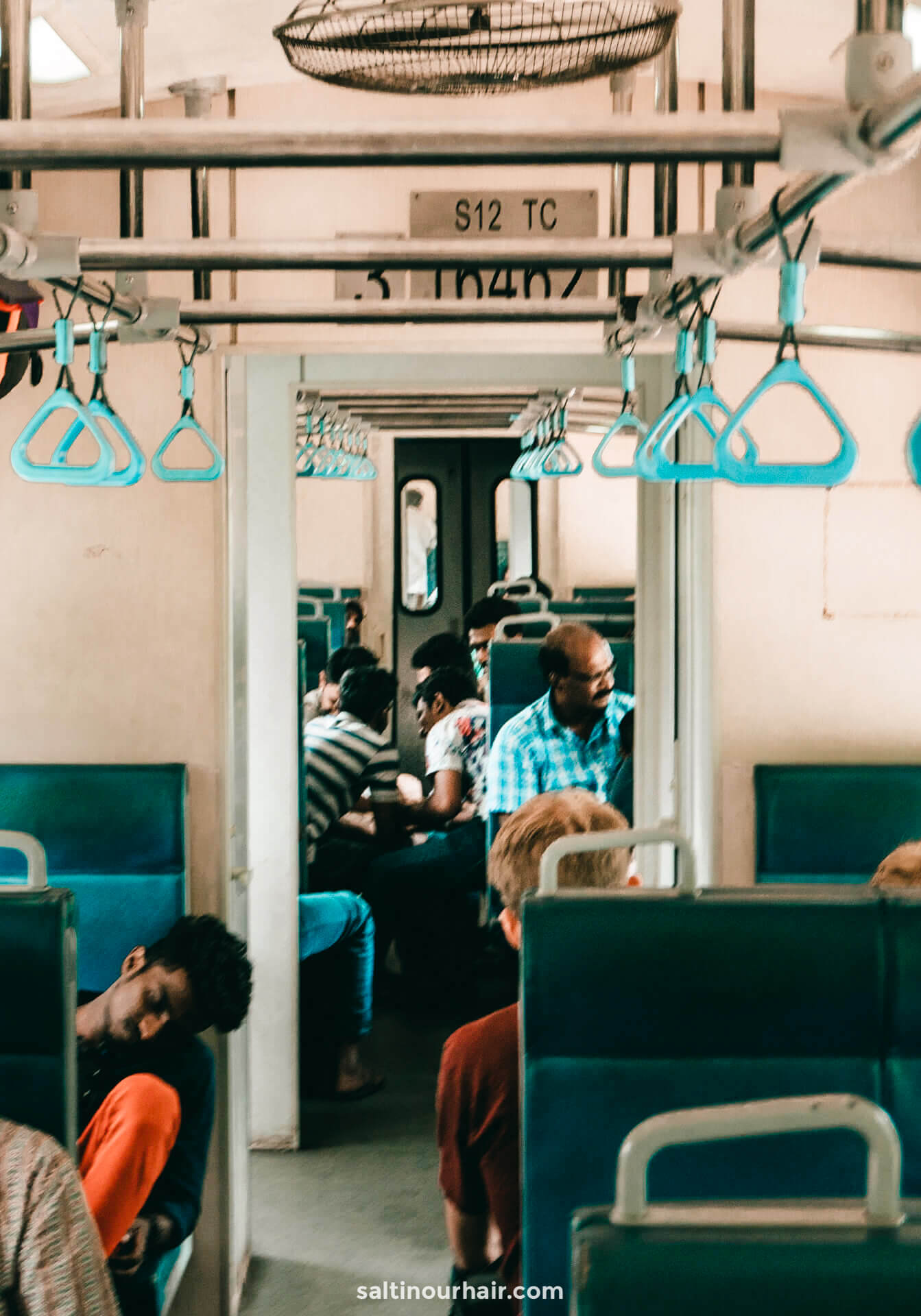
Day 6 – 7: Nuwara Eliya
The train from Kandy goes all the way to Ella , making a few stops on the way. Get off a little earlier and spend a night in the natural beauty of Nuwara Eliya, an area famous for tea plantations.
Here are all your hotel options in Nuwara Eliya.
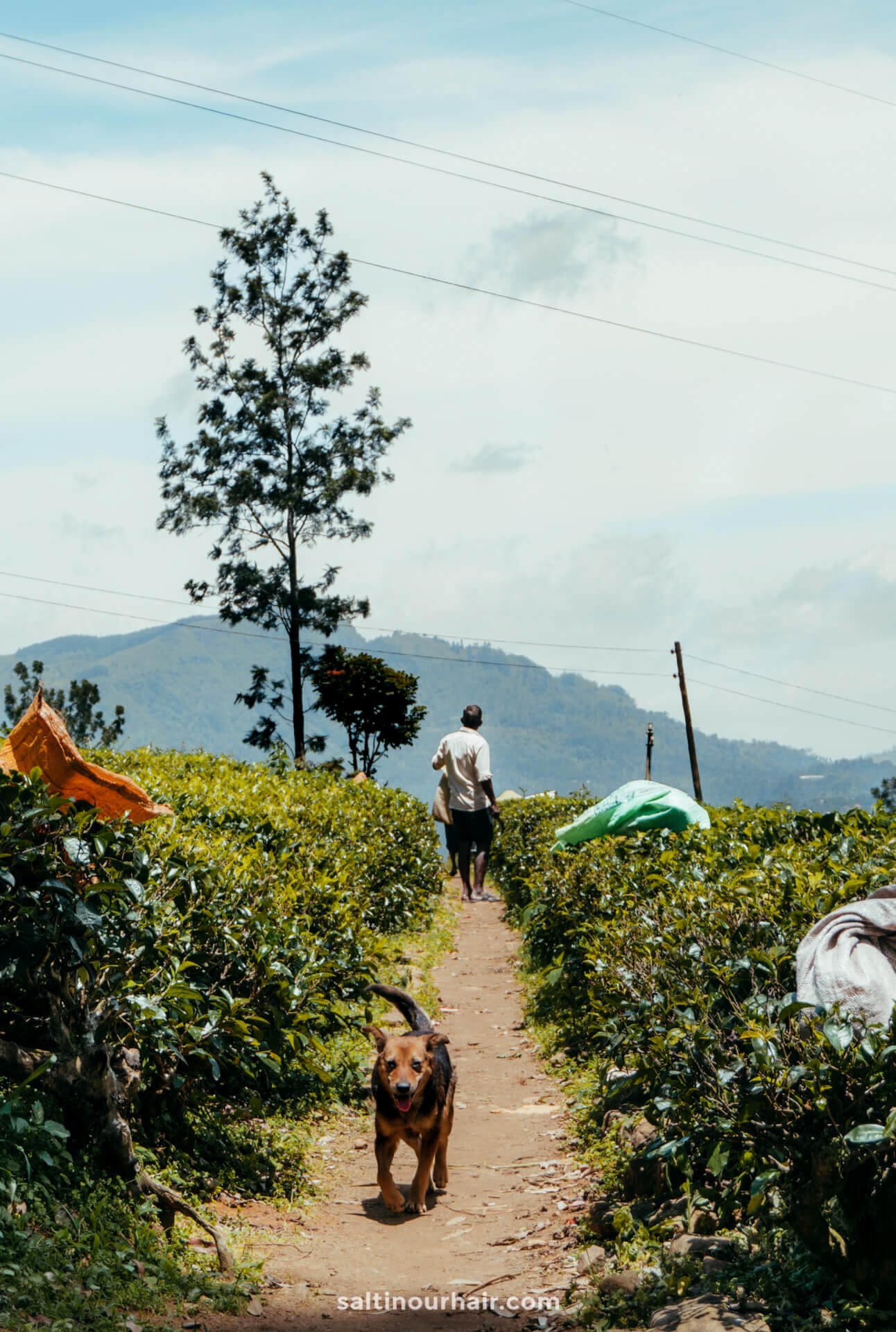
It’s especially well known as being home to the Lipton plantation, one of the world’s most famous tea growers and exporters! In fact, the history of colonization here by the English has even affected the architecture, with lots of English-style bungalows dotted through the fields, giving Nuwara Eliya the nickname ‘Little England’.
Read: Nuwara Eliya, Sri Lanka
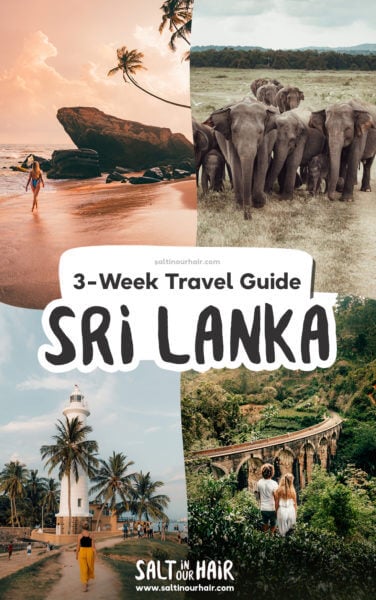
Day 8 – 10: Ella
Visit one of the most blissful and natural places in Sri Lanka : Ella. The small town has a laid-back hippy vibe, complemented by the great mountains and hills that tower over the town. Stay in a hilltop guesthouse with incredible views, and use it as a base to climb to Adams Peak, Ella Rock, or the mesmerizing Nine Arch Bridge . When you’re done hiking, head for one of the many picturesque waterfall pools for a refreshing dip.
Ella is one of the most beautiful places in the country and an absolute must-do in Sri Lanka !
Read: Best Things To Do in Ella, Sri Lanka
Where to Stay in Ella
Ella is full of fantastic accommodation options, from budget guesthouses to luxury resorts with swimming pools and beautiful views.
Hotels in Ella 😴
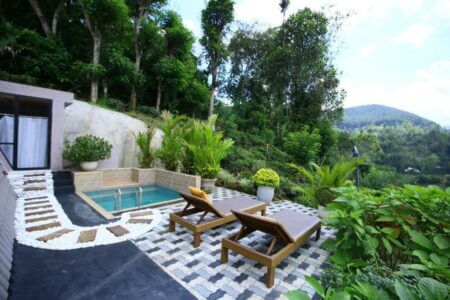
It can be fun to stay in the hillside guesthouses outside of town, where you’ll have great views and easy access to hiking trails.
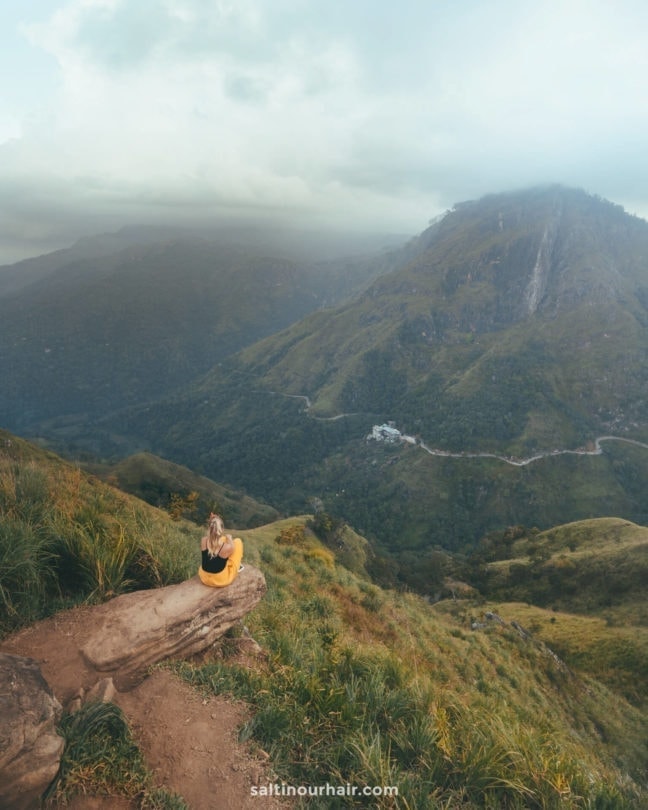
Day 11 – 13: Arugam Bay
Ready to catch some waves? Arugam Bay is the most famous surfing spot in Sri Lanka . It’s so popular that many surfers make this their home between April and October when the days are sunny and warm, and the waves are great. It’s easy to see why people spend so much time here, with the relaxed way of life, living in a wooden beach hut, surfing, and sunbathing by day, and enjoying all the fantastic bars and restaurants by night. This is where you’ll truly find hammock-swinging and coconut-sipping vibes!
Read: Things To Do in Arugam Bay
Where to Stay in Arugam Bay
Arugam Bay is all about the beach! As such, most of the accommodations are located along the coastline. Choose from charming beach huts, mid-range guesthouses, or upscale beach resorts.
Hotels in Arugam Bay 😴
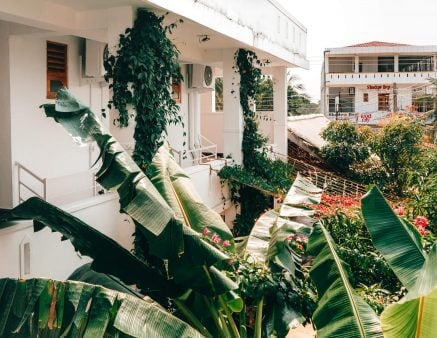
Day 14: Go on Safari in Sri Lanka
From Arugam Bay, it’s super easy to take a day trip to Yala National Park for a safari amongst nature. You might even be lucky enough to spot the elusive leopard!
See availability for a safari tour to Yala
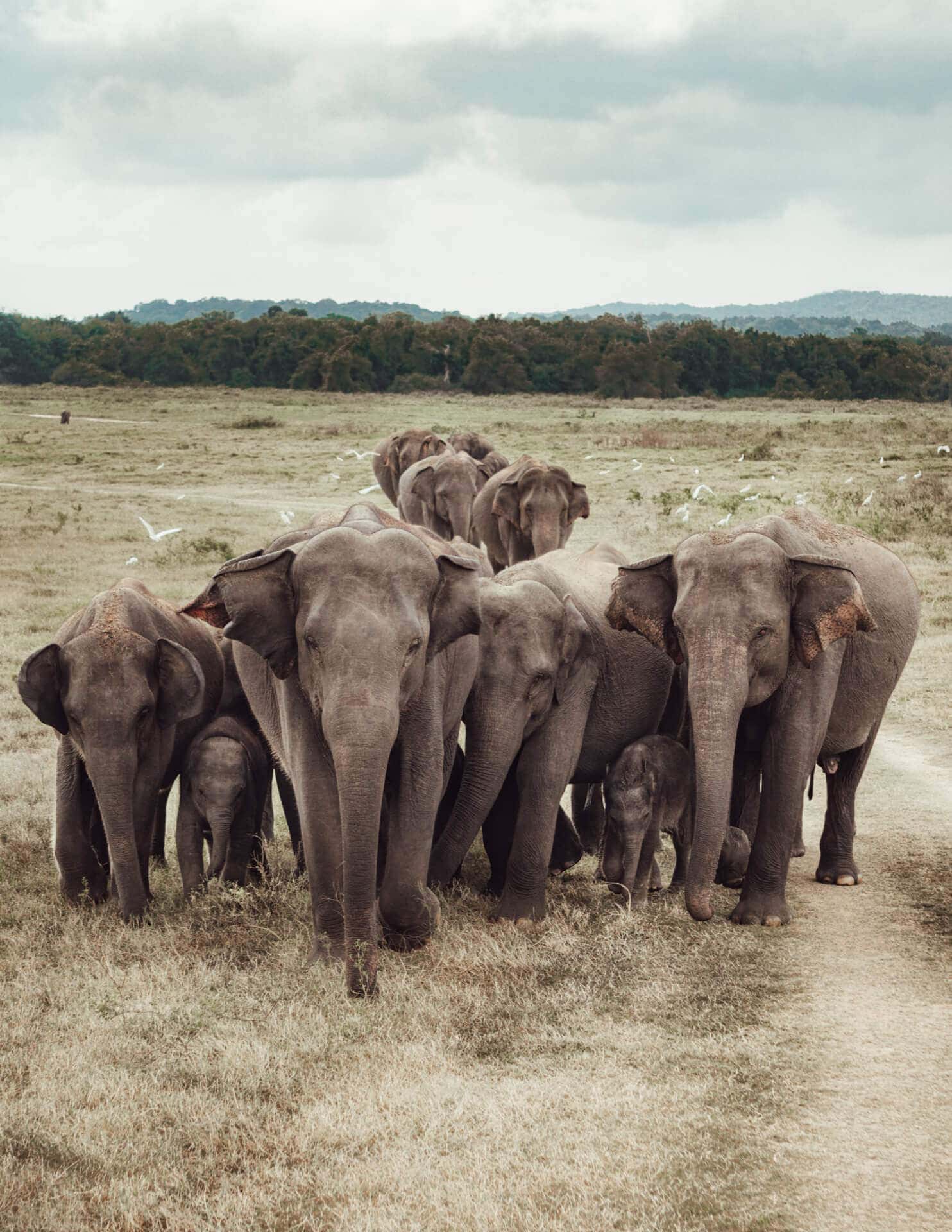
Join a tour, jump in a jeep, and get ready for the adventure of a lifetime. As you cross over bumpy dirt roads, around lakes, and through bushland, you’ll see vast groups of wild elephants and other animals. There are plenty of national parks to choose from in Sri Lanka , some of the most popular being Udawalawe National Park or Yala National Park .
Read : Best national parks in Sri Lanka
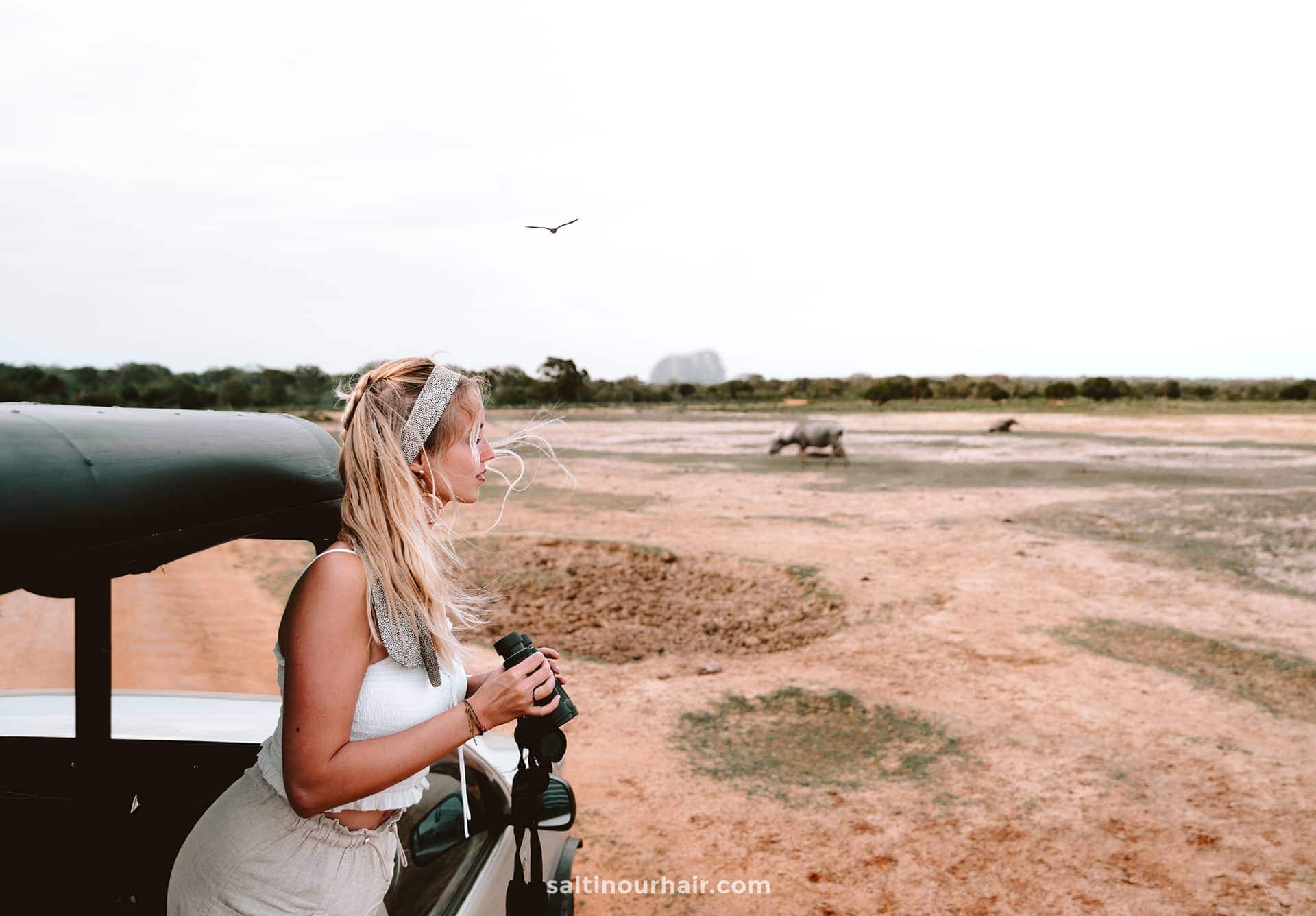
Day 15 – 16: Mirissa
Head south to the paradise beach town of Mirissa. Take off your shoes and say goodbye to regular life as you slow down and feel the sand between your toes and the waves against your feet. Mirissa isn’t just about the beach, though; there are beautiful coconut tree forests to explore, fascinating tidal islands, and endless great restaurants.
Read: Best Things to do in Mirissa, Sri Lanka
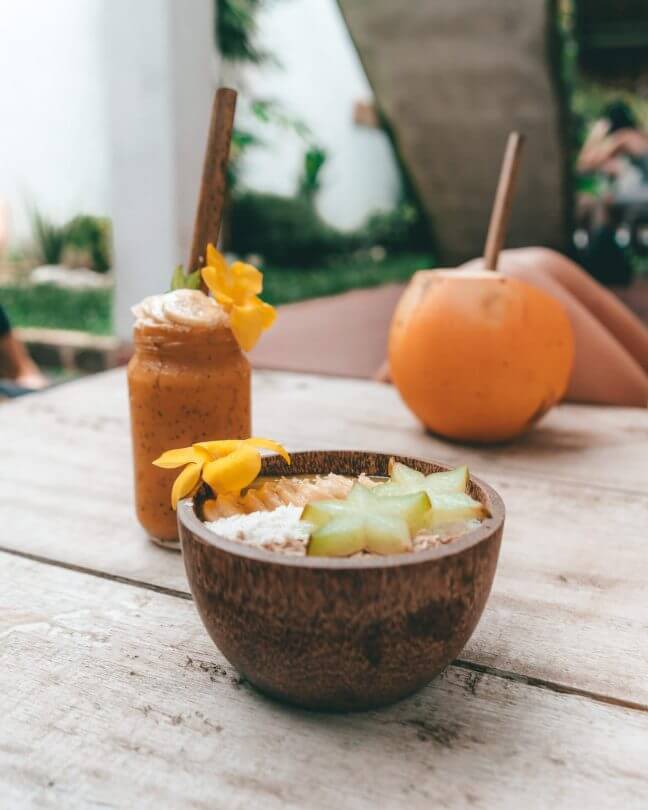
Mirissa is also one of the best places in Sri Lanka to see Whales, which migrate here between November and March. You’ll find the most spectacular sunsets in this part of the country, a winning combination with a sunset whale-watching trip.
Tip: Are you someone always looking for a secret beach? Find your perfect beach on the list of 10 x Best Beaches in Sri Lanka .
Where to Stay in Mirissa
Mirissa is relatively small, so most guesthouses and hotels will be within walking distance of the beach.
Hotels in Mirissa 😴
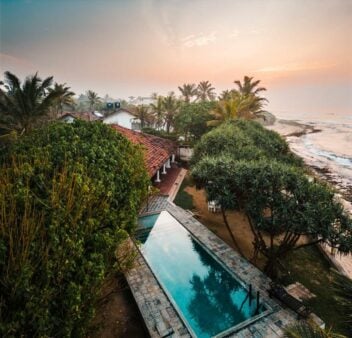
As with most areas in Sri Lanka , prices are low for accommodation, and you can find beautiful beachside hotels, with views of the ocean, for a lot less than you might expect!
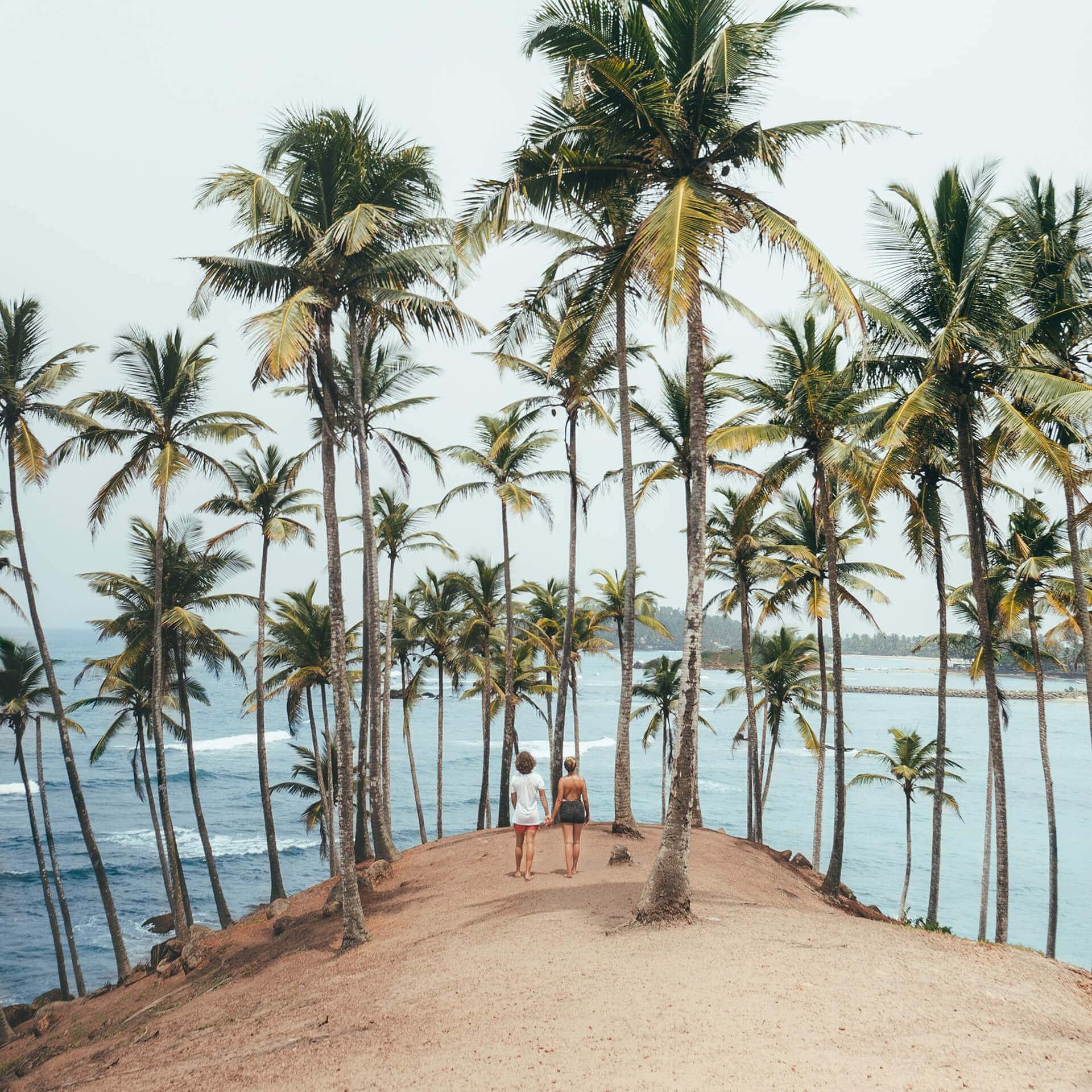
Day 17 – 19: Unawatuna
The Unawatuna area has the most famous beaches in Sri Lanka , known for the white sand, great surfing, lively beach bars, and Instagram-famous palm-tree swings. The town is small, but it has excellent shopping, guesthouses, and trendy restaurants.
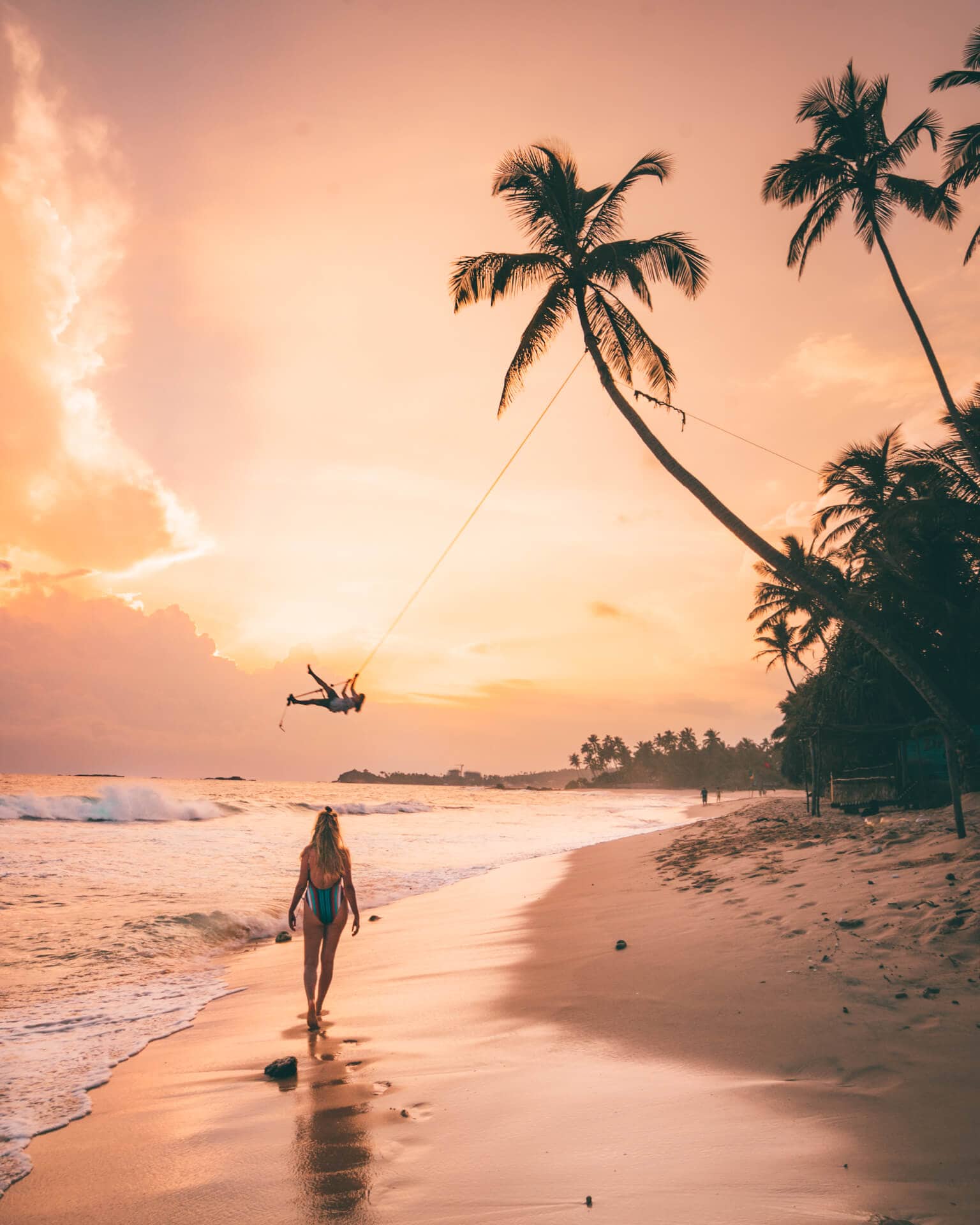
It’s also a great jumping-off point to local sights nearby, like Galle Fort , Koggala Lake, or even the bright lights of Colombo! You could quickly lose track of time in this beautiful little beach town, and it’s the perfect place to relax and unwind at the end of your Sri Lanka route.
Read: Awesome Things To Do in Unawatuna
Where to Stay in Unawatuna
Unawatuna is fast becoming one of the most popular destinations in the country. Because of this, expect to pay slightly higher prices for hotels and guesthouses.
Hotels in Sri Lanka 😴
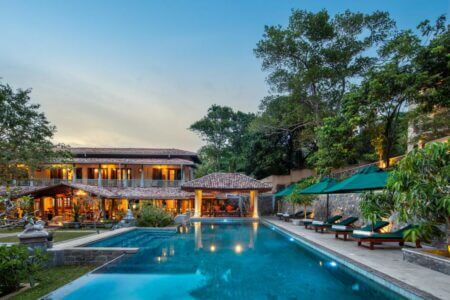
Tip: Hotel Tri is a beautiful hideaway near Unawatuna around Kogalla Lake. The sunrise and sunsets here are one of a kind overlooking the lake and cinnamon plantations.
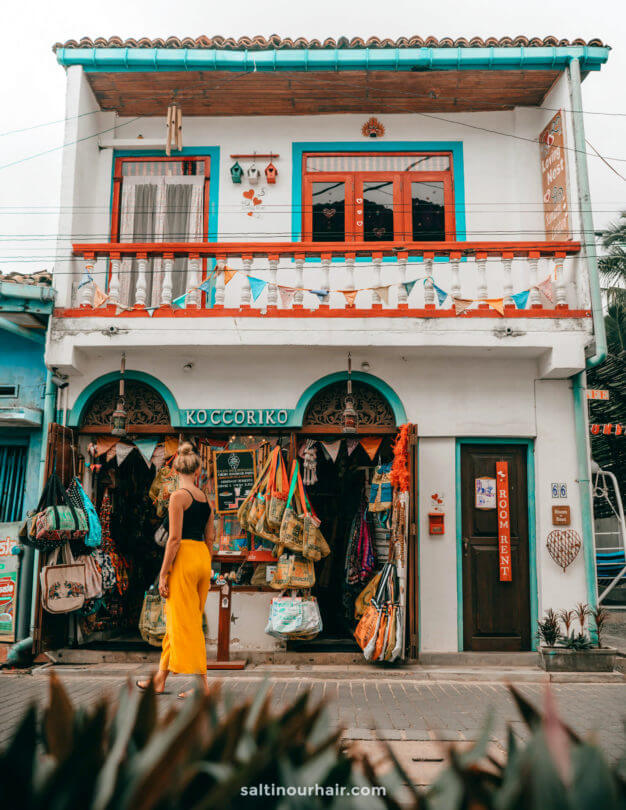
Day 20+21: Back to Colombo
Finish your trip and stay close to the airport in Colombo.
Here are all your hotel options in Negombo.
If you have a little extra time before your flight, visit Barefoot Handicraft and its fantastic restaurant or tick off some of the sights you may have missed at the beginning of your trip.
Optional Places
Sri Lanka is an absolute heart-stealer, and the likelihood is that you may want to stay for longer than three weeks. If you’re extending your route, there are many more amazing places to visit, especially in the northern part of Sri Lanka (where you’ll find some real hidden gems!). Some of the most popular places to visit on a Sri Lanka route are:
- Trincomalee
- Polonnaruwa
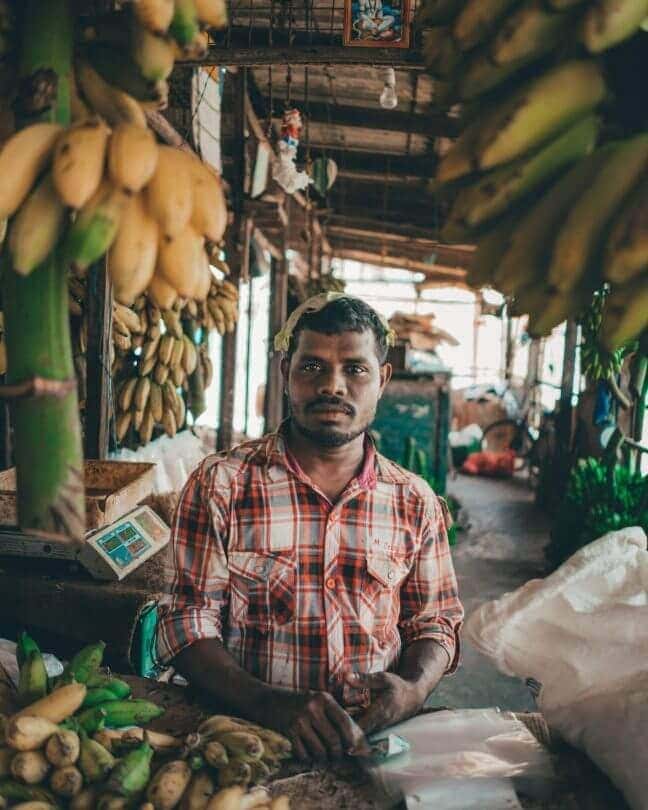
How to Visit Sri Lanka
International flights arrive at Colombo airport (actually closer to Negombo than Colombo).
From here, it’s straightforward to take public transport to your next destination or arrange for a driver to collect you.
Getting Around in Sri Lanka
Hiring a driver in Sri Lanka is a very popular choice as it’s so reasonably priced. To do so will usually cost about $50 per day, which allows you a lot more flexibility with your itinerary. It also helps you get to the more remote places, which otherwise might be quite tricky.
We recommend to rent a car in Sri Lanka through Sunny Cars with free cancellation and insurance included. Book your rental car here .
Contact our friend Indi on Whatsapp (+94777644144) . Make sure to tell him you came via ‘Salt in our Hair’ so you’ll get the best price possible.
Buses are a very cheap option; it’s just a few dollars for a full day of traveling by bus! Be aware that buses are usually packed full of people, and you will have to stand. Don’t expect air conditioning, but you’ll have the perks of enjoying local TV with Sri Lankan music videos!
Purchase any transport tickets online here
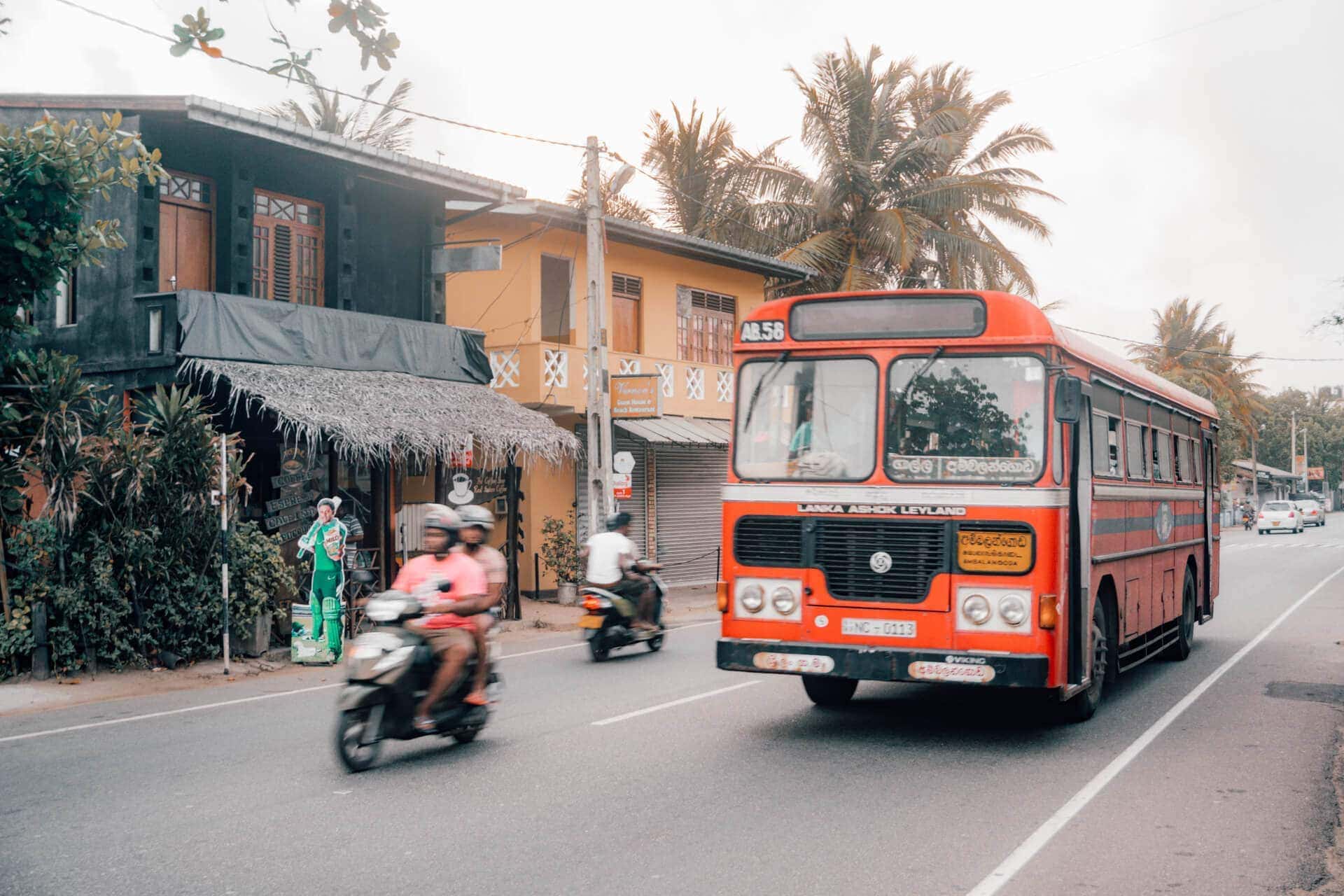
Taking the train is a must-do in Sri Lanka . The country is home to some of the most beautiful train rides globally and has become renowned worldwide for the experience of hanging out the train door as tea plantations and rolling hills fly by.
The price for a second-class cabin varies from $1.50 to $4. Sometimes they run out of seats, meaning you have to stand or sit on the floor. But do as the locals do and enjoy this beautiful experience!
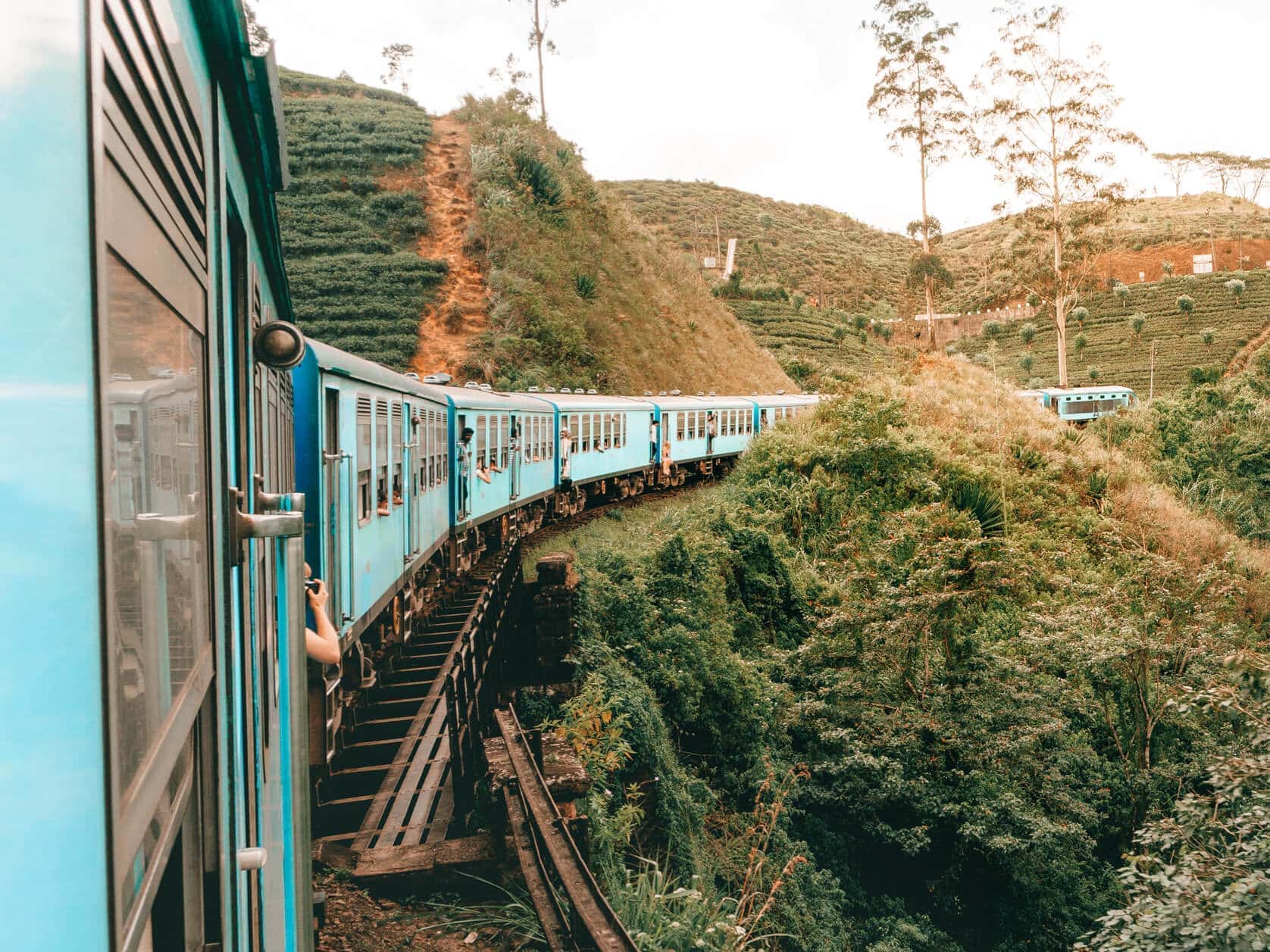
Best Time to Visit Sri Lanka
Sri Lanka is a year-round destination. There isn’t a perfect period to visit because each side of the island has its own “best time to visit.” which means the sun will always be shining somewhere! ☀️
The dry seasons by month and destination are:
- North – May to September
- Center – January to April
- South – December – March
If you choose to visit these areas in the rainy season, you can still have a really enjoyable time. Prices will be lower, there will be fewer people, and nature will be particularly luscious. However, be aware that the rains can bring rough waves to the coast, causing the beaches to get pretty dirty and unusable at this time.
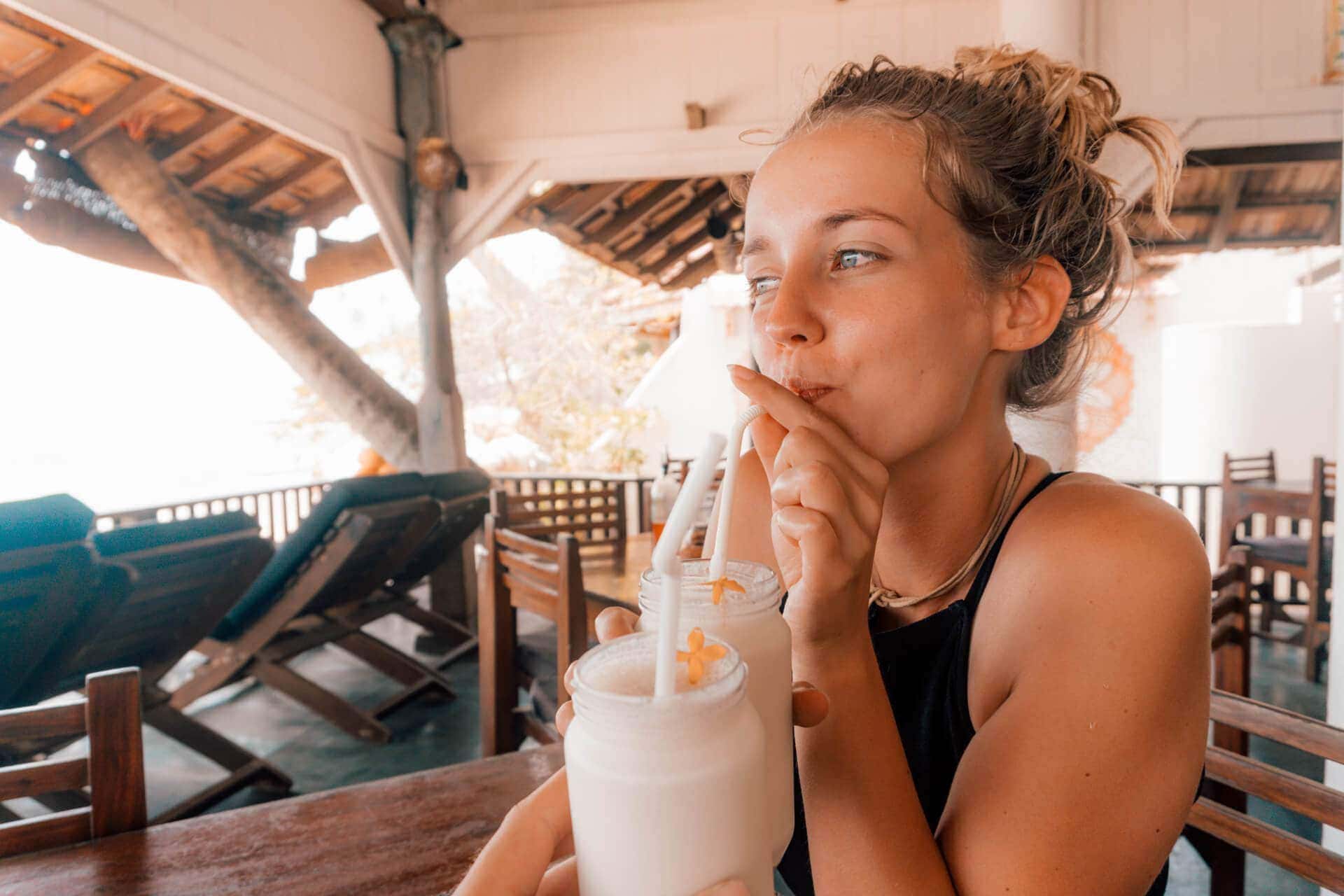
Sri Lanka Visa
You need a Sri Lanka visa to be allowed into the country. Luckily, arranging a visa isn’t difficult at all. All you need to do is make sure your passport is valid for at least six months. You can select several options for your visa for Sri Lanka , depending on how long you are planning to stay and for what reason you are visiting the country.
Online Visa, Sri Lanka
The first option is to apply for your Sri Lanka visa online . It’s wise to apply at least a few days before your arrival. Usually, the applications are approved within a few hours, and you will receive your ETA (Electronic Travel Authorisation). The 30-day tourist visa will cost you $35.
Order online: Get your visa easily here!
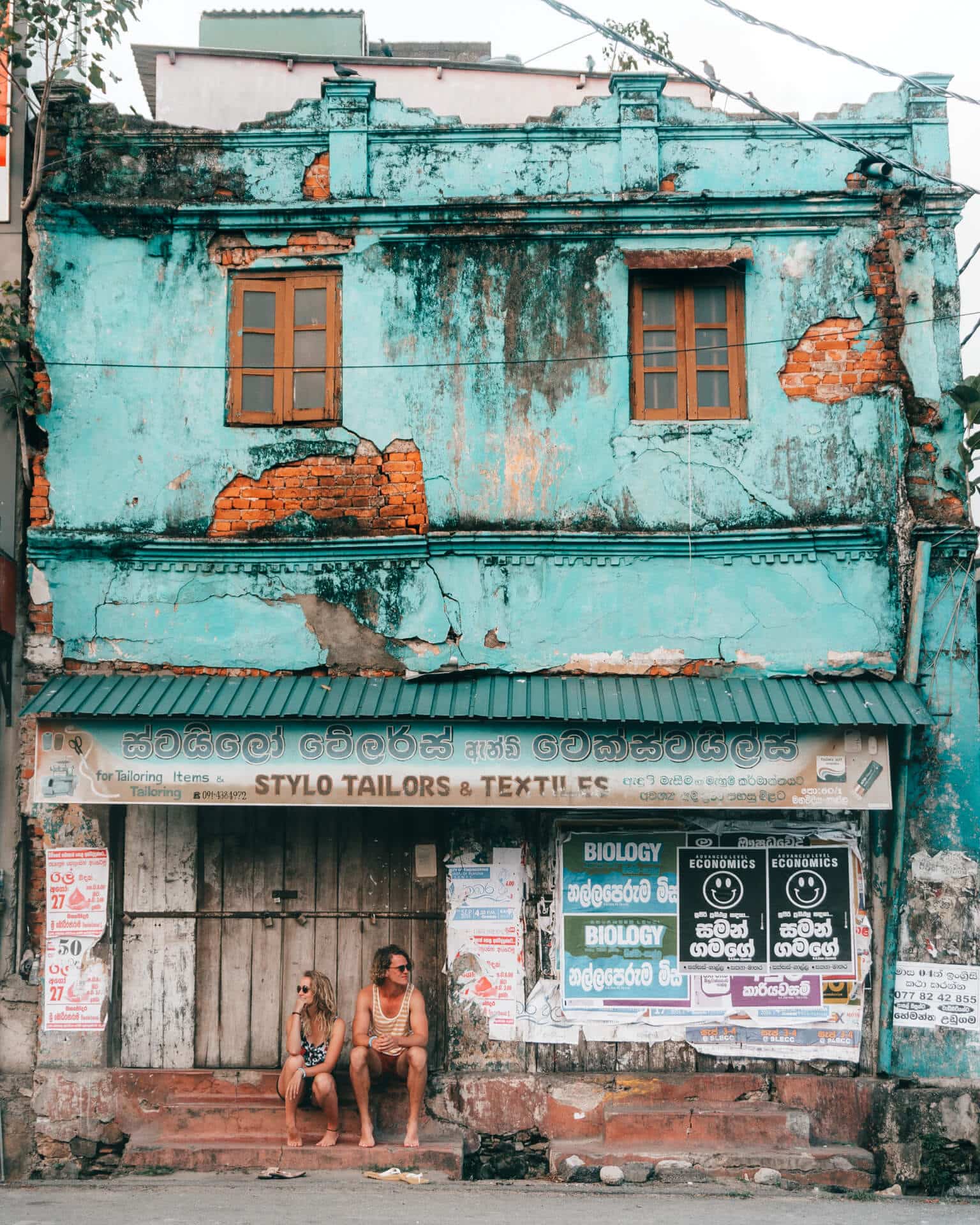
Visa on Arrival
Even if you have not applied for ETA can get a Visa on Arrival on arrival for Sri Lanka . There is a counter at the airport in Colombo where you can go. However, you will pay $5 extra, and there are generally long queues. For this reason, we recommend applying for your visa online ahead of time.
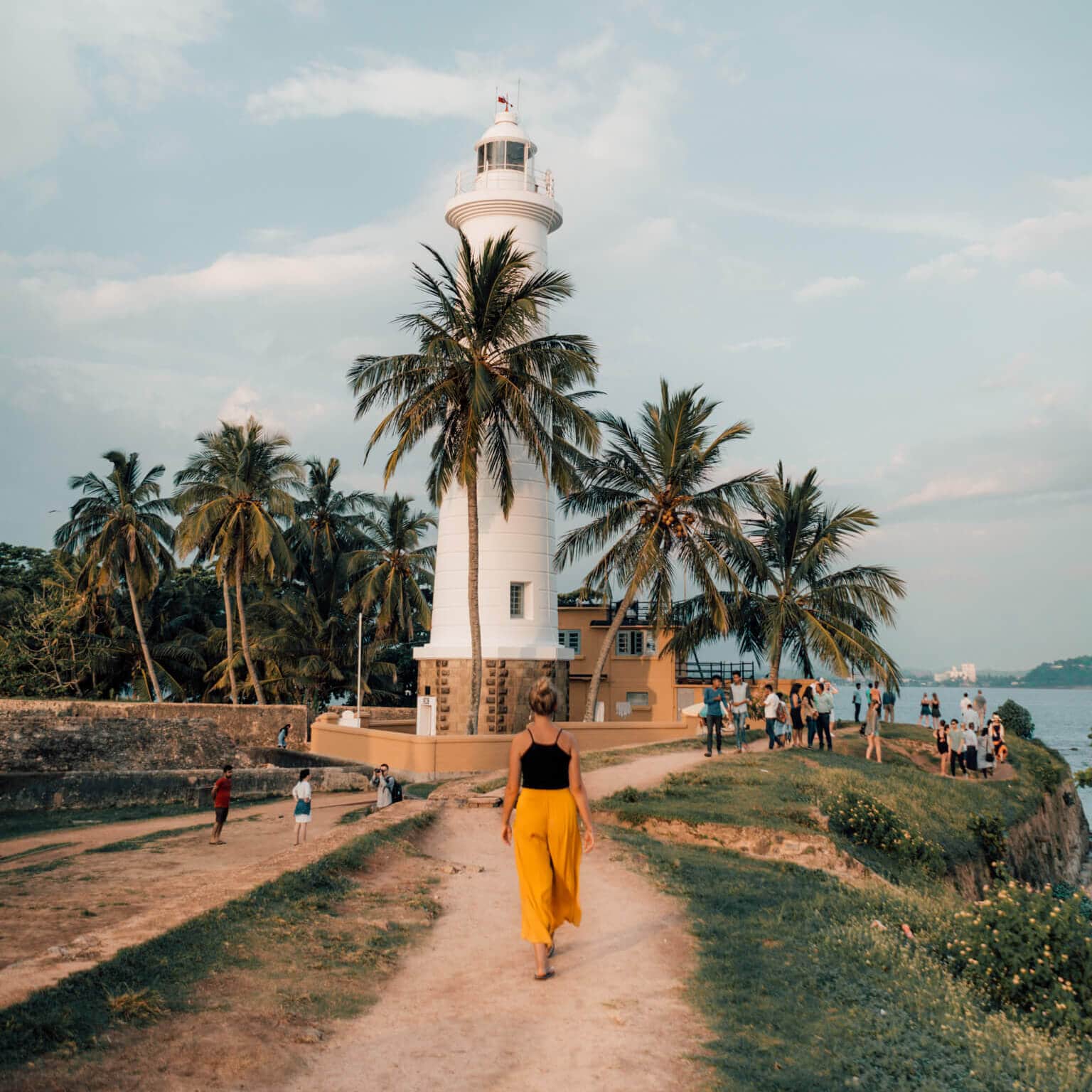
How Much Does Sri Lanka Cost?
In Sri Lanka , payment is made in the Sri Lankan Rupee (not the same as the Indian Rupee). Currently, $1 is equal to 2 Sri Lanka Rupees. Generally, Sri Lanka is a cheap place to travel in, especially in the more remote locations like the North or the center.
A variety of accommodations is on offer, from budget guesthouses to the more luxurious beachside hotels. Plus, wherever you go, you can always find cheap and delicious food, either sold on the street or in small restaurants (a bowl of local rice and curry typically costs about $1-3 USD!).
Costs of Traveling in Sri Lanka
Travel on a budget in Sri Lanka, from $190 − $410 USD weekly per person, mid-range $530 − $960 USD, and high-end from $920 − $1250 USD. However, costs depend on factors like accommodation, transportation, and activities. We did not include flights. Check flight prices here
- Hotels: $10 − $30 USD Check available hotels
- Hostels: $10 − $20 USD Check available hostels
- Transport: $2 − $50 USD Book public transport
- Car Rental: $50 − $80 USD Book a rental car
- Food: $10 − $30 USD
- Activities: $2 − $30 USD See tickets & tours
- Sim: $1 − $3 USD Get an eSIM or SIM here
- Travel Insurance: $2 − $6 USD Get Travel Insurance
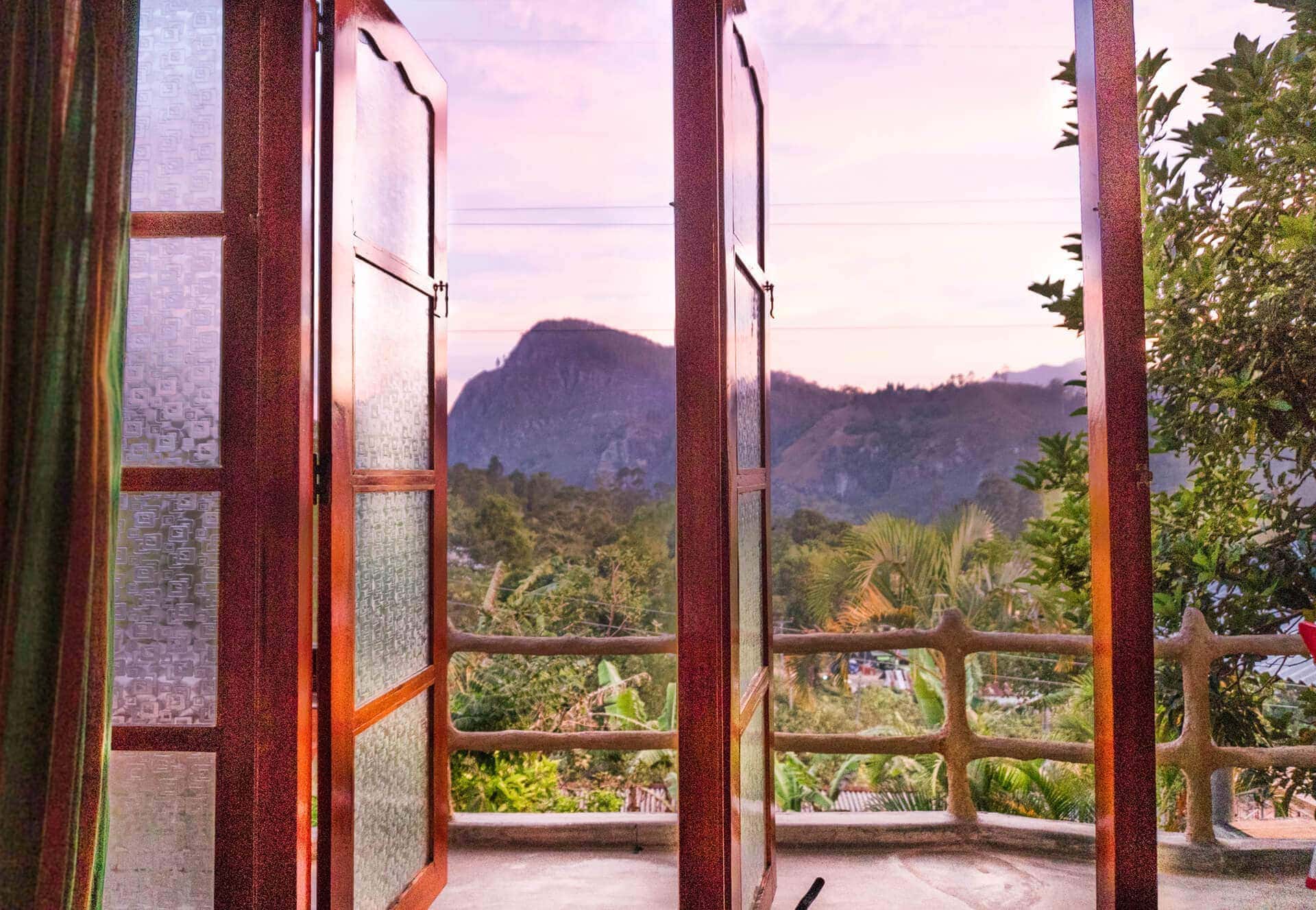
Vaccinations Sri Lanka
Whatever the length of your trip is, it’s recommended to get two vaccines:
- DTP (Diphtheria, Tetanus, and Polio)
- Hepatitis A
Staying away for several months? Then you probably should get vaccinations against Hepatitis B and rabies. There is no Malaria risk in Sri Lanka.
Travel Insurance Don't forget a travel insurance for your Sri Lanka trip! Heymondo covers medical emergencies, theft, delays, cancellations, lost luggage, and more, with 24/7 worldwide assistance and medical chat. As a Salt in our Hair reader, we've got you 5% off! Check Heymondo here
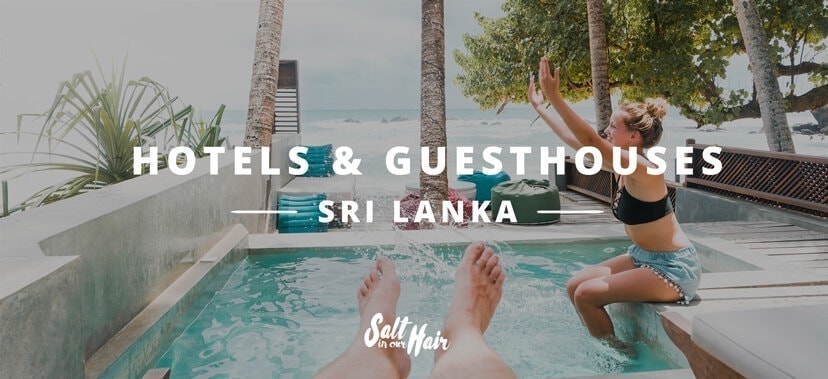
By purchasing through our links, you support us at no additional cost. Thank you for your support. ♥️
- Find Hotels via Booking.com
- Find a Rental Car via Sunny Cars
- Find Flights to Sri Lanka via Skyscanner
- Get a Travel Insurance via Heymondo
- Book Tours & Attractions via GetYourGuide
- Book a Bus/Train/Transfer via 12Go
9 Great Things To Do in Kandy, Sri Lanka
6 best things to do in dambulla, 7 great things to do in trincomalee.
Looking for more travel information? Plan a chat with us for personalised travel advice or get an answer from the Salt in our Hair Travel Community on Facebook.
Wow, what a fantastic resource for planning my upcoming trip to Sri Lanka! Your detailed route guide is exactly what I needed to map out my itinerary and make the most of my time on this beautiful island.
Your email address will not be published. Required fields are marked *
Notify me when new comments are added.

15 Best Places to Visit in Sri Lanka
Written by Freddy Sherman Updated May 3, 2023
Writer Freddy Sherman visited Sri Lanka and spent time exploring Colombo, the Hambantota area, and Udawalawe National Park.
Sri Lanka is an amazing travel destination offering a wide range of places to visit and things to do. This island, located in the Indian Ocean off the coast of India, presents visitors with an incredible array of environments and tourist attractions to enjoy and experience.
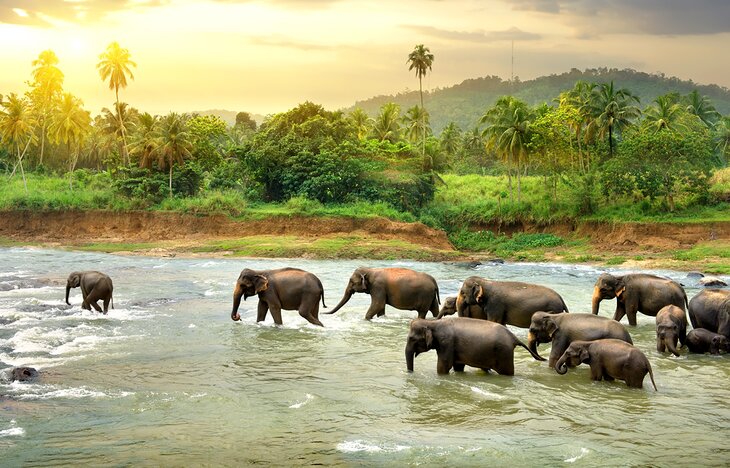
This relatively compact island boasts eight UNESCO World Heritage Sites where that history is preserved. The best places travelers can trace the island's fascinating history, from ancient times through the colonial period to the present, are in cities like Colombo and Kandy .
Incredible outdoor landscapes and safari experiences can be found in the country's large elephant- and leopard-filled national parks, like Yala, Minneriya, and Udawalawe. Sri Lanka is also a beach-lover's paradise , ringed by some of the world's most beautiful beaches, and home to a number of luxury beach resorts.
The Hambantota area is the best place to visit for a resort vacation experience. This is also one of the best places to visit for families, as many of the resorts are all-inclusive and there is a lot to see and do without having to leave the property.
When planning a Sri Lankan adventure, keep in mind that the country experiences its rainy season from May through August, making December through April usually the best time to visit. The shoulder season, September, October, and November, is a good time to visit as well.
Plan your travel itinerary with our list of the best places to visit in Sri Lanka.
3. Udawalawe National Park
5. hikkaduwa beach, 6. galle face green, 7. yala national park, 8. anuradhapura, 9. pollonnaruwa, 10. tangalle, 11. bundala national park, 13. adam's peak, 14. sigiriya, 15. minneriya national park, map of places to visit in sri lanka.
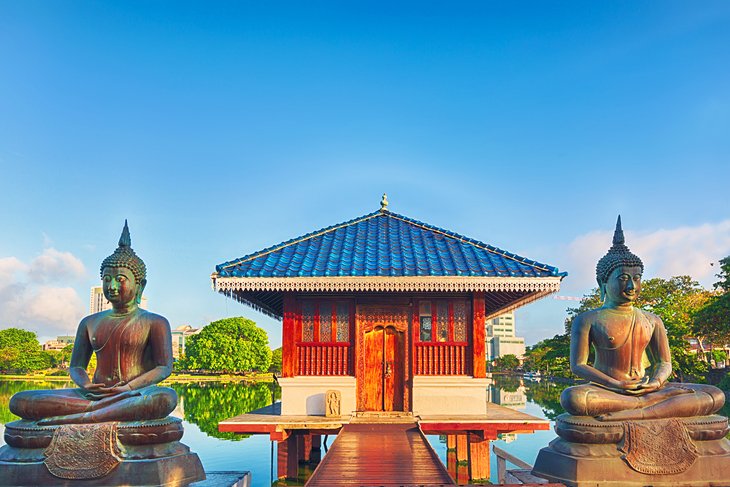
The capital city combines modern urban amenities with the country's colorful indigenous and colonial history. As a key stop on the world spice trade routes, Sri Lanka has long held strategic importance for European trading powers.
The country has been a colony of Portugal, the Netherlands, and most recently the British, and all these cultures blend with the Indigenous culture to form a wonderful hybrid. You can taste these influences in the food, see them in the architecture and the arts, and you can really feel them in Colombo.
Too many visitors simply use Columbo for its international airport (CMB) and immediately head out to the resort areas on the coast. The city is well worth a visit of at least a few days, even if you plan to head to a beach resort.
The city is also filled with museums and other things to do that can help connect you with Sri Lankan culture. Colombo sits on the coast, and there's a large green space and beach area right in the heart of the city separating an area called Fort from the Indian Ocean. It's the city's public playground and a fun place to visit, especially on Friday and Saturday nights.
The city's new mega-tower, the Colombo Lotus Tower , is a great place to visit. The tallest free-standing tower in Southeast Asia, it provides amazing views of the city. Aside from indoor and outdoor observation areas, there's a fancy restaurant at the top and a popular food court in the mall at the tower base.
Read More: Top-Rated Tourist Attractions in Sri Lanka
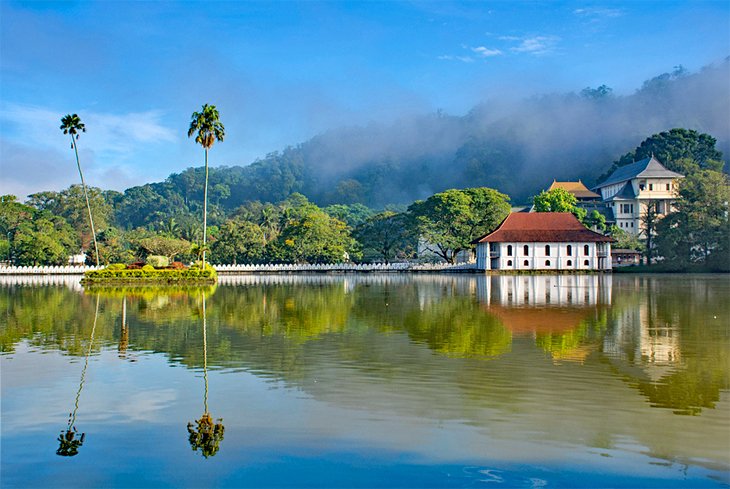
Kandy is where you go to learn about and experience Sri Lankan history. Located in central Sri Lanka, the city is the former capital city of the Sri Lankan royal dynasty, the country's main capital before the colonial period.
The high point of what's called the "Kandian Era" was between the 15 th and 18 th centuries, when the area remained independent while most of the coastal regions were colonized by European powers.
Be sure to visit the city's National Museum of Kandy , as it illustrates the story of the region and its people via exhibits and artifacts. Nearby, the Temple of the Sacred Tooth Relic is a very holy Buddhist shrine, part of the royal palace complex. If you visit in August, there is a huge festival celebrating the temple and relics.
Kandy Lake is at the heart of the city and offers a peaceful refuge from the heat. There are hiking paths that circle the lake, dotted with temples and shrines. Venture out to the nearby suburb of Peradeniya and its amazing Royal Botanical Gardens.
Kandy is surrounded by mountains, which are home to many tea plantations. Some can be visited and offer tours and tea tastings. It's also surrounded by rainforests. The Udawatta Kele Sanctuary is a forest park located within the city limits. The forest reserve has miles of hiking trails, as well as an excellent nature center with educational information.
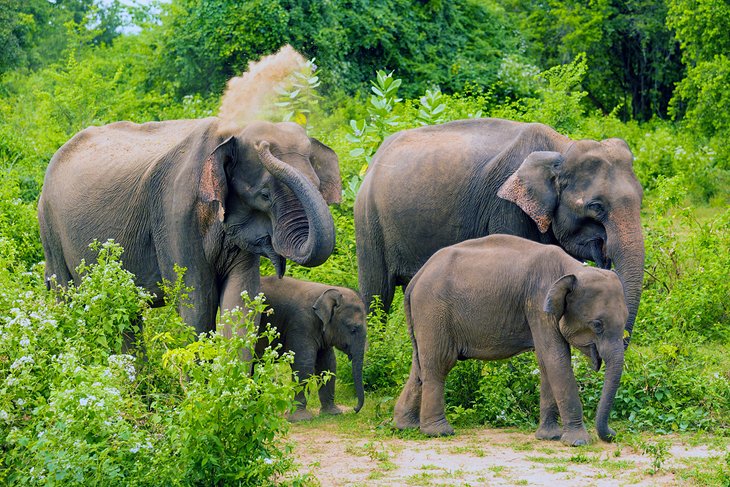
This large wildlife park is in the southern part of the country, about an hour's drive from the resort area of Hambantota. The terrain and environment vary, as the park is on the border of the country's wet and dry zones.
Visitors to the park can see elephants, as there's a large population of them, along with crocodiles, water buffalo, and more. In fact, it's one of the best places in the world to see elephants in the wild outside of Africa .
There are leopards there, too, but they can be very hard to track or spot. There are also monkeys and a large assortment of deer and small mammals. It's also an excellent place for bird-watching.
There are some small accommodations and guesthouses across from and even inside Udawalawe. You can also visit as a day trip, the best times to visit are very early in the morning or very late in the afternoon.
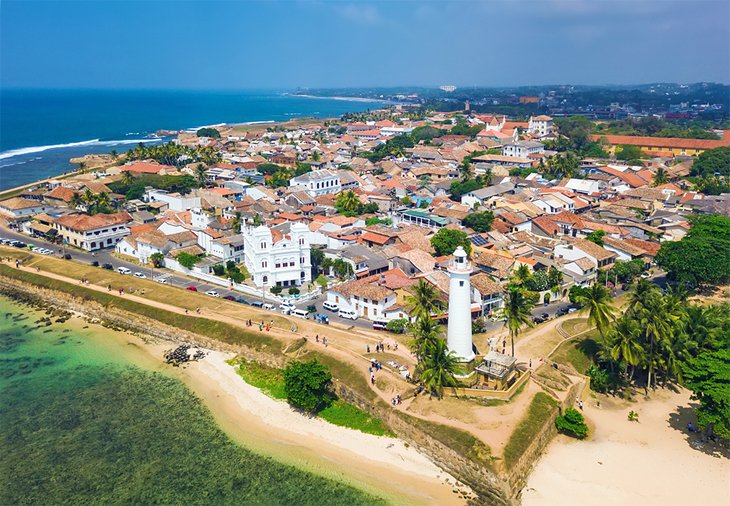
The city of Galle is about a two-hour drive from Colombo via one of the country's first modern superhighways. This ancient trading port reflects its colonial history and is focused around a large, 17 th -century seafront fort.
Galle Fort is an entire preserved walled town, now filled with boutique hotels, shops, and restaurants (along with real residents). The entire area is a UNESCO World Heritage Site.
This is a great place to explore on foot – the entire Fort area is car-free. It's hard to get lost, as you're surrounded on three sides by the sea. It's one of the best places to visit in Sri Lanka for families, as the area is compact and filled with tourist-centric businesses.
Aside from and outside the fort, the city is surrounded by some amazing beaches . Like others in the country, the wide sand beach leads into clear, turquoise water. There's even a beach right beneath the iconic Galle lighthouse.
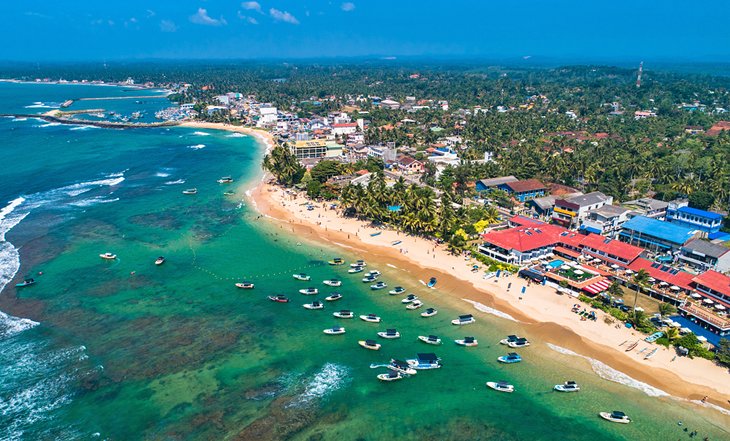
Only 90 minutes from Colombo, this beach is all about water sports, surfing, bodyboarding, snorkeling, and scuba diving. All the gear is easily available for rent from one of the beachfront stands. It's one of the country's most popular surfing areas , with the best waves between November and March.
The beach is large, so it never feels too crowded. There are a lot of beachfront stands selling all kinds of delicious local street food and a good number of small hotels and guesthouses if you want to stay overnight. It's also becoming home to more beach resorts, catering to foreign visitors with appropriate levels of luxury and amenities.
It's also known for its coral. The Hikkaduwa Coral Sanctuary is a preserved marine area and part of Hikkaduwa National Park , located just off the shoreline. It was created to protect the area's coral reefs and educate visitors about coral. It can be explored on a guided boat tour or even by snorkeling.
- Read More: Top-Rated Beaches in Sri Lanka
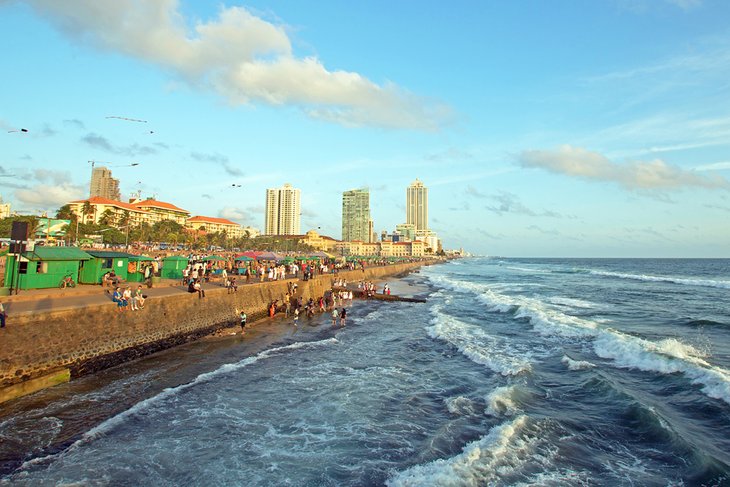
Sri Lanka's version of LA's Venice Beach and NYC's Central Park isn't the place to get away from it all, but it is the place to relax, people watch, and have some fun with other Sri Lankans, whether it's day or night.
Aside from the beach, there's a large grass area where people picnic and play games. For the best energy, visit on a Friday or Saturday night. Come hungry, as every night there is a market with incredible street food to enjoy.
You can enjoy the beach and water or maybe fly a kite in the ever-present wind. You can play some football (soccer) or cricket as there are always pick-up games going on. The beach is fronted by vendors and restaurants, and the area beyond it is filled with hotels ranging in price from budget to luxury.
Be sure to visit the historic Galle Face Hotel, a beachfront colonial remnant that first opened in 1864. Galle Face Green is in the heart of downtown Colombo, just in front of Fort. You have the skyline behind you and the sea in front of you. It's the area between Galle Road and the Indian Ocean.
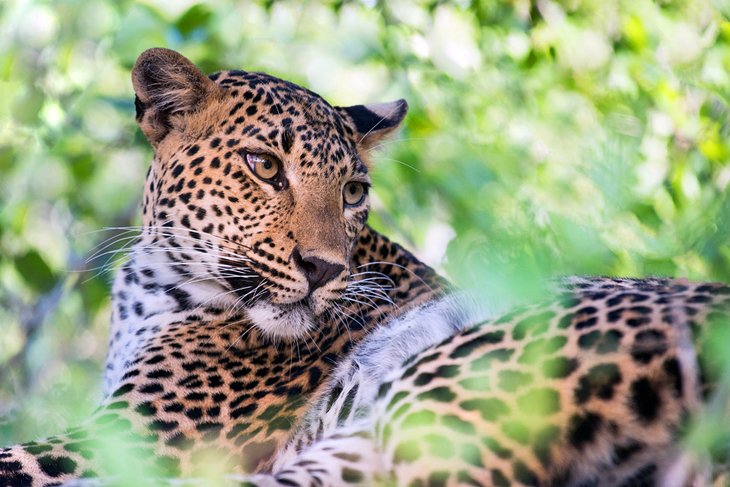
Located on the island's southeast coast, this national park is known for leopard safaris . Leopards are very rare, but the park has a large population and it's possible to spot them even on a day trip. The park is also home to a large population of Asian elephants, which are endemic to Sri Lanka.
Aside from the fauna, the park is home to some incredible, varied environments and ecosystems. You can visit the marine and beach environment of the coastal areas, follow leopards across vast grasslands, or explore tropical rainforests.
There are also some important Buddhist temples and shrines within Yala, which is not far from the resort area of Hambantota.
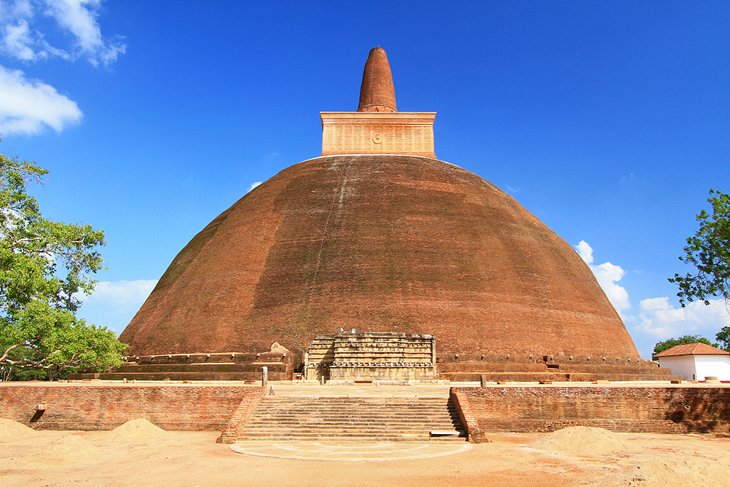
A visit to Anuradhapura, one of the country's ancient capitals and a UNESCO World Heritage Site, rewards visitors with a glimpse into the past. The area is unique, as there's a thriving, modern town adjacent to an ancient one — you're not just visiting ruins. The current population makes it one of the oldest continuously inhabited places on earth (starting in the 4th century BCE).
The ruins are awesome, with many crumbling temples, statues, pools, and other structures. There are modern structures, too, and the temple remains an active place of worship. The core of the complex is a very old tree. The Sri Maha Bodhi is believed to be the world's oldest living tree planted by a human.
Anuradhapura is a fun place to visit, as there are a lot of small guesthouses and cheap places to eat, along with bike rental, tour guides, and other businesses catering to tourists.
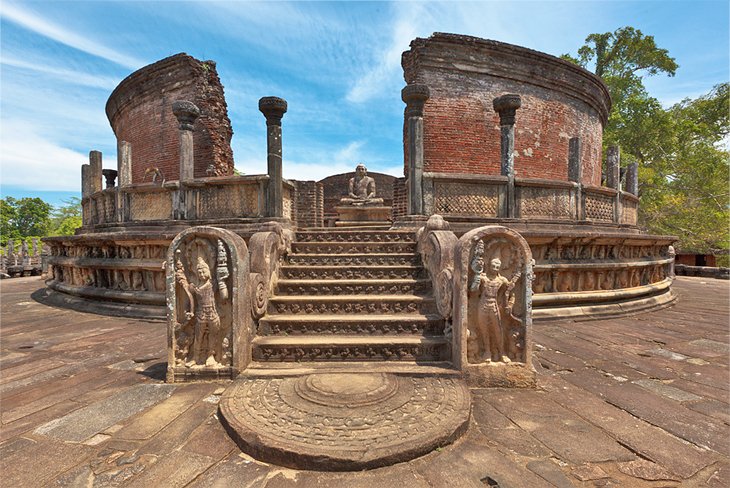
This is an important ancient city ruin site, another one of the country's World Heritage Sites . Pollonnaruwa was Sri Lanka's second capital city, after Anuradhapura, thriving about a thousand years ago.
The garden-city is completely preserved, although most of the structures are in ruins. There are gardens, palaces, and temples, and while it's rather compact, it's best explored by bicycle. A bonus, the ruins are inhabited by a large troop of macaque monkeys, also residents of the area since ancient times. Duran Duran fans will recognize the site, as their Save a Prayer video was filmed here in the 1980s.
There's a small, modern town a few miles from the ruins, with guesthouses, bike rentals, cafés, and other tourist services. The town is close to Minneriya National Park, a great place to elephant-watch.
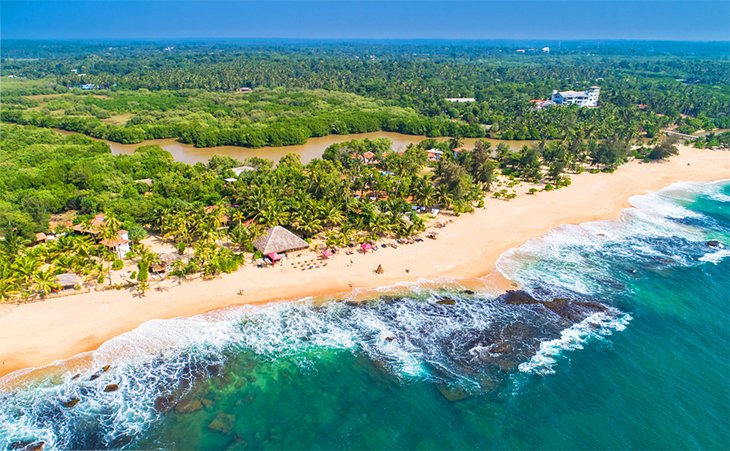
As an island, Sri Lanka is surrounded by beaches, and there really is something for everyone. For a diverse range of beach experiences, head to the Tangalle area. It's in the center of the southern coast of the island and is a popular resort destination.
You''ll find a wide range of beaches, from tropical coves to wide, windswept, seemingly endless stretches of open sand. You can also find beaches with services, vendors, and beachfront stands, as well as remote beaches where you're almost certain to find yourself alone.
At Rekawa Beach , just east of the town, there's a big sea turtle nesting area and conservation center.
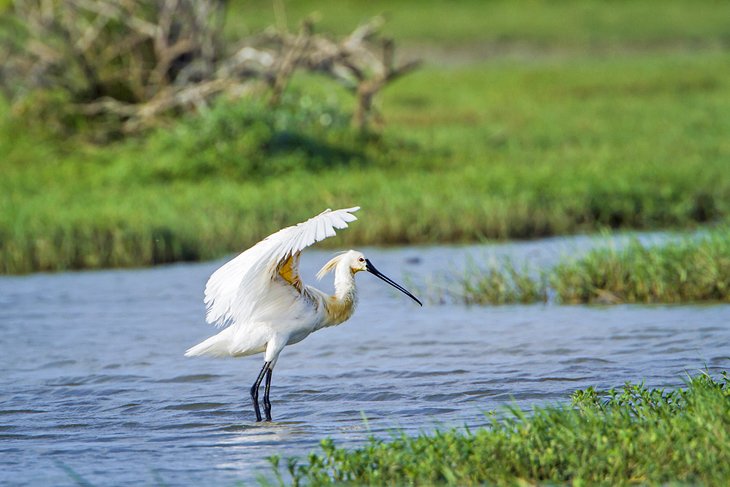
This national park and wetland sanctuary, with its dunes, lagoons, and large freshwater bodies of water, is one of the world's best places to visit for bird-watching . There are many species of birds here; some are endemic to Sri Lanka. Many of the birds migrate here seasonally from as far away as Siberia.
Aside from the birds there are many crocodiles, which like to eat the birds, as well as a large population of elephants. The beaches are a popular place for four of Sri Lanka's five species of sea turtles to lay their eggs.
The Bundala park area is along the southern Sri Lankan coastline between Kirinda and Hambantota.
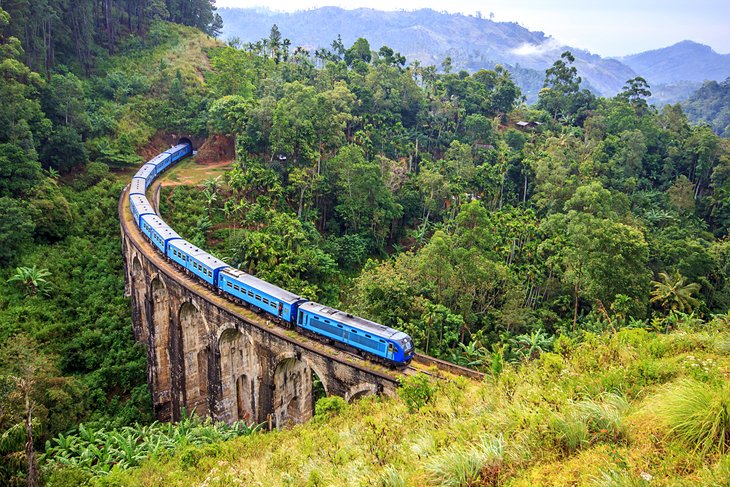
Sometimes it's as much about the journey as it is about the destination. An example of this is Ella, a small, hill-country town set among Sri Lanka's lush tea plantations. It's filled with small guesthouses, amazing food, and very friendly people. It's a fun getaway from the city or a way to enjoy a few days of leisurely hiking in the countryside.
A big reason people visit Ella is to ride the train from Kandy. Slowly, it winds its way up and down hills, through small towns, across green tea fields, until finally arriving in the small mountain town after about six hours. The ride is considered one of the most beautiful train journeys in the world . You can also start the journey in Colombo, which adds three hours to the trip.
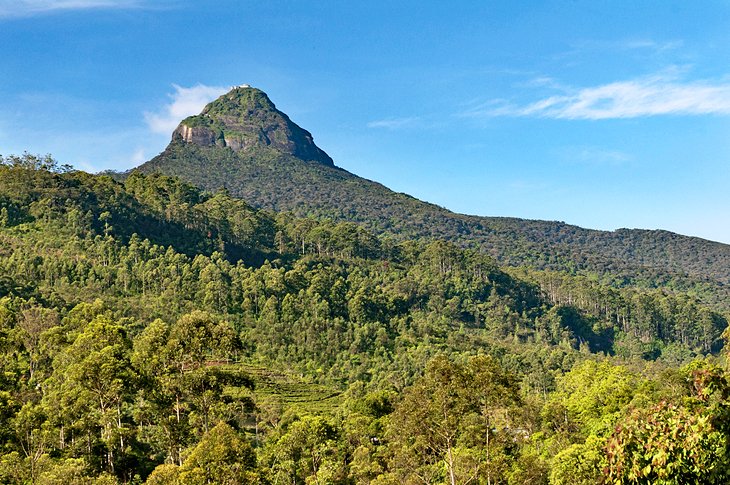
Another one of the best places to visit in Sri Lanka that's also all about the journey is Adam's Peak. This mountain is topped by a sacred rock formation, and pilgrims traditionally climb to the summit at night in time to watch the sunrise.
The popular hike (which is great for families and children, too) generally takes about three hours, and there are rest stops and food vendors along the path. After the hike, you'll be rewarded by seeing a rock with a footprint-shaped indentation where some believe Adam made his first step. Others believe it's the footprint of Buddha, and some believe it was made by the deity Shiva.
The Adam's Peak hike begins in the village of Nallathanniya in central Sri Lanka. The best times to make the climb are between December and May when the weather is somewhat mild.
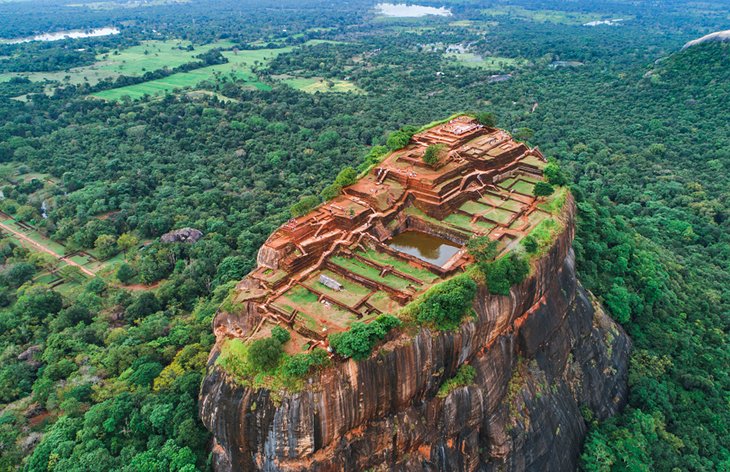
Like Machu Picchu or Masada, Sigiriya impresses visitors just with the absurdity of its construction. It's a huge rock formation that's been carved and transformed into a palace. The ruins are near the town of Dambulla in the central part of the country.
Built about 1,500 years ago, the palace complex sits atop a 660-foot (220-meter) rock with sheer walls. Those walls have ancient painted frescoes and carvings transforming the whole structure into a work of art. In the middle of one rock wall, there's a giant gateway carved in the shape of a lion.
Aside from the palace above, the area below is an intricate city complex with gardens and residential and commercial areas. It's a very important surviving example of early city planning from this era.
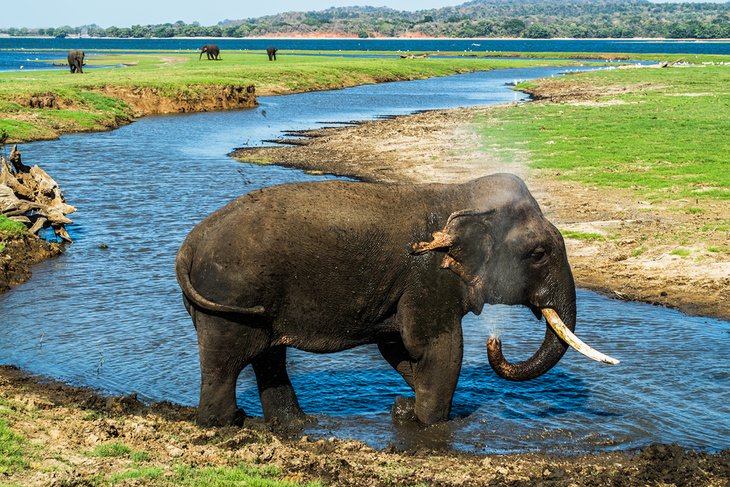
If you're looking to see elephants in their natural environment, Minneriya National Park near the town of Polonnaruwa , is the best place to go. The lush, protected landscape means the park is a dry-season (May through September) feeding area for the elephants who live in the region's forests. The park is in Sri Lanka's Dry Zone, which sees far less rainfall than the other parts of the island.
Minneriya is a much better option to see elephants than some of the country's elephant orphanages and sanctuaries, which can be tourist traps that mistreat the animals. Various operators offer full- and half-day jeep safaris where you can explore the vast space. You could also visit the park on a day trip from Colombo; it's about three hours away by car.

Nomadic Matt's Travel Site
Travel Better, Cheaper, Longer
Sri Lanka Travel Guide
Published: December 6, 2023
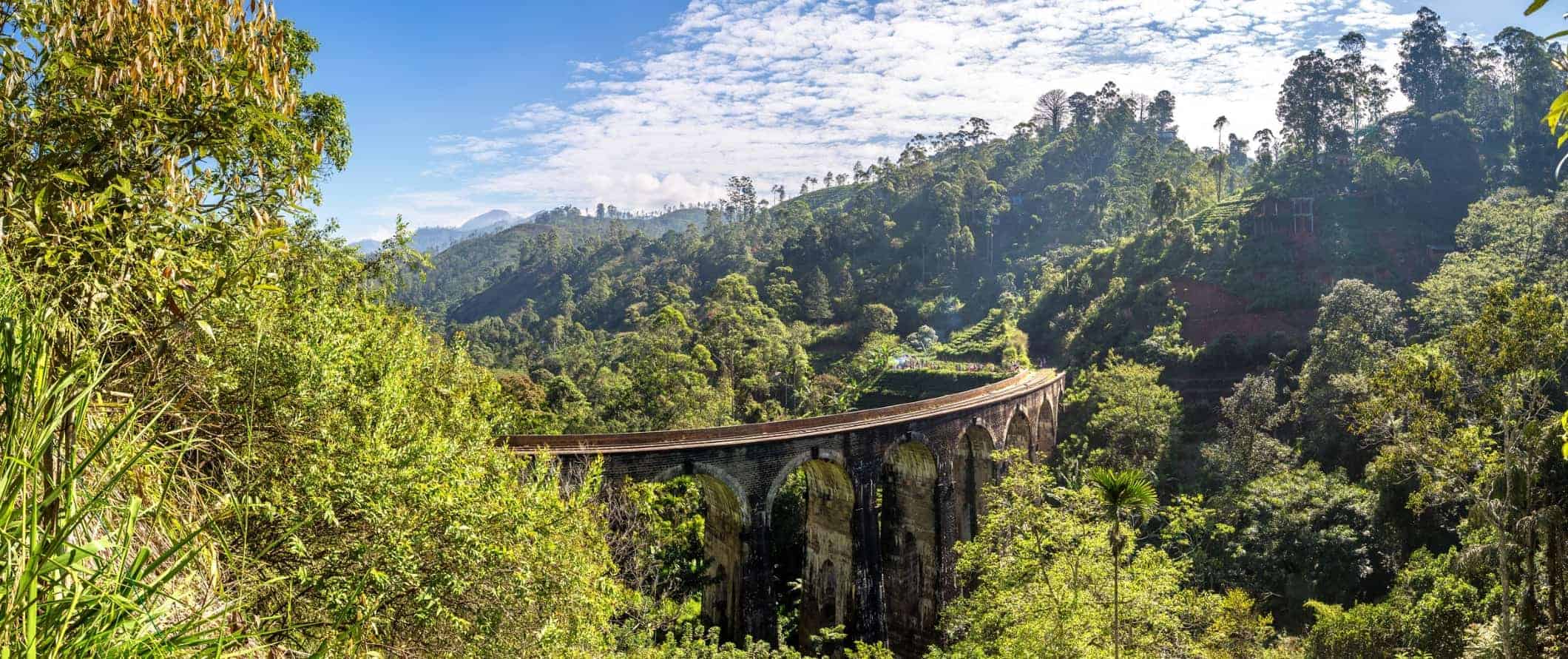
Sri Lanka was a wonderful surprise. I didn’t know what to expect going into my trip, but I ended up loving every bit of it.
It is a divided country, with the south dominated by Buddhist Sinhalese and the north by Hindu Tamils. After the British left in 1948, the Sinhalese controlled the government and enacted a series of laws that limited Tamil participation in society. Eventually, Tamil protests escalated and a 26-year civil war ensued, only ending in 2009.
Though it has been some time since then, Sri Lanka is still very much recovering — but that doesn’t mean you shouldn’t visit. In fact, my time there was especially memorable due to my experiences meeting and getting to know the incredibly friendly locals. No matter where I went, Sri Lankans welcomed me with kindness and open arms.
Traveling around Sri Lanka is relatively easy and very budget-friendly. English is widely spoken, so once you get used to the chaos, it isn’t too difficult to get around.
With that in mind, here’s my Sri Lanka travel guide so that you can save money, have fun, and make the most of your visit to this beautiful country!
A note on prices and currencies : Costs for attractions in this guide are in USD, while costs for restaurants and accommodations are in LKR. This is to most accurately represent the currency in which you will see prices. Foreign visitors are charged a different price from locals at most attractions, quoted in USD. Registered tourist establishments are required to accept only foreign currency from nonresidents, as part of a governmental scheme to build up the country’s reserves of stronger currencies.
Table of Contents
- Things to See and Do
- Typical Costs
- Suggested Budget
- Money-Saving Tips
- Where to Stay
- How to Get Around
How to Stay Safe
- Best Places to Book Your Trip
- Related Blogs on Sri Lanka
Top 5 Things to See and Do in Sri Lanka

1. Tour a tea estate
When the British colonized the island in the early 19th century, they quickly realized that the central highlands had the perfect climate and topography for growing tea. One of the largest, lasting impacts of colonialism is that a significant portion of the country is still covered in tea plantations or estates.
The town of Hatton is known as the tea capital of Sri Lanka, as it’s the central point of a few regions where the plant is still plucked by hand (and one of the few places in the world where this still occurs). Going on a plantation or factory tour is a great way to learn about this integral part of the country’s economy and culture. Tours are often free, though if there is a fee, it’s only around 250 LKR. Tours usually include a tea tasting at the end.
2. See the wildlife at Yala National Park
This is Sri Lanka’s second-largest and most popular national park. It’s well known for its abundant wildlife, especially the elephants and leopards that make their home here. In fact, it’s the best place in the world to try to spot leopards, as it has the highest density of them! The area is culturally significant as well, with two important Buddhist pilgrim sites, Sithulpahuwa and Magul Vihara, located within the park. Hundreds of thousands of pilgrims visit these sites each year. While a guide isn’t required to enter the park, joining a safari led by an experienced local guide is the best way to experience Yala, as you’ll be able to ask questions as they point out animals to you. Safaris are quite affordable too, starting at just 8,600 LKR.
3. Hike Sigiriya Rock
Also known as Lion’s Rock, this UNESCO World Heritage Site is the country’s most famous tourist attraction. In the fifth century, Sri Lankan ruler King Kashyapa decided to build his fortress on this massive column of granite rock. While it was abandoned shortly after his death, its remote location meant that the palace remained untouched over the centuries, and today it remains a fascinating example of ancient urban planning.
You can hike to the top for stunning views over the lush landscapes below; it takes an hour to walk up, as it’s single file all the way. As it’s one of the most popular things to do in Sri Lanka, you won’t have this place to yourself. Get there when it opens at 6:30am to avoid huge lines. If you are there after 10am, the crowds are so overwhelming, it’s not worth visiting. Admission is $30 USD ( guided day trips from Kandy that also include visits to the cave temples of Dambulla are $70 USD).
Pro tip: if you’re on a budget, climb Pidurangala Rock instead. It’s much cheaper (500 LKR), plus you’ll actually get views of Sigiriya Rock itself! (Just note that the trail does involve some scrambling at times, while the trail to the top of Sigiriya is steep but easier, with metal steps and staircases.)
4. Take the train
The British built the Sri Lankan railway system in 1864 to transport tea and coffee from plantations to Colombo, where these goods were then shipped out internationally. The train lines are still in use and provide a scenic way to explore the country. There are three main lines, but the ride from Kandy to Ella is widely considered one of the most beautiful in the world. It lasts seven hours and takes you through lush mountains, tropical forests, and endless tea plantations; the picturesque 20th-century Nine Arches Bridge is on this route as well.
If you’d like to take this journey, it’s best to book with a travel agency in advance as seats sell out quickly. Just adjust your expectations regarding timeliness and speed. Don’t be in a hurry when riding the rails in Sri Lanka!
5. Visit Anuradhapura
Anuradhapura was the very first capital of Sri Lanka and remained so for around 1,300 years. Today, many of the old ruins still survive and have been restored to their former glory. This archaeological complex and UNESCO site contains many of Buddhism’s holiest places, including Jaya Sri Maha Bodhi, the fig tree where it is believed that the Buddha himself obtained enlightenment. It’s also home to Jetavanaramaya Dagaba, which at 122 meters (400 feet) is the world’s tallest stupa. Most people either rent a bicycle or hire a tuk-tuk to take them around the complex. Admission to the five main temples is $25 USD, though there are many smaller temples and sites that are either free or just a couple of dollars.
Other Things to See and Do
1. visit kandy.
The country’s second-largest city was also the last capital of Sri Lanka’s monarchy, the Kingdom of Kandy, which arose in the late 16th century and resisted both Dutch and Portuguese rule before finally succumbing to British colonization in the early 19th century. Kandy is known for its well-preserved historic colonial center (now a UNESCO site), as well as the Buddhist shrine the Temple of the Sacred Tooth Relic (supposedly an actual tooth of the Buddha). Many visitors come here because it’s the starting point for the scenic train to Ella, but make sure to spend a few days exploring the bustling streets, enjoying Kandy Lake, and wandering through the Royal Botanic Gardens of Peradeniya, the nation’s biggest and most impressive botanical garden.
2. Explore Ella
If you take Sri Lanka’s most scenic train ride, you’ll end up in the town of Ella, which, though small, is a popular destination. Even if you don’t take the train to get here, the iconic Nine Arches railway bridge is one of the biggest attractions in the entire country. You can get to the lookout by hiking through the forest, and then waiting for a train to go by if you want that iconic “Sri Lankan postcard” shot. Other things to see and do here include traversing the surrounding rainforests to see stunning waterfalls, hiking Little Adam’s Peak or Ella Rock, and visiting the endless tea plantations.
3. Travel up north
After decades of war, the north has a legacy of destruction that has yet to go away. For that reason, most travelers focus on the southern half of Sri Lanka, with its plentiful hiking and charming beach towns. But seeing the north gave me a more nuanced perspective on a portion of the country without hordes of other tourists. In fact, in my time there, I saw only four Westerners.
As the area is mainly Hindu, you’ll find lots of beautiful temples here, including the impressive Nallur Kandaswamy in Jaffna. The north also offers beautiful yet uncrowded beaches, a plethora of tranquil islands to explore, and delicious food with a strong southern Indian influence.
4. See the temples
Sri Lanka has an astonishing number of impressive temples. Everywhere you go, there’s a beautiful temple! Some of the most famous include Temple of the Tooth (in Kandy), Sri Kailawasanathan Swami Devasthanam and Gangaramaya (both in Colombo), Dambulla Cave Temple (in Dambulla), and Nallur Kandaswamy Temple (in Jaffna).
When visiting, be sure to dress appropriately, as these are active places of worship. Also, bring flip-flops to temples, since you’ll have to take your socks and shoes off before going inside. Entrance fees range from free to around $10 USD.
5. Take a cooking class
While I didn’t know much about the country’s food before arriving, I quickly became hooked on the delicious curries of Sri Lankan cuisine. Colombo Cooking Class offers three-hour sessions in which you make 10 dishes, including curries, coconut sambol, and papadam. The class takes place in the owner’s home, and it really feels like you’re learning to cook with a friend! The cost is around 20,000 LKR.
6. Hit the beaches
Since it’s a huge island, Sri Lanka’s coastline spans over 1,340 kilometers (830 miles), meaning there are countless beaches to enjoy. There are white-sand shores to stroll on, coral reefs perfect for snorkeling, picturesque sunsets to admire, and breaks great for surfing. No matter what you’re into, there’s a beach for you in Sri Lanka.
Arugam Bay and Mirissa Beach are some of the most well known, mainly as world-famous surfing destinations, but they both have nice beach towns to visit even if you don’t surf.
7. Day trip to Galle
Founded in the late 16th century by the Portuguese and later conquered by the Dutch in the mid-17th century, Galle (a UNESCO World Heritage Site) is a beautifully preserved old fort town that’s worth a visit. A visit here is best spent just wandering around, admiring the Dutch colonial buildings, walking the perimeter of the old fort, shopping at the artisanal craft stores (or taking a workshop to learn how to make jewelry in the traditional style ), touring the National Maritime Museum, and eating fresh seafood.
But as that’s about the extent of what there is to do, I recommend visiting Galle as a day trip from Colombo rather than staying overnight. It’s super easy, as you can take the train directly, which takes about two hours.
8. Climb Adam’s Peak
Adam’s Peak is Sri Lanka’s most sacred mountain and an important pilgrimage destination. Hindus and Buddhists believe the mountain is the footstep of Shiva and the Buddha, respectively, while Muslims and Christians revere it as the first place Adam stepped on earth after his ousting from the Garden of Eden.
But even if you aren’t religious, trekking to the top of Adam’s Peak is a rewarding experience for both the challenge of the ascent and the magnificent views. It is a steep climb, with over 5,000 steps to get to the top, though there are many teahouses to stop at along the way. Most hikers start their climb from the village of Dalhousie around 2am in order to reach the top by sunrise. Depending on your fitness level, the entire journey takes around 5-7 hours.
9. Go whale watching
While countries like Iceland get all the press for whale watching, Sri Lanka is actually one of the best places to view these awe-inspiring creatures. Many species — including the blue whale, the largest animal on earth — migrate annually around the southern tip of the island, swimming closer to shore here than anywhere else in the world.
Mirissa Beach is the best place to depart from, and there are many operators offering tours. Be sure to go with a company that adheres to responsible international whale watching standards, which include stipulations like not getting too close, not feeding the whales, etc. I recommend Raja and the Whales, where an adult ticket is around 20,000 LKR.
10. Explore Colombo
As the country’s capital and location of its major international airport, you’ll undoubtedly be flying in and out of Colombo. This busy city is a bit of everything, with modern cafés and bistros right next to traditional Buddhist and Hindu temples. It’s worth spending a couple days here, getting your bearings and enjoying the cultural offerings.
Sri Lanka Travel Costs
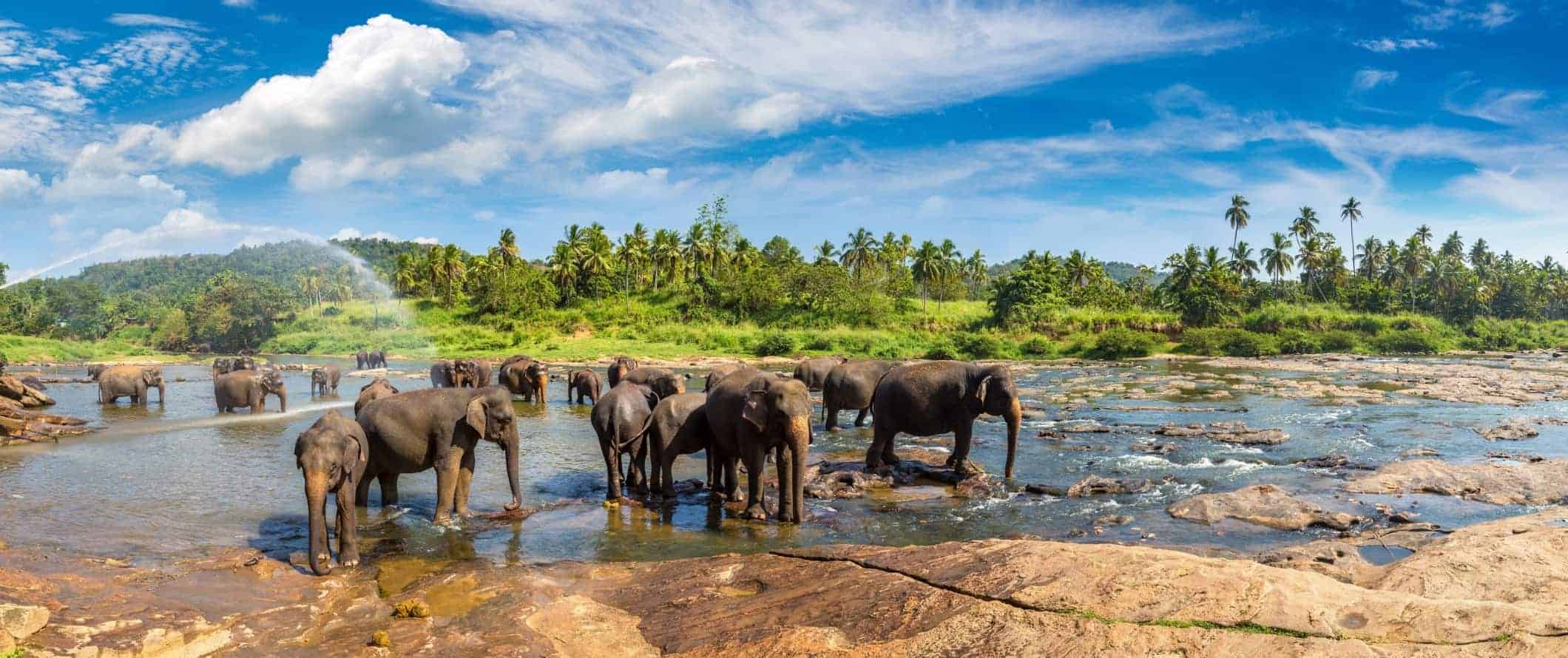
Sri Lanka is cheap to visit. Even when you splurge, it’s not that expensive, especially if you stick to delicious local cuisine, travel on trains and buses, and don’t go crazy with your accommodation.
Accommodation – There is a lot of cheap accommodation throughout the country (and a growing number of hostels), though they’re really basic, with just a fan, mosquito net, and shower. At 2,000-4,000 LKR per dorm bed, you can’t go wrong though. Private rooms in hostels start around 6,500 LKR.
Guesthouses are more plentiful and affordable, with private rooms that have an en-suite bathroom starting at 5,000 LKR per night. Two-star budget hotels start around 8,000 LKR. In both cases, you’ll usually get free breakfast and Wi-Fi too.
You can find some unique Airbnbs in Sri Lanka, though they tend to be pricey. Prices range from 7,000 LKR per night for tree houses and cabins to 25,000 LKR and up for villas and larger properties. Most of the midrange options on Airbnb are hotels and guesthouses.
Food – Incredibly flavorful and packed with fragrant spices, Sri Lankan food is influenced by the culture and cuisines of foreign traders from all over the world. Middle Eastern, Indian, Portuguese, and Dutch flavors are particularly common due to trading routes and the country’s colonial history.
Cinnamon and black pepper are the two most important spices, though cardamom, pandan leaf, and lemongrass feature heavily too. Sri Lankan cuisine can be quite spicy, and dozens of types of peppers are grown and used on the island.
And, as an island nation, it should come as no surprise that fresh seafood plays a major role in many Sri Lankan dishes. Maldives fish (cured tuna produced in the Maldives) is a staple flavoring element. Coconut and rice are also two ubiquitous ingredients that you’ll find on the table at every meal and part of many street snacks.
Popular dishes include various curries (including fish, crab, or lentil), biryani (meat, fish, or vegetables cooked with rice and seasoned), pittu (cylinders of rice flour mixed with grated coconut), kiribath (rice cooked in coconut milk), roti (flatbread made from wheat flour), wattalapam (rich pudding made with coconut milk, jaggery, cashews, eggs, and spices), kottu (roti, meat curry, scrambled egg, onions, and chilies, chopped together with a cleaver on a hot griddle), appam (a thin pancake made with fermented rice batter and coconut milk), lamprais (rice cooked in stock, accompanied by meatballs, and baked in a banana leaf), breudher (a Dutch holiday biscuit), and bolo fiado (Portuguese-style layer cake).
Besides being delicious, food is also really cheap here. At a casual traditional restaurant, starters and snacks like roti or dosa are 240-550 LKR, while biryani costs 450-900 (depending on the meat chosen), and a typical curry dish costs 550-950 LKR. A fast-food combo meal is 750 LKR.
At restaurants with table service or for a more “Western” meal, a pizza is 2,500-3,500 LKR, a pasta dish is 1,500-2,200, and a burger is around 1,100-1,500 LKR. At an upscale restaurant, fish or crab curry is 3,500-4,000 LKR, while a chicken or vegetable curry is 1,000-1,500 LKR.
A bottle of water is 100-150 LKR, a cappuccino is 600 LKR, and a beer is around 500-600 LKR, though don’t expect too many chances to drink alcohol. Outside the coastal touristy beach towns and the capital of Colombo, there isn’t much nightlife or opportunity to drink. While you can always crack a beer at your guesthouse, Sri Lanka isn’t home to a big drinking/nightlife culture.
Some of my favorite restaurants were Balaji Dosai and the Slightly Chilled Bar in Kandy; Ahinsa in Sigiriya; and Upali’s and the Ministry of Crab in Colombo. The last one is an expensive seafood restaurant, but the food is delicious! Sri Lankan crab is famous worldwide — and gigantic. It’s not cheap, but sometimes you just have to treat yourself.
Backpacking Sri Lanka: Suggested Budgets
On a backpacking budget of 9,700 LKR per day, you can stay in a hostel, eat cheap meals like street food (with limited drinking), use public transportation to get around, and do free activities like walking tours, hiking, and hanging out at beaches.
On a midrange budget of 18,000 LKR per day, you can stay in a guesthouse or private room in a hostel or Airbnb, eat out for most meals, drink more, take taxis to get around, and do more paid activities like museum visits or whale watching.
On an upscale budget of 35,000 LKR or more per day, you can stay in a hotel or private Airbnb, eat out pretty much anywhere you want, drink at the bar, rent a tuk-tuk or car to get around, and do as many guided tours and activities as you want. This is just the ground floor for luxury though. The sky is the limit!
You can use the chart below to get some idea of how much you need to budget daily, depending on your travel style. Keep in mind these are daily averages — some days you’ll spend more, some days you’ll spend less (you might spend less every day). We just want to give you a general idea of how to make your budget. Prices are in LKR.
Sri Lanka Travel Guide: Money-Saving Tips
Sri Lanka is very affordable, but there are still plenty of ways to help keep your costs low. Here are my top money-saving tips for traveling in Sri lanka:
- Get your visa in advance – You’ll need to get a visa for entry into the country. You can do this either online starting three days before you arrive, or upon arrival. It’s slightly cheaper if you do it ahead of time, plus you’ll skip the lines at the airport.
- Eat the local food – Outside of the major cities of Colombo and Kandy, you won’t find many non-Sri Lankan or non-Indian food options. What you do find is overpriced, subpar Western food that’s more often than not a chain. Skip it and stick to the local cuisine.
- Bring a water bottle – You shouldn’t really drink the water in Sri Lanka. And since the weather here is really hot, you’ll need to buy a lot of bottled water to stay hydrated (you’ll probably spend 300 LKR per day on plastic bottles of water). Instead, bring a reusable water bottle with a filter instead to save money and reduce your plastic use. LifeStraw is my go-to brand as its bottles have built-in filters to ensure that your water is always clean and safe.
- Stay with a local – Couchsurfing is a great way to save money on accommodation while also getting some insight from residents. You might have better luck in the larger cities, but be sure to request early, as they also see the most requests.
- Visit in off or shoulder seasons – Visit during monsoon season or shoulder season to save money. Even though you will experience some rain, it doesn’t rain 24/7, and you’ll still be able to get out and explore.
Where to Stay in Sri Lanka
Guesthouses are the most common and affordable option in Sri Lanka, though there is a growing number of hostels here too. Here are my recommended places to stay around the country:
- C1 Colombo Fort (Colombo)
- Palitha Home Stay (Sigiriya)
- Jaye’s Home Stay (Kandy)
- Backpacker Galle Hostel (Galle)
How to Get Around Sri Lanka
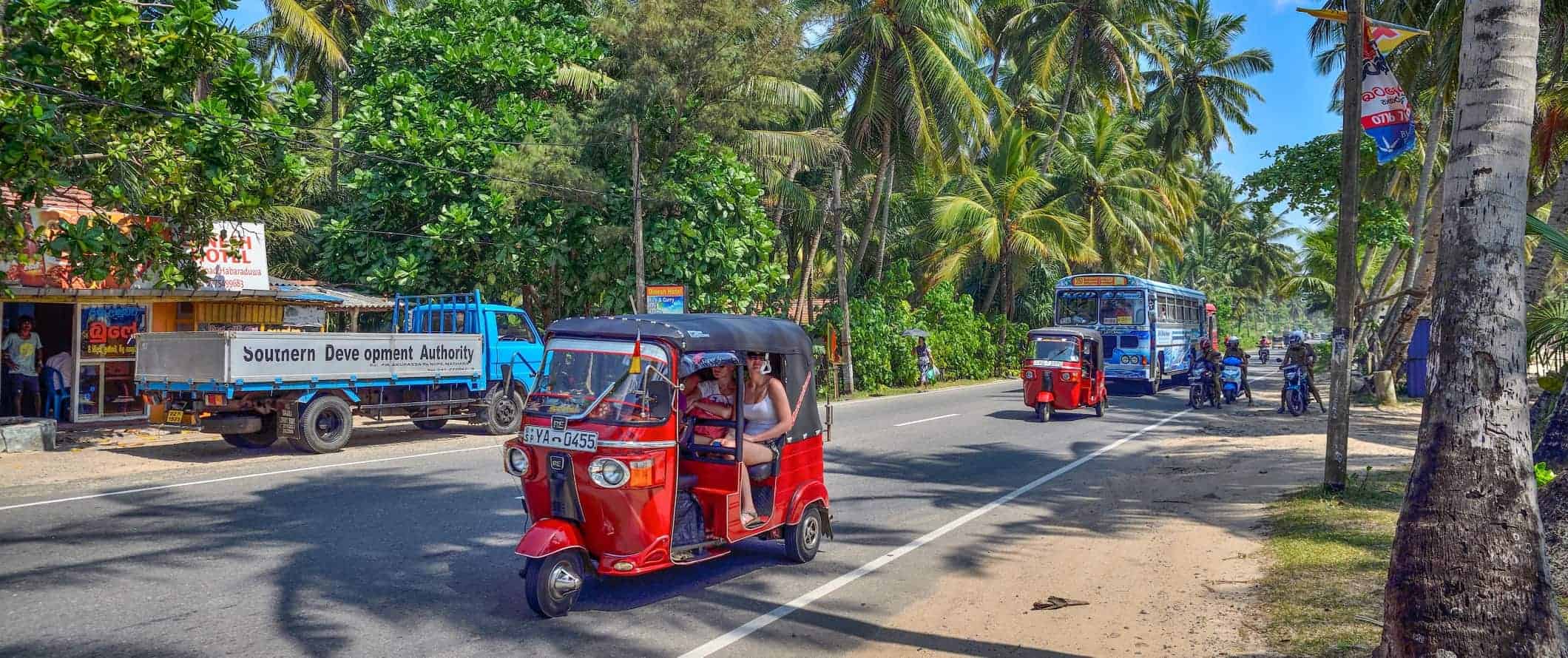
Bus – This is the cheapest and most widely used way to get around the country, though it can be a very crowded and at times harrowing experience. There are two types of buses: red Sri Lanka Transport Board (SLTB) buses that are run by the state, and blue, pink, or green buses that are run by private companies. Private buses tend to be more crowded, as there are more seats, and drivers try to cram on as many passengers as possible.
Since you’ll most likely be flying in and/or out of Colombo, the blue Colombo Express Bus is the cheapest and easiest way to get from the airport to the city center. It’s just 110 LKR (the same price as the regular bus), leaves every 30 minutes (5:30am–8:30pm), and takes about an hour. In town, it stops at (and leaves from) the Central Bus Stand, Pettah Fort, and Colombo Fort Station. Alternatively, a taxi is about 2,700 LKR.
Tuk-tuk – All throughout Sri Lanka, you can hire drivers cheaply. Any tuk-tuk driver will let you hire them for the day, for around 10,000 LKR. Moreover, they are pretty honest — except in Colombo, where they may try to scam and overcharge you. Elsewhere in the country, you’ll get a fair deal, so there’s no need to try to bargain hard.
Ridesharing – Uber is available only in Colombo and is often more expensive than taxis, especially during rush hours. PickMe is a local taxi-hailing app that you can also use to hire tuk-tuks.
Train – Train travel, while slower, is the most scenic and culturally immersive way to get around Sri Lanka (plus, the island is so small that taking an expensive short flight doesn’t make sense). Sri Lanka Railways runs all trains, and you can find schedules and make reservations on its website.
There are a variety of classes from which to choose: first, second, third, and reserved or unreserved (third class doesn’t have reserved seating and doesn’t sell out). Seat reservations can only be made up to 30 days prior to departure.
Some typical train routes and their approximate prices include the following:
- Colombo to Jaffna (7–8 hours): 2,250 LKR
- Jaffna to Anuradhapura (2.5–3.5 hours): 1,600 LKR
- Kandy to Nuwara Eliya (3.5–4 hours): 2,500 LKR
- Colombo to Galle (2 hours): 1,600 LKR
For more details on train travel in Sri Lanka, I recommend The Man in Seat 61 . It’s the best resource for train travel information.
Flying – As Sri Lanka is a relatively small island, flying domestically doesn’t make much sense. There is only one airline that even offers domestic routes (Cinnamon Air) and those are expensive, starting at 77,000 LKR for a 30-minute flight. Skip the flights.
When to Go to Sri Lanka
Sri Lanka is effected by two different monsoon seasons, so if you want the best weather during your trip, you’ll want to keep that in mind.
If you want to visit the beaches in the south and west, go December through March. April to September is best for visiting the north and east.
The good news is that temperatures stay fairly consistent throughout the year. Coastal regions generally have average temperatures of 25-30°C (77-86°F) while in the highlands you can expect an average of 17-19°C (63-66°F).
While there is a lot of rain during monsoon season, it doesn’t rain 24/7 so you can still enjoy the country. But no matter when you visit, make sure to bring a rain coat just in case.
Sri Lanka is a safe place to backpack and travel — even if you’re a solo traveler. Violent attacks against tourists are rare. Petty theft is the most common type of crime, especially around popular tourist landmarks. Always keep your valuables out of reach on public transportation, in crowds, and at the beach, just to be safe. A little vigilance goes a long way here since most thefts are crimes of opportunity.
The main scam to watch out for is paying the “tourist tax” (elevated prices for travelers). If you’re worried about others, read this blog post about major travel scams to avoid .
Solo female travelers should generally feel safe, though verbal (and at times physical) harassment unfortunately occurs more often here than in other countries. It’s a good idea to dress conservatively and avoid walking around alone at night.
Other issues that you may encounter involve civil unrest and the current economic crisis. Stay aware of any demonstrations that may be occurring (usually in Colombo). While they are generally peaceful, like anywhere, there is the potential for these protests becoming violent. Steer clear to avoid getting caught in the middle.
Also be aware that shortages of supplies are common, and fuel is currently being rationed. If you need medications, bring a full supply with you.
Make copies of your personal documents, including your passport and ID. Forward your itinerary along to loved ones so they’ll know where you are.
If you do experience an emergency, dial 119.
The most important piece of advice I can offer is to purchase good travel insurance. It protects you against illness, injury, theft, and cancelations. It’s comprehensive protection in case anything goes wrong unexpectedly. I never go on a trip without it, as I’ve had to use it many times in the past. You can use the widget below to find the policy right for you:
Sri Lanka Travel Guide: The Best Booking Resources
These are my favorite companies to use when I travel. They consistently have the best deals, offer world-class customer service and great value, and overall, are better than their competitors. They are the companies I use the most and are always the starting point in my search for travel deals.
- Skyscanner – Skyscanner is my favorite flight search engine. They search small websites and budget airlines that larger search sites tend to miss. They are hands down the number one place to start.
- Hostelworld – This is the best hostel accommodation site out there with the largest inventory, best search interface, and widest availability.
- Booking.com – The best all around booking site that constantly provides the cheapest and lowest rates. They have the widest selection of budget accommodation. In all my tests, they’ve always had the cheapest rates out of all the booking websites.
- Get Your Guide – Get Your Guide is a huge online marketplace for tours and excursions. They have tons of tour options available in cities all around the world, including everything from cooking classes, walking tours, street art lessons, and more!
- SafetyWing – Safety Wing offers convenient and affordable plans tailored to digital nomads and long-term travelers. They have cheap monthly plans, great customer service, and an easy-to-use claims process that makes it perfect for those on the road.
- LifeStraw – My go-to company for reusable water bottles with built-in filters so you can ensure your drinking water is always clean and safe.
- Unbound Merino – They make lightweight, durable, easy-to-clean travel clothing.
- Top Travel Credit Cards – Points are the best way to cut down travel expenses. Here’s my favorite point earning credit cards so you can get free travel!
Sri Lanka Travel Guide: Related Articles
Want more info? Check out all the articles I’ve written on Sri Lanka travel and continue planning your trip:
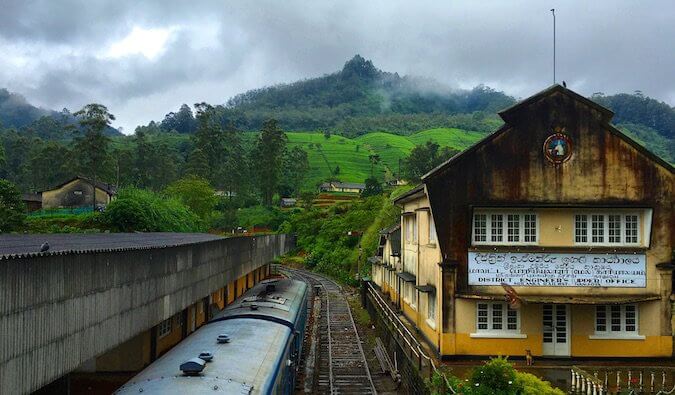
The Ultimate Guide to Sri Lanka: Costs, Itineraries, and Favorites

Sri Lankans: Making a Stranger Feel Like Family
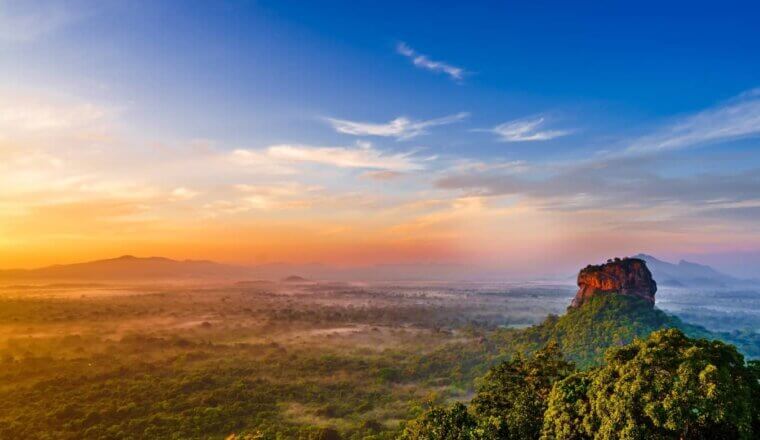
How to Plan a Trip to a Place You Know Nothing About
Get my best stuff sent straight to you, pin it on pinterest.
- Where To Stay
- Transportation
- Booking Resources
- Related Blogs

Sri Lanka: The Ultimate Travel Guide
- 1 How much does a trip to Sri Lanka cost?
- 2.1 Historical Sites and Temples
- 2.2 Wildlife Safaris
- 2.3 Beaches
- 3 Flights to Sri Lanka
- 4 Accommodation
- 5 Sri Lanka Itinerary: 2 Weeks
- 6 Sri Lanka Itinerary: 3-4 Weeks
- 7 When to Go
- 8 Eating and Drinking
- 9.1 Public Buses
- 9.3 Tuk Tuks
- 9.4 Use PickMe
- 10.1 Trails, Hiking, and Longer Treks
- 10.2 Swimming and Surfing
- 10.3 Kitesurfing
- 10.4 Wildlife Safaris
- 11.1 Related
I grew up in Kandy, the country’s hill capital. In the last three years, I've decided to explore the tiny corners of my island. I’ve peeped my head out of train windows uncountable times, solved riddles of an 8-year-old in a small mountain village in Nanu Oya, and have befriended dogs who have guided me to mountain tops. And now, I’m putting all of my “local knowledge” into this ultimate travel guide to Sri Lanka.
How much does a trip to Sri Lanka cost?
Let me cut to the chase. It depends on your traveling style. If you are the kind of traveler who wants to sip Ceylon tea while being pampered in a vintage tea bungalow in Nuwara Eliya (which we apparently named Little England) on a dime, then Sri Lanka is not the ultimate budget destination for you.
While Sri Lanka is comparatively a “cheaper” destination to travel to, it’s not as cheap as neighboring India, Nepal , Tibet , or Southeast Asia.
If you are the kind of traveler who stays in homestays, hostels, mingles with locals, uses public transport and eats local food, then it’s absolutely possible to travel in Sri Lanka with $30 a day . However, adding a bit more comfort (using taxis often and having your coffee fix at mid-range cafes) plus activity entrance prices, then a budget of $50 a day would be more realistic.
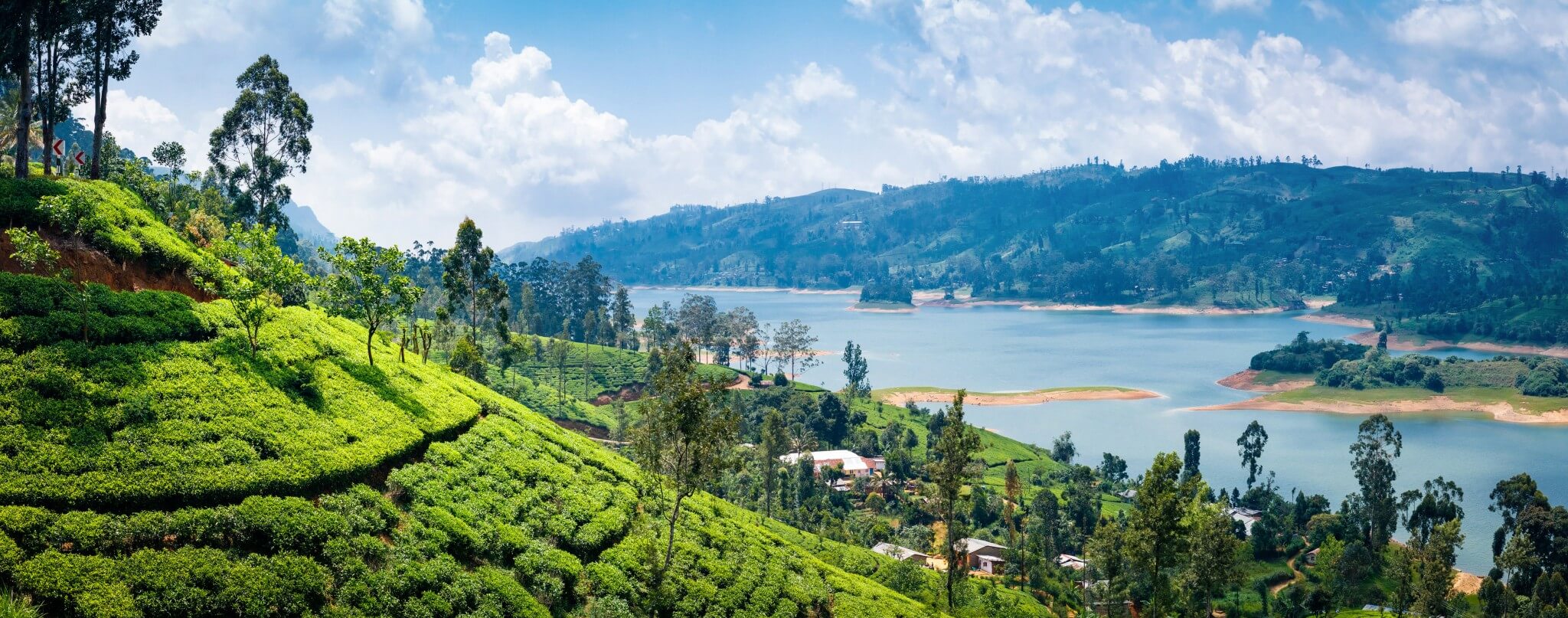
Historical Sites and Temples
The cultural triangle – made of the three major historical cities of Anuradhapura, Polonnaruwa, and Kandy – are often frequented by history buffs. However, inside the triangle, there lies a plethora of lesser-known historical sites deserving of a visit.
Lion’s Rock in Sigiriya is named as the 8th World Wonder, though the entrance fee of $30 USD is putting many budget travellers off. Lion’s Rock is an architectural masterpiece, and if you are a history buff, you can't miss this place. Nearby Pidurangala Rock has become Instagram-famous over the years. Pidurangala offers stunning views with Lion’s Rock as the backdrop, and the 1-hour hike to the top is totally worth it. A three-hour drive from Dambulla is Yapahuwa, the 4th kingdom of Sri Lanka. The citadel is built on a granite rock, rising about 100 meters from the surrounding lowlands in Kurunegala District. While rock inscriptions of Ritigala Monastery are quintessential storytellers of the bygone era, Jathika Namal Uyana is Sri Lanka’s largest ironwood forest and pink quartz mountain in Asia. The rosy tones of the quartz are slowly fading away with time, so now is the time to go.

Ambekke, Lankatilake, and Gadaladeniya temples close to Kandy are slowly opening up to tourists. The gigantic Buddha statue of Aukana and Buduruwagala in Wellawaya are fascinating sites to behold. Easily reached by nearby towns of Dikwella and Tangalle, Mulkirigala is another ancient rock temple which has become popular over the years.
The island is also home to a few world-famous Hindu temples. Devotees from all around the world flock to Seetha Amman Temple in Nuwara Eliya and Nallur Kandaswamy Temple in Jaffna when Hindu festivals and ceremonies are taking place.

Wildlife Safaris
If seeing wildlife is on your list of things to do in Sri Lanka, avoid visiting unethical wildlife “conservation” centers such as Pinnawala Elephant Orphanage and unauthorized turtle hatcheries. Instead, consider visiting a national park to see wild animals in their natural habitats. Yala, Udawalawe, and Kaudulla have become insanely crowded over the years. But don’t lose hope – Sri Lanka has 26 national parks to explore.

Kumana National Park, located south of Arugam Bay, offers an amazing safari experience. The park is home to elephants, wild boars, foxes, peacocks and many other species of birds. In Gal Oya National Park, you can go on a boat safari to spot wild elephants hang out in Senanayaka Samudraya, the largest tank in Sri Lanka. For an unforgettable marine life viewing experience, head to Pigeon Island in Trincomalee. Be warned though, during peak season (April – August), it does get crowded. While Bundala is a paradise for birdwatchers, Maduru Ganga National Park is one of the lesser-known wildlife destinations in Sri Lanka. The jungle-clad lowlands here offer stunning landscapes and a quieter place to see elephants in their natural habitats.
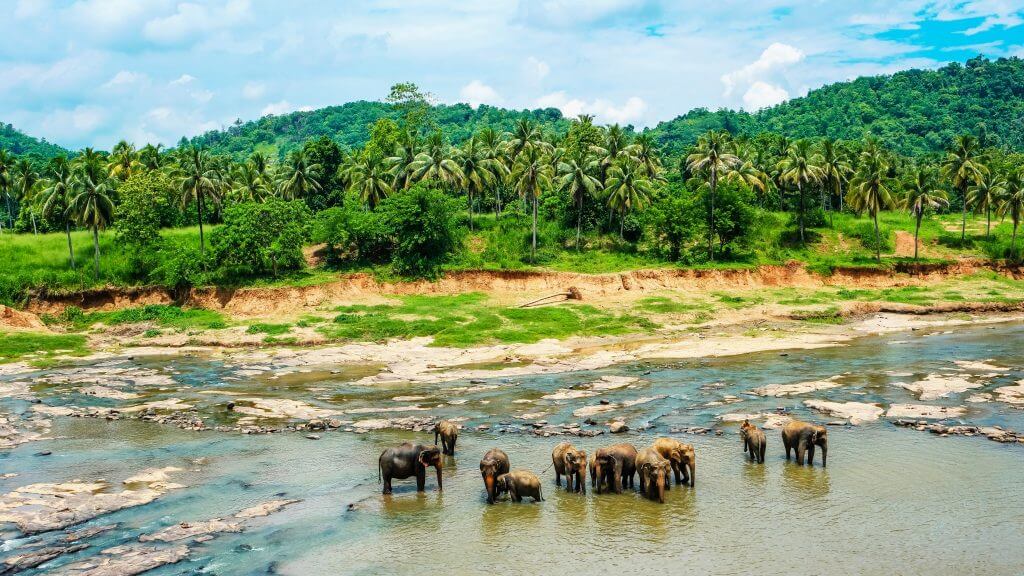
Being an island nation, there are countless beautiful beaches to choose from, many of which you'll never find in a guidebook. Here are some top choices from a local:
South Coast
- Mirissa, Weligama, Unawatuna Hikkaduwa: Immensely popular beaches, but very crowded, especially during the peak tourist season.
- Hiriketiya, Thalalla, Dikwella, Tangalle: Secluded beach villages. Check out Goyambokka, Rekawa, and Gurupokuna beach.
North Coast
Aptly named for the Casuarina trees that decorate the beach, Casuarina Beach in Karainagar is a popular option among the Northerners
Nilaveli , Uppuveli , and Arugam Bay are popular east coast options, however, Komari Beach (16 kilometers north of Potuvil) and beaches in Oluvil offer more authentic experiences
South of Kalpitiya is a small fishing village named Kappalady , home to a long sandbank and turquoise blue waters. You’ll likely see not a soul in sight.
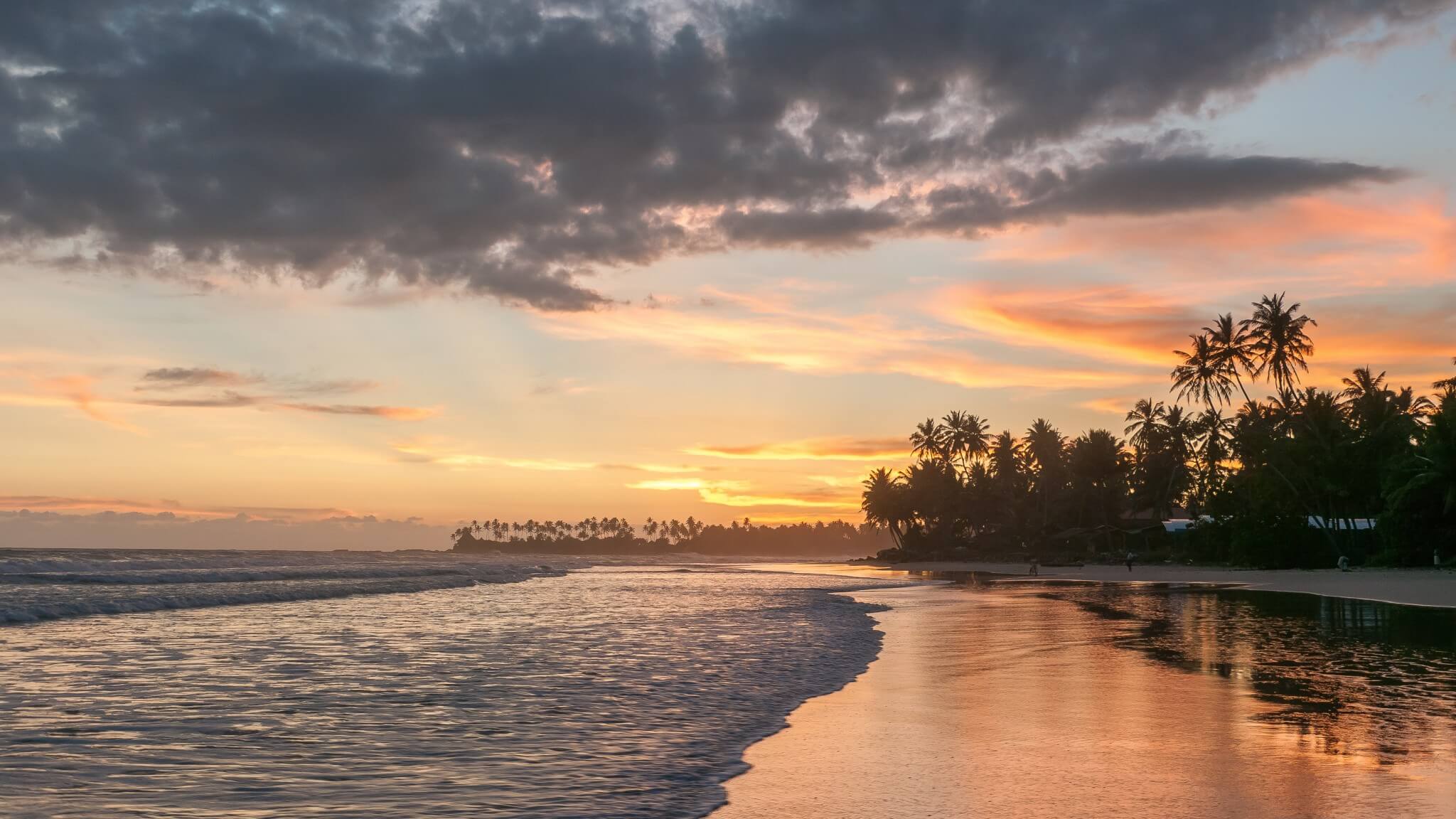
Flights to Sri Lanka
Most flights arrive in Bandaranaike International Airport (airport code CMB ) in Katunayake, an hour’s drive from Colombo if you use the expressway. When searching for flights, use Skyscanner to conduct a broad search (select “Entire Month” if you don’t have fixed dates to visualize the cheapest dates to fly).
SriLankan Airlines offer flights to Colombo from many destinations across the world, including a direct journey from Melbourne. If you are in South East Asia, AirAsia offers cheap flights to Sri Lanka, and Kuala Lumpur to Colombo has been the cheapest option over the years. Flights from Southern Indian cities (Chennai, Madurai, Kochi, Coimbatore, Hyderabad, and Bangalore) are common travel routes to Sri Lanka. Currently, IndiGo Airlines offers the cheapest flights to Sri Lanka from a number of Indian cities.
Accommodation
Sri Lanka has a wide range of accommodation options from luxe hotels to local-run homestays. While many luxury boutique hotels are priced at $200-400 USD, a private room in a typical luxury hotel normally begins at $100. Cinnamon Hotels and Jetwing Hotels are two popular luxury accommodation options. Check HotelsCombined , which compares prices of both hotels and hostels across a variety of booking sites.
Hostels are priced anywhere between $8-20 USD. Backpack hostels are often found in major cities and touristy areas such as Colombo , Kandy , Galle , Unawatuna and Ella . Hangover Hostels is one of the popular hostel chains on the island with four hostels in Colombo , near Airport , Ella and in Mirissa . Clock Inn , a pioneer in Sri Lanka’s backpack culture has a chic, modern hostel in the heart of Kandy. Pedlar’s Inn is the go-to place for budget travelers in Galle. In far-less-touristy areas, budget travelers can opt for local-run homestays and expect to pay anything over $15 USD.
AirBNB is quite popular in Sri Lanka, but is usually pricier than hostels and homestays (you can get $40 USD off your first Airbnb trip with this coupon ). Apart from these options, there are many beachside cabana style accommodation options and eco-friendly tree houses in the wild. Back of Beyond offers an amazing, eco-friendly experience in several offbeat locations in Sri Lanka and their properties usually begins at $100 USD a night.
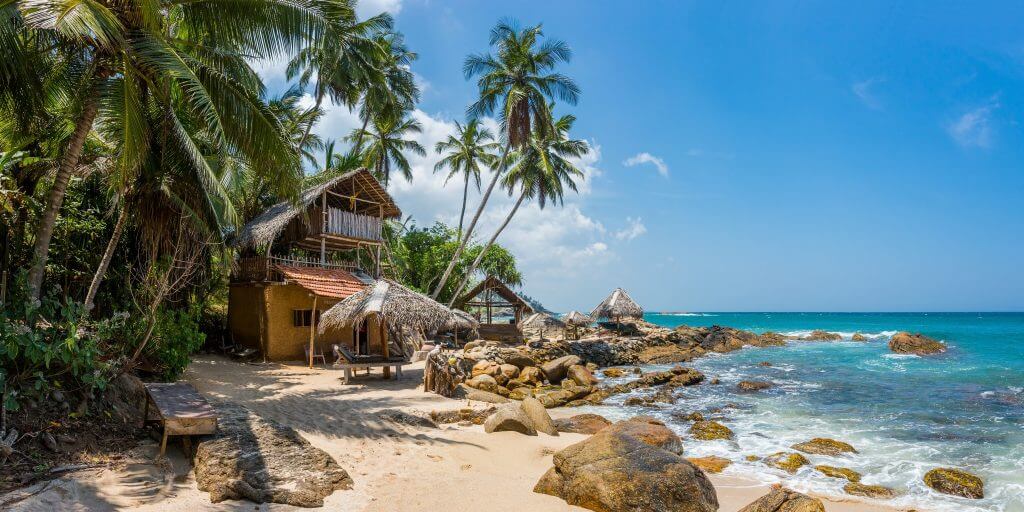
Sri Lanka Itinerary: 2 Weeks
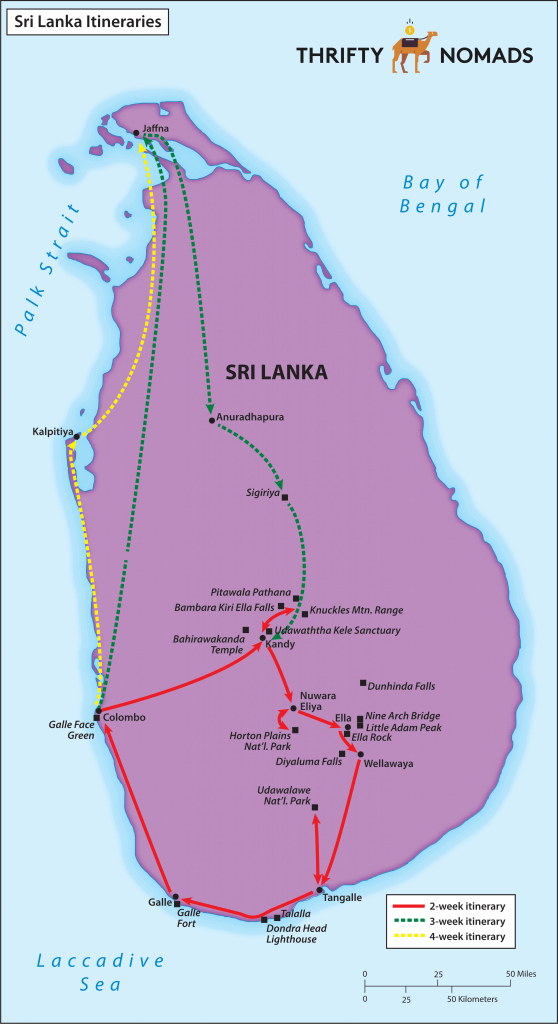
To get an overall feel of Sri Lanka, one month is a good time. While slow travelers love to stay for 2-3 months, those who don’t have much time come for two weeks. This sample itinerary highlights what you can do and see in Sri Lanka in 2 weeks.
- Day 1 : Arrive in Colombo. Explore Colombo’s street food scene at Galle Face Green .
- Day 2 : Board the early morning train to Kandy and spend the rest of the day exploring. Go off the tourist trail to Bahirawakanda Temple and Udawattakele Sanctuary .
- Day 3 : Day trip to the Knuckles Mountain Range and Pitawala Pathana . One needs to use private transport, and renting a car, tuk tuk, or a van costs 7000 LKR ($45 USD) from Kandy. You’ll come across some of the most fascinating landscapes on the island. Along the way, stop by Bambara Kiri Ella Falls .
- Day 4 : Board the train to Nuwara Eliya. The train journey usually takes 3-4 hours. Nuwara Eliya has a relatively cooler, wet climate. Go for a walk in Nuwara Eliya town.
- Day 5 : Take a trek in Horton Plains National Park (you can instantly book a tour with transport on Viator ). Start early morning and reach the park by 6.30 AM to avoid the crowds. The walking trail there usually takes 4 hours.
- Day 6 : Board the early morning train to Ella. Go to Nine Arch Bridge in the evening ( this tour will take you there as well as Little Adam's Peak) and get a gist of the mountain town. Relax at one of the cafes.
- Day 7-8 : Explore Ella — Climb Little Adam’s Peak ( book a tour here ), Ella Rock, and explore waterfalls (Diyaluma Falls, Ravana Falls, Dunhinda Falls).
- Day 9 : Ella-Wellawaya-Tangalle: Board the bus to Wellawaya town from Ella. From there, you can board the bus to Tangalle
- Day 10 : Beach day! Hire a scooter and explore hidden beaches. Talalla, Dikwella, and Hiriketiya are some of the most spectacular spots. Towards Matara is Dondra, where Dondra Head Lighthouse is located on the southernmost tip of Sri Lanka.
- Day 11 : Day trip to Udawalawe National Park .
- Day 12 : Beach day! Today is your day to soak up the tropical sun. Taste amazing local food, sip some arrack (the local spirit), and chill in seaside cafes.
- Day 13 : Bus to Galle. The journey usually takes 2-3 hours. Explore Galle Fort . Stay overnight in Galle.
- Day 14 : Board the train to Colombo. Take another train to Katunayake or the highway bus to the airport. Fly out.
Sri Lanka Itinerary: 3-4 Weeks
If you are coming to Sri Lanka for 3 weeks, consider heading to Jaffna (3 nights), Anuradhapura (2 nights) and Sigiriya (2 nights) before heading to Kandy and the highlands. Jaffna is relatively new to tourism. Northern Sri Lanka has a unique culture of their own and the cuisine is entirely different. Nallur Kandaswamy Temple, Point Pedro (the northernmost tip of Sri Lanka), Casuarina Beach, Jaffna Fort, Nainativu Island, Delft Island are some of the must-visit places in and around Jaffna. If you have 4 weeks, consider exploring the East Coast or Kalpitiya (if you love kitesurfing) for a week.
Sri Lanka is a year-round destination. December to April is considered the high season. December and January are the peak months with relatively pleasant weather throughout the island, but expect chilly mornings and nights in hill towns such as Nuwara Eliya. The end of March to April is hot. Unbearably hot. Sri Lankan weather, however, is unpredictable. You are likely to have downpours in April evenings.
December to May marks the Adam’s Peak pilgrimage season. May arrives with monsoons, where several parts of the island are susceptible to frequent flooding every year. However, if you plan well, traveling in monsoons is a beautiful experience itself. While the northwest monsoons run from May-September, the beginning of April commences the east coast season, which runs till September. During this season, the east coast turns into a surfers’ paradise. August sees a rise in tourists due to Kandyan Perehera (a local festival held annually in Kandy). October to November doesn’t see many crowds, but it is in fact a perfect time to travel around the island.
Eating and Drinking
In Sri Lanka, eating out is cheap provided you stick to family-run restaurants, street food stalls, and hole-in-the-wall eateries. International cuisine such as Italian, French, or Bavarian will never have the authentic taste, but will be a Sri Lankan version. Your best bet is to stick to authentic Sri Lankan cuisine.
While a few upscale restaurants serve authentic Sri Lankan cuisine in Colombo, I always find home-cooked meals in family-run restaurants to be the most delicious ones. Not only will you get a locals experience, but you'll also support the communities directly this way. Sri Lankan cuisine is punchy, red, and spicy. Most restaurant staff, even in rural areas, will ask you whether you like spice or not. In small places, a hearty meal will only cost you 200 LKR ($1.3 USD) but, the same meal will cost you $30 USD in an upscale restaurant.
If you are up for a drink, go for a Lion beer, the country’s own. A beer is usually 2-3 American dollars. Arack – distilled from nectar drawn from the coconut flower – is the Sri Lankan specialty, and best-consumed as a sundowner mixed with lime juice and king coconut juice.

Rice & curry is Sri Lanka’s staple meal. String hoppers (steamed rice flour in a noodle-like form) are widely available in family-run restaurants for breakfast and dinner. Koththu is Sri Lanka’s heartbeat, a dish that perfectly reflects the ordinary middle-class man’s lifestyle. Koththu is a mixture of flatbread, fresh vegetables, eggs and any meat of your choice – chicken, beef, mutton and seafood being most common. Making koththu is chaotic, noisy, and interesting to watch. All the ingredients are added to a heated metal sheet and further cut up using two metal blades. The chopping can be heard from miles afar. Snacks such as vadai (tiny fritters made of lentils) are often found in makeshift stalls and mobile carts on the roads. You’ll also meet plenty of vadai and banda iringu (corn on the cob) vendors on long-distance buses and trains.
Transportation
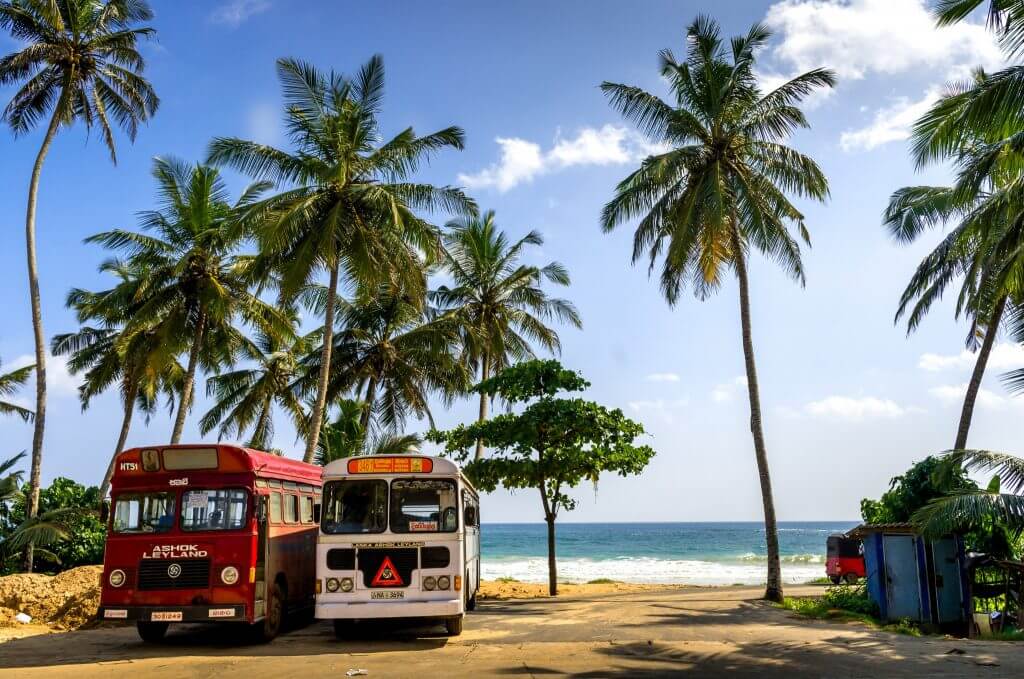
Public Buses
Although somewhat uncomfortable, Sri Lanka has an efficient bus network, and buses (and trains) are recommended for long distances. Ordinary buses can feel quite hectic to use. Private buses, while nicer, play loud music throughout the journey. Some routes are covered by more comfortable, air-conditioned Volvo services. If your journey takes more than 7 hours, board an overnight bus to save time and money spent on accommodation. Some Volvo and ordinary buses to outstations can be booked online via busbooking.lk and busseat.lk .
Trains cannot be booked online apart from a few online travel agents who charge twice the price or more. Except for long weekends and school holidays which fall on April, August, and December, you will always find a seat on long distance trains. Just turn up the same day of your journey at the station and buy your tickets! If you want to pre-book your seats, go to Colombo Fort Railway Station on the day you arrive and reserve your seats.

Tuk tuks are auto rickshaws. They are frequently used for shorter journeys (1km – 10km). In Colombo, most tuk tuks have meters. Make sure your tuk has a meter before you board it to avoid scams. Agree on the price before you start your journey in outstations. The current standard rate for 1 km is 60 LKR (40 American cents).
As someone who lives in Colombo, I’m grateful to have PickMe . PickMe is a local alternative to Uber and functions better than Uber in Sri Lanka (yes, Uber is available here. Get a discount off of your first ride using our coupon ). The great thing about PickMe is that they have tuk tuks in their platform. For journeys longer than 2 km, it always works out a lot cheaper than taking a random tuk tuk on the streets. PickMe is available as a downloadable App. They also have a very responsive Twitter profile, but unfortunately, PickMe is currently only available in Colombo, Negombo, Kandy, and Galle city limits.
Trails, Hiking, and Longer Treks
The entirety of Sri Lanka is green… for now. Sadly, much of the country is swiftly clear-cutting jungle tracts to build skyscrapers. Day hikes are quickly becoming popular amongst travelers, especially in mountain villages such as Ella and Haputale. Some of the most picture-worthy scenery requires a bit of trekking, and it’s advised to hire a guide. Railway treks are quite popular, especially in the upcountry. Just keep an eye out for the occasional train.
Swimming and Surfing
Mirissa and Weligama in the South Coast and Arugam Bay in the East Coast are some of the world-class surf points of Sri Lanka. If you dream of having a whole beach to yourself, hire a scooter (usually only around 10 USD per day) and drive along the south coast. You will discover secluded beaches with soft, powdery sand and blue waters entirely to yourself.
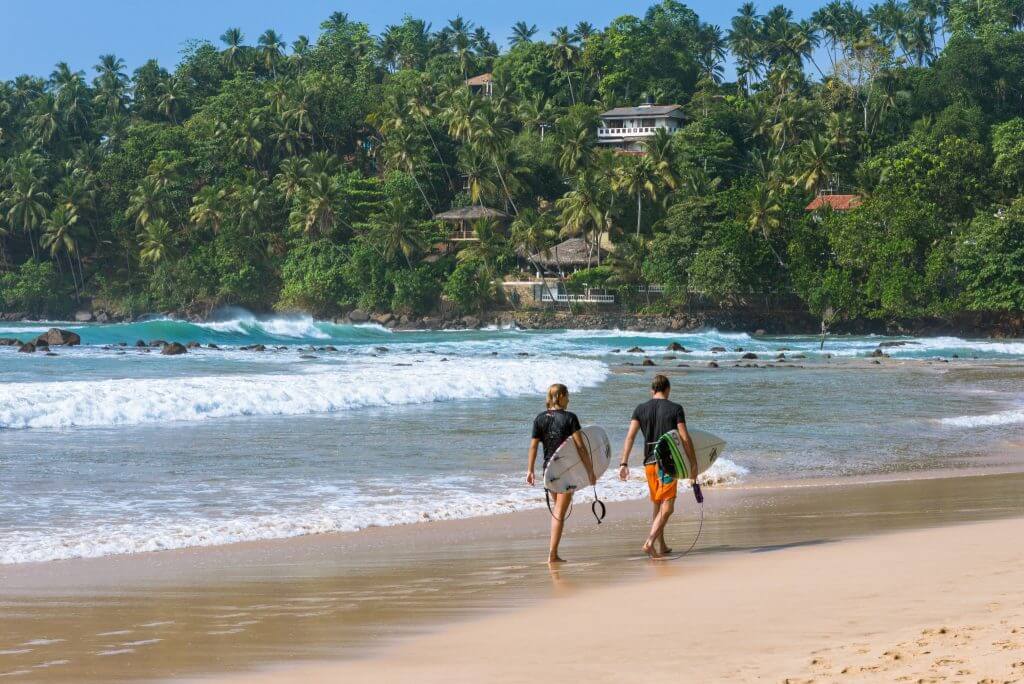
Kitesurfing
Did you know that Kalpitiya Peninsula and Mannar are some of the world’s top kitesurfing spots? The peak season runs between the summer months of May – October while December – March is the shoulder season. Head to hidden villages such as Kappalady in Kalpitiya Peninsula to avoid the crowds. On the other hand, Mannar rarely gets any visitors. It’s slowly opening up to tourism after the Civil War, which ended in 2009.
As mentioned earlier, safaris cost a few bucks, but the price is worth it in exchange for a fully immersive (and ethical) wildlife experience. The prices are usually for the whole jeep/vehicle, and if you are a couple or a single traveler, it might be wise to team up with fellow travelers to split costs. A jeep usually costs anywhere between 3000 – 4000 LKR ($19 – $25 USD) for a safari in a popular national park such as Kaudulla or Yala . Keep in mind that this is only the price for the vehicle. You have to buy separate tickets for each person at the entrance as well.
Alternatively, you can browse safaris with photos/reviews and book instantly online at Viator . This saves you the hassle of finding tours in person or making phone calls back and forth. Many of these tours include the entrance fees for the parks and pickup from your hotel/hostel, so read the fine print to be sure of what is included, as these tours can often be the best value.
Safari prices and entrance fees for major historical attractions in Sri Lanka can be a little expensive (40 – 70 USD) but beaches come at no cost. And they are mostly never labeled as “crowded.”
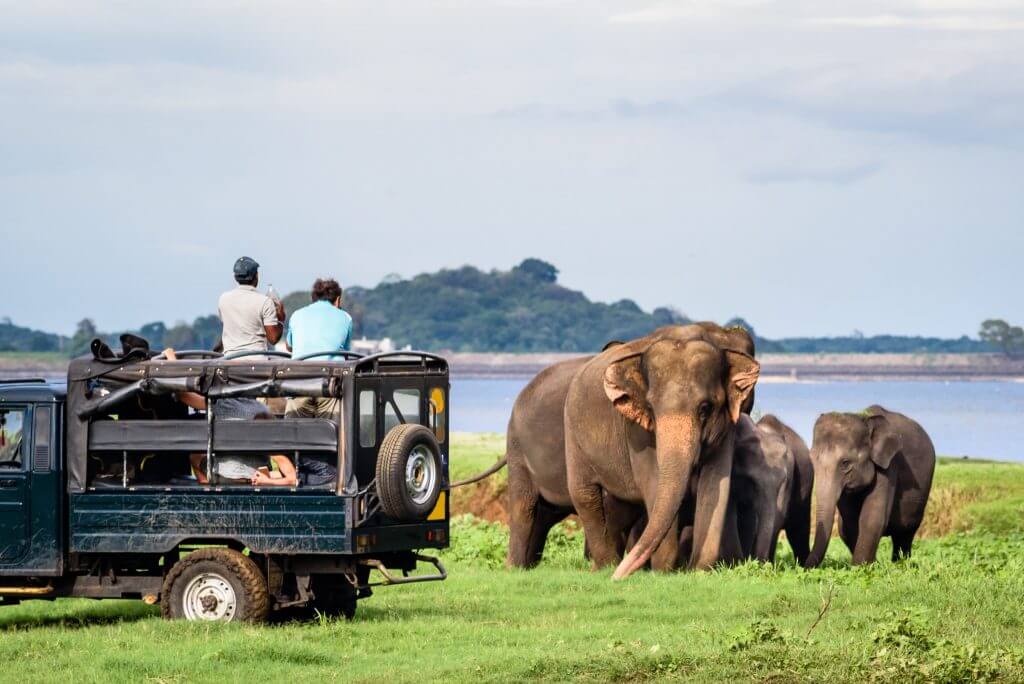
The Thrifty Gist
- Based on your style of travel, Sri Lanka can be either a cheap or an expensive destination. If you travel like a local, there’s a drastic reduction in the costs.
- Use HotelsCombined to compare prices of both hotels and hostels, and Airbnb for homestays. Search “entire month” in the date field of Skyscanner to find the cheapest time to fly.
- Use PickMe to book tuk tuks and taxis in Colombo, Negombo, Kandy, and Galle city limits.
- Trains can be booked only at the station. Unless you board the train on weekends and during school holidays, which fall on the months of April, August, and December, booking ahead is not needed. Turn up at the station and buy your tickets.
- The best local food is often found in local restaurants and homestays.
- Sri Lanka’s pristine beaches come at no price. Most hikes and treks cost nothing or just a small fee. Safaris and major tourist attractions can be a little expensive for budget travellers, but offer an unforgettable trip experience.
- Many safaris and tours can be booked online instantly with Viator . Check the fine print on each tour, as often transport and park fees are included, making a tour better value and less hassle than going yourself.
Travel Guide Sri Lanka
Book your individual trip , stress-free with local travel experts
- roughguides.com
- Travel guide
- Itineraries
- Local Experts
- Travel Advice
Accommodation
Plan your tailor-made trip with a local expert
Book securely with money-back guarantee
Travel stress-free with local assistance and 24/7 support
Nerida Lowndes
The direct communication with local expert while organizing the itinerary was easy to plan our trip to Sri Lanka. Always backed up with Rough Guides manage...
Sri Lanka, an island south of India crams an extraordinary variety of places to visit within its modest size. Lapped up by the Indian Ocean, the coastline is lined with idyllic – and often refreshingly undeveloped – beaches , while the mainland boasts a compelling variety of landscapes ranging from wildlife-rich lowland jungles to the misty highlands of the hills, swathed in tea plantations.
Sri Lanka travel facts
Where to go in sri lanka, best time to travel to sri lanka.
- How to get to Sri Lanka
Getting around Sri Lanka
10 best places in sri lanka, sri lanka travel itineraries, food and drink in sri lanka, drink in sri lanka, sri lankan buddhism.
You’ll find plenty of man-made attractions too when you visit Sri Lanka. It boasts more than two thousand years of recorded history, and the remarkable achievements of the early Sinhalese civilization can still be seen in the ruined cities and great religious monuments that litter the northern plains.
The glories of this early Buddhist civilization continue to provide a symbol of national pride, while Sri Lanka’s historic role as the world’s oldest stronghold of Theravada Buddhism lends it a unique cultural identity. But there’s more to Sri Lanka than just Buddhists. Its geographical position at one of the most important staging posts of Indian Ocean trade laid it open to a uniquely wide range of influences. Generations of Arab, Malay, Portuguese, Dutch and British settlers subtly transformed its culture, architecture and cuisine. Meanwhile the long-established Tamil population in the North have established a vibrant Hindu culture that owes more to India than to the Sinhalese south.
The tropical island has become more of a hot-spot to keen travellers in recent years, although tourism in Sri Lanka remains relatively low key. The country’s wonderful individuality – evident in its contrasting landscapes and its distinct culture, is helping to shape Sri Lanka as a top destination.
- Size and location : Lying a few degrees north of the Equator, Sri Lanka is slightly smaller than Ireland and a little larger than the US state of West Virginia.
- Currency : Sri Lankan Rupee (LKR).
- Politics : Sri Lanka achieved independence from Britain in 1948, and rejected its colonial name, Ceylon, in 1972. The country has had a functioning democracy since independence, and in 1960 elected the world’s first female prime minister.
- Religions : Sri Lanka’s population comprises different ethnic and religious groups. The two largest are the mainly Buddhist Sinhalese, and the predominantly Hindu Tamils; there are also many Christians and Muslims.
- Languages : Sinhala, Tamil and English are officially recognized languages.
- Health : Sri Lankans enjoy a healthy life expectancy of 77 years. But it also has one of the world’s highest suicide rates and one of the highest death rates from snakebite.
- Education : Sri Lanka has a literacy rate of almost 93 percent
- Exports : The country’s main exports are clothing and tea. Rubber, coconuts and precious gems are also important.
Sri Lanka has it all. Watch whales off palm-fringed beaches, track leopards in lush rainforests and hike through the hill country to verdant tea plantations. You can get an insight into the island’s culture by exploring Buddhist monuments, clambering over colonial forts and indulging in its intensely flavoured cuisine. With such a wealth of attractions, figuring out where to go in Sri Lanka can be quite a task, although its relatively small size means you can fit a lot into a single trip.

We’ve covered the length and breadth of the island to uncover the best places to go in Sri Lanka – from the popular to those off the beaten track.
West coast of Sri Lanka
All visits to Sri Lanka currently begin at the international airport just outside Colombo , the island’s capital and far and away its largest city. It’s a sprawling metropolis whose contrasting districts offer an absorbing introduction to Sri Lanka’s myriad cultures and multi-layered history.
Many visitors head straight for one of the west coast’s beaches, whose innumerable resort hotels still power the country’s tourist industry. Destinations include the package holiday resorts of Negombo and Beruwala , the more stylish Bentota , and the old hippy hangout of Hikkaduwa.
More unspoilt countryside can be found north of Colombo at the Kalpitiya peninsula and in the vast Wilpattu National Park nearby, home to leopards, elephants and sloth bears.
South coast of Sri Lanka
Beyond Hikkaduwa, the south coast is significantly less developed. Gateway to the region is the marvellous old Dutch city of Galle , Sri Lanka’s finest colonial town. Beyond lies a string of fine beaches. These include the ever-expanding village of Unawatuna and the quieter stretches of coast at Weligama , Mirissa and Tangalla, as well as the lively provincial capital of Matara , boasting further Dutch remains. East of here, Tissamaharama serves as a convenient base for the outstanding Yala and Bundala national parks, and for the fascinating temple town of Kataragama.
The hill country
Inland from Colombo rise the verdant highlands of the hill country , enveloped in the tea plantations (first introduced by the British) which still play a vital role in the island’s economy. The symbolic heart of the region is Kandy , Sri Lanka’s second city and the cultural capital of the Sinhalese. Its colourful traditions are embodied by the famous Temple of the Tooth and the magnificent Esala Perahera, Sri Lanka’s most colourful festival .
South of here, close to the highest point of the island, lies the old British town of Nuwara Eliya , centre of the country’s tea industry and a convenient base for visits to the spectacular Horton Plains National Park . A string of towns and villages – Ella , Haputale and Bandarawela – along the southern edge of the hill country offer an appealing mixture of magnificent views, wonderful walks and olde-worlde British colonial charm. Close to the hill country’s southwestern edge, the soaring summit of Adam’s Peak is another of the island’s major pilgrimage sites. The gem-mining centre of Ratnapura to the south serves as the best starting point for visits to the elephant-rich Uda Walawe National Park and the rare tropical rainforest of Sinharaja .

The Fort, Galle © Shutterstock
The Cultural Triangle
North of Kandy, the hill country tumbles down into the arid plains of the northern dry zone. This area, known as the Cultural Triangle , was the location of Sri Lanka’s first great civilization, and its extraordinary scatter of ruined palaces, temples and dagobas still give a compelling sense of this glorious past. Foremost amongst these are the fascinating ruined cities of Anuradhapura and Polonnaruwa , the marvellous cave temples of Dambulla , the hilltop shrines and dagobas of Mihintale and the extraordinary rock citadel of Sigiriya .
One of Sri Lanka’s most popular and interesting nature reserves, Minneriya National Park , also lies within the region and on the route for the hundreds of elephants that migrate between various parks each year.
The east and the north
Gateway to the east is the characterful, if war-torn, city of Trincomalee . The east’s huge swathe of pristine coastline itself remains almost completely undeveloped, save for the sleepy villages of Nilaveli and Uppuveli, just north of Trinco, and the surfing centre of Arugam Bay , at the east coast’s southern end. But the construction of a huge new resort at Passekudah is likely to change that.
If you’re looking where to visit in Sri Lanka that’s even less visited, the north is slowly emerging after years of civil war. Increasing numbers of visitors are making the long journey to the absorbing city of Jaffna , while a side-trip to remote Mannar, closer to India than Colombo, is another adventurous possibility.
National parks and reserves in Sri Lanka
Almost 15 percent of the island is made up of national parks and reserves. They cover diverse terrain, and harbour a wealth of wildlife, while many are situated in areas of outstanding beauty. Sri Lanka’s huge biodiversity is also putting the island on the map for eco-tourism with fantastic eco-lodges and hotels gradually appearing.
Yala – South of the island, bordering the Indian Ocean; home to a host of wildlife, including crocodiles, elephants and the highest density of leopards in the world.
- Horton Plains – Stunning scenery of grasslands and cloud forest at a height of over 2,000 metres in the central highlands. The cliffs at World’s End plunge dramatically to the lowlands below.
- Uda Walawe – Just south of Horton Plains; elephants are the main attraction (home to around 600). Other wildlife includes buffaloes, spotted and sambhur deer, crocodiles, macaque and langur monkeys.
- Bundala – Just south of Yala and a good alternative for escaping the crowds. Doesn’t have the range of wildlife as Yala, but a delight for birdwatchers. Also home to elephants, crocodiles, turtles and other fauna.
- Minneriya – An unusually wide range of wildlife considering its size. Elephants are the main attraction (highly visible at certain times of the year during migration between various parks – numbers peak in August and September when they come to drink from the reservoir). Other wildlife includes macaque and purple-faced langur monkeys, sloth bears and notoriously hard to spot leopards – only around 20 in all.
- Kaudulla – Also part of the migration route for elephants. The best time to visit is between August and December; numbers peak in September/October (around 200 gather to drink from the lake, the Kaudulla Tank).
- Wilpattu – The largest in Sri Lanka but closed for several years during the civil war. Poaching has reduced wildlife numbers, although the situation is gradually improving. More peaceful than the more famous parks, such as Yala. Once famous for its leopards and sloth bears, but harder to spot these days.
- Sinharaja Forest Reserve – UNESCO World Heritage-listed, a pocket of undisturbed tropical rainforest, home to a fantastic array of jungle wildlife.

Blue Magpie, Sinharaja National Park © Wright Out/Shutterstock
Discover more places in Sri Lanka

- The south Travel Guide
The weather in Sri Lanka
The climate is affected by two separate monsoons, meaning you can usually dodge the rain when you travel to Sri Lanka, as it will probably be dry somewhere on the island. The east is a mirror image of the west: when the southwest (“Yala”) monsoon hits the west and southwest, from April or May to September, the sun is shining in the east and northeast and vice versa. However, the northeast (“maha”) monsoon is generally lighter. In October and November, just before the maha monsoon, there is unsettled weather across the island. This means you might get caught in a downpour or thunderstorm wherever you are.
Bear in mind that there are variations in the general weather pattern, which means no two years are likely to be quite the same. But it’s a pretty safe bet that temperatures will be more or less constant. You can rely on an average temperature of 26–30˚(often higher) on the coast and the lowlands, dropping the higher up you go. So if you’re heading to Kandy , you can expect temperatures of 18˚–22˚, but only 14-16˚ in the hill country, such as Nuwara Eliya . And temperatures in the hills can drop to almost freezing at night, so make sure you pack extra layers.
Broadly speaking, in terms of the weather, the best time to visit the west and southwest of Sri Lanka, including the hill country, is December to March. If your itinerary is geared more towards the eastern side of the island, you’ll get the best conditions from around April or May to September.
Get more information on weather in Sri Lanka , including an average temperature and rainfall chart.
Festivals in Sri Lanka
When you visit Sri Lanka chances are there will be a festival in full swing or preparations for one will be underway. With four major religions coexisting on the island, each with its own calendar of festivals, as well as many public holidays, these events can be hard to avoid. You might be planning your itinerary to avoid the biggies, that seem to bring the island to a standstill, or you might want to be in the thick of it – to experience the real essence of Sri Lanka.
Here are just three of the big festivals that take place each year, which are also public holidays:
- Sinhalese and Tamil New Year – Very much a family festival, which marks the Lunar New Year (usually in April). Businesses are closed as the island enjoys festivities, games, and traditional foods.
- Vesak Poya – An important Buddhist festival in May celebrating the birth, enlightenment and death of Buddha. Homes hang colourful lanterns outside, and pandals (panels depicting scenes from the life of Buddha) are displayed all over Sri Lanka.
- Kandy Esala Poya Perahera – Sri Lanka’s most extravagant festival, celebrating the Buddha’s first sermon and the arrival of the Tooth Relic in Sri Lanka, lasting ten days. Kandy comes alive with colourful spectacular processions of elephants, drummers and dancers and acrobats. Dates vary according to the Lunar calendar, but usually late July or August.
Get the full calendar of festivals and public holidays in our Sri Lanka travel guide.

Leopard at Yala National Park © Marcin Mecnarowski/Shutterstock
Unless you arrive on a cruise ship, the only way to travel to Sri Lanka is to fly into Bandaranaike International Airport (BMI) at Katunayake, just north of Colombo . The best way to bag a good deal on the cost of a flight is to book as far ahead as possible, but fares tend to be pretty constant year-round.
Travelling to Sri Lanka from Europe
SriLankan airlines offers direct flights from the UK (London Heathrow); there are also indirect flights available travelling via the Gulf and India. Likewise, if you’re travelling to Sri Lanka from Ireland you can fly indirect from Dublin to Sri Lanka via cities in the Gulf – the other option is to make your way to Heathrow for a direct flight.
Travelling to Sri Lanka from the US, Canada, Australia and New Zealand
If flying to Sri Lanka from the US you’ll have to make at least one stop; if coming from the east coast there are several one-stop options from New York, Boston and Toronto via the Gulf. Routes from the west coast go via east or Southeast Asia, as well as via the Gulf.
If you are coming from Australia direct flights are only available from Melbourne, otherwise you’re looking at a one-stop option. You can also take a one-stop flight from New Zealand.
Travelling to Sri Lanka from Asia
Sri Lanka is well served by carriers operating from other countries in South and Southeast Asia. There are also direct connections to many places in the Gulf.
Get more in-depth information on flights to Sri Lanka .
Getting around Sri Lanka is, on the whole, much quicker and easier than is used to be – with the long-overdue upgrade on the Expressway and improvements on the railway.
That said, away from the motorways and main train lines the going can be slow and, if travelling by bus, rather uncomfortable.
Getting around by bus
As a rule of thumb, buses are generally faster than trains for travelling around Sri Lanka, and a cheap way to get around. It’s the main means of transport, getting into those hard to reach corners of the island, although it can be a bit of a rough ride, with drivers careering around corners and the older buses giving a bit of a bone shaking experience.
Getting around by train
Going by train is more relaxed and can be a great way to take in the landscape, especially on the intercity services on the hill-country route from Colombo to Kandy and Badulla. These have a special carriage, or observation car, with large panoramic windows offering 360-degree views.
Improvements have been made on the rail network across the island and intercity lines have comfortable air-conditioned carriages. But getting around the hill country is still painfully slow.
Getting around by plane
Domestic air services provide a superfast alternative to long journeys by road or rail and are memorable in their own right, with frequently beautiful views of the island from above.
Getting around by car
You can drive yourself, but it’s definitely not the most relaxing way to get around Sri Lanka.
Although roads are generally in reasonable condition, the myriad hazards they present – crowds of pedestrians, erratic cyclists, crazed bus drivers and suicidal dogs, to name just a few – plus the very idiosyncratic set of road rules followed by Sri Lankan drivers, makes driving a challenge in many parts of the island.
For the greatest flexibility and not a great expense you could hire a car with a driver. Bear in mind that many drivers work on commission from hotels, restaurants and the like, which means they may be quite insistent on taking you to places where they get a payoff. Going with a reputable company is best: they pay drivers a decent wage so that they’re not reliant on commission.
Getting around by rickshaw
Rickshaws are a convenient and fun way to travel short distances in Sri Lanka, although journeys can be rather hair raising, the way they dodge in and out of fast-moving traffic. Make sure you set a fare with the driver before you set off.
Read more on getting around Sri Lanka : in-depth information on flights, buses, cars and trains.

Sigiriya Rock © Ryszard Stelmachowicz/Shutterstock
This unique tract of undisturbed tropical rainforest is a botanical treasure trove of global significance, with UNESCO World Heritage Site status. Sinharaja is just how you imagine a jungle to be: intense humidity, the cacophonous sounds of animals and insects, dense foliage and huge trees.
Yala National Park is Sri Lanka’s most rewarding wildlife reserve, with marvellous scenery and abundant wildlife. You’ll most likely see elephants, and chances are you’ll catch sight of a leopard, as the park claims a higher concentration of these wild cats than anywhere in the world. Other animals with the wow factor include crocodiles and macaque and langur monkeys. For birdwatchers Yala is exceptional; if you visit from October to March you’ll see thousands of birds ending their migration from the north.
Mirissa ’s picturesque harbour is the jumping-off point for exhilarating boat trips to see one of Sri Lanka’s biggest attractions: blue whales. If you go on an excursion between December to April you’ll almost certainly see one of these magnificent creatures, and you may see both sperm whales and blue whales – as well as spinner dolphins.
The old Dutch quarter of Galle is Sri Lanka’s most perfectly preserved colonial townscape. Known as the fort, its time-warped streets are lined with historic Dutch colonial villas hidden behind formidable ramparts. Enjoy the laid back ambience by taking a stroll around the atmospheric streets and walls.
The east coast’s most appealing and easy-going beach hangout is Arugam Bay . Quirky cabanas, mangrove-fringed lagoons, and world class surfing are all on offer, and it’s a great jumping off point for excursions into the stunning surrounding countryside.
The spectacular rock outcrop of Sigiriya (“Lion Rock”) was the site of Sri Lanka’s most remarkable royal capital and palace, complete with ornate water gardens, paintings of celestial nymphs and 1300-year-old graffiti. Getting to the top of the Sigiriya Rock entails a pretty stiff climb and requires a decent head for heights in places.
Colombo ’s absorbing bazaar district is stuffed full of every conceivable type of merchandise with each street concentrating on particular goods, from colourful fabrics to jewellery, mobile phones to Ayurvedic herbs. Navigating the busy streets of the Pettah can only be done slowly, and the constant hubbub of crowds and vendors, and porters bustling their way through can feel like an overstimulation of the senses. But this is all part of the unique experience – there’s nowhere else in Sri Lanka quite like it.
The enchanting series of caves at Dambulla hold a treasure trove of Sinhalese Buddhist art, with shrines, superb murals and over a hundred Buddha statues. The caves are situated within the Cultural Triangle, making an ideal visit on the way to, or from, Sigiriya.
The ascent to the top of Adam’s Peak , one of the island’s most spectacular mountains, to see the Sacred Footprint is the classic Sri Lankan pilgrimage. Buddhists believe it is the footprint of Buddha, Hindus claim it is Shiva’s, while the Muslim version says it came from Adam. Make the journey at night for a chance to see spectacular views at dawn from the top. And if you go during the pilgrimage season between December and May, the route is illuminated and little tea shops are open through the night. The climb is a strenuous one, so some refreshment may just give you the energy to make it to the top.
Jaffna is unlike anywhere else in Sri Lanka. This lively town in the north offers insight into Sri Lankan Tamil culture and reveals much of its colonial and civil war past. Combine a visit with a trip to the islands off the tip of the Jaffna Peninsula. Kayts, Karaitivu, Nainativy and Delft include secluded beaches, colonial forts and remote Hindu temples.
Creating an itinerary for your visit to Sri Lanka will depend on what’s on your list for things to see and do. From relaxing beach holidays to activity-packed wildlife adventures, it’s possible to cover everything on your wishlist.
Tailor-made travel itineraries for Sri Lanka, created by local experts

12 days / from 2250 USD
Sri Lanka: Off the Beaten Track
The ideal itinerary for everyone planning to go on a Sri Lankan adventure. Hike historic temples, become part of a Sri Lankan village for a day, visit tea factories, and many more activities included before spending the last few days relaxing on the beach.

11 days / from 3400 USD
Affordable Luxury
Join us on a once-in-a-lifetime voyage exploring stunning sunny beaches; lush green mountains; unspoilt forest trails and breath-taking world heritage sites. This all-encompassing itinerary includes accommodation, private transportation and a variety of excursions and activities.

10 days / from 2520 USD
Discover Sri Lanka
There is so much to see and do in Sri Lanka! This 10-day trip will take you around some of the most exciting parts of the country; spot Elephants in their natural habitat, discover the Sigiriya Rock Fortress and learn more about the famous Ceylon Tea plantations.
Tailor-made trips for Sri Lanka
The Grand tour is ideal if you have two-three weeks to visit the main attractions, as well as some of the lesser-visited sights. Our Wildlife and nature itinerary covers some of the best natural attractions on the island. It can be squeezed into a week, although a fortnight would give you more time to explore and even give you time to visit some of the places listed in the Grand tour itinerary. The Buddhism and beaches itinerary leans away from the obvious crowd pleasers and combines religion with culture and wildlife.
Below is a suggested itinerary covering some of the best places in the south of the island – ideal for first-time travellers with just a week to ten days, to explore.
First time in the south
Days 1 - 3: Galle
All flights arrive at Colombo , the capital of Sri Lanka. We recommend you head straight to the UNESCO World Heritage Site of Galle . The wonderfully preserved colonial town reveals Dutch and Portuguese influences from the 18th century, and provides a good dose of culture to start your trip.
Days 3 - 5: Mirissa
Once you've wandered the markets and cafes in Galle, travel to picturesque Mirissa . You can easily spend two days swimming and relaxing on the beach. Whale-watching is a highlight and considered the best spot to see whales and dolphins in Sri Lanka.
Days 5 - 7: Talalla
Talalla’s unspoiled beach is popular with surfers. If waves aren’t your thing you could take part in yoga sessions – or simply notch up some more chill out time on its creamy-coloured sands.
Days 7 - 10: Yala National Park
Go on safari in Yala National Park . The guided jeep tours give your the chance to appreciate some of Sri Lanka's most beautiful wildlife, from magnificent elephants to the more elusive leopards.
Discover our other itineraries .

Golden Temple in Dambulla © Nuwan Liyanage/Shutterstock
From family-run guesthouses to budget hotels and luxury accommodation, boutique hotels in old colonial buildings and eco lodges, when you’re looking at where to stay in Sri Lanka, you should be able to find accommodation to suit your budget.
Prices in coastal areas tend to vary according to the seasons, especially along the west coast, (usually by between 25 and 50 percent) from November 1 through to mid- or late-April.
Get further information on accommodation : types of accommodation, room rates, how to find a room, best places to stay in Sri Lanka (eco-lodges and hotels).
Travel advice for Sri Lanka
From travel safety to visa requirements, discover the best tips for traveling to Sri Lanka
- Crime and personal safety tips Sri Lanka
- Culture and Etiquette in Sri Lanka
- Eating and drinking in Sri Lanka
- Getting around Sri Lanka: Transportation Tips
- Travel Health Sri Lanka
- Sports and Outdoor activities in Sri Lanka
- Travel Tips Sri Lanka for planning and on the go
- Best time to visit Sri Lanka
We’ve put together some tips and advice for travelling to Sri Lanka.
How safe is Sri Lanka?
Following the terrorist attacks in Sri Lanka in April 2019, governments of the UK, US and Australia have downgraded their travel warnings. Tourists are no longer being advised not to travel to Sri Lanka, although the British Foreign Office warns visitors to “remain vigilant”. Many other countries have also relaxed travel restrictions to Sri Lanka. Check your government’s advice before you travel.
Other issues of safety
Taking sensible precautions against theft is always a good idea, although it’s worth mentioning that petty theft in Sri Lanka is lower than in other Asian countries as well as most European and American cities, and muggings and violence against foreigners is rare. Simple measures to protect against theft include: using safes in hotels and guesthouses for your valuables; avoiding dark beaches at night (especially women travellers). Also keep a copy of important information, such as passports and insurance details.
The most common cause of accidental death in Sri Lanka is traffic related, followed by drowning. Currents can be seriously strong, water suddenly deep, and there are no lifeguards on the beaches. Always check local advice before going into the water.
Wildlife doesn’t usually pose a great threat. However, there are crocodiles in Sri Lanka, so keep away from areas crocodile inhabited waters, and if you are bitten by a snake, seek medical help immediately. Wear sturdy footwear, socks and long trousers if walking through heavy undergrowth.
Read more on safety in Sri Lanka : swimming safety, avoiding scammers and con artists, reporting a crime, travel advisories.
Entry requirements
Unless you’re from the Maldives or Singapore you’ll need a visa (ETA) to visit Sri Lanka. You can buy a visa valid for 30 days in advance online; a 90-day visa can be obtained by post or by visiting the nearest embassy/consulate. Your passport must be valid for six months after you arrive. Always check with your local embassy/consulate for the most up-to-date information regarding entry requirements before travel. Foreign embassies and consulates are virtually all based in Colombo.
Get more information on visa requirements in Sri Lanka.
Costs and money
Sri Lanka is not as cheap as some other countries in South and Southeast Asia, but if you go for budget options with accommodation and eating out, and use buses and trains, rather than hiring a car and driver, it can still be inexpensive. If you opt for luxury accommodation and a driver for your stay it’s possible to spend around $500 a day.
Worth noting:
- Various government taxes are sometimes added on to hotel and restaurant charges so best check beforehand what’s included.
- Tourist prices apply for admission to various attractions; for example, the entrance fee to a national park or site within the Cultural Triangle may cost you around $25, but for a local it costs around 25 cents or free entry respectively.
- It’s worth bargaining for everything – from a rickshaw ride to a room in a guesthouse, as prices aren’t usually fixed, but be courteous when haggling – a few rupees here and there will make a big difference to a local living on a handful of dollars a day.
- Tipping is a way of life in Sri Lanka.
Read more on costs and money : daily costs, bargaining, tipping etiquette, tourist prices, etc.
Hygiene standards in Sri Lanka are reasonable, medical care is decent and Sri Lanka was officially declared free of malaria by the World Health Organization (WHO) in 2016 (there’s no guarantee the disease won’t reappear, so check with WHO before travel. Nevertheless, it is a tropical country with the usual tropical diseases. Make sure you have travel insurance to cover against illness or injury (as well as theft and loss).
Simple health precautions to take include:
- Be up to date with the following vaccinations: diphtheria, tetanus, hepatitis A. Other jabs you might consider are tuberculosis, meningitis and typhoid.
- Avoid drinking tap water. Although chlorinated and generally safe, unfamiliar micro-organisms can lead to upset stomachs. Also avoid ice.
- Stick to hot food that has been freshly prepared; avoid salads (likely washed in tap water) and food that has been sitting out for some time.
- If you have diarrhoea chances are it’s food or drink related and will only last a few days. Stay hydrated and take oral rehydration tablets if the problem is severe. Get medical help if you have diarrhoea that persists longer than five days, if there is blood in your stools, or you have a fever – possible symptoms of giardiasis or amoebic dysentery.
- Try to avoid being bitten by mosquitos – they can carry diseases such as dengue fever and Japanese encephalitis.
- Wear light-coloured clothing that covers you and sleep under a net. Repellents in spray form, mosquito coils, as well as plug-in devices, are available.
If bitten by a snake get medical attention immediately. Wear proper shoes or boots, socks and long trousers if walking through heavy undergrowth.
Read more on health in Sri Lanka : information on vaccinations, health care in Sri Lanka, water and food, diarrhoea, dysentery and giardiasis, mosquitos and tropical diseases, marine hazards, hepatitis, rabies, other diseases, dangerous animals and insects.

Idi appa (string hoppers) with egg curry © bonchan/Shutterstock
Reflecting its geographical position, local traditions combined with a colonial imprint, as well as locally grown tropical fruit and fresh seafood, cuisine in Sri Lanka is a culinary delight. Nuanced flavours are a result of a wealth of spices, featuring in everything from curries to sambols and chutneys, while coconut, in myriad forms, appears in the majority of dishes.
Seven different foods to try in Sri Lanka:
- Rice and curry The staple food in Sri Lanka, akin to the curries of South India and South Asia. Often includes “Maldive fish” (a strong-flavoured pinch of sun-dried tuna). Meat or fish curry served with dahl is standard; various side dishes include curried pineapple, curries of sweet potato, garlic, and jackfruit. Pol sambol (coconut sambol ), is a common accompaniment – a combination of onion, chilli powder, Maldive fish and salt.
- kottu rotty A classic street food ubiquitous on the island. Essentially chopped rotty , (or roti), a fine, doughy pancake, stir-fried with vegetables, meat, or egg.
- Hopper ( appa ) Small, bowl-shaped pancakes (traditionally made from a batter containing coconut milk and palm toddy), with various ingredients in the middle, such as fried egg (egg hopper). Often eaten at breakfast with dahl or curry.
- String hopper ( idi appa ), nests of steamed rice vermicelli noodles, also usually eaten at breakfast with dahl or curry.
- Pittu A combination of flour and grated coconut, steamed in a cylindrical bamboo mould – resembling coarse couscous. Can be sweet (served with ghee and sugar), or savoury, such as with mutton curry.
- Lamprais Rice baked in a plantain leaf; accompaniments include chicken or a boiled egg, plus some veg and pickle.
- Vadai ( wadai ) A popular street food of spicy doughnut of deep-fried lentils. A familiar sound is the hawker’s cry of “ vadai-vadai-vadai !”, on trains and buses.
Read more on food in Sri Lanka including: where to eat, costs and tipping, specialities, seafood, desserts and sweets.
Water, soft drinks, tea and coffee
It’s best to avoid tap water. The usual soft drinks are available, such as Coca-Cola and the like; firm favourites are locally produced ginger beer and cream soda, and coconut water is widely available.
Coffee has always played second fiddle to tea, although most tea served in Sri Lanka is surprisingly bland, considering it’s the national drink.
Alcoholic drinks
Lager and arrack are the island’s staple forms of alcohol, Lion Lager being the most common brand. Arrack has a very high alcohol content and is produced by distilling toddy, a drink made by fermenting the sap from the flower of the coconut – sold informally in villages around the country.
Read more about drinking in Sri Lanka : soft drinks, alcoholic drinks, tea, coffee, buying drinks, where to drink.

Traditional stilt fishing near Galle © Jaromir Chalabala/Shutterstock
Although Sri Lanka has a history of fine craftsmanship you’ll find much of the arts and crafts on offer is just mass produced and shoddily made. However, there are exceptions, especially in Colombo, where you can find quality goods – from books to tea and clothing. The general rule of thumb is the more informal the retail outlet the more scope there is for haggling. So you’ll likely get a greater bargain with a hawker on the beach, than an established shop, although asking if there’s a “special price” might get you a better price. Note that buying coral or any other marine product is illegal (it contributes directly to the destruction of the island’s fragile ocean environment). Also, you’ll need a licence to export antiques (anything over fifty years old).Here are some of the traditional crafts and other items you’ll find in Sri Lanka.
- Painted masks Originally designed to be worn during kolam dances or exorcism ceremonies, and on sale wherever there are tourists. The centre of mask production is Ambalangoda – a number of large shops sell a wide range of designs, some of heirloom quality.
- Elephant carvings Ranging from small wooden creatures to the elegant stone carvings sold at places like Paradise Road in Colombo.
- Batiks Introduced by the Dutch from Indonesia; widespread in Sri Lanka.
- Gems and jewellery Uncut gems are available in the gem-mining centre of Ratnapura, but watch out for fakes. Gem and jewellery shops are widespread – the main concentrations are in Negombo, Galle and Colombo, including large chains, such as Zam Gems or Sifani. For silver and gold jewellery try Sea Street in Colombo’s Pettah District.
- Metalwork Long been produced in the Kandy area, although intricately embossed metal objects such as dishes, trays, candlesticks and other objects can be found throughout Sri Lanka.
- Leatherwork Good quality hats, boots, bags, etc.
- Lacquerware Speciality of the Matale region.
- Carrom boards A kind of hybrid of pool, marbles and draughts (checkers) played throughout Sri Lanka.
- Wooden models of tuktuks Most commonly found in Negombo, but also available in Colombo and elsewhere.
- Lace Galle is the centre of lacework
- Buddha figurines Wood or stone Buddha carvings of varying standards are common.
The best (and cheapest) place to buy tea is in a local supermarket; Cargills supermarkets have a good selection, including unblended single-estate teas. The specialist Mlesna tea shop chain has branches in Colombo, Kandy, Bandarawela and at the airport, although they concentrate on more touristy offerings including boxed tea sets, flavoured teas and the like.
Top image: Golden Buddha Statue. UNESCO World Heritage Centre in Sri Lanka © Lyubov Timofeyeva/Shutterstock
No animal is as closely identified with Sri Lanka as the elephant – and few other countries offer such a wide range of opportunities to see them both in captivity and in the wild. The kings of Anuradhapura used them to pound down the foundations of their city’s huge religious monuments, while the rulers of Kandy employed them to execute prisoners by trampling them to death. During the Dutch era they helped tow barges and move heavy artillery, and under the British they were set to clearing land for tea plantations – even today, trained elephants are used to move heavy objects in places inaccessible to machinery. Elephants also play an integral role in many of the island’s religious festivals, and remain revered creatures – killing an elephant was formerly a capital offence, while the death of the great Maligawa Tusker Raja in 1998 prompted the government to declare a national day of mourning.
Buddhism runs deep in Sri Lanka. The island was one of the first places to convert to the religion, in 247 BC, and has remained unswervingly faithful in the two thousand years since. As such, Sri Lanka is often claimed to be the world’s oldest Buddhist country, and Buddhism continues to permeate the practical life and spiritual beliefs of the majority of the island’s Sinhalese population.
Buddhist temples can be found everywhere, often decorated with superb shrines, statues and murals, while the sight of Sri Lanka’s orange-robed monks is one of the island’s enduring visual images. Buddhist places of pilgrimage – the Temple of the Tooth at Kandy, the revered “footprint” of the Buddha at Adam’s Peak, and the Sri Maha Bodhi at Anuradhapura – also play a vital role in sustaining the faith, while the national calendar is punctuated with religious holidays and festivals ranging from the monthly full-moon poya days through to more elaborate annual celebrations, often taking the form of enormous processions (peraheras), during which locals parade through the streets.
The Rough Guides to Sri Lanka and related travel guides
In-depth, easy-to-use travel guides filled with expert advice.

Find even more inspiration here

Planning your own trip? Prepare for your trip
Use Rough Guides' trusted partners for great rates
written by Rough Guides Editors
updated 26.04.2021
Ready to travel and discover Sri Lanka?
Get support from our local experts for stress-free planning & worry-free travels.
- Where to stay
- Travel advice
Whether you prefer to take in the acknowledged sites or explore off the beaten track, Sri Lanka has it all in abundance. Philip Briggs , author of Sri Lanka: the Bradt Guide
Sri Lanka is a fantastic all-round travel destination. Most people know about the sumptuous surf-lapped palm-lined beaches that line the island’s long tropical Indian Ocean coastline. But the small Asian country formerly known as Ceylon – extending over an area comparable to the Republic of Ireland – has so much more to offer curious travellers than a stock beach holiday.
There are the ancient Sinhalese capitals of Anuradhapura and Polonnaruwa, where handsome domed dagobas, the tallest of which were built in pre-Christian times on a scale to rival the Egyptian pyramids, tower over jungle-bound monastic ruins adorned with centuries-old Buddhist statues and engravings.
There are exquisitely painted cave temples at Dambulla and Budugehinna, towering stone Buddha engravings at Avukana and Buduruvagala, and magnificent boulder-top royal citadels at Sigiriya and Yapahuwa.
The pretty inland city of Kandy, the most recent of Sri Lanka’s dozen or so erstwhile royal capitals, is renowned for its Temple of the Tooth, which stands as a living symbol of the island’s 2,400 years of Buddhist history. Contemporaneous with Kandy, yet contrasting with it in almost every respect, is the port city of Galle, a former colonial trade entrepôt – possessed in turn by the Portuguese, the Dutch and the British – whose characterful old town is protected within the largest and best-preserved of the country’s time-warped European-built fortresses.
This impressive collection of cultural gems – many inscribed as UNESCO World Heritage Sites – contrasts with some lovely scenery and great wildlife viewing. The Hill Country running south from Kandy supports a cover of neat tea plantations interspersed with misty moorlands and dense rainforests teeming with plants and animals found nowhere else in the world.
An ever-growing network of national parks protects Asia’s densest elephant and leopard populations, and an abundance of peacocks (often seen performing their spectacular fan-tailed mating dance on the roadside), as well as sloth bears, wild boars and plentiful deer and monkeys.
Whether you prefer to take in the acknowledged sites or explore off the beaten track, whether your tastes veer towards beach holidays, wildlife viewing, cultural sightseeing or montane hikes, and whether your priority is upmarket luxury, mid-range value for money or affordability above all else, Sri Lanka has it all in abundance.
Food and drink in Sri Lanka
Restaurants.
Most restaurants in Sri Lanka slot into one of four broad categories. Most expensive, and largely confined to Colombo and to a lesser extent Galle, are genuine international restaurants that deal in specific cuisines, be it Japanese, French or Bavarian, and cater almost entirely to a clientele of business people, tourists and affluent locals.
Middling in price, with mains typically falling into the US$5–10 bracket, is a rather generic selection of ‘proper’ tourist-oriented restaurants that tend to offer predictable menus comprising a combination of grilled meat and seafood, pasta dishes, fried noodles and rice, possibly pizzas and/or burgers, and local dishes such as rice and curry or devilled chicken or fish. Also generally associated with larger towns and more touristy areas are deli-style places serving tea, coffee, juices, sandwiches, pastries, cake and the like.
Finally, every town, no matter how small, will boast at least one and usually several dozen little local holes-in-the-wall serving rice-and-curry buffets and other Sri Lankan staples for around US$1–2 per head. The Ministry of Agriculture funds extremely inexpensive eateries island-wide through a development programme for rural women, in which they learn traditional recipes and business skills, and can access loans for starting their own restaurants. Called Hela Bojun Hala in Sinhala-majority areas and Ammachchi in Tamil-majority areas, these outdoor food courts are clean, friendly and very popular, but won’t have much spoken English.
Local cuisine
Sri Lanka has a unique cuisine whose manifest South Indian roots are infused with various Malay, Portuguese, Dutch and Arab influences, and make far greater use of coconuts and seafood, as might be expected of a low-lying island with such a long tropical coastline. Sri Lankan dishes tend to be rather hot and spicy, but most tourist-oriented hotels and restaurants will modify their recipes to account for less fire-resistant Western palates. Chinese-style fried rice and noodles are a greasy staple on many local menus, while lighter snacks include fiery meat or vegetable samosas, and various deep-fried meat and vegetable cutlets. Fresh seafood is ubiquitous on the coast, and usually of a very high standard.
The staple diet is rice and curry, which differs from its Indian namesake-in-reverse in that a heap of rice is loaded on to a central plate, then surrounded by anything from five to 15 different curry dishes, each usually in a separate bowl. Another typical Sri Lankan dish is devilled meat, most often chicken or fish, which is smothered in chillies and served in a flame-red sweet-and- sour sauce with chopped leeks, tomatoes and other vegetables. It is usually cooked fresh, so can be as spicy or mild as you request, and served with rice.
Also known as appa, a hopper is a type of steamed or fried pancake made with a fermented rice-flour and coconut-milk batter. It is cooked in a bowl-shaped pan that causes the batter to pool at the bottom, so the sides are crispy and thin, while the base is thicker and softer. As with string hoppers, it is generally a breakfast dish, eaten with fish or chicken curry, though an intriguing variation incorporates an egg, fried sunny side up.
Locally produced mineral water costs around US$0.50 per 1.5-litre bottle. The usual selection of international fizzy drinks is equally inexpensive, as is soda water, a refreshing alternative to its sugary counterparts. Also very refreshing is thambili , the golden-hued native ‘king’ coconut you’ll see on sale at stalls around the country. The vendor will chop off the top of the coconut so you can drink the liquid from within. Freshly prepared fruit juices and smoothies are also widely available in cafés and restaurants, but you might want to ask to have it prepared with only a small amount of sugar, or none at all. Tea, as might be expected, is ubiquitous and generally of superb quality, and good coffee is served in smarter cafés, usually at a price.
Good locally brewed lager-style beer is widely available, with the main brands being Lion, Carlsberg, Anchor and Three Coins, all of which come in recreational standard (around 5% alcohol) and industrial strong (upwards of 8%) varieties. These are available in 500ml cans and recyclable 625ml bottles, and usually cost around US$1.50 in so-called wine or beer Shops (a few of which can be found clustered on the main road through most towns) but double or more in restaurants and hotels. Imported wine, often of mediocre quality, is widely available but quite pricey.
The main local tipple is arrack, a strong (30–50% alcohol) rum-like spirit made from distilled toddy (coconut palm sap) but often diluted with less pure spirits. Many brands are available, starting at around US$6 for a 750ml bottle, though purer varieties are a bit more expensive. Connoisseurs drink arrack neat or on the rocks, while others drown it with cola and other fizzy drinks.
Alcoholic drinks are generally served at mid-range and upmarket hotels and restaurants, but not at cheaper family-run guesthouses and eateries. The main reason for this is the high cost of liquor licences, a consideration that also tends to push up prices in licensed establishments. It is usually acceptable to bring your own beer or wine to an unlicensed restaurant, but you should ask first, as some smaller places – especially in Islamic areas – will be uncomfortable with the idea. Many restaurants that depend mainly on tourist custom may also have a cheaper beer and wine licence, keep beer discreetly available without including it on the menu, or will go out to buy a couple for diners who ask nicely.
Health and safety in Sri Lanka
Sri Lanka is home to several tropical diseases unfamiliar to those living in more temperate and sanitary climates. However, with adequate preparation, the chances of serious mishap are small, especially now that malaria has been eradicated. And in the unlikely event you are taken ill, decent hospitals and pharmacies exist in most large towns, consultation fees and laboratory tests are relatively inexpensive, and doctors and pharmacists almost invariably speak good English. Commonly required medicines such as broad-spectrum antibiotics, painkillers and antihistamines are widely available, but anybody who has specific needs relating to a less common medical condition should bring the necessary treatment with them.
Sensible preparation will go a long way to ensuring your trip goes smoothly. Particularly for first-time visitors to Asia, this includes a visit to a travel clinic to discuss vaccinations. A full list of current travel clinic websites worldwide is available on istm.org . For other journey preparation information, consult travelhealthpro.org.uk (UK) or wwwnc.cdc.gov/travel (USA). Information about various medications may be found on netdoctor.co.uk/travel . All advice found online should be used in conjunction with expert advice received prior to or during travel.
Immunisations
Make sure all your immunisations are up to date. A yellow fever certificate is not required unless you are coming from a yellow fever endemic zone. It is wise to be up to date with routine vaccinations and boosters as recommended in the UK. This would include measles, mumps and rubella (MMR) and diphtheria, tetanus and polio. Immunisation against hepatitis A, typhoid, hepatitis B, rabies, Japanese encephalitis and TB may also be recommended, depending on length of stay and the nature of the visit. For example, those who are staying with friends and family, or who are undertaking long trips or to areas of poor sanitation are likely to be recommended hepatitis A and typhoid.
The biggest health risk used to be malaria, but this is no longer the case. Indeed, in 2016 the World Health Organization finally declared Sri Lanka to be malaria-free after a 3½-year period when no locally transmitted cases were recorded. Hence there is no reason to take anti-malarial drugs, though you might want to confirm the situation before you travel, and should still take precautions against being bitten by mosquitoes, which also carry dengue fever and the like.
Theft is not as rampant in Sri Lanka as some might expect, and street or beach muggings are fairly rare. However, pickpockets sometimes operate on buses, especially when passengers are standing close to each other, while razor blades are occasionally used to slash holes in bags or to cut the strap. Overall, though, Sri Lanka is certainly safer than most countries in Asia, and crime is far less prevalent than in most Western countries. Still, while there’s no call to be paranoid about personal safety, you shouldn’t be too casual about your possessions, and action such as leaving your handbag open on a train seat or your wallet peeping out of your hip pocket might be viewed as inviting trouble, especially since the protracted financial crisis may result in increasingly desperate behaviour.
Single travellers should avoid dark alleys and beaches at night. When in doubt, it is usually safest to leave valuables sealed in the hotel safe or in the mini-safe in your room. If you do get robbed and intend to claim from your insurance company, make a report to the police and get a copy of the report from them as proof of your loss.
Female travellers
On the whole, women travelling alone have little to fear on a gender-specific level, and they will generally be treated with respect and kindness by protective locals. That said, single women travellers may be worn down by unwanted male attention, such as persistent staring, inappropriate comments and flirtatiousness, and even groping. Some of these issues are most noticeable on the south and west coasts where ‘beach boys’ are common, as well as on crowded buses, and even hotel staff may behave poorly. Local women are treated significantly worse, which leads to complaints not being taken seriously, and Asian travellers may find they attract an in-between level of harassment.
Wearing a wedding ring and telling anyone who wants to know that you have a husband at home or waiting for you in the next town may help deflect attention. And while dress codes are relaxed enough in Colombo and other recognised resort areas, elsewhere – especially in strongly Muslim areas – it pays to dress modestly, which means covering your knees and shoulders, and wearing loose tops and skirts or trousers.
LGBTQ+ travellers
Homosexuality is illegal in Sri Lanka, a law that has seldom been enforced in recent decades, but which reflects a widespread stigmatisation of local gays and lesbians. Still, while Sri Lanka isn’t a destination suited to single travellers in search of any kind of LGBTQ+ scene, homosexual couples are unlikely to encounter any problems with discrimination in hotels and other tourist institutions, provided they exercise some public discretion.
Travel and visas in Sri Lanka
Nationals of all countries except for the Maldives, Singapore and the Seychelles require an Electronic Travel Authorisation (ETA) to enter Sri Lanka, which amounts to the same thing as a visa. The ETA costs US$35 at the time of writing and can be applied and paid for by credit card at eta.gov.lk . Check the URL carefully, as scam ETA sites abound. The application must be made within 30 days of your intended date of arrival and usually takes up to one day to process, whereupon you’ll be emailed a letter that you can print out and show upon arrival at Bandaranaike International Airport to guarantee entry.
If you don’t have an ETA, you can buy a visa on arrival, but this means joining a tiresome queue at a special desk in the airport, and carries a small risk of being refused entry for some or other reason. Until recently, the online ETA application process was exclusively for tourist visits, but business travellers can evidently apply on the same website.
The immigration desk customarily stamps in visitors for 30 days. If you intend to stay longer, the conservative option would be to obtain a visa covering the full duration of your visit from a Sri Lankan embassy or high commission (to see a full list of consulates abroad, visit mfa.gov.lk and click on the ‘missions’ tab). Alternatively, you can extend your stay to 90 days at the Department of Immigration and Emigration in Colombo at any point within the original 30-day period.
US citizens may also obtain a reciprocal five-year multiple-entry tourist visa for US$135 (including the ETA), but confirm at your local consulate as this visa is only advertised by the Permanent Mission in New York City.
Getting there and away
Practically all international flights to Sri Lanka land at Bandaranaike International Airport , which stands in Katunayake some 30km north of central Colombo and 10km southeast of the popular resort town of Negombo. Bandaranaike is serviced by a good selection of international airlines offering non-stop and/or reasonably direct one-stop flights to most capital cities in Europe, Asia and the Middle East. These include the national carrier SriLankan Airlines , which operates direct services to London, Paris, Rome, Frankfurt, Moscow, Singapore, Bangkok, Hong Kong, Shanghai, Beijing, Canton, Kuala Lumpur, Tokyo, Karachi, Kuwait, Riyadh, Jeddah, Doha, Abu Dhabi, Muscat, Dubai, Malé and several cities in India.
Coming from Africa or the Americas, the flight of least resistance is generally a one-stop routing through the Middle East with Emirates, Qatar or Etihad. From Australia or New Zealand, the most convenient option is through Asian cities such as Tokyo or Singapore.
Major airlines that fly to Bandaranaike include: Aeroflot, Air India, British Airways, Cathay Pacific, Emirates, Etihad Airways, Fly Dubai, KLM, Malaysia Airlines, Qatar Airways, Singapore Airlines, Thai Airways and Turkish Airlines. For a full list of airlines and flights servicing Bandaranaike, visit airport.lk .
Getting around
Distances in Sri Lanka are relatively short and the limited but useful rail system is supplemented by a network of well-maintained surfaced roads connecting all major towns and most other points of interest. This means it is very easy to get around, whether you travel with a rented car and driver, or depend on public transport, which includes an inexpensive and all-but-comprehensive bus service and an equally affordable rail network. In addition, a plethora of reasonably priced three-wheeler tuktuks can be found almost everywhere for short urban hops or local excursions.
A limited network of domestic flights is available but seldom used by tourists, except to travel between Colombo and the far north- or east-coast resorts such as Trincomalee and Batticaloa. The main domestic carriers are SriLankan Airlines, Helitours , FitsAir and Cinnamon Air .
Established in the colonial era and vastly upgraded following the end of the civil war in 2009, Sri Lanka has a useful rail network comprising four main lines out of Colombo. These are the South Coast line running to Matara (and Beliatta, reaching Hambantota and Kataragama in the future) via Bentota, Hikkaduwa, Galle and Weligama, the Hill Country line running to Badulla via Kandy, Hatton and Ella, the East Coast line running to Trincomalee via Kurunegala, Maho and Gal Oya Junction as well as to Batticaloa via Kurunegala, Maho, Gal Oya Junction and Polonnaruwa, and the Northern line to Jaffna and Mannar via Kurunegala, Maho and Anuradhapura.
The road network is good and extensive, and the main highways are generally well maintained, although country lanes are bumpier. There are also two excellent multi-lane toll roads in the southwest: the 160km Southern Expressway connecting the southern Colombo suburb of Kottawa to Matara via Bentota and Galle, and the 35km Katunayake Expressway linking the northern Colombo suburb of Kelani to Bandaranaike International Airport. A third tollway (Central Expressway) connecting Colombo to Kandy is being constructed in three phases, with the first section between Kurunegala and Mirigama opened in early 2022; it is expected to be completed by 2024.
Also known as three-wheelers and ground-helicopters, motorised tuktuks are the most ubiquitous form of transport in Sri Lanka, swarming and weaving between larger vehicles in every town and village, and usually sitting waiting at any strategic junction countrywide.
In Colombo, most tuktuks are metered and the first kilometre incurs a charge of about Rs80, with subsequent kilometres at Rs60. Elsewhere, tuktuks are unmetered and rates are negotiable within the range set by local cartels, but you shouldn’t be paying more than around US$1 per 3–4km, though in some cases you might need to factor in waiting time, or the fare for the driver to return empty.
When to visit Sri Lanka
Sri Lanka can be visited at any time of year, provided that you tweak your itinerary to allow for regional seasonal variations that are unusually divergent for such a small country. Climatically, the popular west and south coast of Sri Lanka are at their best during the winter months (December–April), when the sea is calm and rainfall is relatively low.
By contrast, the less feted but increasingly popular east coast, from Trincomalee south to Arugam Bay, is driest and most agreeable to visit during the summer months (late April–September), while the little-visited north receives the bulk of its rain over the stormy months (October-December), leaving the rest of the year quite dry. Rainfall patterns are less of a consideration when it comes to visiting Kandy and the archaeological sites of the Cultural Triangle, but ideally you would want to avoid the wettest months of October to December.
The Hill Country around Nuwara Eliya and Ella has a more even monthly rainfall spread than the rest of the country, but the wettest months are again October and November, while the driest are January to March Sri Lanka has a near equatorial location and it mostly stands at altitudes of below 100m, which means that it tends to be hot and humid throughout the year, seldom dropping much below 25°C, even at night. Because it lies in the northern hemisphere, conditions are slightly cooler and more pleasant over the northern winter, especially from December to March. The only part of Sri Lanka to diverge significantly from this sweltering tropical climate is the temperate Hill Country around Nuwara Eliya and Ella, which stands at altitudes of over 1,000m and is almost always moderate by day and cool by night.
Public holidays and festivals
Sri Lanka has only five fixed-date public holidays but another 20 (or in some years 21) variable-date ones associated with the Buddhist, Hindu, Christian or Muslim calendars. These include 12 (or in some years 13) ‘poya’ days , the Sri Lankan equivalent of the full-moon Uposatha observed in other Buddhist countries, held at full moon every lunar month.
Sri Pada Pilgrimage Season
Tens of thousands of multi-denominational pilgrims climb the 2,243m-high Sri Pada (Adam’s Peak) to pay homage and make observance over a four-month season that runs from the Unduvap (December) Poya to the Bak (April) Poya. The Buddhapada at the summit reputedly enshrines the footprint of the Gautama Buddha. Hindus, Muslims and Christians make the pilgrimage for their own religious reasons.
Duruthu Perahera
A colourful religious pageant, complete with caparisoned elephants, torch-bearers and dancers, takes place at Kelaniya Temple, on the outskirts of Colombo, over the three days before the Duruthu (January) Poya to mark the start of the first of the Buddha’s three visits to Sri Lanka.
Galle Literary Festival
Sri Lanka’s premier arts festival used to be held for three days in mid-January, attracting dozens of writers and performers from all over Asia and the rest of the world. It hasn’t been held since 2019 owing to an organisational shift, but check the Facebook page for updates.
Tamil Thai Pongal
Thai Pongal is an ancient thanksgiving harvest festival celebrated by Tamils and other Hindus the world over. Houses are decorated with mango and plantain leaves and the hearth is decorated with rice flour. Dates vary slightly from one year to the next, but usually it takes place over four days starting between 12 and 15 January.
Navam Perahera
Focused on Gangaramaya Temple in Colombo, this spectacular perahera with parades of dancers, elephants, whip-crackers and hundreds of Buddhist monks was first staged in 1979 but is now a major fixture on the Colombo calendar, taking place over two days building up to the Navam (February) Poya.
Sinhalese and Tamil New Year
The island’s two main ethnic groups, Sinhalese and Tamil, celebrate a common traditional New Year at what was originally a harvest thanksgiving festival that marks the passage of the sun from Pisces to Aries. It occurs on 13 and 14 April. Games customary to the time and other rituals take place primarily in villages, and many people take the week off to go on holiday or visit their families, so trains and hotels will be crowded.
Vesak (May) Poya
This is a thrice-blessed day for Buddhists as it commemorates three important events in the life of the Gautama Buddha: his birth as Prince Siddhartha, his attainment of enlightenment and his death. The day is devoted to religious observances and charity, as well as being celebrated with illuminations, pageants and pandals (decorated and electrified hoardings). Celebrants set up wayside stalls to distribute food and refreshment to pilgrims and passers-by.
Poson (June) Poya
Second in importance only to the Vesak Poya, Poson commemorates the advent of Buddhism in Sri Lanka and is celebrated with religious observances in addition to illuminations and processions. Poson is particularly special at Mihintale, where the grounds fill with vendors and pilgrims.
Esala Perahera
Sri Lanka’s oldest and most spectacular Buddhist festival, held over ten nights in Kandy, honours the Buddha tooth relic preserved in the Sri Dalada Maligawa (Temple of the Tooth), as well as its four guardian deities: Natha, Vishnu, Kataragama and Pattini, each of which have their own temples. During the preliminary five days, the perahera is held within the precincts of each of these five temples. The public perahera then begins, taking place over five spectacular nights with men cracking whips leading the parade, followed by men bearing flags of the various provinces of the former Kandyan kingdom.
Though not an official holiday, Vel is Colombo’s main Hindu festival, with the ornately decorated Vel Chariot making its annual trip between ancient temples in the suburbs of Pettah, Wellawatta and Bambalapitiya. It takes place over July or August.
The festival of lights celebrated by all Hindus takes place in late October or early November and commemorates the return from exile of the heroic deity Rama.
The last poya of the rainy season, the November poya also marks the end of the Vassana Samaya, a period of retreat practised by Bhikkhu monks, who stay indoors to meditate for the duration. At many temples it is marked by the Katina Cheeva ceremony, a colourful procession during which the Katina Robe and other clothes intended for the monks are carried to the temple by beneficent locals.
Unduvap Poya
Also known as Sangamitta, the year’s final poya commemorates the arrival in Sri Lanka of the shoot of the sacred Bo Tree under which the Gautama Buddha attained enlightenment.
What to see and do in Sri Lanka
Adam’s peak.
A monumental granite prominence that rises in pyramidal isolation above the surrounding hills, Adam’s Peak is quantitatively only the fifth-highest summit in Sri Lanka, but few would question its status as the country’s most imposing natural feature. As suggested by its Sinhala name Sri Pada (Sacred Footprint), the 2,243m peak is also the island’s holiest summit, attracting hundreds of thousands of Buddhist pilgrims between the Unduvap (December) and Vesak (May) poyas, supplemented throughout the year by a relative trickle of fit and energetic tourists.
Climbing Adam’s Peak
In theory, four different trails lead to the summit, but only two are now in regular use: the popular modern Nallathanniya Trail and to a lesser extent the ancient and tougher Ratnapura Trail. Whichever route you use, and whatever time of year, a nocturnal ascent is recommended, with the aim of summiting shortly before sunrise. Walking shoes with a good tread, or better still hiking boots, are recommended, and older or less fit travellers might also find a walking stick useful.
The mountain’s windswept upper slopes can be surprisingly chilly at night, so bring plenty of warm clothing. And bear in mind that traipsing up and down 5,000-plus steps will put some strain on the leg muscles and knees of all but the fittest walkers, so plan on a couple of days’ rest after the climb.
Most popular today is the Nallathanniya Trail, which was pioneered in the 19th century following the creation of a road infrastructure around Hatton, and is now the choice of most local pilgrims and practically all tourists. Starting in Nallathanniya, this is the shortest route up Adam’s Peak at 7km, and it starts at a higher altitude than any of the alternatives, meaning the total altitude gain is slightly under 1,000m.
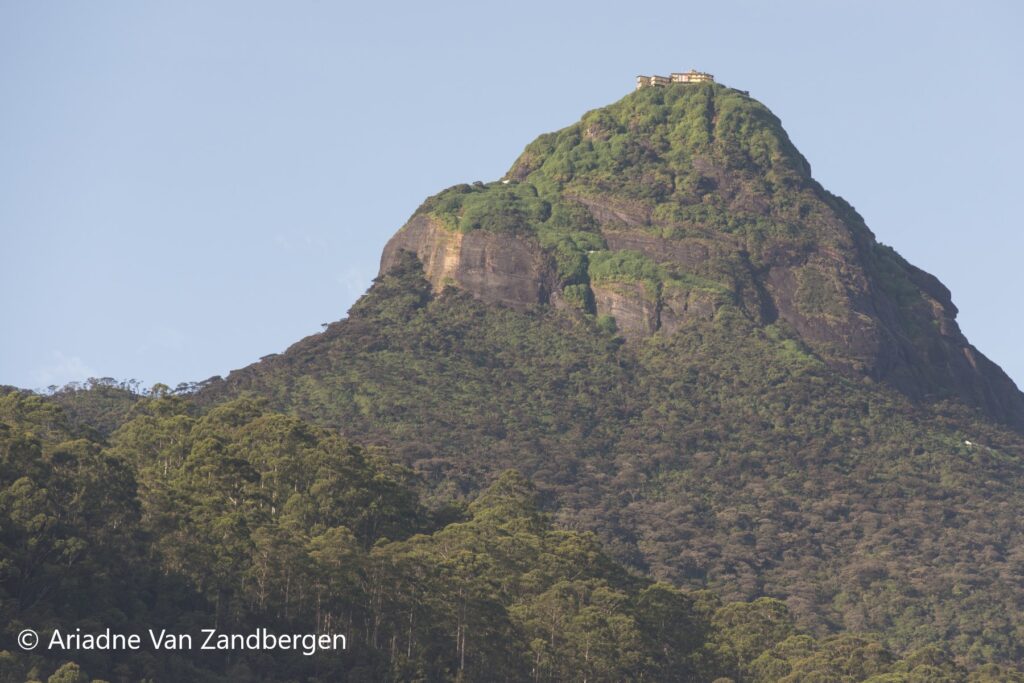
It is also the best-maintained route, paved almost in its entirety, and punctuated by police posts at 1.5–2km intervals, namely Gangulathanna, Rathu Ambalama and Idikatupana. The toughest part of the trail is the final 1km ascent from Idikatupana, which comprises an outrageously steep flight of rock steps, hemmed in by steel bars and known as the Mahagiri Damba (literally ‘Great Rock Climb’).
For those primarily interested in the cultural experience, the best time to climb Adam’s Peak is during the five-month pilgrimage season, which runs from the December poya to the May poya. The path of uneven steps is illuminated at night throughout the season so there is no need for a guide, and there are plenty of small food stalls and tea shops to refresh hungry and thirsty travellers. The downside of climbing in season is that progress tends to be slowed by the sheer volume of pedestrian traffic, which can get a bit claustrophobic, and means you need to allow at least 4 hours for the nocturnal ascent, setting off from Nallathanniya by 01.30– 02.00.
Unless you’ve an insatiable appetite for crowds, try to avoid climbing on poya nights or over weekends in late December or March and April, when the procession frequently slows from a dawdle to a standstill. Things tend to be quieter and more manageable in January and February, especially on non-poya and weekday nights. During those times, finishing in 2½–3 hours is more feasible, and there is still plenty of cultural activity to observe throughout.
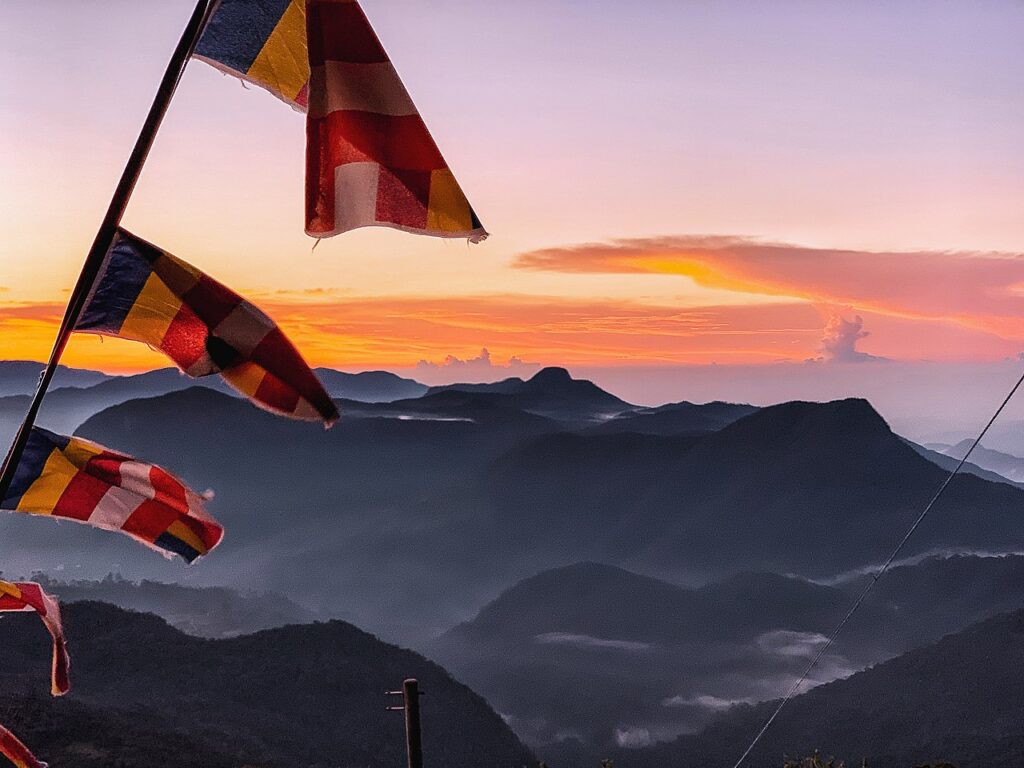
Prior to the 19th century, the main pilgrimage route up Adam’s Peak, traversing sections of stone stairs set in place more than a thousand years ago, was the Ratnapura Trail , which actually starts 20km from Ratnapura at the village of Sri Pagama (altitude 250m). Some pilgrims still use this most ancient route today, believing that, as the toughest ascent, climbing around 2,000m over the course of 11km, it is also the most spiritually meritorious.
It is also open to foreign travellers who want to follow in the footsteps of Marco Polo, Ibn Battuta and dozens of ancient Sinhala kings, at least during the pilgrimage season, when regular buses run from Ratnapura to the trail head at Sri Pagama, and the whole route is lit up at night. Be warned, however, that this is a genuinely demanding ascent that takes at least 8 hours, and as such it can be recommended only to hardcore hikers.
Sri Lanka’s top surfing destination and one of its most popular backpacker chill-out venues, the great curving coastline of Arugam Bay is fringed by a wide sweep of surf-kissed palm-lined white sand that runs south from Pottuvil Point. Yet despite its iconic status today, Arugam’s rise to prominence has been anything but smooth. The bay first attracted the attention of travellers in the 1970s, and while some of these pioneering visitors would ride out lazily on tyre tubes, they didn’t surf as such, but were attracted by the beach’s solitude and undiscovered feel.
By the early 1980s, the near-perfect waves of A-Bay – as it’s known to aficionados – were attracting more serious surfers, and the legend grew during the late 1980s and 1990s, when LTTE activity rendered the east coast unsafe for visitors. By the turn of the millennium, Arugam Bay had started to attract a steady trickle of adventurous surf enthusiasts, prompting a second wave of low-key tourist development, but this was curtailed by the tsunami, which flattened most of the beach resorts and claimed an untold number of lives.
Since then, tourist amenities have developed at quite an astonishing pace. Indeed, with its chilled atmosphere, tropical seaside setting, and plethora of backpacker-friendly mom-and-pop restaurants and lodges, A-Bay today feels like an embryonic Sri Lankan counterpart to Goa or Phuket.
What to see and do in Arugam Bay
Tourist activity in A-Bay is dominated by the beach, which stretches for 6km south from Pottuvil Point to Pasarichenai, interrupted only by the mouth of the Arugam Lagoon between the townships of Pottuvil and Ullae. Ironically, though, while this stretch of coast offers superb surfing, the water is generally too rough to be safe for swimming without a flotation device, the main exception being the sheltered shallow stretch of beach in front of Mambo’s (at the south end of Ullae), where local holidaymakers frequently congregate to take a dip.
Further afield, there are plenty of opportunities for day excursions. For wildlife lovers and birders, highlights are a boat trip on the Pottuvil Lagoon or jeep safari into Kumana or Lahugala-Kitulana National Park, while archaeological sites of note include Muhudu Maha Temple, set right on the bay, and the more remote ruined monasteries of Kudumbigala and Magul Maha.
Surfing and beaches
The top surfing spot at Arugam Bay is the southern headland between Mambo’s and the Upali Beach Resort. The best swell magnet of all the points in the region, this is where the long right-hand reef breaks to create waves in the 0.6–2m range, and – on a good day – a clean wall that barrels in the sections and gives the surfer a 400m ride right through to the inside. Close to this, between Mambo’s and the tourist police station, Baby Point is ideal for beginners, also a right-hand break but with waves seldom reaching more than 1m high, is ideal for beginners.
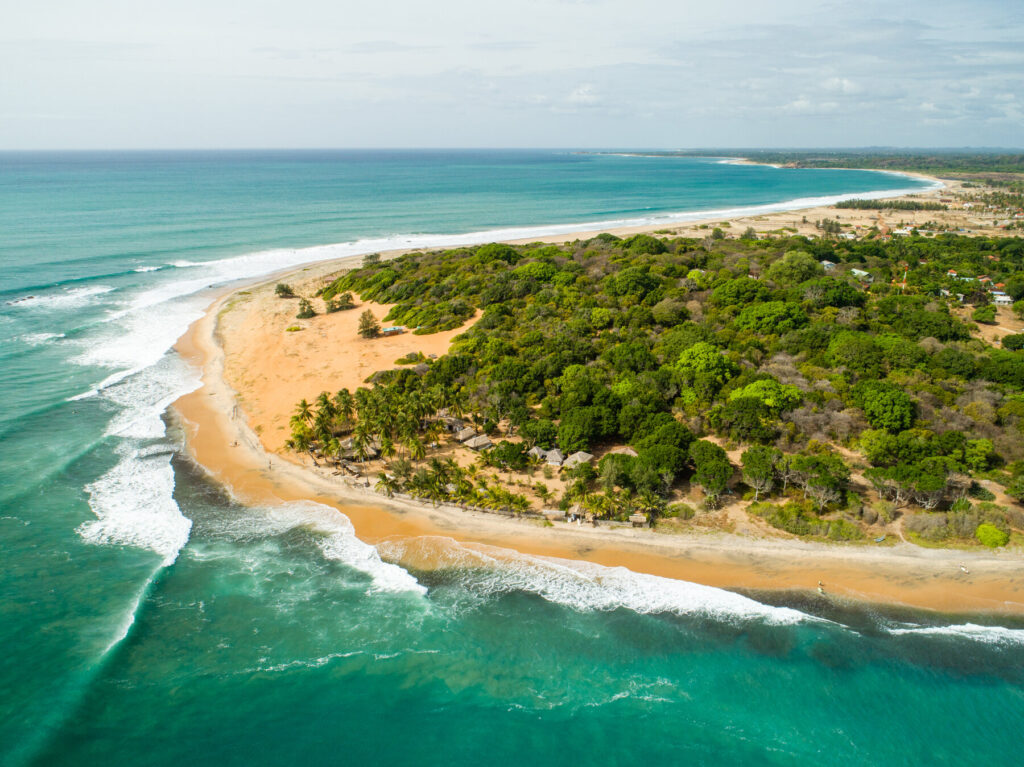
Other excellent surfing sites further afield include Pottuvil Point, whose right-hand break, best from August to November, is suited to more experienced surfers; and the more northerly Whiskey Point, which has good metre-high waves all year round. Several other good surfing spots line the coast south towards Kumana National Park. The scenic Elephant Rock beach 4km south of Ullae and Peanut Farm beach another 1.5km south of that are both good for beginner to intermediate surfers. Panama beach, close to the small town of the same name, typically has 1–1.5m-high waves suited to intermediate surfers, while Okanda beach, near the entrance to Kumana National Park, is a scenic and remote spot whose 2m waves should be attempted only by experienced surfers.
Muhudu Maha Temple
Predominantly Muslim since the early 17th century, Pottuvil is nevertheless the site of an active beachfront Buddhist temple founded by King Kavan Tissa in the 2nd century BC. Now greatly reduced in area, Muhudu Maha reputedly extended over more than 100ha in its ancient prime, and presumably many of the original buildings have been engulfed by the surrounding tall dunes. According to certain traditions, it was at Muhudu Maha rather than Kirinda that Princess Viharamahadevi came ashore and met her future husband Kavan Tissa.
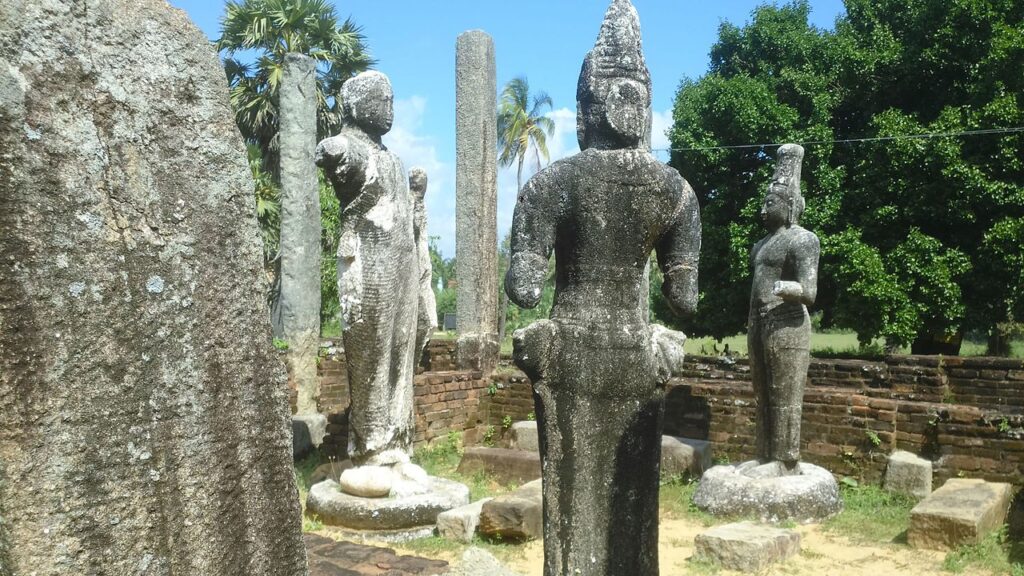
Today, the most obvious relict of the original monastery is an Anuradhapura-period image house complete with the original 3.5m-high rock-hewn pillars, and a badly damaged statue of the Buddha with two minutely hewn and well-preserved Bodhisattva figures looking back at it. The prominent white dome-top dagoba, by contrast, is a modern addition, unveiled by President Sirisena in 2015. The temple is 15 minutes’ walk and signposted from just north of the bridge over Arugam Lagoon; a tuktuk from Ullae should cost around US$1–2.
Pottuvil Lagoon
This mangrove-lined estuarine lagoon supports a rich marine birdlife, and it is also a good place to see large crocodiles, water monitors and more occasionally elephants. Two-hour return boat trips to the lagoon mouth are run by the Kottukal Lagoon Ecotourism Centre from an office and jetty on the northern outskirts of Pottuvil. The excursion can be done first thing in the morning, when the birdlife is most conspicuous, or in the late afternoon, when the odds of coming across an elephant are highest.
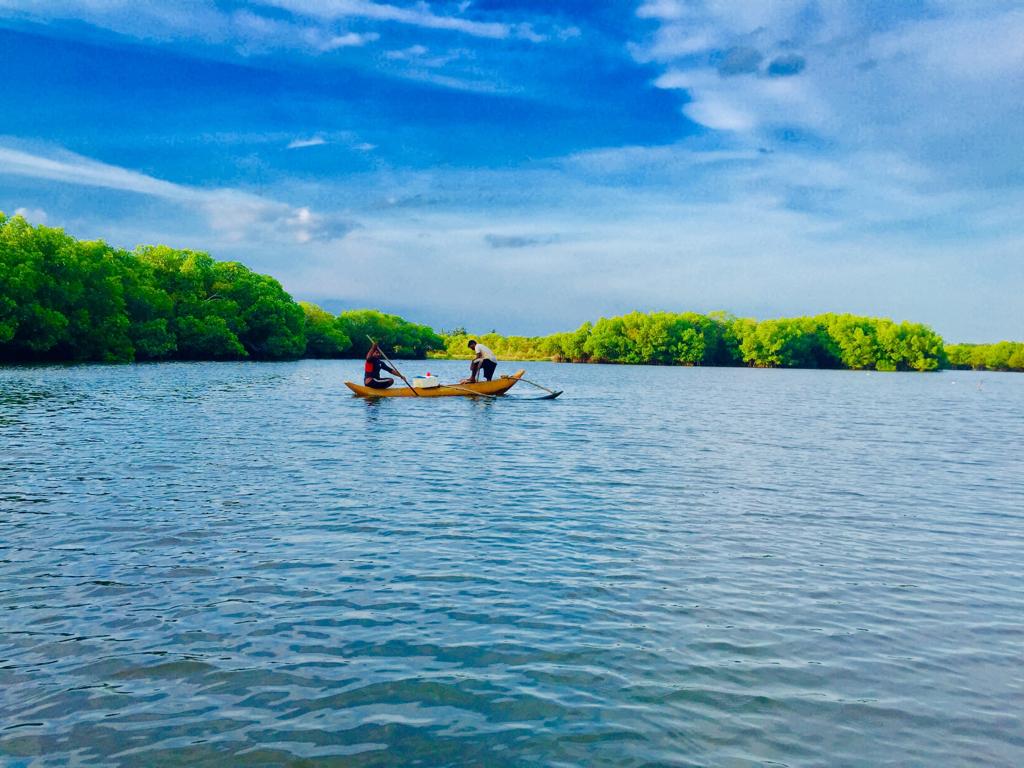
The boat trip costs US$13.50 per person, irrespective of group size, while a return tuktuk from Ullae should set you back around US$5–6. You might well get a better price by booking the whole excursion, inclusive of transport, though Ranga’s Beach Hut or Ecowave in Ullae.
Set on a fine natural harbour on the island’s west coast, Sri Lanka’s largest city and main commercial hub is the focal point of a metropolitan area that incorporates Sri Jayawardenepura Kotte (which replaced Colombo as official administrative capital in 1982) and whose population of five million represents about a quarter of the national total.
Colombo is an unusually safe, affordable and welcoming metropolis, with much to occupy travellers wanting to explore urban Sri Lanka on its own terms. The National Museum offers a fine introduction to the country’s main archaeological sites, while the engaging inner-city districts of Fort and Pettah are steeped in history, and a growing coterie of art galleries and boutique shops lend the city an appealingly cosmopolitan aura.
Elsewhere, multicultural Colombo hosts an astonishing urban variety: historical monuments and towering modern skyscrapers, colonial churches and ancient Buddhist temples, gleaming hotels and trendy restaurants, tree-lined boulevards and mysterious lanes, glittering casinos and state-of-the-art 3D cinemas, traditional produce markets and 21st-century shopping malls…it’s a fascinating place to explore at whim.
What to see and do in Colombo
Galle face green.
The largest green space (or, much of the time, brown space) in central Colombo, Galle Face Green – not, as might be supposed, named after the more southerly port of Galle, but a derivative of the Sinhalese word gal (rock) – is an obvious place to start or end any walking tour of the city. Measuring almost a kilometre from north to south, this elevated seafront promenade was initially laid out by the Dutch, who lined the ramparts above the rocky coastline with a battery of cannons to fend off Portuguese and other maritime attacks. During the British colonial period, Galle Face Green was much larger than it is today, sprawling inland to Lake Beira, and it served as a recreational ground complete with horse-racing track, golf course and other sporting fields.
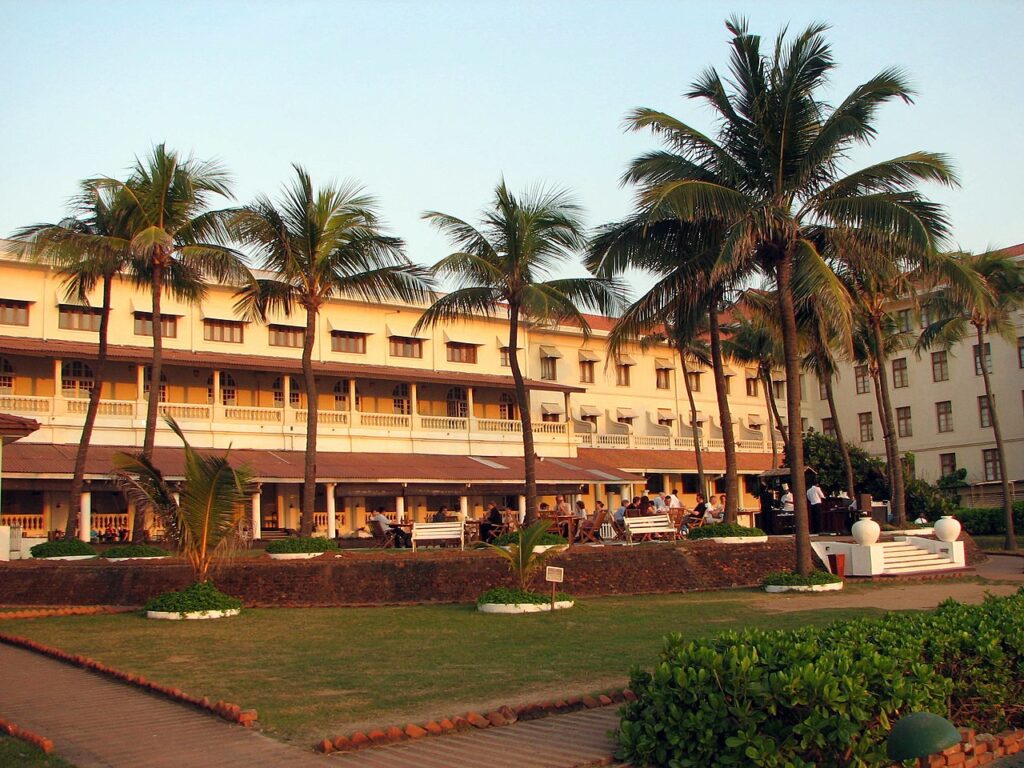
The green is prettiest and most atmospheric at dusk, being ideally located to catch the sun setting over the Indian Ocean while locals promenade companionably in the sea breeze, catch up on gossip, fly kites or knock around balls, or buy fresh snacks from night-time hawkers. Two of Colombo’s most imposing colonial relicts bookend the long narrow green: the Galle Face Hotel, the city’s oldest hostelry, built in 1864, and a fine place for a sundowner or snack; and the Old Parliament Building described below. In early 2022, Galle Face Green became the lively, unified ‘Gotagogama’ ( gama meaning village), where protestors against the financial mismanagement of President Gota Rajapaksa’s administration camped out.
Fort District
The most historic quarter of Colombo, Fort is traditionally regarded as the city’s CBD, and it remains an important banking and commercial centre, despite having been superseded in many respects by booming suburbs such as Kollupitiya and Cinnamon Gardens. The district’s titular fortifications, built by the Portuguese in 1510 and expanded by the Dutch after 1656, were later demolished, almost without trace, by the British colonists.
Old Parliament Building
Standing sentinel over the north end of Galle Face, the Old Parliament is the first building to the right as you cross from the Galle Road Bridge into Fort. An imposing forum-style neo-Baroque brownstone, it was constructed in 1930.
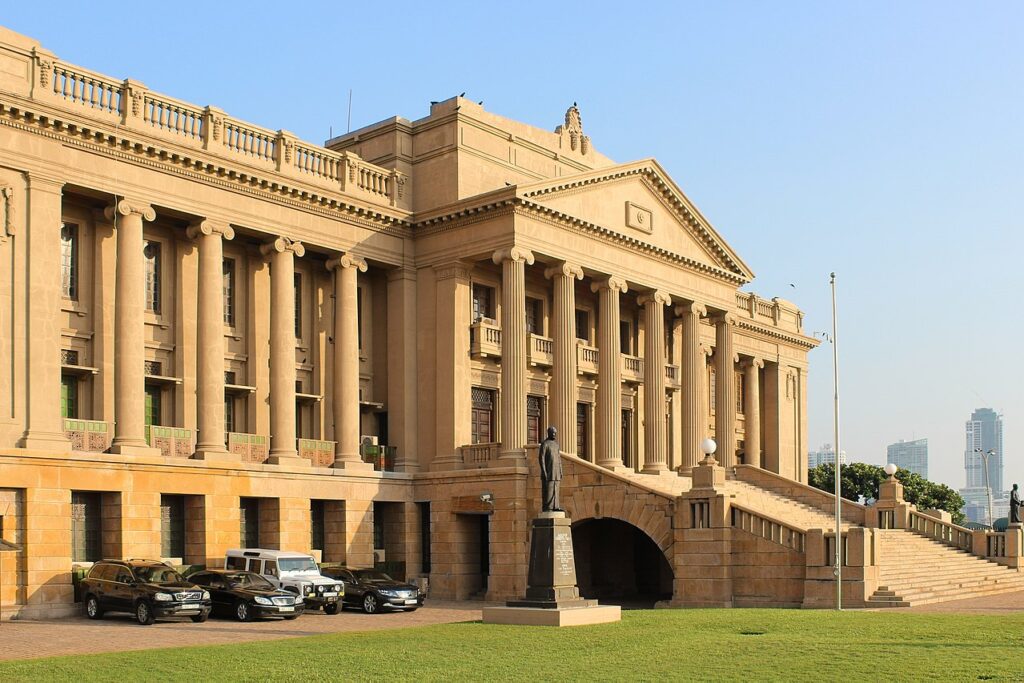
Today the building houses the Presidential Secretariat, while forming a sedate antidote to the glaring mirror-glass of the sky-scraping Bank of Ceylon headquarters behind. In its front gardens stand statues of several former Sri Lankan presidents and other leaders.
Old Dutch Hospital
Vying with the maritime museum as Fort’s oldest building, the Old Dutch Hospital is clearly recognisable from two watercolour paintings made in 1771, but it is most likely a century older than this. Almost certainly, this building is the ‘well-built hospital where sick Dutchmen are well-served by surgeons and slaves with medicine and plasters’, as recorded by German solider Christopher Schweitzer in 1681, and the same hospital where Paul Hermann – a VOC surgeon whose vast collection of dried plants and drawings earned him the sobriquet ‘Father of Ceylonese botany’ – worked in the 1670s.
It served as a hospital and apothecary throughout the British colonial era, but was converted to a police station in the early 1980s, and suffered heavy damage in 1996 when the Central Bank opposite was destroyed in a suicide bombing that killed at least 91 people and left more than a hundred bystanders blind.
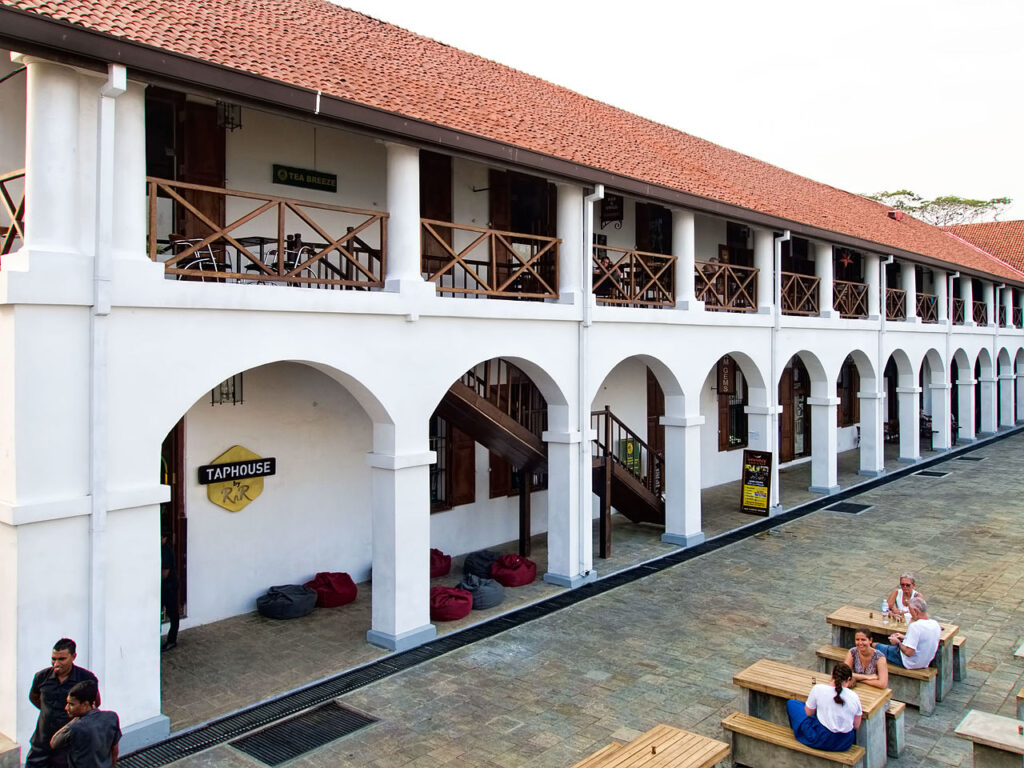
Following the end of the civil war, the timeworn building was restored under the supervision of the Department of Archaeology, to reopen as the Dutch Hospital Shopping Precinct in 2011. Now one of the main tourist draws in Colombo, it contains several restaurants and souvenir shops, but it is also of interest as a fine example of functional Dutch colonial architecture, comprising two sets of former wards and barracks, with 50cm-thick walls and red-tiled roofs supported by massive teak beams, whose wide verandas enclose a pair of large courtyards.
World Trade Center
Dominating the skies above the courtyard of the Old Dutch Hospital, Colombo’s own World Trade Centre (WTC) is the city’s tallest building, comprising identical east and west 40-storey towers that stand 152m tall. It was inaugurated by President Chandrika Kumaratunga on 12 October 1997, and only three days later formed the target of an LTTE bombing that left the skyscrapers unscathed, but killed 15 people and wounded more than a hundred. The twin towers, which do not have an observation deck for tourists to visit, is surpassed in altitude only by the Lotus Tower, which overlooks Lake Beira and stands 305m tall.
Presidential Palace
This magnificent two-storey residence was built in 1790 by Johan van Angelbeek, the last Dutch governor of Ceylon, on the site of a freshly demolished 16th-century Portuguese church. Van Angelbeek’s granddaughter sold it to the British colonial administration in 1804, since when it has served as the residence of 29 British governors and six presidents.
Known as King’s or Queen’s House during the colonial era, it is hidden behind a wealth of trees and heavily guarded, but you can catch a glimpse of the grand façade through the foliage. In front of the palace stands a statue of Sir Edward Barnes (the governor responsible for much of island’s development between 1820 and 1831), from which all distances ex-Colombo are measured.
Cargills Building
One of Fort’s most iconic landmarks, Cargills is a two-storey department store whose striking red-and-white puce stone exterior incorporates plaster horns-of-plenty bursting with bounty, and a shady multi-arched ground-floor walkway and balustrade typical of Colombo’s older buildings. The property was acquired by Cargills – Colombo’s oldest store – in 1888, and the present-day building was constructed over 1902–06.
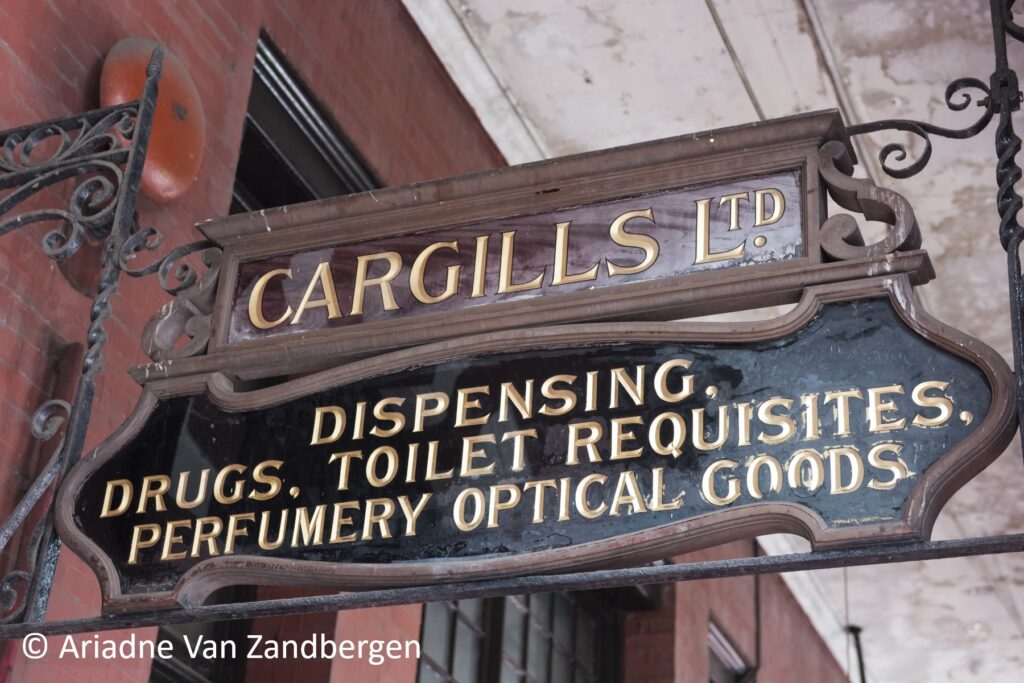
It stands on the site of a one-storey house that quite possibly started life as the first Dutch governor’s residence in Colombo (the foundation stone is dated 1684) and that was occupied by Frederick North, the first British governor of Ceylon, 1798. It is unclear to what extent elements of these older structures were incorporated into the present-day building. The interior is just as impressive as the façade, with its dark wooden floors, tall ceilings and ornate arches , and it houses what must surely be the world’s only colonial-style KFC outlet!
Pettah District
Situated immediately east of Fort and separated from it by a 50m wide channel, Pettah started life during the Dutch and early British periods as a select residential area, but it later came to be regarded as the ‘native quarter’. The name Pettah is often said to derive from pettai , a Tamil word used loosely to describe a colony or place, but a more likely etymology is the Sinhala word pitiya (village) or phrase pita kotuwa (‘outside the fort’).
Today, Pettah is Colombo’s haunt of the streetwise, a hectic and sprawling inner-city open-air bazaar where everything you ever wanted, and many things you never will, can be found in a motley assortment of hardware shops, garment stores and grocery stalls, all stacked high with goods that flow over on to the pavement. Reminiscent of parts of Cairo or Mumbai, the narrow streets (or, if you prefer, wide alleys) of Pettah are jammed with bargain hunters, herds of trucks, cars and bullock carts, explosive klaxons of tuktuks, and porters barking instructions to move out of their way.
Jami Ul-Alfar Mosque
Built in 1908 as a place of worship for Tamil immigrants, the striking Jami Ul-Alfar is also known prosaically as Samman Kottu Palli (Mosque for Indian Muslims) and more descriptively as Rathu Palliya (Red Mosque), owing to the giddying assortment of red-and-white stripes, chequers, jags and spirals that enliven the exterior.
A tall and ornate building, it has the slightly surreal appearance of a fairy-tale candy castle, with a façade of barbershop-pole columns supporting boldly patterned arches and windows, all topped by a trio of plump minarets whose shape was inspired by the pomegranate fruit.
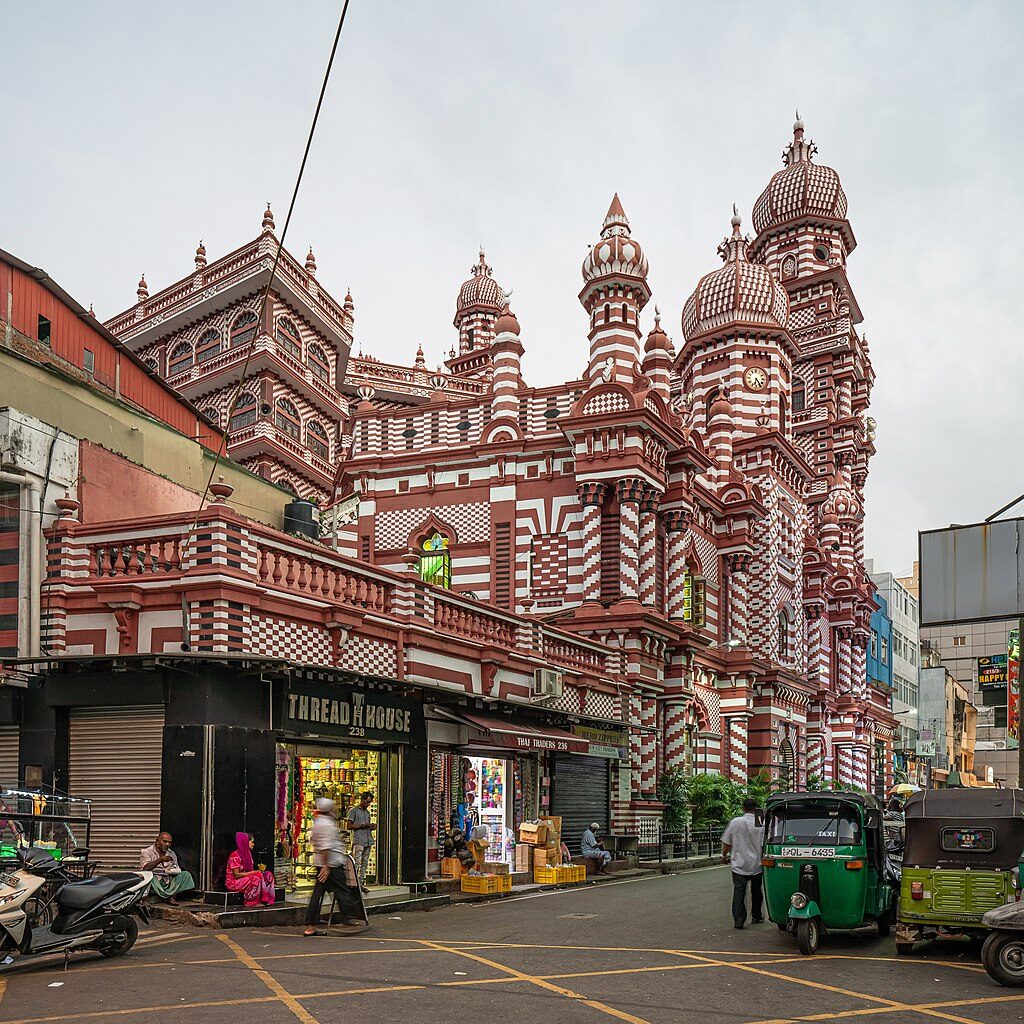
Outside of prayer times, respectfully dressed non-Muslim visitors are usually allowed inside, but women may have more difficulty gaining access. Foreigners have been barred from entering since the beginning of the pandemic, so tourists may want to contact for updates.
St Lucia’s Cathedral
Located at Kotahena about 1km northeast of Pettah, St Lucia’s Cathedral, seat of the Archbishop of Colombo, is the city’s largest Christian shrine, with a capacity of 6,000. Its origins can be traced to 1760, when Catholic Fathers belonging to the apostolic Congregation of the Oratory of Saint Philip Neri built a rudimentary palm-roof church on the site. This was superseded by a modest brick-and-mortar church constructed in 1782 and elevated to cathedral status in 1838.
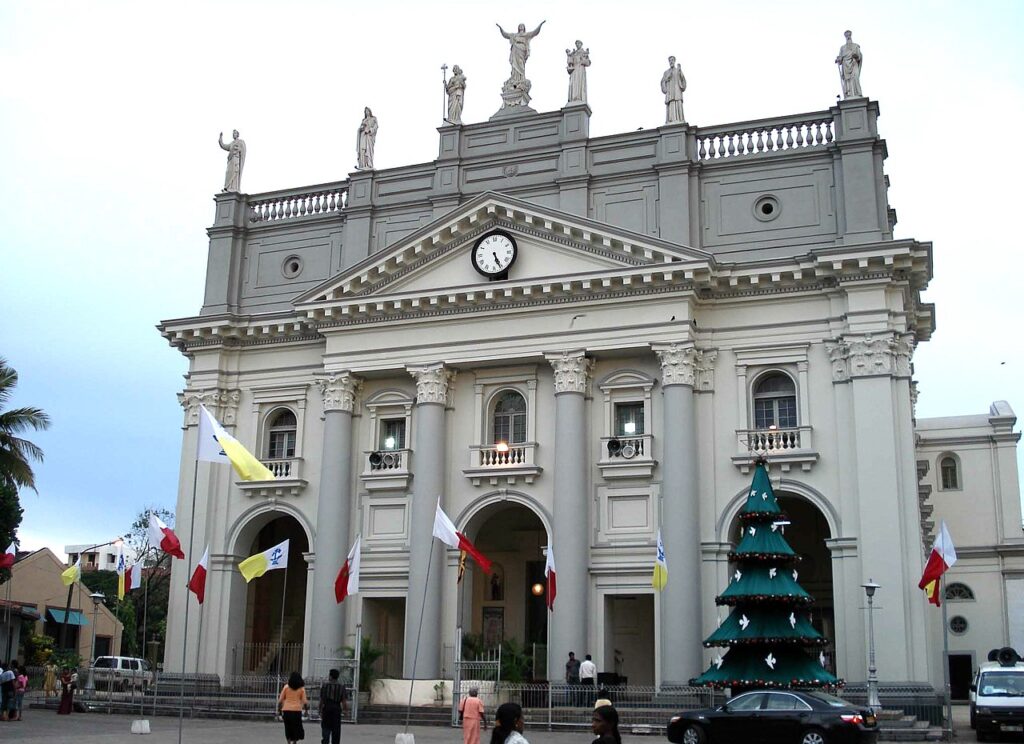
The present-day church, a Gothic replica of St Peter’s Basilica in the Vatican, with a massive silver dome crowned by the cross and colonnaded façade topped with seven statues of Biblical figures, was built over 1872–81 and received a papal visit in 1995. The interior contains many beautiful stained-glass windows and statues, notably Our Lady of Kotahena, a unique dark-skinned Madonna-and-child paraded during the annual procession through Kotahena held every May.
Cinnamon Gardens
Cinnamon Gardens (also known as Colombo 07) is the city’s most prestigious suburb, a leafy residential area where private colonial-era mansions and villas rub shoulders with – or peer across hedges towards – boutique hotels, art galleries, foreign embassies and lofty edifices of officialdom such as the Town Hall, National Museum and Independence Memorial.
The name Cinnamon Gardens dates to 1789, when the city bailiff Cornelis de Cock planted a 94ha tract of land, roughly corresponding to the modern suburb, with the cinnamon trees whose aromatic bark was the island’s most important export crop.
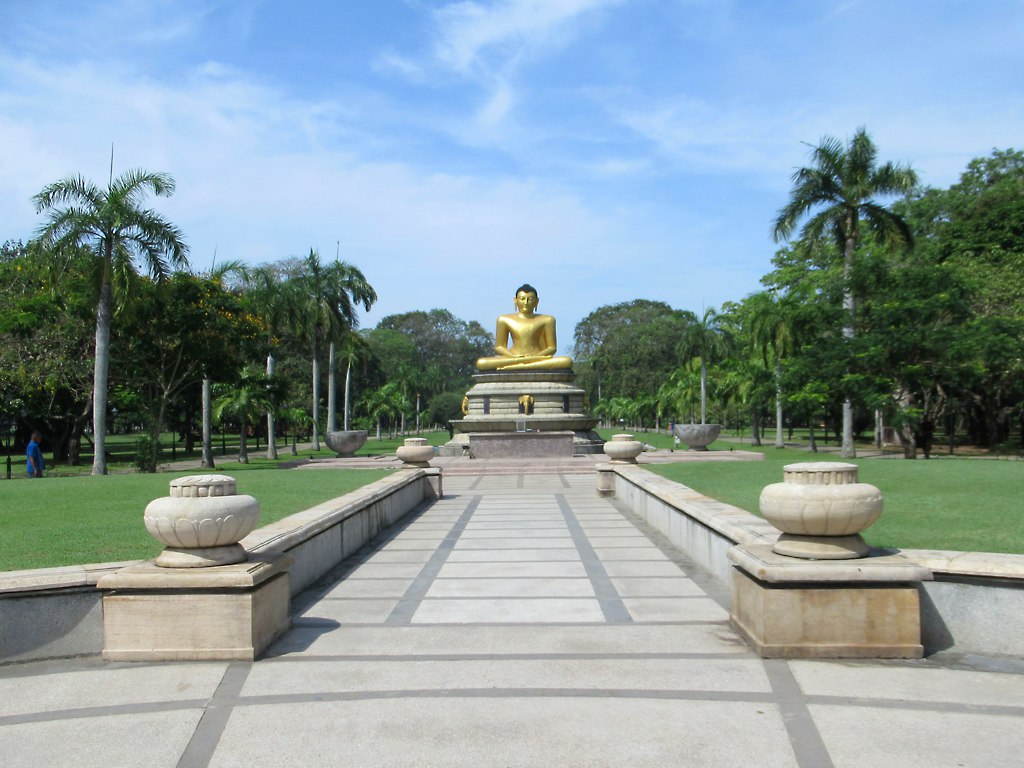
The gardens were tended carefully under Frederick North, the first British governor of Ceylon, dome and clock tower that stand more than 50m high, and a large open front lawn that runs southwest to Viharamahadevi Park. The hall doubles as the headquarters of the Colombo Municipal Council and mayoral office.
Colombo National Museum
Sri Lanka’s premier museum houses a collection of 100,000 artefacts reflecting various aspects of the island’s architecture, history and culture from prehistoric times to the Kandyan era. It was established by Governor Gregory in 1877 with just 800 exhibits, but rapidly expanded to fill up a purpose-built palatial Neoclassical building set in large grounds bounded to the north by Viharamahadevi Park.
The museum also houses the most important library on the island, and its green gardens incorporate a rather stuffy natural history museum (entrance included in National Museum ticket), the National Art Gallery, and a statue of Queen Victoria erected to commemorate her diamond jubilee in 1897.
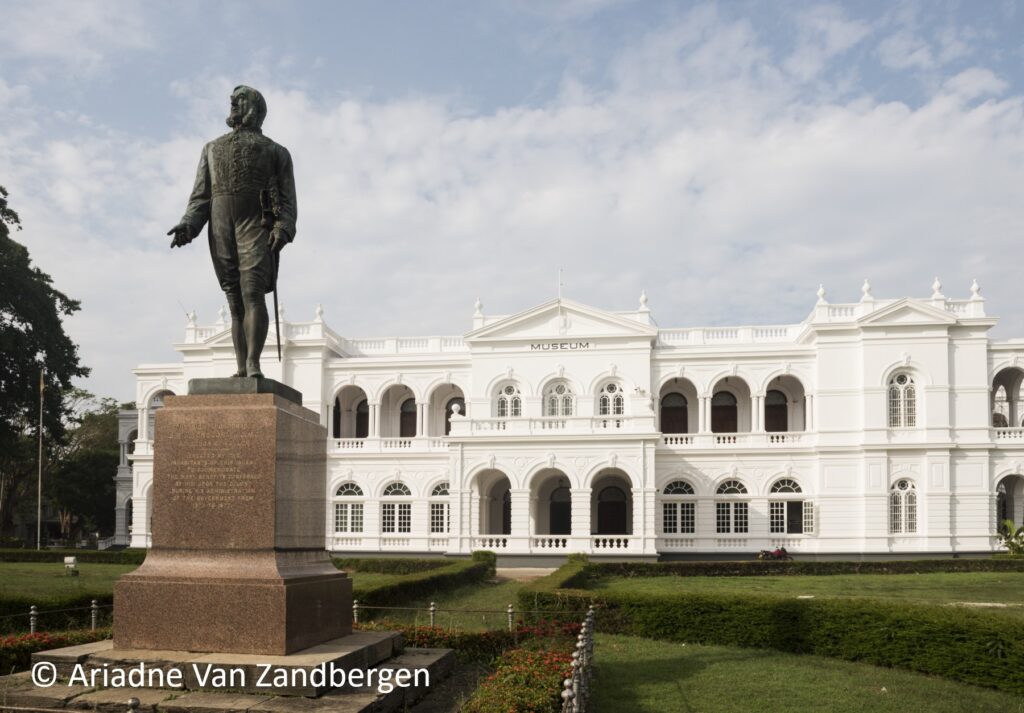
The museum is split across two floors and contains 16 galleries, several of which were recently refurbished. The museum is entered through a grand lobby dominated by one of its most celebrated treasures: the 8th-century Toluvila Buddha, a masterfully serene 1.75m-tall crystalline-limestone statue unearthed during excavations at Anuradhapura in 1900.
Most of the other ground-floor galleries focus on a specific archaeological subject, for instance cast Hindu and Buddhist bronzes, granite statues, exotic and local ceramic items, and Brahmi, Sinhalese, Portuguese and Dutch rock inscriptions spanning a period of more than 2,000 years.
The history of Galle is spun around the sombre grey walls of its historic fort. These brooding hulks of stone – shipped to Sri Lanka as ballast and hauled into place by slaves from Africa – dominate this coastal city, looming gaunt against the blue sky to guard the harbour and wall off a small peninsula less than 10 minutes’ walk from the modern railway and bus stations.
For four centuries the fort has stood here; the thin end of the wedge driven by European invaders to open up their conquest of the island. Generations of Portuguese, Dutch and British traders – following the sea lanes of Arab merchants – lived and died in the fort. The Dutch forbade their pilots ever to leave its walls in retirement, in case they divulged the secrets of the maritime approaches to enemies.
Even today, when the battlements are brightly lit at night, there hovers a sense of foreboding, as though ghosts of soldiers past are waiting only for the light to dim so they may march again along its ramparts. As dusk gathers, its narrowed streets and cloistered inner courtyards of shuttered mansions echo softly with the murmurings of bygone evenings. The fort is steeped in history; you will sense it from afar and feel its spell from the moment you pass through its gates.
Within the fort’s 36ha confines, a grid of narrow roads is lined with Dutch and British colonial houses adapted to tropical living with colonnaded verandas and ornate gables. There are 473 houses in total, all catalogued by the Department of Archaeology, whose vigorous campaign to restore and preserve has ensured the old town retains the architectural integrity and cohesion that led to its inscription as a UNESCO World Heritage Site. Despite this, the fort’s buildings have a diverse pedigree spanning almost 300 years. An estimated 50 pre-date the British occupation of 1796, and a further 104 were constructed before 1850.
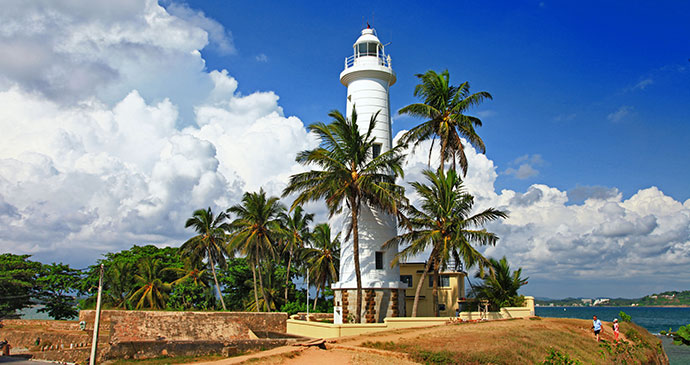
Also represented are Art Deco homes from the 1930s, earlier Art Nouveau styles (with peculiarly Sri Lankan touches), and even a few brash modern houses built before planning regulations were enforced. In recent years, a great many properties have been restored to serve as guesthouses, restaurants, swanky boutique shops or other tourist-related businesses, leading the seedy charm that once characterised Galle Fort to be superseded by a more gentrified feel.
Even so, it is these timeworn buildings, with their proud façades and mysteriously shaded interiors, that give the fort much of its intriguing character, while their down-to-earth inhabitants provide its soul.
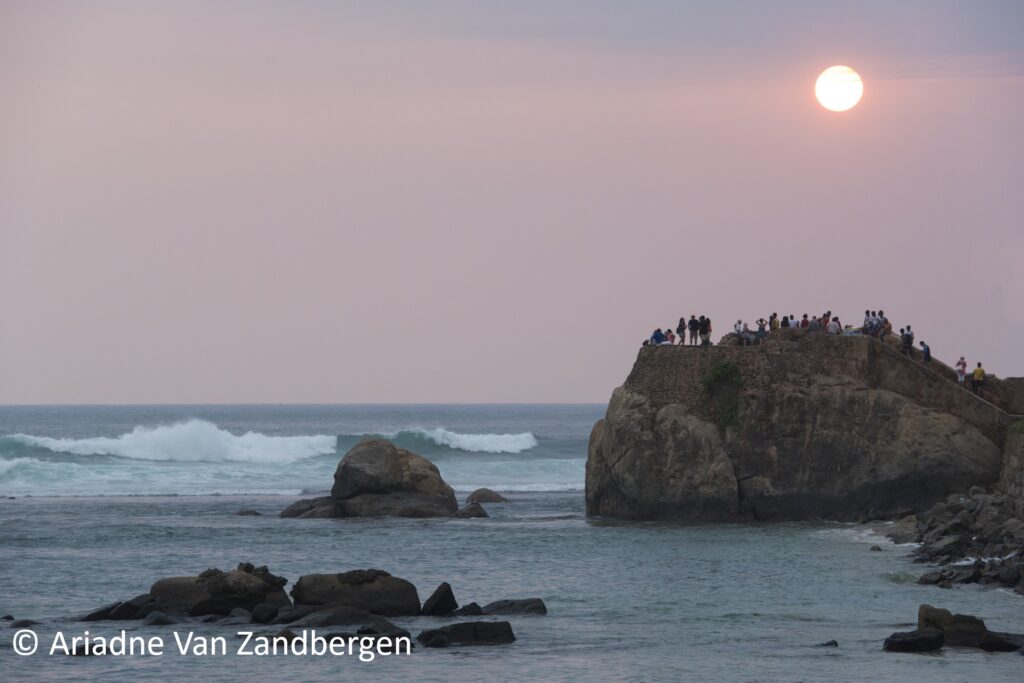
Extending over 800m from north to south and nowhere more than 600m wide, Galle Fort is easily and best explored on foot, and it is generally more fun to follow your nose than stick to a prescribed route. That said, the site descriptions below do follow a roughly 3.5km anticlockwise route around the old ramparts, starting at the Old Gate and Black Bastion, travelling west along Queen’s Street and north along Church Street to the Main (new) Gate, then running along the northern and western ramparts to Sri Sudharmalaya Temple.
From the temple, the route runs inland southeast along Parawa Street and east along Pedlar Street to the Historical Mansion Museum, then south along Leyn Baan Street to the southern ramparts and Galle Lighthouse, then north along Hospital Street via the Old Dutch Hospital back to the starting point at the Old Gate. Several shorter variations are possible.
Guided 90-minute walking tours of the Fort cost around US$35 per person. The most reliable contact is Galle Fort Walks , which also offers extended tours and night-time ‘ghost hunting’ excursions for US$70 per person, and special cooking and children’s packages.
Horton Plains National Park
Gazetted in 1988, the 31.6km² Horton Plains National Park protects a biodiverse watershed of montane grassland and dwarf forest perched at elevations of greater than 2,100m above the southern escarpment. Its best-known geographic feature is the sheer World’s End Viewpoint, which offers a spectacular vista over hills and valleys to the distant south coast, and forms the focal point of a popular 9km walking trail. A UNESCO World Heritage Site since 2010, the national park also incorporates the island’s second- and third-highest peaks in the form of the 2,395m Kirigalpotha and 2,357m Thotupola, both of which are accessible to hikers, though neither is as prominent as Adam’s Peak 30km to the west.
The evocative highland scenery is very different from anywhere else in Sri Lanka: the undulating windswept plains possess a haunting melancholy air reminiscent of Scotland’s grouse moors, while interspersing pockets of elfin cloudforest, all gnarled boughs encrusted with old man’s beard lichen, have the enchanted quality of a fairy-tale setting. Biodiversity is high, with shaggy-coated sambar deer being the most conspicuous large mammal, but the park also supports a large number of endemic birds and other wildlife, most quite difficult to see on a short visit.
What to see and do in Hornton Plains National Park
World’s end trail.
Roughly 10km in length, the circular World’s End Trail sticks mainly to the tussocky grassland of the open plateau for which the park is named, but it also passes through patches of dwarf forest and traverses marshy areas dominated by dwarf bamboo. It is normally hiked in a clockwise direction, branching left at the junction about 500m past the visitor centre, a point that also offers a good view west across to Kirigalpotha, the highest point in the range. From here, the trail runs to ‘Little’ World’s End, then on through a dense epiphyte-rich forest stand to World’s End, an 880m drop set at the head of Sri Lanka’s largest ravine.
The return leg from ‘Big’ World’s End follows the Belihul River and its tributary streams, which feed a number of pretty montane pools. The most significant features along this stretch are the forest-fringed 20m-high Baker’s Falls (named after Sir Samuel) and the Chimney Pool, a small manmade reservoir passed about 500m before you climb back to the junction where the circular trail starts. The trail is quite flat and well marked throughout, so there is no real risk of getting lost, except perhaps in extreme misty conditions, but some parts are heavily eroded and can be slippery after rain, so tread carefully.
Kirigalpotha Trail
About 6km in either direction, the least popular of the park’s three trails runs directly west from the visitor centre to Sri Lanka’s second-highest peak, Kirigalpotha (literally ‘Milky Rock Face’, in reference to its reflective white northern slope). It is a rougher and slightly steeper trail than World’s End, gaining some 300m in altitude, and less well marked, but the absence of other tourists gives it a genuinely off-the-beaten-track feel and means it provides a better chance of spotting wildlife and birds.
Ecologically, the first half of the trail passes through tussocky grassland with the Belihul River and associated bogland a few hundred metres to the south, while the second half climbs through increasingly dense forest cover, before reaching the open rock face at the summit. The view from the top isn’t quite so dramatic as World’s End, but it provides an impressively panoramic view over the national park and environs.
Thotupola Kanda Trail
Only 1.5km in either direction, this short but relatively steep trail leads uphill from the main road 500m south of Pattipola entrance gate to the 2,357m Thotupola Peak. It passes through dense montane forest where observant visitors might well see the pygmy and rhino-horned lizards, as well as several of the endemic and highland forest birds associated with the park. As you approach the peak, the trail runs through a peculiar pygmy forest whose species composition is similar to the park’s other montane forest, but with most trees coming in a kind of natural bonsai form, typically no more than 2m high.
The summit offers a good view to the lower-lying country to the east. The trail for the short climb is in generally good condition, but may be slippery in parts. Allow 11⁄2 hours for the return trip.
The Pattipola–Ohiya Road
The 11km road that connects the two gates is possibly more rewarding for wildlife than any of the walking trails, passing as it does through the full gamut of the park’s habitats, but offering better visibility particularly into the forested areas. The section between Pattipola Gate and the visitor centre tends to be quite busy with traffic between 06.00 and 08.00, when day trippers arrive from Nuwara Eliya, and again from 10.30 to midday, when most of them leave. The section between Ohiya Gate and the visitor centre carries very little traffic.
There is nothing preventing you from walking any stretch of this road, nor from driving along it and using the car as a mobile photographic hide, provided you don’t walk or drive off-road. Sambar deer are particularly common and often quite relaxed around vehicles in the open country between Ohiya Gate and the visitor centre. The road between Pattipola Gate and the visitor centre supports a higher proportion of forest; the Arranga Pool about 1km south of Pattipola Gate is a particularly rewarding spot for birdwatchers hoping to glimpse the rare and elusive Sri Lanka whistling thrush.

Ambewela Farm Shop
Boasting a pastoral setting on a crossroads near Ambewela village en route between Nuwara Eliya and Pattipola, this shop selling balls of cheese, jars of strawberry jam, goat’s milk, bottles of ghee and other homemade dairy products is a popular stop on the return trip from Horton Plains.
The capital of Northern Province, Jaffna is the main historic focal point of Sri Lanka’s Tamil population, and the country’s ninth-largest city, supporting a predominantly Hindu population of around 90,000. Historically, politically and culturally, this most northerly outlier of Sri Lanka is something of a land apart, owing in part to its location on the Jaffna Peninsula, a 1,000km² not-quite-island connected to the rest of the country by two road causeways, one entirely artificial while the other crosses a narrow natural isthmus called the Elephant Pass.
Unlike most Sri Lankan towns with a comparable population, Jaffna has the bustling, built-up feel of a proper city. Lined with medium-rise buildings, the claustrophobic grid of narrow roads that cuts through the compact commercial centre spills over with chaotic activity: horn-blasting cars and tuktuks, weaving bicycles, and dilly-dallying pedestrians all mingle with a bouquet of spicy aromas and blasting Bollywood tunes which – together with the proliferation of Hindu temples, and occasional traffic-defying cow on urban walkabout – underscore Jaffna’s cultural affiliation with the Indian state of Tamil Nadu, only 50km distant on the opposite side of the Palk Strait.
What to see and do in Jaffna
Central jaffna, central market.
The central market on the west end of Hospital Road is alive and buzzing with mercantile activity, with Jaffna products such as hand-woven palmyrah baskets, sweet blocks of jaggery and juicy tropical fruit being of particular interest. There’s also a small fish market down the south end of KKS Road, and no shortage of cheerful little eateries selling fruit juices and all manner of colourful homemade sweets and confectioneries.
Vannai Vaitheeswara Temple
Half a dozen Hindu temples are packed into the city centre, and visitors are welcome, though cameras are best left in your bag during puja services. The oldest and most attractive, Vannai Vaitheeswara Temple is an ancient Shiva shrine whose current incarnation, complete with a prominent five-tier gopuram, was built in 1790, and whose broodingly atmospheric stone-and-wood interior is free of the flamboyant flourishes associated with more modern temples.
It is busiest during the 20-day Shiva Festival and ten-day Ambal Devi Festival, which respectively climax on the full moon of March and July.
Jaffna Fort
The obvious place to start a more directed exploration of the city is Jaffna Fort, a hulking 7ha pentagon that dominates the waterfront immediately south of the commercial centre. Protected by five tall granite buttresses and enclosed by a moat along its four landward sides, the fort as it stands is essentially a Dutch edifice constructed between 1658 and 1680, but it was expanded from the original four-sided Fortress of Our Lady of Miracles of Jafanapatão built by the Portuguese over 1619–25.
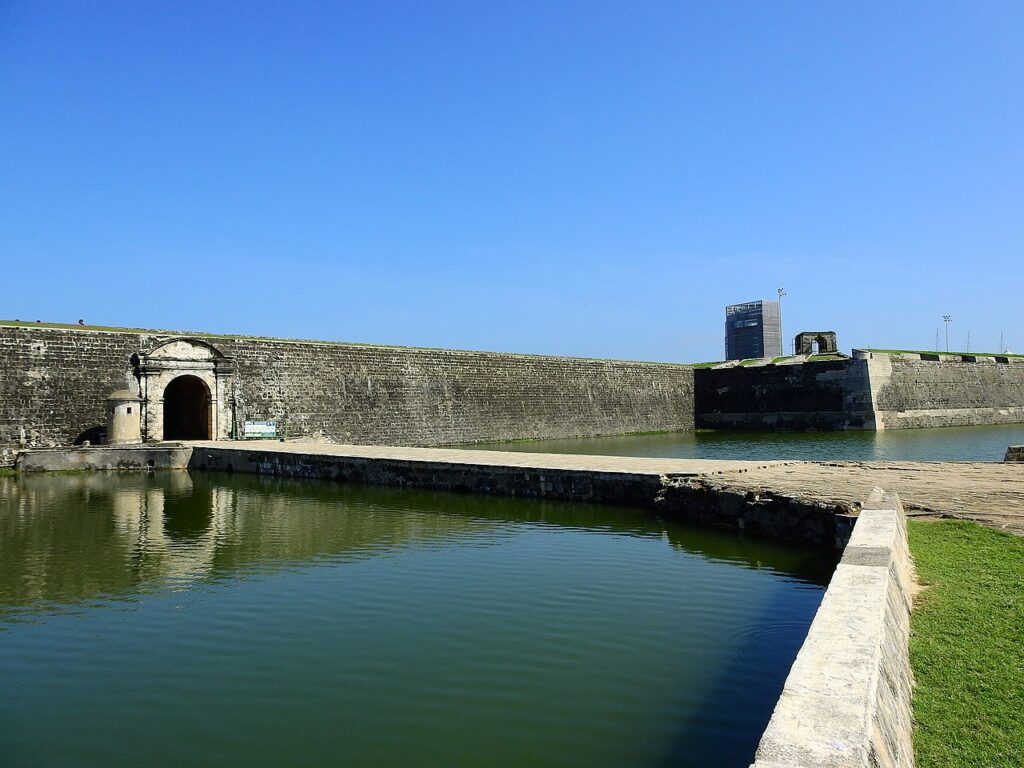
There’s not much here in the way of interpretative material, but adventurous travellers might find their appetite for exploration whet by the photographs of some of Northern Province’s more obscure archaeological sites displayed in the rooms flanking the main entrance.
Jaffna Public Library
Set in manicured green gardens 200m east of the fort, the Jaffna Public Library started life in 1933 as a small private book collection. By 1959, the collection had expanded sufficiently to be relocated to a handsome multi-domed three-storey Indo-Saracenic building commissioned for the purpose by Alfred Duraiappah, then the city’s deputy mayor. The library grew to become one of the largest and most valuable in Asia, housing some 97,000 books and other documents, including many historic and unique Tamil palm-leaf and other manuscripts.
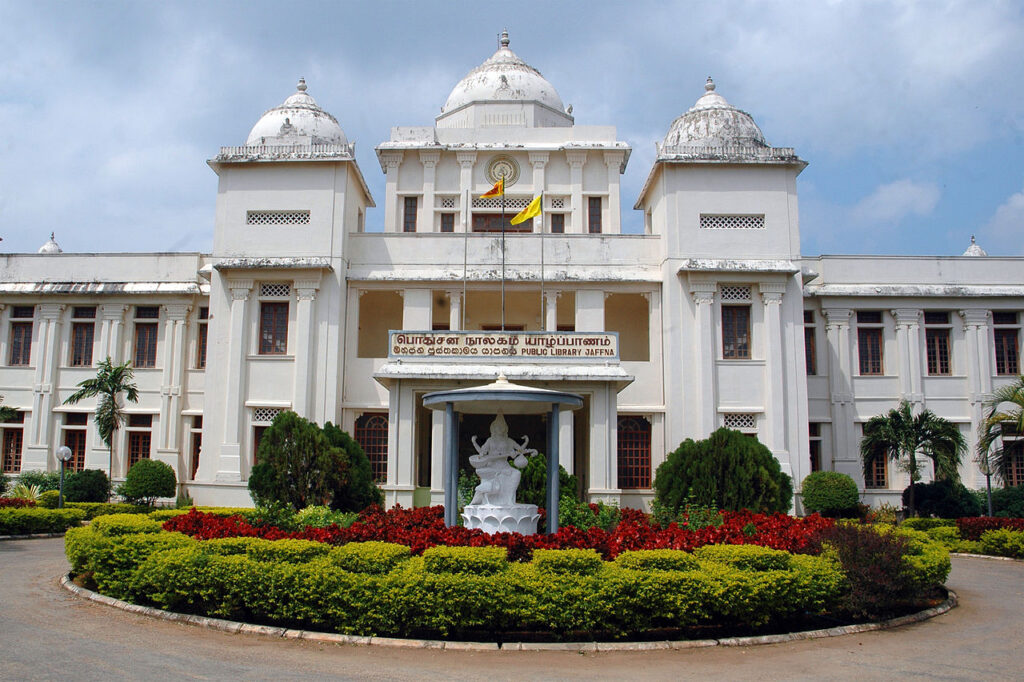
In June 1981, the entire collection went up in smoke when the library was burnt down by Sinhalese rioters, an act of mob violence perceived by aggrieved Tamils to be an indirect government attack not only on their academic traditions but on their very place in modern Sri Lanka. The partially restored building was set on fire again in 1985, this time by LTTE soldiers, after which it stood as a burnt-out shell for almost two decades prior to being restored to its former architectural glory and reopening in 2004. The library’s irreplaceable contents are lost forever, but more than US$1 million has been spent on assembling a new collection of mostly Tamil literature.
Jaffna Fishing Harbour
Follow the waterfront east of the fort for 700m, and you’ll arrive at Jaffna Fishing Harbour, which runs along Reclamation Road for more than 3km. With hundreds of colourfully painted wooden fishing boats bobbing offshore, the friendly harbour forms a surprisingly rustic appendage to central Jaffna, and it’s very photogenic too, especially towards dusk with the sun setting in the background over the Velanai Causeway.
Small Passaiyoor market near the end of Beach Road is one of the most exciting fish markets in the country, with boisterous morning auctions; get there by 07.00 to experience the frenzied calls, and the neighbouring buildings or trees draped with brilliant blue fishing nets.
Nallur Kandaswamy Temple
The built-up suburb of Nallur served as the capital of Jaffna for several centuries prior to the arrival of the Portuguese and relocation of the administration to the modern city centre 2km to the southwest. Its principal site, Nallur Kandaswamy Temple is the city’s most important and spectacular Hindu shrine, dedicated to Skanda (Kataragama).
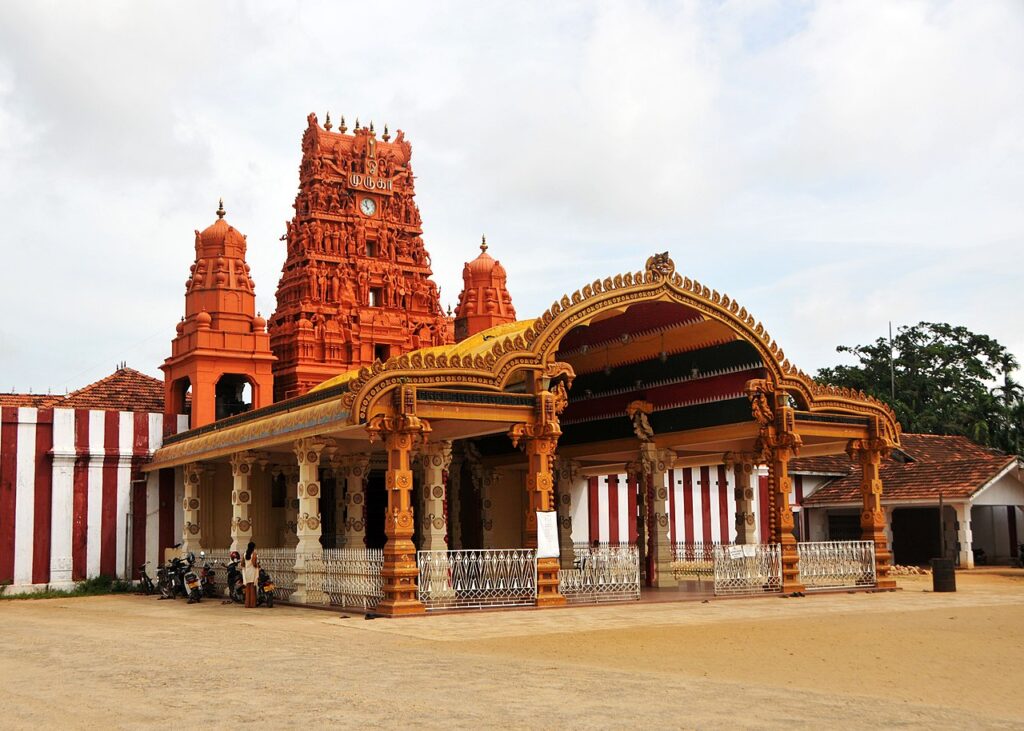
The present-day structure started life in the mid 18th century as a small stone shrine with a palm-leaf roof, and has undergone several expansions over the centuries, most recently with the unveiling of two new nine-storey gopurams – reputedly the tallest and second-tallest in Sri Lanka – in 2011 and 2015. The most interesting time to visit is during the one of the daily pujas, all the better should your time in Jaffna coincide with the latter part of the 25-day annual Nallur Festival , which ends on the last poya weekend in late August or early September.
Jaffna Archaeological Museum
Hidden away behind the Navalar Cultural Hall 1km south of Nallur Temple, the Jaffna Archaeological Museum might initially come across as musty and disorganised, but an eclectic selection of displays justifies the effort of locating it.
Of particular interest is a superb collection of Medieval brass statues and granite carvings excavated at the ancient Hindu temple sites of Nallur and Keerimalai, an intricately carved 17th-century wood temple door frame, a good example of an old palmyrah-leaf manuscript, also dating to the 17th century, and – more macabrely – kavadi skewers, spiked wooden sandals and other items associated with Hindu self-mutilation rituals.
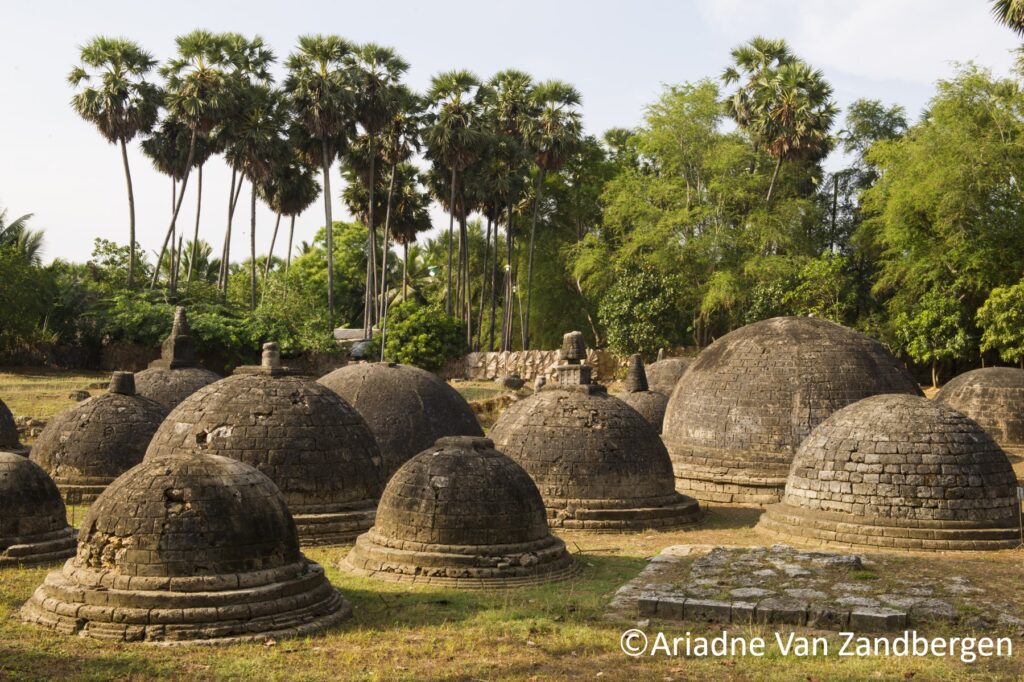
Items that found their way here from Jaffna Fort include a Dutch gravestone complete with skull-and-crossbones, a brass sundial, and a war-scarred 1853 portrait of a 34-year-old Queen Victoria said, rather fancifully, to smile at the viewer at certain angles. The museum reputedly once housed several 2,000-plus-year-old items unearthed during early 20th-century excavations at Kantharodai, but these no longer seem to be on display.
The second largest of the eight main islands that comprise the Jaffna Archipelago, Velanai is a 35km² expanse of flat sandy soil, dotted with seasonal pans and palmyrah plantations and separated from the mainland by a gorgeous shallow lagoon. The island is thinly populated by comparison with the built-up Jaffna Peninsula, and far more rustic in feel, though this is partly an aftermath of the civil war, which left the countryside scarred with ruined and abandoned homesteads.
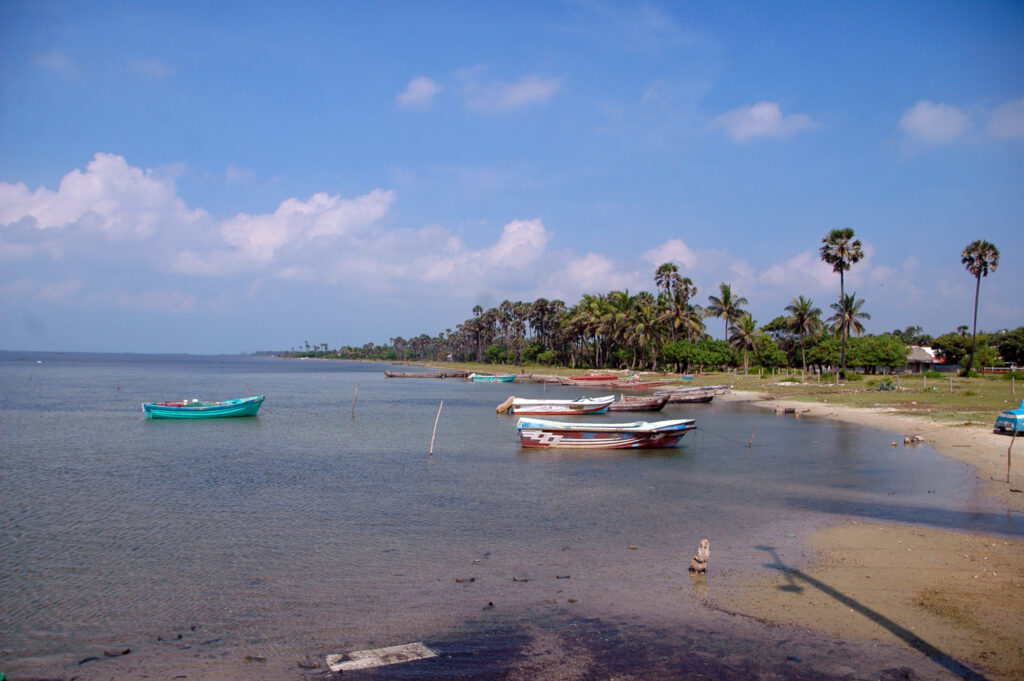
Situated on Velanai’s northern shore, the intriguing and unexpectedly substantial town of Kayts (pronounced ‘Kites’) is separated from Karaitivu Island by a 500m-wide channel serviced by regular ferries. Decidedly backwaterish today, Kayts was an important port during the Portuguese occupation of Jaffna (1619–58) thanks to its good and easily defended harbour and strategic location in terms of maritime access to the mainland peninsula.
It was then that it acquired the name Kayts (a derivative of Caes dos Elefantes, meaning ‘Elephants’ Quay’, in reference to the main item of export) and that a pair of Portuguese forts were built to guard the channel entrance 1km to its west. Kayts retained its strategic significance into the
As sweet and ripe for exploration as its irresistible name suggests, Kandy finds its way on to the itinerary of pretty much every visitor to Sri Lanka, and it seldom disappoints. Also known as the Maha Nuwara (literally ‘Great City’) or by the ancient name Senkandagala, Kandy served as the last capital of the Sinhala monarchy from the 1590s until it was signed over to Britain in 1815.
The sacred old city – lapped by the ornamental Lake Kandy, and overlooked by the verdant slopes of the Udawatte Kele Sanctuary – is a UNESCO World Heritage Site, whose spiritual focal point Sri Dalada Maligawa (Temple of the Tooth) ranks high among the world’s most venerated Buddhist shrines. Enclosed on three sides by the jungle-fringed Mahaweli River, the greater city is studded with other historic landmarks, ranging from a quartet of ancient shrines dedicated to the city’s four guardian deities, to imperious colonial edifices such as the Hotel Suisse and Queen’s Hotel, to the vast and well-maintained Royal Botanical Garden, which celebrated its bicentennial in 2021.
What to see and do in Kandy
Kandyan cultural shows.
One of the most popular activities in Kandy is the late afternoon cultural show staged daily at several venues around the city. The shows include displays of typical Kandyan dances by men and women, in which the participants wear elaborate costumes with an extravagance of silver ornaments on ears and chests, as well as a juggling performance involving intricate twirling of lacquered wooden plates, some energetic somersaulting, daredevil displays of fire-eating and fire-walking, and a mask dance representative of low-country dancing.
The authenticity, if these things bother you, is open to question, but there is no denying that the frenetically percussive music – provided by a dervish-style drum troupe whose polyrhythms are adorned with occasional horn- and flute-like melodic flourishes – is utterly compelling. All the shows cost around US$7 per person, start at 17.00 and last for about 1 hour, an arrangement that allows audience members to move on to Sri Dalada Maligawa in time for the 18.30 puja.
Sri Dalada Maligawa (Temple of the Tooth)
Sri Lanka’s holiest Buddhist shrine, Sri Dalada Maligawa houses the venerated top right canine of the Buddha, which was smuggled to Sri Lanka in the hair of a princess from Orissa in the 4th century AD, and secured as a symbol of nationhood in a succession of custom-built temples countrywide until it came to rest in Kandy in 1592.
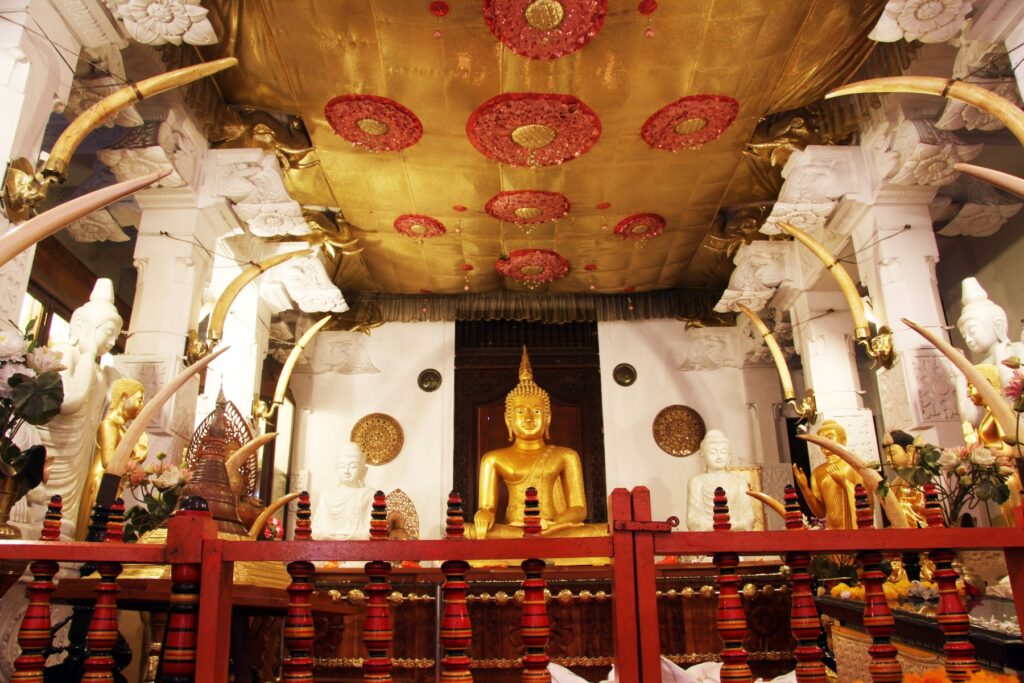
The original two-storey temple completed in 1595 by King Vimaladharmasuriya I now forms the core of an inner temple enclosed in a grander and more expansive three-storey structure built a century later by King Vimaladharmasuriya II and further expanded under King Kirti Sri Rajasinha, while the moat and other adornments were added by King Vikrama Rajasinha, the last Kandyan monarch. The tall golden canopy that shades the central relic chamber was donated by President Premadasa in the 1980s, and extensive restoration work had to be undertaken in the aftermath of the 1998 bombing.
The temple’s plain but attractive white façade, set below layered Kandyan tiled roofs, is seen to best advantage from a distance (try the sloping Royal Palace Park or one of several viewpoints along Rajapihilla Road), with Lake Kandy in the foreground and a verdant backdrop provided by Udawatte Kele. Up close, the most prominent frontal feature is the Pittirippuva, an extruding octagonal belvedere that was originally built as an audience platform by King Vikrama Rajasinha and now houses a library in its base.
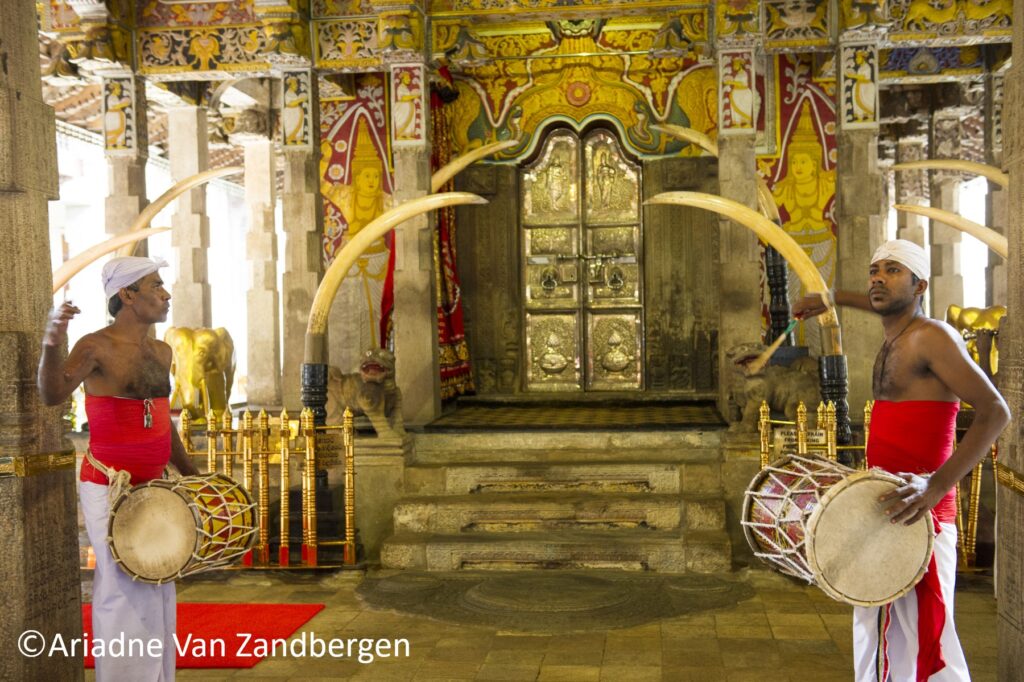
The main entrance leads across the moat and up a flight of stairs into the surprisingly small drumming courtyard, which is dominated by the inner shrine. Standing two storeys high, this handsome small building, the oldest part of the temple, is supported by engraved wooden pillars and its walls are adorned with a fantastically chaotic melange of intricate paintings and engravings (those at the rear are easier to inspect closely than the ones at the front).
Hatara Devale and Temple Square
Revered by Buddhist and Hindu residents alike, the Hatara Devale (four shrines) are each dedicated to one of Kandy’s four guardian deities, namely Natha, Pattini, Vishnu and Kataragama. Three of the shrines stand clustered close together in Temple Square, the large leafy block immediately west of Sri Dalada Maligawa. The fourth, dedicated to Kataragama, stands two blocks further west, at the southern end of Kotugodella Street. Entrance to all four shrines is free.
Kandy National Museum
Renovated in 2014–17, Kandy’s National Museum, which stands immediately east of the Sri Dalada Maligawa compound, is housed in the Palle Vahala (Lower Palace) built in the late 18th century as a royal harem (or, if you prefer, Queens’ Palace) for the consorts of King Sri Vikrama Rajasinha. A museum since 1942, it contains more than 5,000 artefacts relating to the Kandyan period, including the original Kandyan Convention signed by the British and the Chiefs of the Kandy on 10 March 1815.
Asgiri Monastery
Founded during the 14th-century reign of King Parakramabahu IV of Kurunegala, this historic and influential Buddhist monastery once extended all the way from the hills west of the town centre to the more easterly site of present-day Trinity College. The core monastery now stands about 5 minutes’ walk west of the town centre and incorporates several small temples with painted interiors.
During the Kandyan era, Asgiri served as a royal crematorium and burial ground, a tradition that started in the late 14th century when Queen Chandravati, the mother of King Sena Sammatha Vikramabahu, was cremated and buried here. The old royal burial ground and its funerary dagobas were cleared to make way for the construction of the railway line to Matale in 1880.
However, the monastery’s most intriguing structure, tucked away in a leafy compound 100m north of Hill Street, is the beautiful Adhanamaluwa Gedige, which reputedly stands on the exact spot where Queen Chandravati was cremated and was built as a memorial by her son. This robust and intricately carved stone temple, set below a striking two-tiered Kandyan tiled roof, is almost certainly Kandy’s second-oldest building and, as with the older Natha Devale, its architecture displays a strong Hindu influence.
It might come as a surprise to learn that the tranquil ornamental lake so integral to the modern-day Kandyan landscape was in fact completed in controversial and bloody circumstances a mere three years before the city’s Sinhalese monarchy was evicted by the British. Also known as Lake Bogambara or Kiri Muhuda (Sea of Milk), it was constructed over 1810–12 at the command of King Sri Vikrama Rajasinha, who used slave labour to dam the marshes and paddy fields that skirted his capital, and was delighted when they filled up not only with water but with fish, which he fed with boiled rice from a small island (reputedly connected to the palace by a subterranean tunnel so secret its existence has yet to be corroborated).
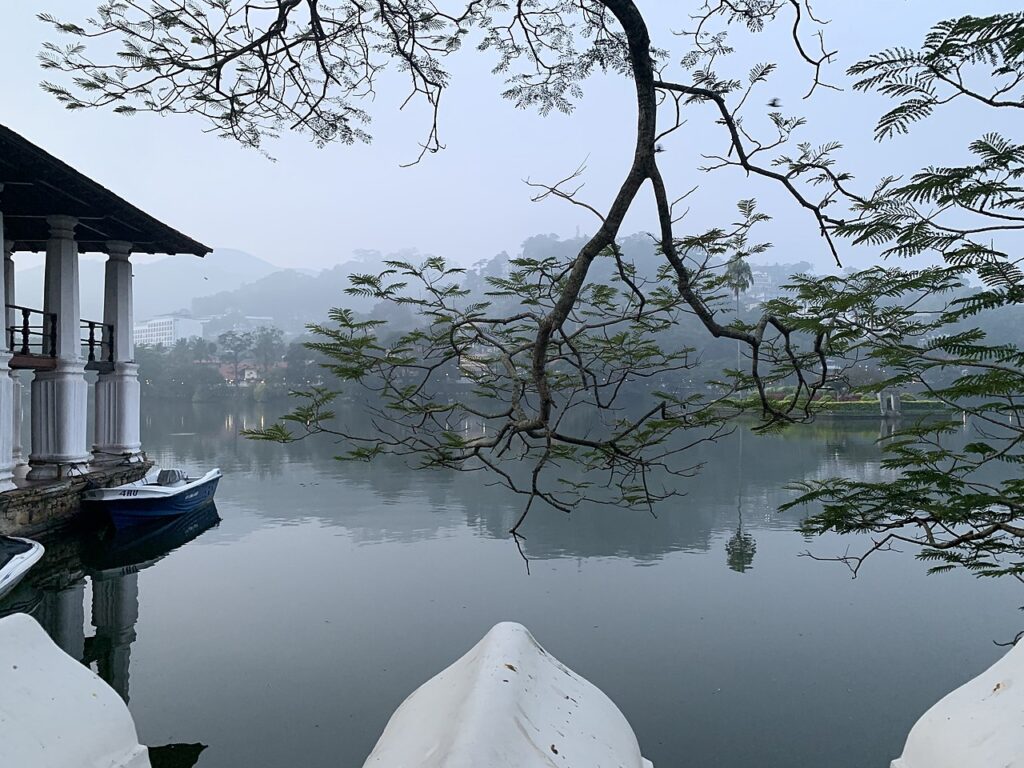
Today, the tadpole-shaped lake extends over 19ha and can be circumnavigated on foot along a shady 3.5km footpath. You’ll pass several impressive Indian flying fox roosts, and should also look out for waterbirds such as spot-billed pelican, Indian pond heron, black-crowned night heron, white-breasted waterhen and various cormorants and egrets. The walk could be extended with diversions to the Royal Palace Park, Malwatta Monastery and historic Hotel Suisse, all on the south side of the lake. Unfortunately, the handsome colonnaded Ulpenge (royal bathing house) built for the wives of King Sri Vikrama Rajasinha, on a platform immediately south of Sri Dalada Maligawa, is now a police checkpoint and closed to the public.
Royal Palace Park
Busier with courting teenagers than with tourists, this 2ha park slopes upward from the southwest lakeshore to offer splendid views across the water to the old town centre and Sri Dalada Maligawa. Its official name refers to it having been the site of a palace built for King Vimaladharmasuriya I, who famously repelled two attempted Portuguese invasions of Kandy during a 12-year reign that started in 1592.
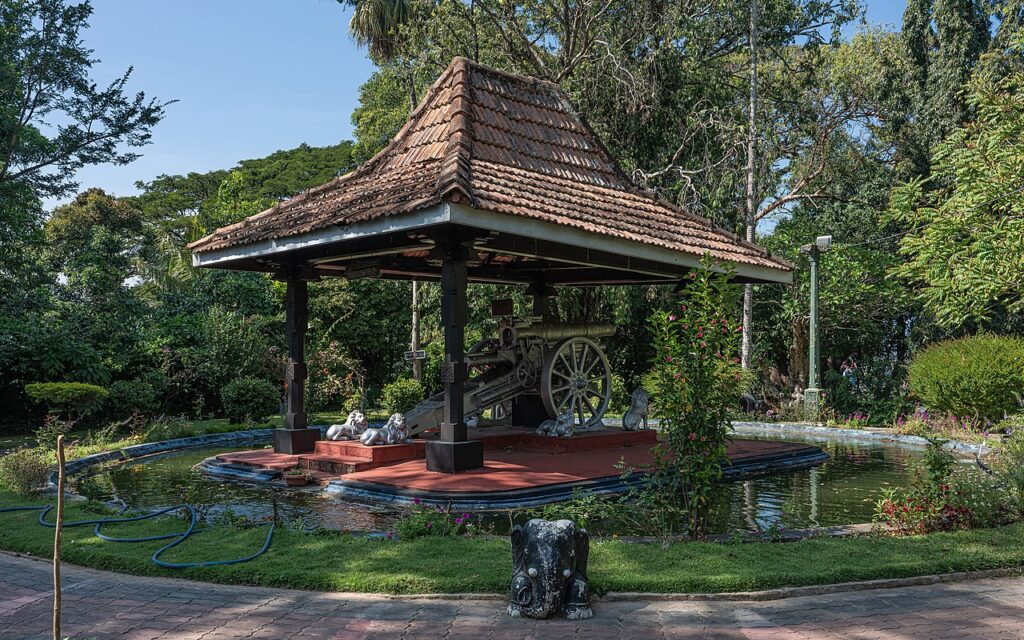
Later a lakeside terrace built by King Sri Vikrama Rajasinha, it was remodelled as a park in 1880 under the acting Colonial Secretary Herbert Wace, and is still sometimes referred to as Wace Park (or, rather confusingly, as Wales Park, reputedly also its official name for a period, in honour of the Prince of Wales). Today, pride of place goes to a Japanese artillery gun captured in Burma during World War II and now housed under a small Kandyan-style pagoda.
Malwatta Monastery
Older than Lake Kandy, whose southern shore it overlooks, this attractive monastery was established in 1753 by Sri Saranankara Sangaraja and it contains two separate temples embellished with 18th-century architectural features, as well as a venerable Chapter House and tall octagonal library. A small museum exhibits several artefacts owned by the temple’s founder or dating back to that time.
Sinharaja Forest
Sri Lanka’s most important biodiversity hotspot and number-one birdwatching destination is the 88km² Sinharaja Forest Reserve, which protects the largest remaining tract of rainforest in the island’s southwestern wet zone.
An important watershed, it swathes a rugged mountain range that extends for 21km from east to west, but is classified as lowland rainforest owing to its relatively modest altitudes, which rise from below 100m to 1,171m at the summit of Hiti Pitigala.
In zoological terms, Sinharaja’s most remarkable feature is a quite extraordinary level of endemism, which embraces at least 830 plant and animal species unique to Sri Lanka, and more than a dozen plant genera whose range is confined to this one forest. The forest reserve is of particular interest to birdwatchers, since all but two of the 33 species endemic to Sri Lanka have been recorded here, and it is the easiest place to see many of them.
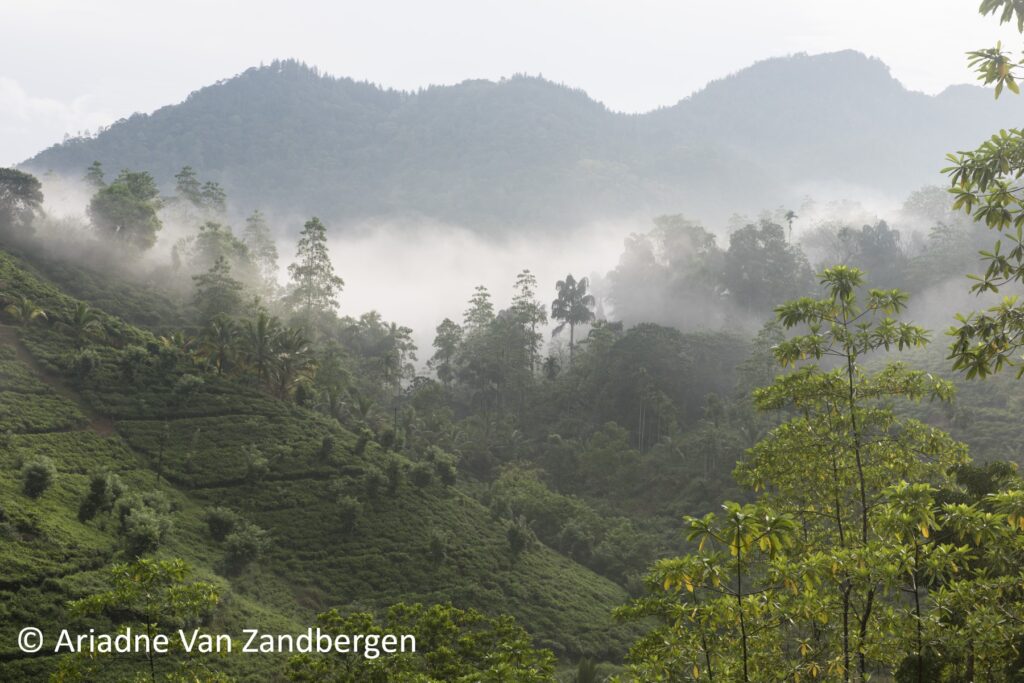
For all its biodiversity, Sinharaja ranks as one of Sri Lanka’s most undersubscribed major attractions. In part, this can be attributed to the relatively basic nature of accommodation in the area, and to it lying on something of a limb off the country’s main tourist circuits. Equally, it seems fair to say that a ramble through Sinharaja wouldn’t conform to everyone’s idea of a fun day out.
The lush rainforest interior can realistically be explored only by keen walkers prepared to brave an army of creepy-crawlies, and embrace the likelihood of being drenched in one of the all-but-daily tropical downpours. Of course, especially in the company of a (mandatory) guide, Sinharaja is actually a very safe place – far more so, it has to be said, than the country’s recklessly driven roads – and rough-’n’-ready travellers seeking a little outdoor adventure are likely to look back on a rainforest hike as a highlight of their time in Sri Lanka.
Frankly, tourists would be well-advised to embark on a forest adventure as soon as possible: the forest is under continual encroachment from agriculture, hunting and logging, as well as large developments that threaten to remove its UNESCO designation – such as roadworks and the 2021 government proposal to construct two 2ha reservoirs, which would displace thousands of families.
Yala National Park
Sri Lanka’s best and most popular safari destination, Yala National Park protects a vast tract of low-lying dry-zone wilderness which once formed part of the Ruhuna Kingdom, but was populated only by a thin spread of nomadic Vedda hunter-gatherers for centuries prior to being accorded official protection in 1900. Today, the park is renowned for its dense populations of elephant, leopard, water buffalo and to a lesser extent sloth bear, and it also hosts an exceptionally varied avifauna comprising more than 200 bird species.
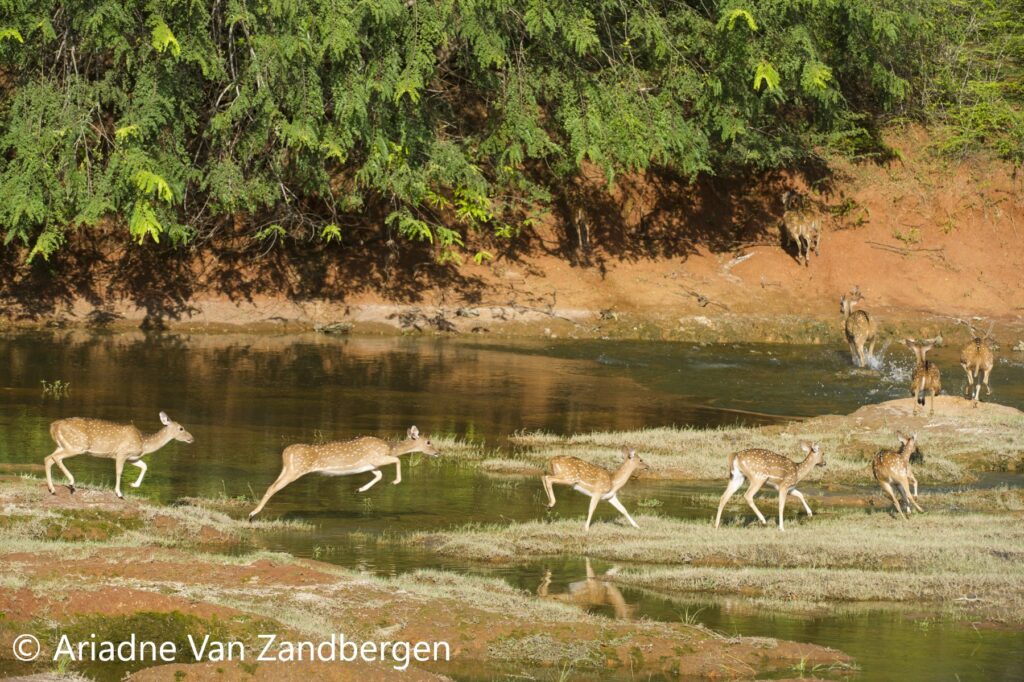
Divided into five blocks, the 978km² national park, though smaller than Wilpattu, forms the centrepiece of the island’s largest conglomeration of protected areas, a 1,750km² tract of wilderness that also includes the contiguous Kumana National Park, the Yala Strict Nature Reserve (off limits to the public), Lunugamwehera National Park (gazetted in 1995 and essentially merged with Yala Block V) and three small buffer sanctuaries.
What to see and do in Yala National Park
Game drives.
The main activity in and around Yala is game drives, which can be arranged through any hotel or lodge in the area, as well as through a plethora of safari operators and one-man-and-his-jeep operations in Tissamaharama. Morning drives tend to be most rewarding for birds but afternoon drives come with a better chance of spotting an elusive leopard or sloth bear. If your budget (and tolerance of the sticky climate) runs to it, best to opt for an all-day drive, taking a packed breakfast and lunch, since elephants are most often seen at watering holes in the heat of the day.
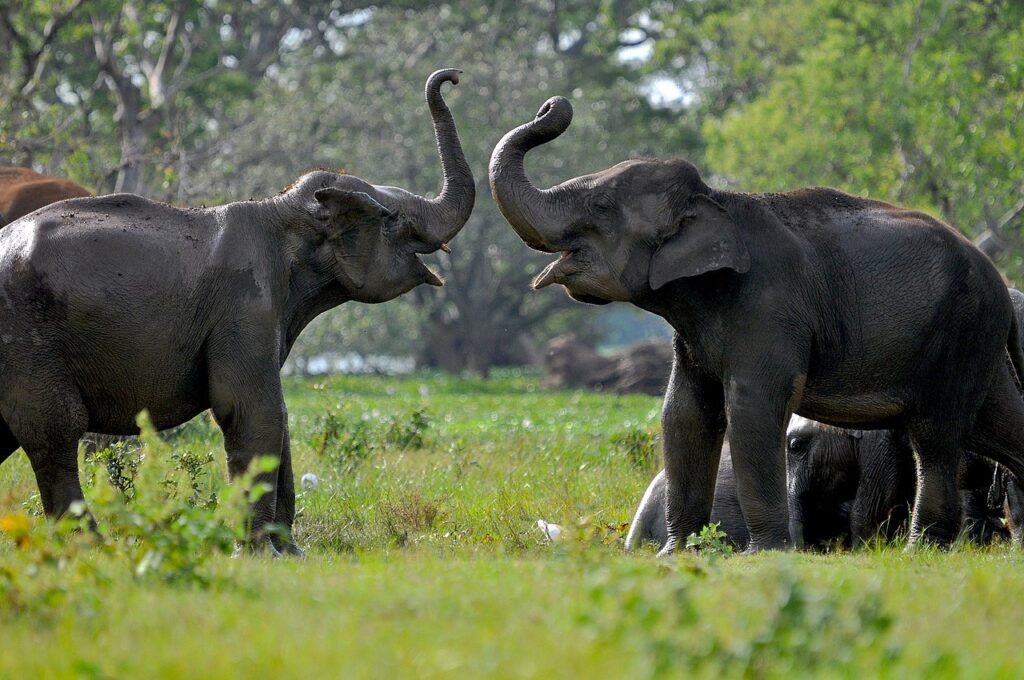
A full-day drive in Block I also gives you time to explore the relatively untrammelled area around the Menik River, and ensures you will be out and about when most safari-goers are lunching outside the park. Almost all safaris take place in Block I, which supports high densities of game and a generous scattering of natural waterholes and artificial reservoirs, some originally constructed by the ancient kings of Ruhuna.
For those seeking a more off-the-beaten track experience, Block V, though relatively small at 26km², is highly recommended for scenery, waterbirds and relatively regular leopard sightings. Block V is usually combined with the contiguous and even less-visited Lunugamwehera National Park, a 245km² tract of disturbed woodland centred on the eponymous reservoir and known for its seasonal concentrations of elephants and varied birdlife (185 species, with aquatic species particularly well represented).
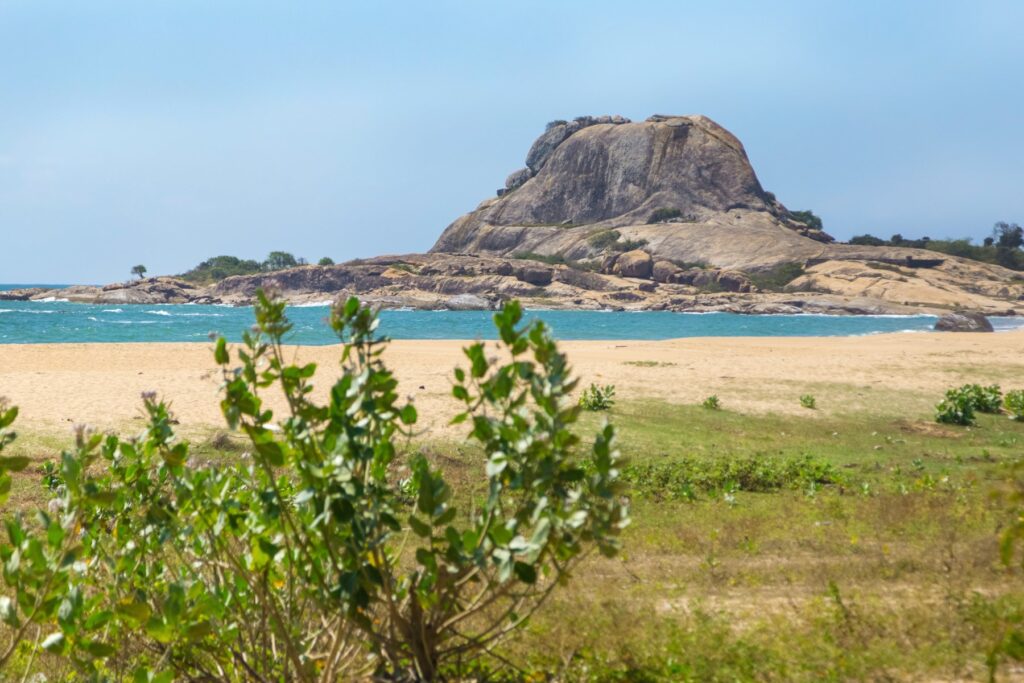
Blocks III and IV are also now open to the public but the dense vegetation may make for disappointing animal spotting (conversely, it is excellent for woodland and forest birds, and you’ll most likely not see another jeep). Back with Block I, it is also possible to obtain advance permission to take the bridge across the Menik River into the little-visited Block II, whose 35km-long Indian Ocean shoreline is studded with streams, lagoons and restored Ruhuna-era reservoirs.
Sithulpawwa Monastery
Enclaved within the northwest of Block I, this ancient and extensive Buddhist monastery – goal of an annual pilgrimage of tens of thousands of worshippers on the Poson (June) Poya – consists of more than a hundred caves with drip ledges centred on a massive whaleback outcrop surrounded by jungle and topped by a modern dagoba. It was founded in the 2nd century BC by Kavan Tissa, and legend holds that it housed more than 10,000 Arahant monks in its heyday, when it was surrounded by a productive agricultural area irrigated by a system of reservoirs.
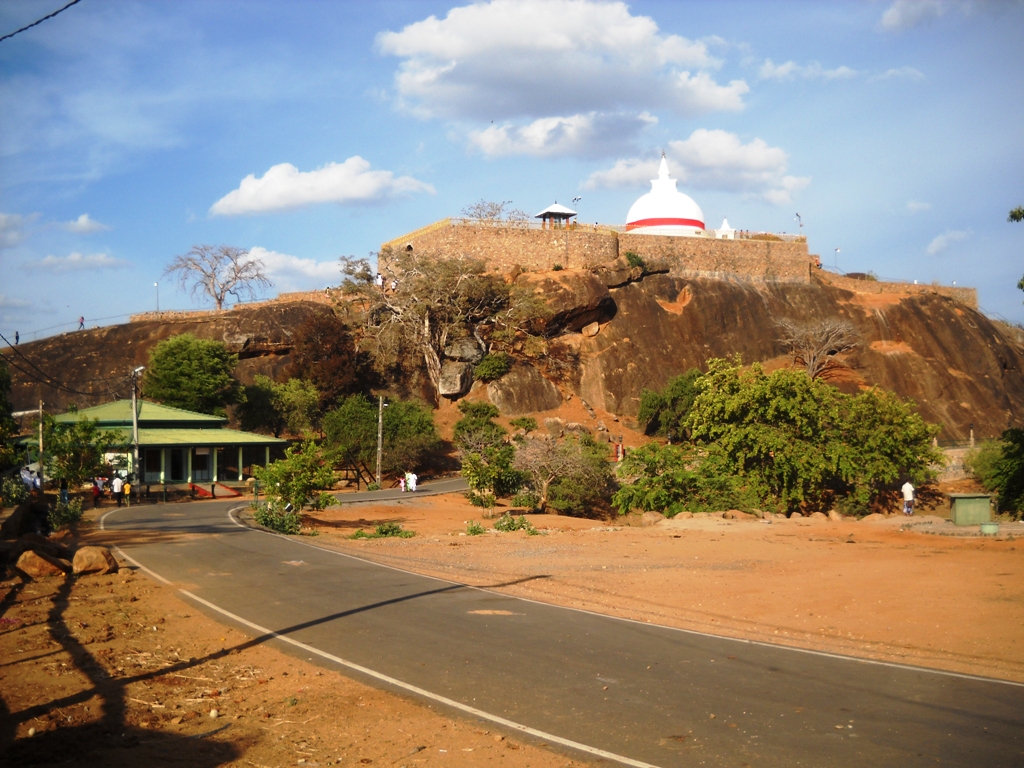
This system gradually deteriorated over the centuries and the monastery and surrounding land were abandoned around 700 years ago following a prolonged and devastating drought that caused many of the monks to starve to death. A few very faded Anuradhapura-era paintings are preserved in one of the caves, and the views from the hilltop to the ocean are spectacular. The monastery is about 5km and signposted from Katagamuwa Gate, and the ascent of the taller hill takes about 15 minutes on foot. Although it is surrounded by the national park, it stands outside and no entrance fee need be paid to visit.
Related books
For more information, see our guide to Sri Lanka :
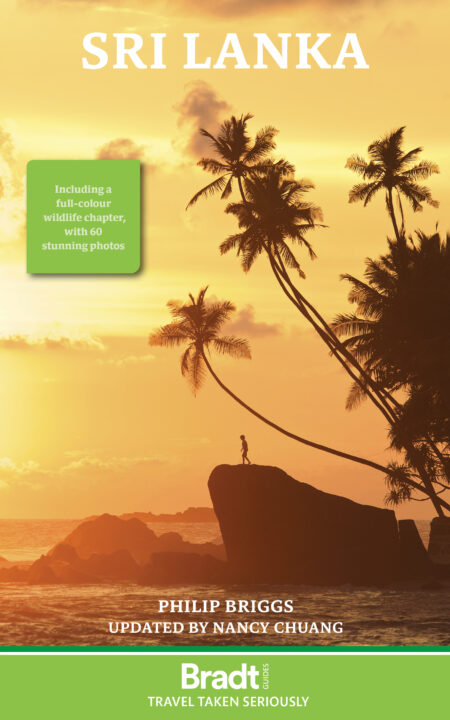
Related articles
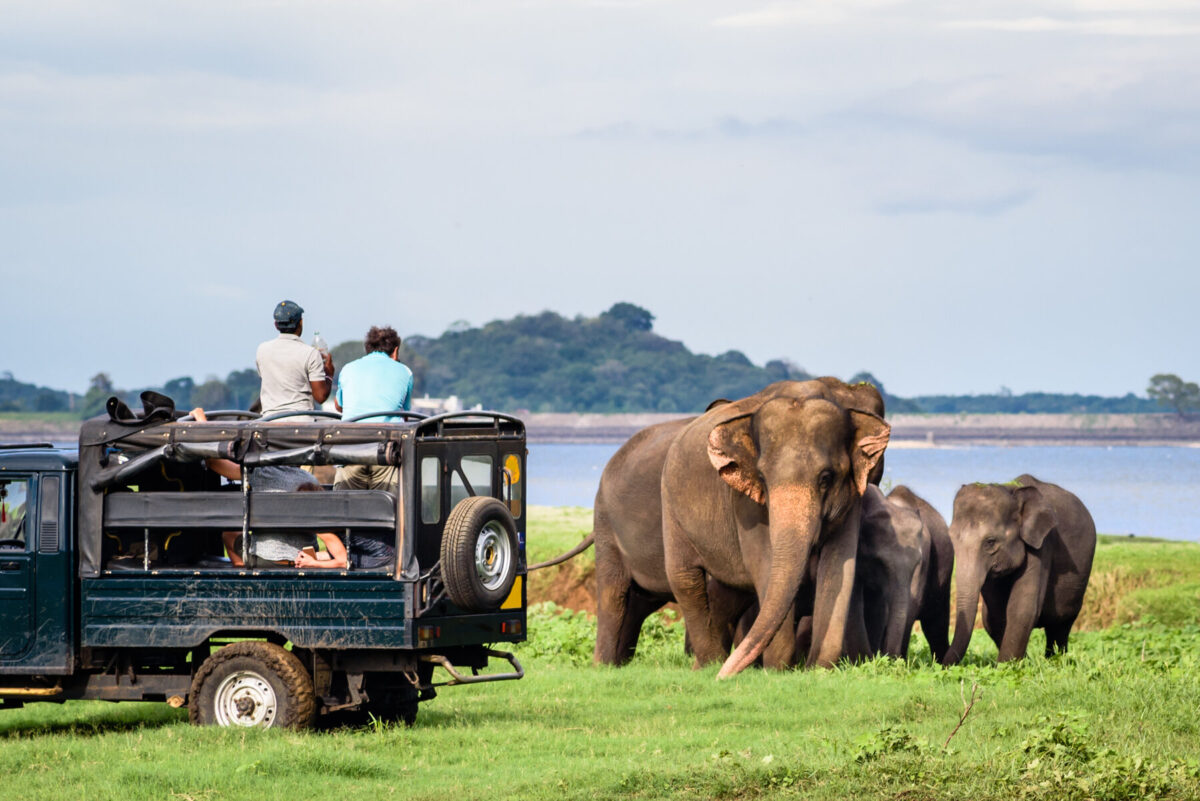
Spotted in the wild: where to see Sri Lanka’s ‘Big Five’
From sloth bears to sperm whales, Sri Lanka is home to some of the most remarkable wildlife on the planet.
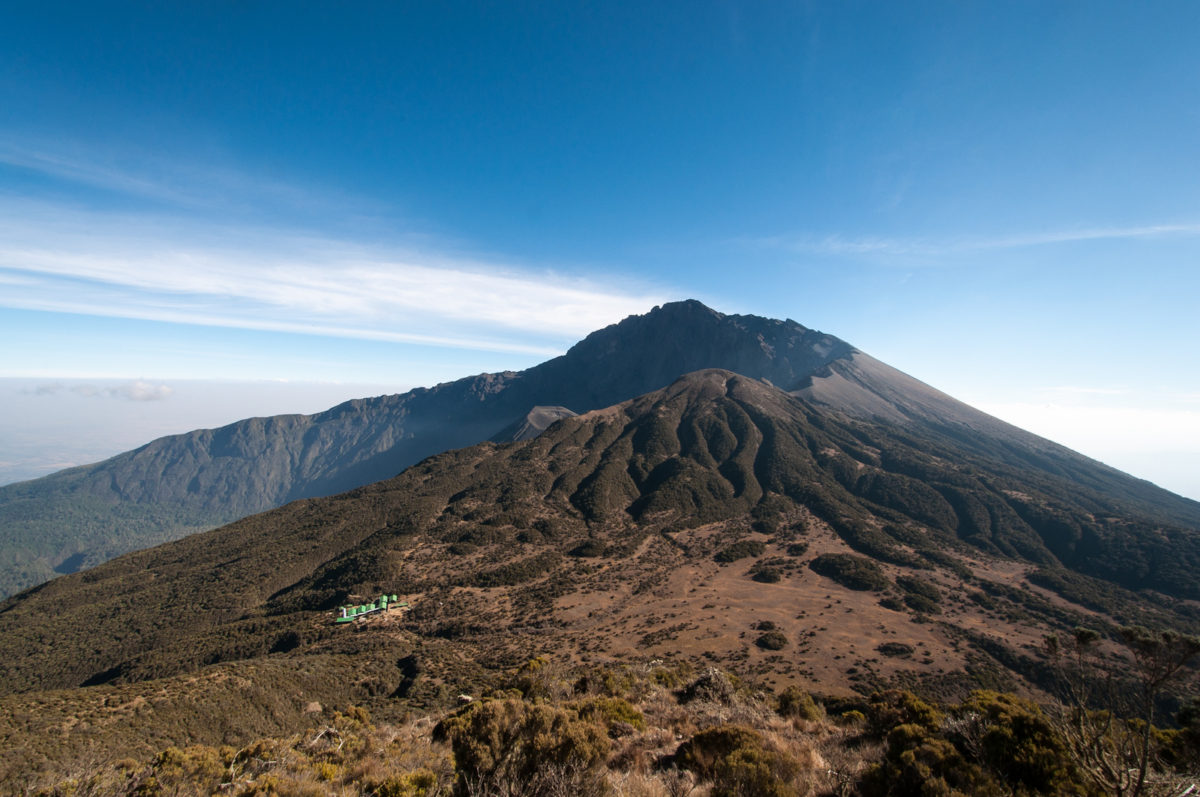
One step beyond: the world’s most impressive lesser-known mountains
How many of these have you climbed?
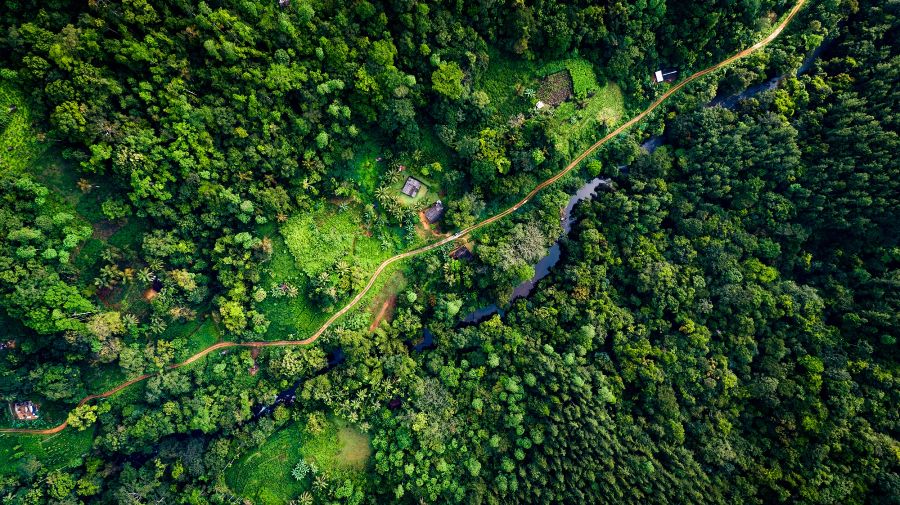
Seeing the wood for the trees: 11 of the world’s most spectacular forests
Covering even more of the world than our guidebooks, forests are ubiquitous but almost always different.
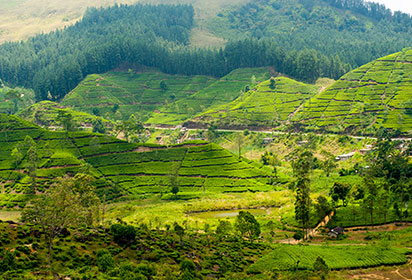
One of Sri Lanka’s greatest exports, tea has been grown here since the 1800s.

Touropia Travel Experts
Discover the World
15 Top Tourist Attractions in Sri Lanka

Sri Lanka is truly spellbinding and will suit any traveler’s interests with its top tourist attractions. The small island nation is chock-full of adventure activities like surfing and trekking.
There are several highly religious sites for the religious devotee, and unbelievable historical tourist attractions for history buffs in Sri Lanka . However, no one can dispute Sri Lanka’s incredible natural beauty. Whether it be en-route to a perfect surf break, visiting a historical site or on a pilgrimage, lush greenery and exotic animals are never far away.
15. Nine Arch Bridge [SEE MAP]
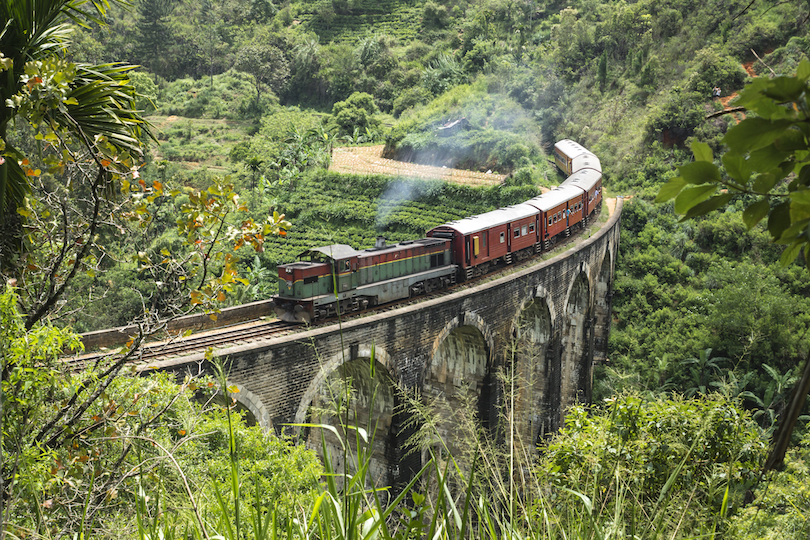
One of Sri Lanka’s most iconic sights is the Nine Arch Bridge in the small mountain town of Ella. This viewpoint offers spectacular panoramas of the surrounding area, which is made up of verdant greenery and tea fields.
Visitors can watch trains roll over the bridge as they make their way along the Demodara Loop. Constructed in the early days of the railway expansion in Sri Lanka, the bridge is particularly impressive because it is made of cement, stone and brick, without the use of any steel.
14. Mihintale [SEE MAP]
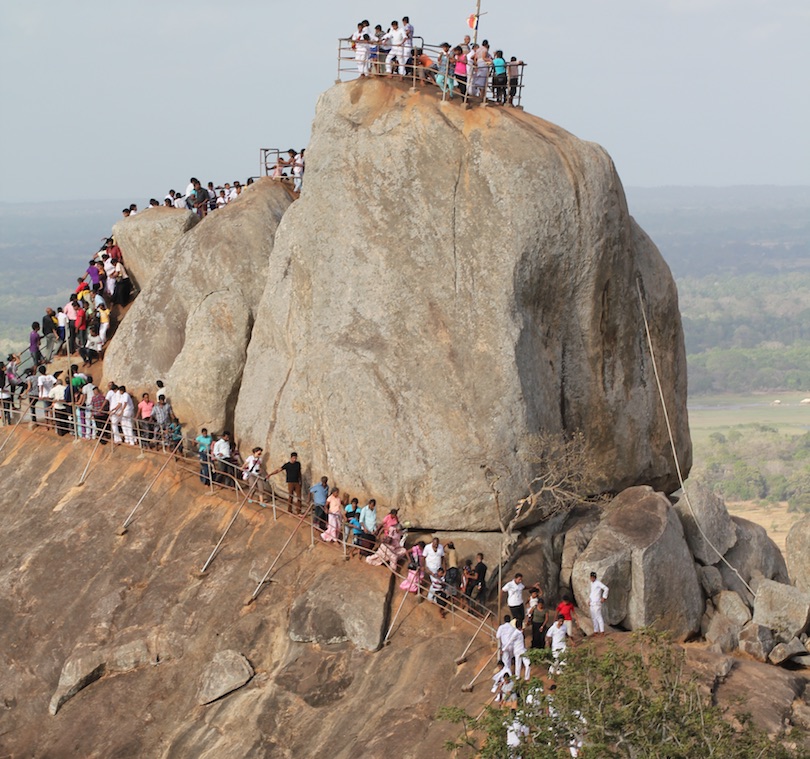
Mihintale is a mountain near the town of Anuradhapura. Its summit has much spiritual significance to the Buddhist community. It’s believed that on this mountain top a Buddhist monk named Mahinda met King Devanampiyatissa and together this meeting introduced Buddhism to the country.
Monk Mahinda impressed the King with the peacefulness of the Buddhist doctrine and his contented, serene nature. The King subsequently renounced war, and went on to spread peace throughout the nation. There are several impressive religious and historical structures on and around Mihintale Mountain. Hundreds of pilgrims visit the site each year.
13. Unawatuna [SEE MAP]
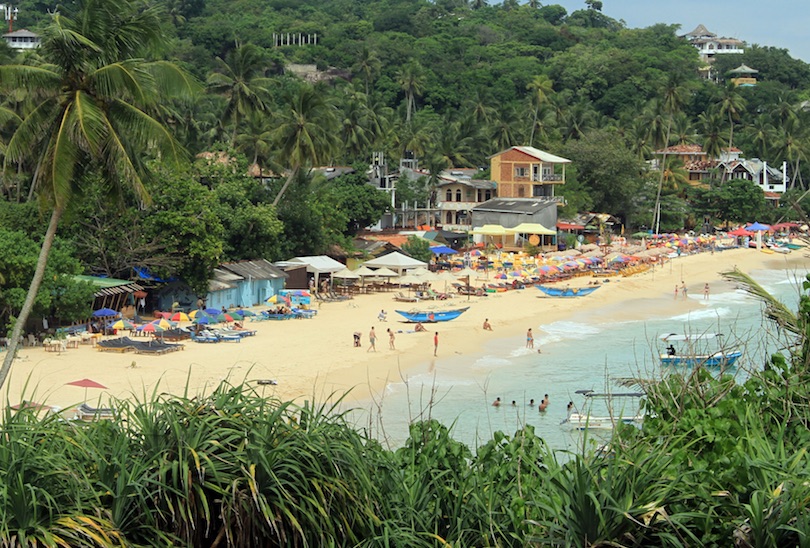
This white sand beach in the small seaside town of Unawatuna is a great place to relax. There are a number of snorkeling and diving operators in town who take advantage of the abundance of coral reefs just off the beach.
Colorful fish and plentiful turtles are the norm in these waters. There are a number of great dining options along the beach, which welcome visitors to use their sun loungers and relax the day away with a drink in hand.
12. Gal Viharaya [SEE MAP]
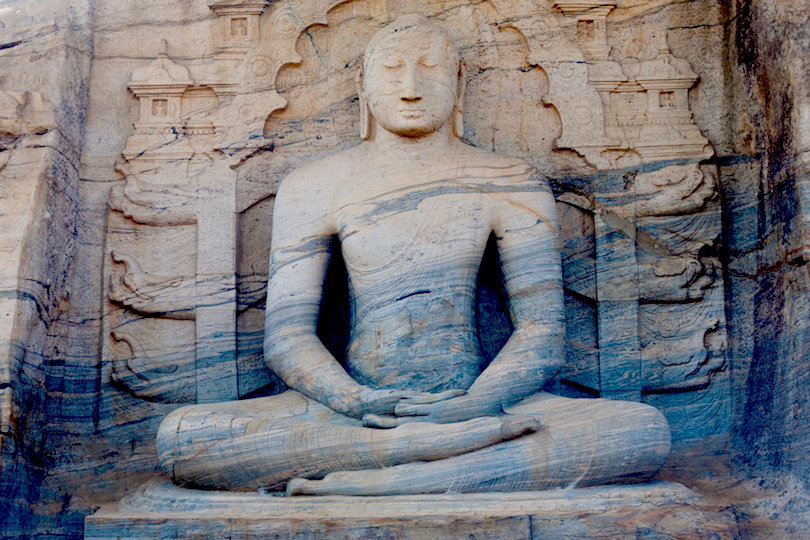
Visitors can find Gal Viharaya in the ancient city of Polonnaruwa. Gal Viharaya is a famous Buddhist site and is celebrated for its many caves and large sculptures of Buddha which are carved into the rock faces. They are extremely well preserved, even though they were crafted in the 12th century.
To the side of one of the statues, a code of conduct is inscribed. The code, when followed, was meant to purify the Buddhist monks and bring them together under one order. It was created by a very famous king: King Parakramabahu the first. Today, Gal Viharaya is one of Sri Lanka’s most popular sites of pilgrimage.
11. Kataragama Festival [SEE MAP]
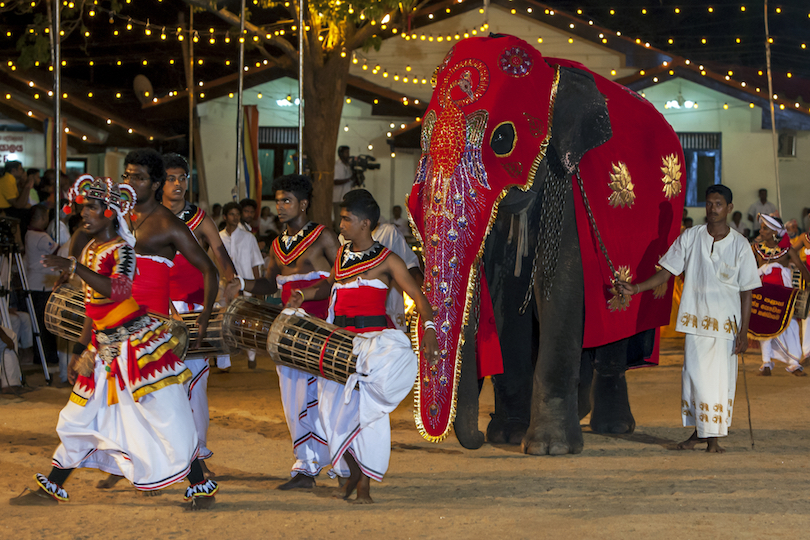
One of the most popular tourist attractions in Sri Lanka, the Kataragama Festival takes place every year in July or August and is dedicated to one of the Hindu gods. It takes place over a two-week period and people from all over the world come to join in.
The festival is jam-packed with parades of elephants and colorfully dressed performers. There are countless traditional dances that take place; with musicians, acrobats, and fire-breathers feeding into the festival’s contagious energy.
10. Udawalawe National Park [SEE MAP]
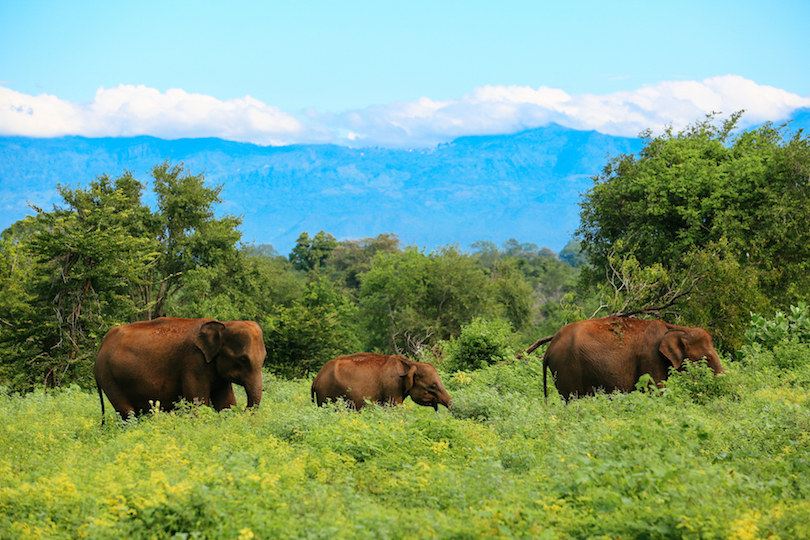
There are few places in the world where elephant sightings are so frequent. However, elephants are not the only animals to see within Udawalawe National Park; peacocks, jackals, water buffalo, crocodiles, monkeys and deer also roam the area.
Safaris are most popular in the early morning hours when animals are at their most active. The biodiversity of the park can be attributed to its varied landscape; it is flanked by mountain ranges to the north with wetlands and rivers hugging the grasslands and forests at the base of the mountains.
9. Ravana Falls [SEE MAP]
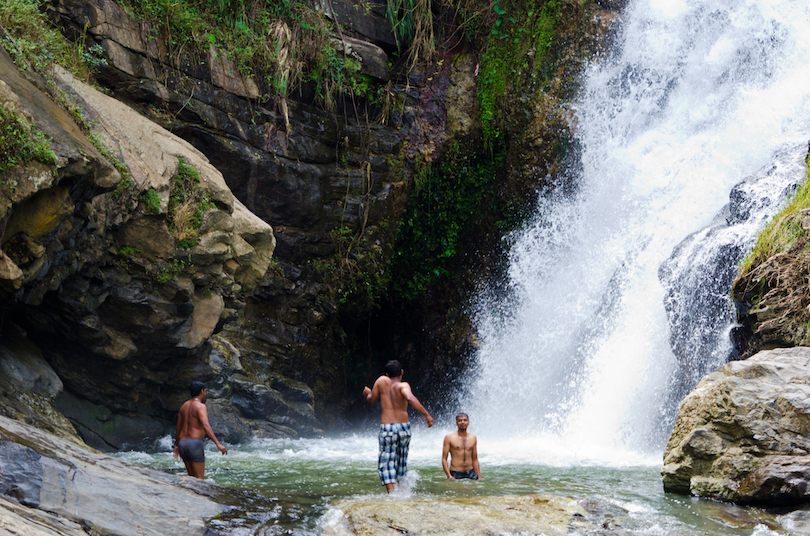
The beautiful Ravana Falls are used for bathing in the hot summer months. In the rainy season, the water flow is exceptionally strong and is an impressive sight. The falls are part of the Ravana Ella Wildlife Sanctuary, and the nearby cave complex is rich in local legend.
Conveniently located on the main road on the way to Ella town, the caves are a common stop off point for visitors during their journey. Many cheeky monkeys live in the surrounding trees and they are often seen on the roadside dining on fruit. However, don’t let them get too close, as sometimes they can get over-friendly with visitors.
8. Dambulla Cave Temple [SEE MAP]
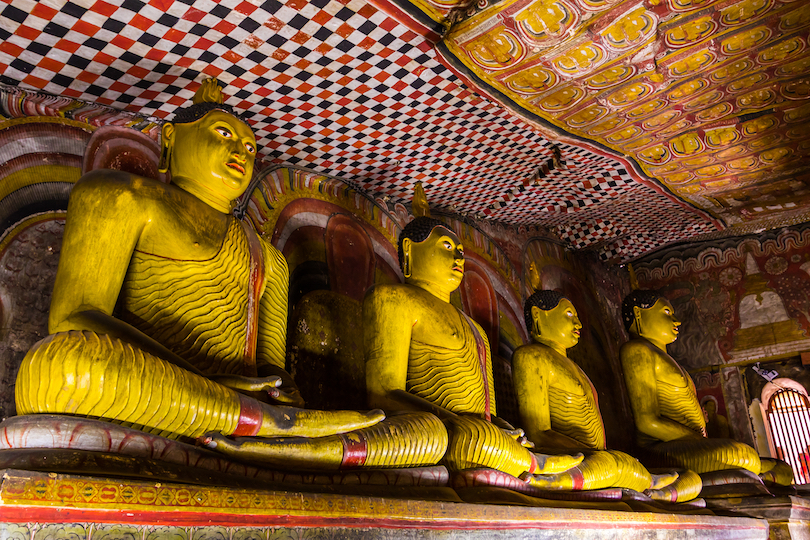
The Dambulla Cave Temple is a sacred Buddhist site. There is no entry fee to get into the temple on full-moon days; however, these days are especially busy because of the religious significance of this lunar phase. Devotees from all over the world make pilgrimage to this place.
There are over 80 caves documented in the area, but the most famous five are outfitted with impressive statues and paintings. Some of the caves date back to 1000 BC, when prehistoric Sri Lankans would have lived within them, so it is unsurprising that they would have created temples inside at that time. If you do plan to visit, please be aware that visitors must cover their shoulders and legs and remove shoes before entering the temple.
7. Mirissa [SEE MAP]
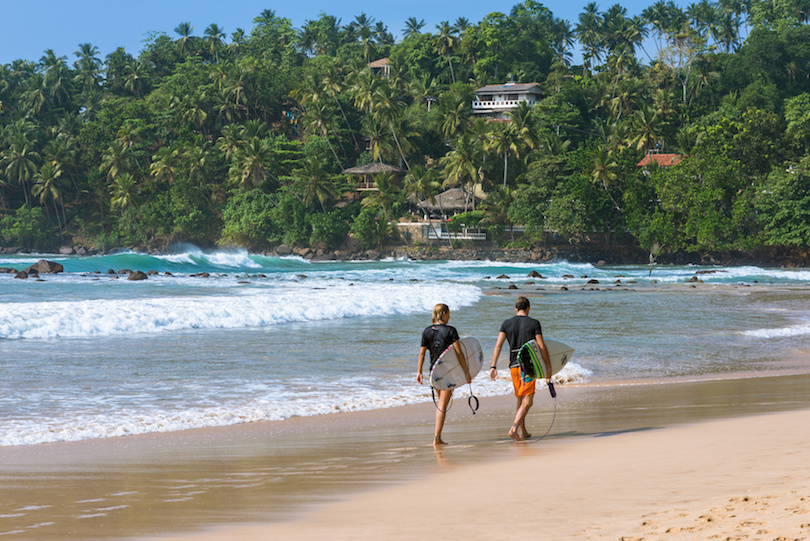
Mirissa is the ultimate Sri Lankan beach getaway. The beautiful long beach is flanked by tall overhanging palm trees and lined with modern restaurants and hotels. The restaurants have western style food at Sri Lankan prices. Just off the beach is Parrot Rock. It has a small staircase leading to the top that offers great views of the ocean and coastline.
Day trips from Mirissa include whale watching, snorkeling and surfing. Weligama, just a few kilometers from Mirissa, is one of the best beaches in Sri Lanka to learn surfing. Come happy hour and into the evening, many the restaurants turn their venues into beach clubs and pump out drinks and tunes.
6. Arugam Bay [SEE MAP]
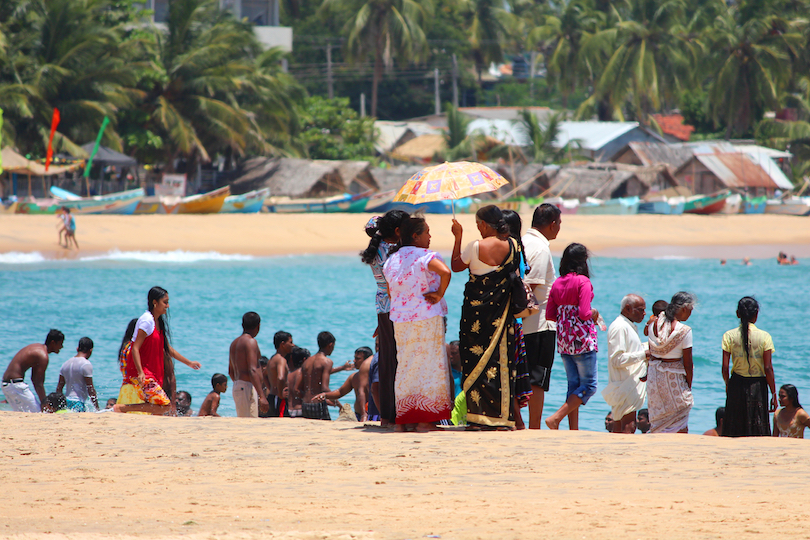
Arugam Bay is revered by surfers. This small town on the east coast of Sri Lanka embodies the quintessential laid-back surf lifestyle. The Main Point surf break is within walking distance from the town center, but is only recommended for advanced or intermediate surfers.
Otherwise, Whiskey Point or Peanut Farm are two great surf beaches for beginner and intermediate surfers; a short tuk-tuk ride will take you there. Often elephants and peacocks can be spotted beside the road, just outside of town. The main strip in Arugam Bay town is lined with restaurants and hotels where you can dine on anything from traditional Sri Lankan curry to full English breakfasts.
5. Temple of the Tooth [SEE MAP]
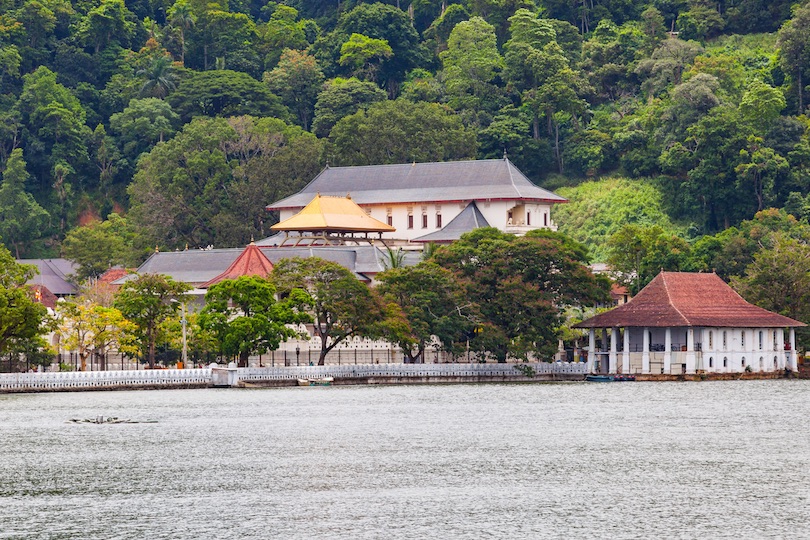
The Temple of the Tooth is a highly sacred place. The temple contains one of Buddha’s teeth. Legend has it that the tooth was taken from the Buddha on his deathbed, then smuggled to Sri Lanka from India. It was smuggled in the hair of a princess, after her father’s kingdom had been besieged.
It immediately became an object of great importance and has been celebrated and paraded throughout history. However, many attempts have also been made to steal or destroy the tooth. Twice daily, pujas are held to celebrate the relic and offer visitors and devotees the chance to get a glimpse of the tooth within its casing.
4. Adam's Peak [SEE MAP]
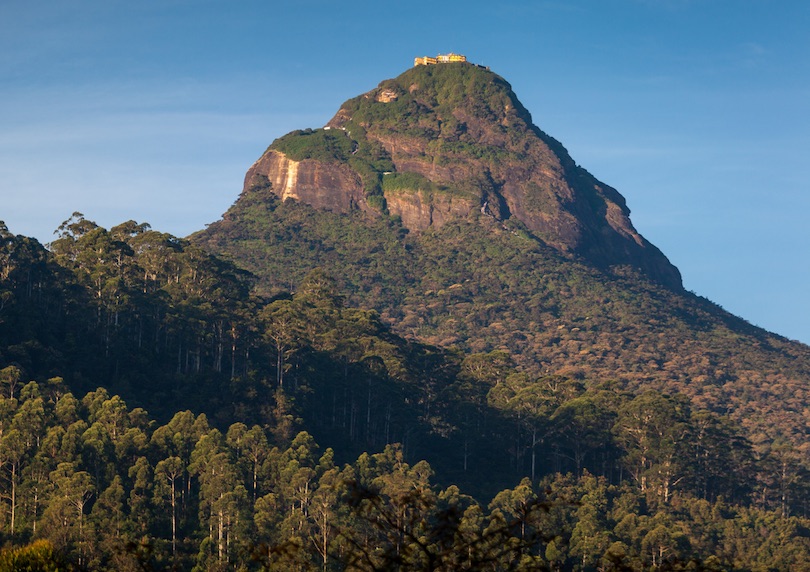
At the summit of Adam’s Peak is a footprint cast in stone. It has spiritual significance to a number of different religions, however, there is currently a Buddhist monastery at the summit. To the Buddhists, the footprint is that of Buddha’s; to Christians, the footprint is Adam’s; and to Hindus, the footprint is attributed to Shiva.
The site is a popular place of pilgrimage, especially on full moon nights. The trek to the top of the mountain to see the footprint is via a steep staircase containing over 5000 steps. The trail is lined with many tea stalls and food shops which act as places of rest. Most people begin their hike at 2:30 am to reach the summit in time for sunrise.
3. Galle Fort [SEE MAP]
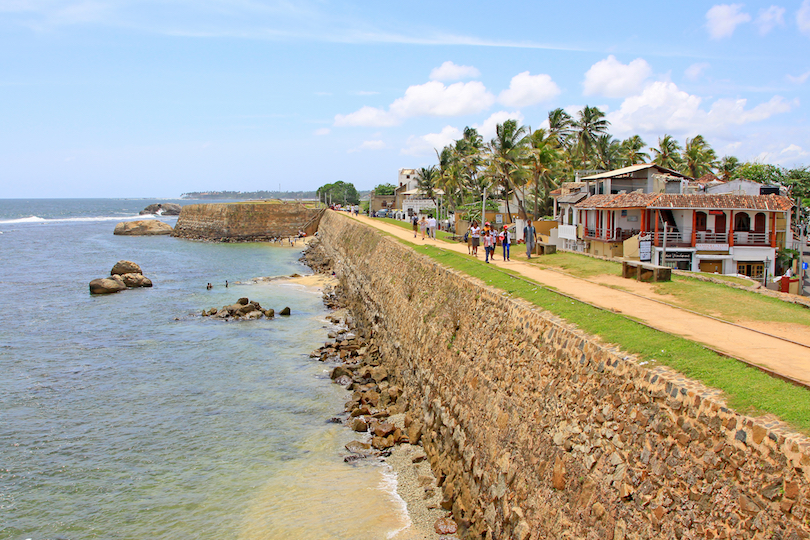
It is easy to get lost in the cobblestoned alleyways and streets within Galle Fort. Today the area is full of modern restaurants, hotels, clothing, and souvenir shops. Meanwhile, snake charmers and buskers line the seawall.
However, the fort was not always such a cosmopolitan spot. A basic fort was constructed by the Portuguese when they made their first landing to the island in 1505. When the Dutch eventually seized control of Galle , they made a number of improvements; including the enormous sea wall that still lines the fort. Galle Fort is an excellent example of what the synthesis between European and Asian architecture looks like.
2. Yala National Park [SEE MAP]
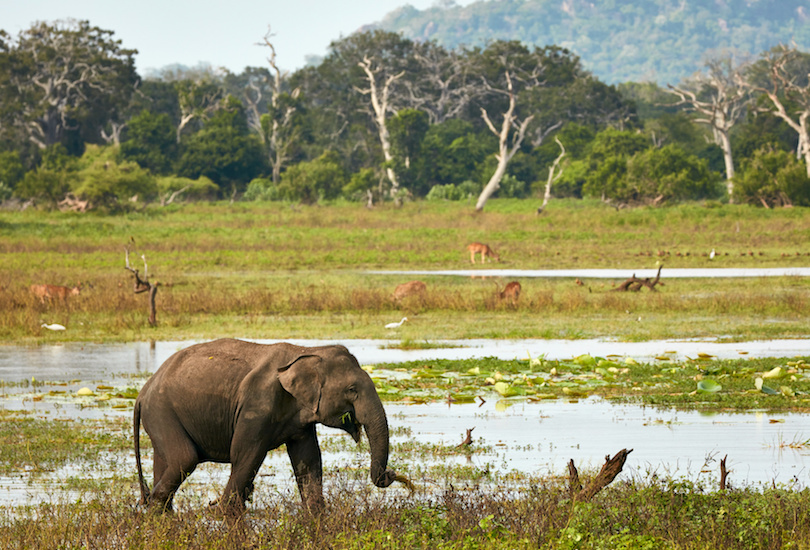
Yala National Park is made up of spellbinding vistas and a true abundance of Sri Lankan wildlife. It has the highest density of leopards in the world, so chances of seeing them are very high.
Although leopards are the main attraction here, they are followed closely by elephants, sloth bears and crocodiles. The park is divided into five blocks; some of which were zoned to hunters until Yala became a national park in 1938. Ensure you make time to visit the very informative visitor center at the entrance of the park for insightful displays about the area.
1. Sigiriya Rock Fort [SEE MAP]
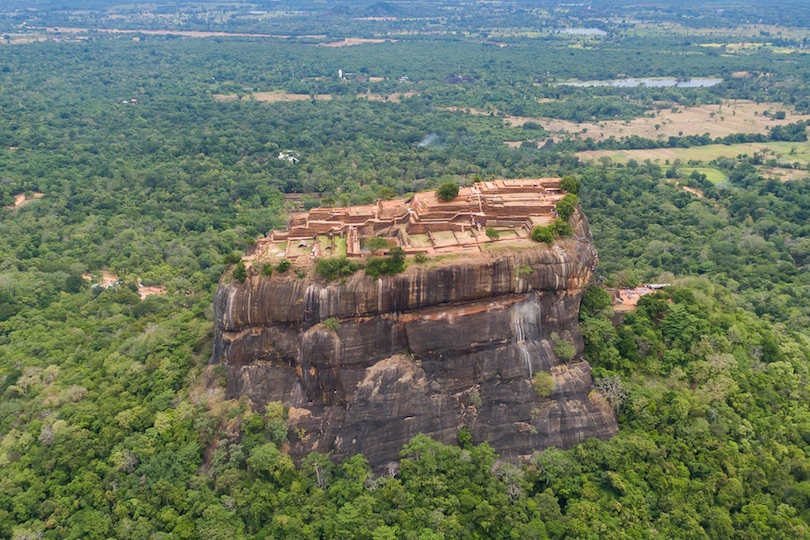
Sigiriya Rock Fort is utterly impressive. The rock walls rise up 200 meters from the ground, only to give way to a flat plateau at their summit. There are steep stairwells to reach the top and many frescos to marvel at on the way up. At the top, you can find the remains of an ancient civilization, including relics of a palace and monastery.
It would have taken true engineering ingenuity to build a structure at this height so many centuries ago. Around the rock fort are many important caves and gardens; impressively, they are some of the first landscaped gardens in the world.
Share this post:
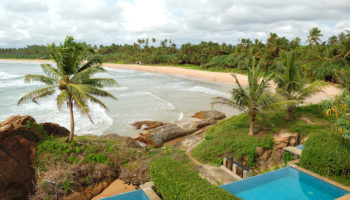
10 Best Beaches in Sri Lanka
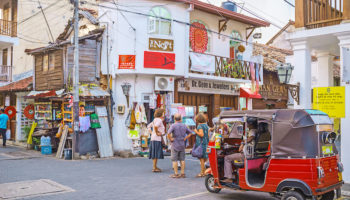
Where to Stay in Sri Lanka: Best Places & Hotels

10 Best Places to Visit in Sri Lanka
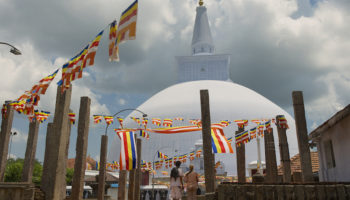
15 Best Cities to Visit in Sri Lanka
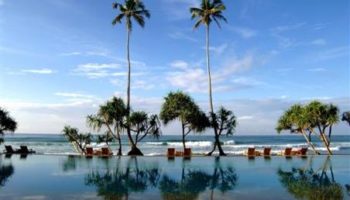
10 Best Sri Lanka Beach Resorts
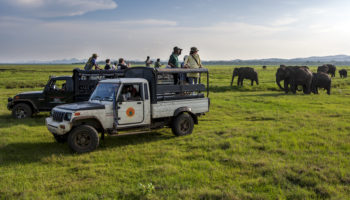
10 Most Beautiful National Parks in Sri Lanka
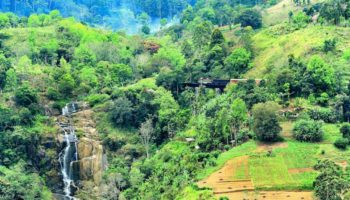
9 Most Beautiful Provinces in Sri Lanka
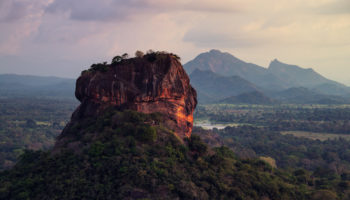
Discover the Sigiriya Rock Fortress in Sri Lanka
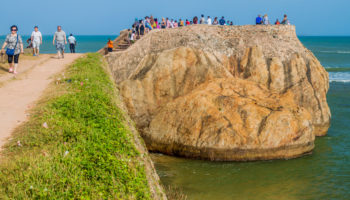
15 Best Things to do in Galle, Sri Lanka
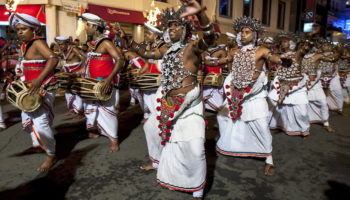
12 Best Things to do in Kandy, Sri Lanka
Reader interactions, leave a reply cancel reply.
Your email address will not be published. Required fields are marked *
This site uses Akismet to reduce spam. Learn how your comment data is processed .
You will be redirected to your dashboard shortly. We will also call you back in 24 hrs .
- 18 Amazing And Most-Visited Sri Lanka Tourist Places For Your 2024 Trip
23 Mar 2023
Do you want to leave behind all your work deadlines and travel to a distant land far away from all maddening rush? Are you looking to relax lazily on a hammock? Do you want to let go of all anxieties? Well, then a trip to Sri Lanka is all that your ultimate healer. With its pristine beaches, mosaic landscape and picturesque topography, Sri Lanka has so much to offer. So back your virtual bag and let’s run through the best Sri Lanka tourist places .
Before we move forward with this blog post, let us first get an idea of the essentials. Sri Lanka boasts of some of the world’s best beaches, and the interiors of the island nation also have a lot to offer. Here are some of the must-see tourist attractions in Sri Lanka.
18 Best Sri Lanka Tourist Places
While planning your next vacation to this serene country, do check out these amazing Sri Lanka tourist places . Here is a complete list of the best places to visit in Sri Lanka where one can enjoy a great time away from the hustle-bustle.
- The Dambulla Cave Temple – The Largest Temple Complex In Sri Lanka
- Yala National Park – Home To A Host Of Wildlife And Birds
- Arugam Bay – Turquoise Heaven For Adrenaline-Junkies
- Sigiriya and Polonnaruwa – Ruggedness Amidst The Greenery
- Galle – A 16th Century Marvel
- Jaffna – Peep Into The Past
- The Commonwealth War Cemetery At Kandy – Remember The Brave Martyrs
- Temple Of Tooth At Kandy – Treat To The Eyes And Soul
- Nuwara Eliya – Get Closer To Pristine Nature
- Trincomalee – An Unmissable Beach Getaway
- Polonnaruwa Sacred City – Explore The Golden Past Of Sri Lanka
- Anuradhapura – The Greatest Monastic City Of Ancient World
- Nine Arch Bridge – Bridge In The Sky
- Mihintale – The Birth Place Of Buddhism
- Udawalawe National Park – Must-Visit Place For Wildlife Enthusiasts
- Ravana Falls – Enjoy The Impressive Sight Of The Magnificent Fall
- Adam’s Peak – An Important Pilgrim Site
- Mount Lavinia – Popular Neighborhood
1. The Dambulla Cave Temple – The Largest Temple Complex In Sri Lanka
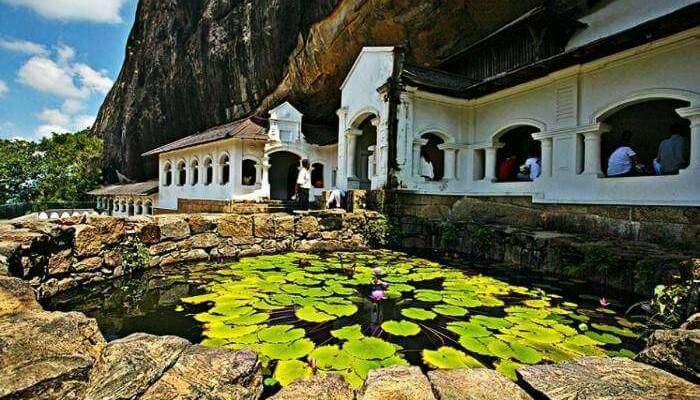
The most popular among the best places to visit in Sri Lanka is the Dambulla cave temple . It tops the Sri Lanka tourist destinations. The largest temple complex in Sri Lanka, its statues and paintings date back to the 12th Century AD. The temple complex has five rooms of different sizes; all rooms have Buddha in a different position looking calm and peaceful. The temple is built on a black rocky mountain which serves as a nice contrast with the white walls of the temple. Don't miss the view from the top. The temple can be easily accessed from both Colombo and Kandy.
Famous For: Historic significance Things To Do: Architectural tour, Sightseeing
Must Read: 31 Reasons Why You Should Never Visit Sri Lanka For A Vacation!
Sri Lanka Holiday Packages On TravelTriangle

Sri Lanka Tour Package 4D/3N Hills & Beaches @ Rs 16,500
Plan your trip today!

Sri Lanka Family Holiday 5D/4N Package @ Rs 22,999
Get quotes from multiple travel experts.

Scenic Sri Lanka Honeymoon 6D/5N Package @ Rs 25,670
Compare & customize quotes before booking.
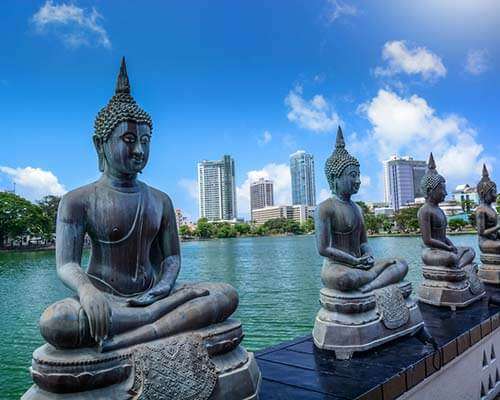
Best Selling Sri Lanka Family 6D/5N Package @ Rs 30,934
Have Questions? Talk to our travel experts today.

Adventurous Sri Lanka Tour 7D/6N Package @ Rs 34,500
Best prices guaranteed. EMI option available.

See more at TRAVELTRIANGLE.COM
2. Yala National Park - Home To A Host Of Wildlife And Birds
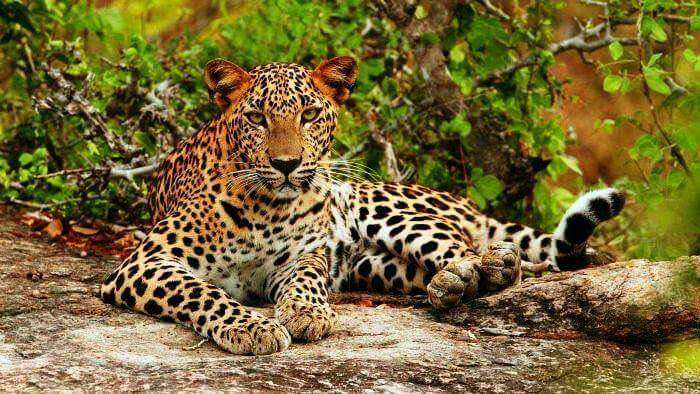
Missing Yala National Park while Sri Lanka sightseeing might bring regret to wildlife lovers. It is home to a host of wildlife and birds you are bound to run into a group of elephants bathing in streams, tossing their trunks wildly or leopards nestling lazily on tree branches. You could opt for the safari drives or a nature trail among the thick green foliage of the forest. Some tourists also camp at Yala and enjoy a barbeque under the stars. With so much to see and do here, Yala is indeed one of the best tourist places in Sri Lanka . Yala is the perfect place to try your hand at wildlife photography.
Getting to Yala National Park is quite simple. All you will have to do is drive down to the Park from Colombo. Another way is by taking a bus to Tissamaharama.
Famous For: Wildlife, Flora & Fauna Things To Do: Wildlife Safari, Trekking Location: Katagamuwa, Yala, Sri Lanka Timings : 6 am to 6 pm
3. Arugam Bay - Turquoise Heaven For Adrenaline-Junkies

Sri Lanka has a coastline of over 1600 km and is ideally suited for windsurfing, speed boating, and other water sports. Arugam Bay has azure skies and slanting coconut trees. If you are looking to surf in turquoise waters, Arugam Bay must be in your list of must-see tourist places in Sri Lanka . It is on the southeast coast around 320 km from Colombo.
It is the ideal place to sip coconut water, take in the scent of jasmine and allow the southern sun to tan your skin.
Besides Arugam bay, other beaches among best places to visit in Sri Lanka are Unawatuna in the South; and Tangalla again in the south around 195 km south of Colombo.
How to get there- Colombo has an international airport and is strategically located. So if you fly to Colombo, you are pretty much in close proximity to the best beaches.
Famous For: Seashore Destinations Things To Do: Surfing, Snorkeling Flight Charges from India: INR 15,000 for an adult if booked two months in advance Best beaches around Colombo: Benota, Mirissa, Koggala, Trincomalee, Pasikudah, Unawatuna, Tangalla and Arugam Bay Best time to visit: Between November and March Best Hotels to stay: Weligama Bay resort, The Fortress Resort Galle, Palace Mirissa, and Number One Mirissa
Suggested Read: Sri Lanka In August: A Guide To Treat Yourself With The Magic Of Monsoon!
4. Sigiriya and Polonnaruwa - Ruggedness Amidst The Greenery

Sigiriya or the mount of remembrance is a World Heritage Site and one of the most stunning places to see in Sri Lanka. This giant formation of rock rises out of nowhere towering over everything in its vicinity. It is quite a climb to the top but once up there you will get to see a panoramic view of the nearby sights and the Sigiriya fort. The rock fortress is a slice of history perched on a rock and is really worth a visit.
Not much is heard and said about Polonnaruwa, but this ancient city is no less than the Petra of the south. A gem among Sri Lanka tourist attractions, this ancient ruined city stands amidst its erstwhile sturdy columns and architecture. The best way to explore this ancient city is to hire a bike and zoom around the ruins. The site is well maintained and is a telling example of Sri Lankas history and culture. Polonnaruwa can be easily accessed via Sigiriya. You can take a tuk-tuk or a bus from Sigiriya. Or you can take a bus from Dambulla to Polonnaruwa.
Best Hotels to Stay: Jetwing Vil Uyana, Camelia Resort and Spa, Hotel Sigiriya, Camellia Resort and Spa, and Lal Homestay
Suggested Read: Ramayana Tour In Sri Lanka: Exploring The Religious Trail In The Island Nation
5. Galle - A 16th Century Marvel

Galle is an important city in Sri Lanka and is a one-stop destination wherein you can take in all sights and sounds. One of the best places to visit in Sri Lanka is the Galle Fort. The Galle Fort area has wide cobblestoned roads and a number of eateries and cafes. Try and catch the sunset while you are there. There are a number of trinket shops and galleries that you can visit. It is among the most visited places in Sri Lanka.
Another picturesque destination for sightseeing in Sri Lanka is the Japanese Peace Pagoda. Quite close to the Unawatuna beach, it is a white dome of serenity.
Best Hotels to Sty: Jetwing Lighthouse, Amangalla, Tamarind Hill, Apa Villa Thalpe, and The Fortress
6. Jaffna - Peep Into The Past
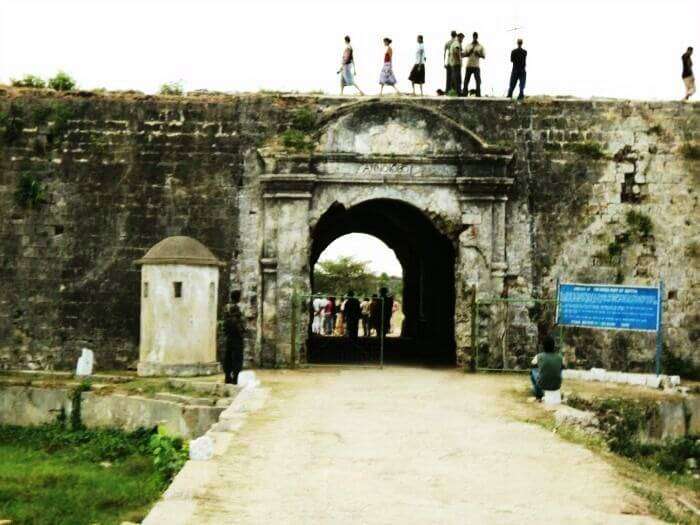
Although a bit crowded, the temple Nallur Kovil is a nice pick among the best places to see in Sri Lanka. Another place of interest is the Jaffna Fort. This fort is in the center of the city and is a tourist hub. If youre in Jaffna, you cannot miss the Nagadipa Purana Vihara, the temple can be accessed by boat. One of calmest among Sri Lanka tourist attractions, the temple is surreal and a wonderful place to meditate.
Best Hotels to Stay: PJ Hotels, and Morgans
Suggested Read: 19 Photos That Will Make You Wish You Were In Sri Lanka Right Now!
7. The Commonwealth War Cemetery At Kandy - Remember The Brave Martyrs

Yes, a weird one in the list of best places to visit in Sri Lanka, the war cemetery is well maintained and the grounds are well kept. Overall it is a very humbling experience. This cemetery is hard to find without a guide, but once you get there, it is worth the effort.
Location: Kandy, Sri Lanka Timings: 7 am to 4 pm
Suggested Read: 30 Best Beaches In Sri Lanka
8. Temple Of Tooth At Kandy - Treat To The Eyes And Soul
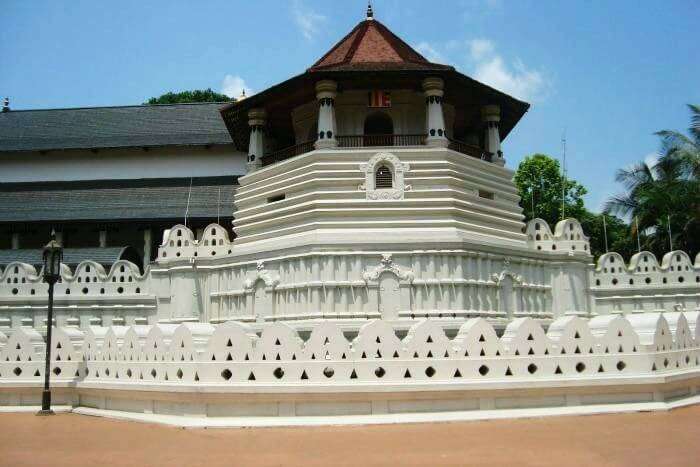
The temple of the tooth is again a popular one among tourist places in Sri Lanka. This temple in Kandy is iconic because of the history attached to it. With a quaint setup and interesting artifacts, this temple is worth a visit.
Location: Sri Dalada Veediya, Kandy 20000, Sri Lanka Timings: 5.30 am to 8 pm
9. Nuwara Eliya - Get Closer To Pristine Nature
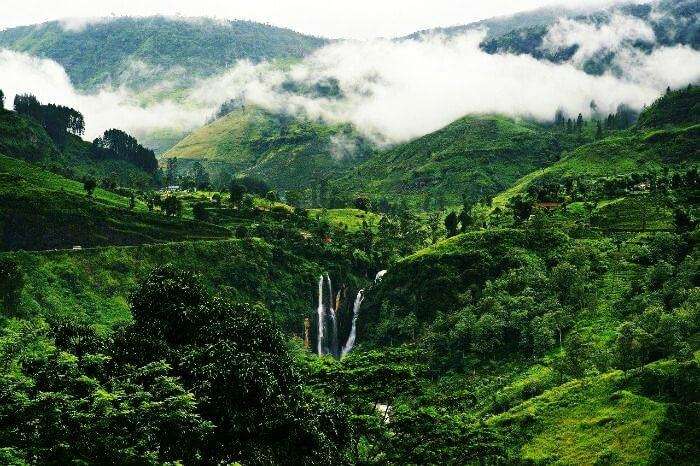
Nuwara Eliya is most famous for its tea gardens and scenery. It is a perfect place to visit for a romantic vacation or for someone who is looking for a relaxing trip. With misty clouds, lush green sloping hills and a train that looks that it has come out of the Harry Potter films, Nuwara Eliya is a hilly paradise and another great addition to Sri Lankas tourist attractions. The popular places to visit in Nuwara Eliya include Victoria Park, Bale Bazaar, Moon Plains, Ramboda Falls and St. Clair’s Falls.
Suggested Read: Sri Lanka Travel Tips: 21 Dos And Don’ts For A Memorable Vacation
10. Trincomalee- An Unmissable Beach Getaway
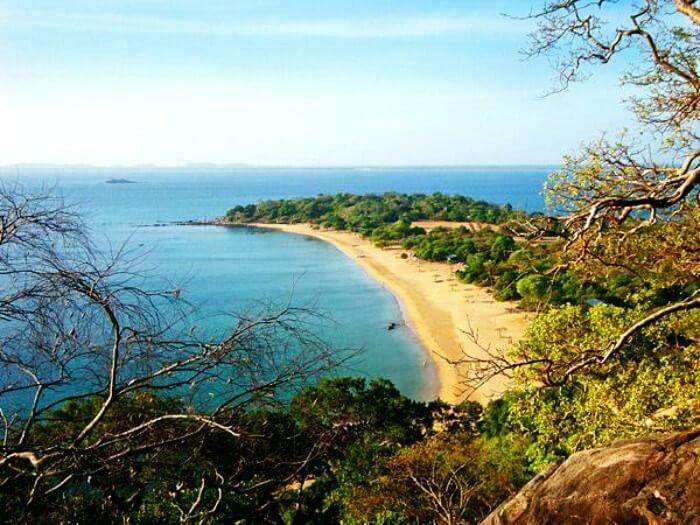
Trincomalee, among many similar Sri Lanka tourist spots, is blessed with a beautiful beach. If you are up for an underwater diving tour, then SLDT (Sri Lanka Diving Tours) will give you the best experience. Besides water sports, there are also many temples and beaches in Trincomalee. There's also a war cemetery which is surrounded by lush gardens, which makes it one of the best places to see in Sri Lanka.
11. Polonnaruwa Sacred City – Explore The Golden Past Of Sri Lanka
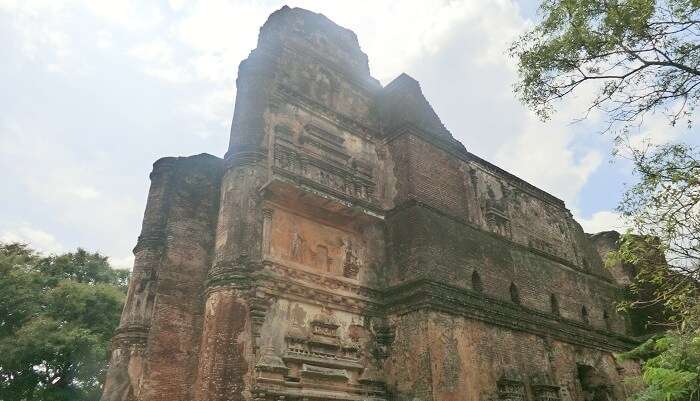
Image Source
This city was once the ancient kingdom of Sri Lanka and walking into this still gives a feeling of the Golden Age. Inside one of the most popular Sri Lanka tourist spots, there are still ruins of palaces, shrines and stupas which makes it one of the top tourist attractions in Sri Lanka. All these landmarks give closure to the historical remains which hold a glorious past. This place has a lot to explore and gives a peek to the golden past of this side of Sri Lanka. It is among the best Sri Lanka tourist places.
Main Highlights: One shouldn’t miss witnessing the statue of Parakramabahu I who ruled during the golden age. Alongside that one can also see the magnificent view of the Lotus Pond which is made in lotus-shaped petals and built on 4-tiers.
Suggested Read: Sri Lanka In January
12. Anuradhapura – The Greatest Monastic City Of Ancient World

This is one of the top Sri Lanka tourist spots which is also claimed to be one of the world heritage sites. The place gained its importance after the arrival of the Bodhi Tree which is also called the “tree of enlightenment”. The place protects the tree and keeps it away from the wild elephants during the reign of King Kirthi Sri Rangasingha.
Best Time To Visit: April and September Location: It is approximately hours from Anuradhapura-Padeniya highway Price: $25 (INR – 1781)
13. Nine Arch Bridge – Bridge In The Sky
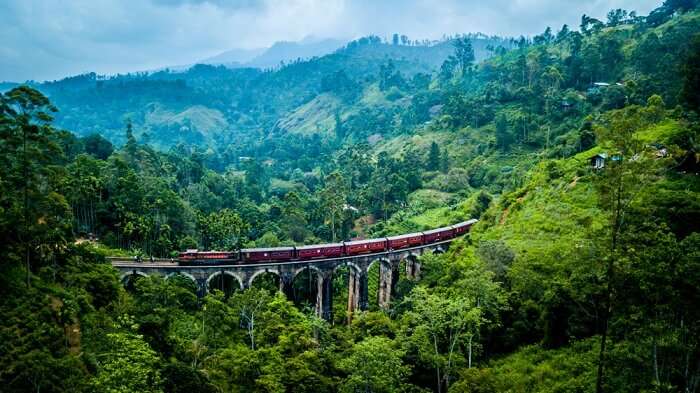
Nine Arch Bridge is also called the Bridge in the sky and is among the iconic Sri Lanka tourism places . It is in the small mountain town of Ella and offers visitors with splendid view of the surrounding area which comprises of lush greenery and tea fields. What makes the bridge unique is that it is made up of stone, brick and cement. There is no use of any steel. It is one of the best places to visit in Sri Lanka for a memorable holiday.
Best Time To Visit: Sunrise
Suggested Read: Ekansh’s Anniversary Trip To Sri Lanka In April Was A Bouquet Of Beautiful Memories
14. Mihintale – The Birth Place Of Buddhism

Mihintale is among the top Sri Lanka tourist attractions . It is a birth place of Buddhism attracting hundreds of pilgrims to this site every year. It is a mountain located near the town of Anuradhapura where you can visit many religious and historical structures.
Suggested Read : Keep This Ultimate Sri Lanka Honeymoon Guide Handy For Your Tropical Vacation
15. Udawalawe National Park – Must-Visit Place For Wildlife Enthusiasts

Udawalawe National Park is a must-visit place for wildlife lovers. It is one of those few places where elephant sightings are quite frequent. Not only elephant, you get a chance to get a glimpse of many animals including peacocks, water buffalo, crocodiles, jackals, monkeys and deer. For the best experience of this top attractions in Sri Lanka , take a safari early morning when the animals are most active.
Location : Udawalawa, Sri Lanka Timings: 6.00 AM to 6.00 PM
Suggested Read: 45 Best Places To Visit In Colombo
16. Ravana Falls – Enjoy The Impressive Sight Of The Magnificent Fall
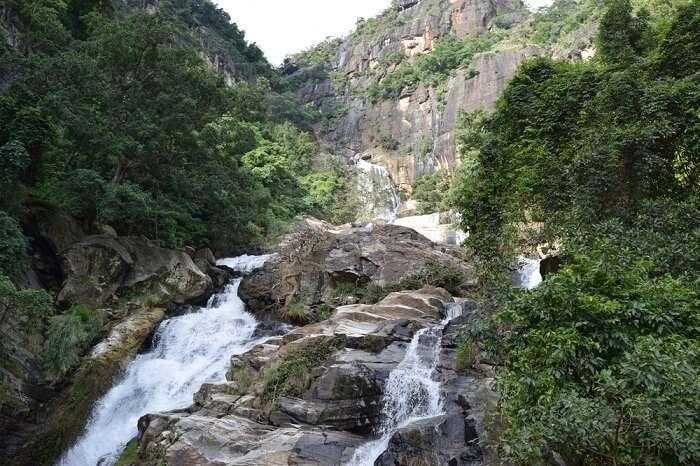
The beautiful Ravana falls is one of the famous Sri Lanka attractions . The majestic and magnificent fall is an impressive sight especially during the rainy season. Located on the main road to Ella, it is a common stop for the visitors during their journey. During the hot summer months, the falls are used for bathing. It is among the most stunning waterfalls in Sri Lanka.
Location : Colombo – Galle – Hambantota – Wellawaya Rd, Ella 90900, Sri Lanka Timings: Open 24 hours
Suggested Read: Top 10 Things To Do In Kandy For Couples That Assure Ultimate Fun In Sri Lanka!
17. Adam’s Peak – An Important Pilgrim Site
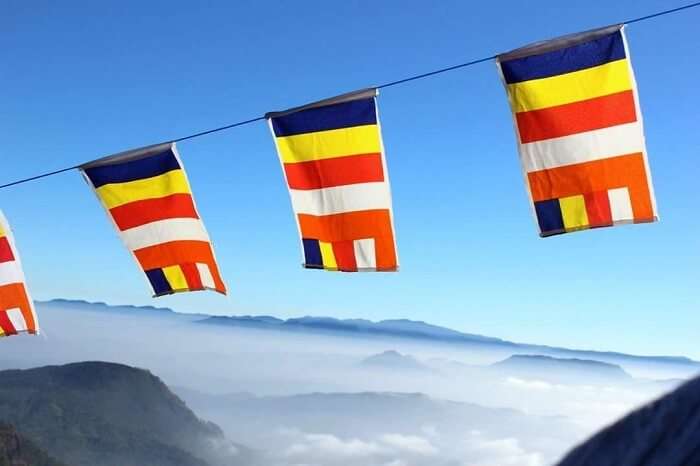
Adam’s Peak is another famous tourist attractions in Sri Lanka . The topmost point of the peak has a footprint cast in stone which has spiritual significance to different religions. Many pilgrimage trek to the top on full moon nights. Most of them also start hiking around 3 AM to reach the summit by sunrise for a splendid view. It is also one of the most popular honeymoon places in Sri Lanka .
Location: Sabaragamuwa, Sri Lanka
18. Mount Lavinia – Popular Neighborhood

Image Credit: honeplus for Wikimedia
Mount Lavinia is one of the most romantic tourist places in Sri Lanka . It is popular among the tourists for its vibrant nightlife and Golden Mile Beach. On your visit to this place, make sure to stay at the deluxe Mount Lavinia Hotel for an amazing experience. Located centrally, enjoy the gorgeous view of Colombo’s skyline and have the best seafood at Mount Lavinia beach and a lot more. This is one of the Sri Lanka tourism places you must not miss. It is also surrounded by some of the best beaches in Sri Lanka .
Timings: 7 am to 7 pm
Suggested Read: Koggala Beach: An Ultimate Guide To Explore This Hidden Paradise In Sri Lanka
Best Time To Visit Sri Lanka
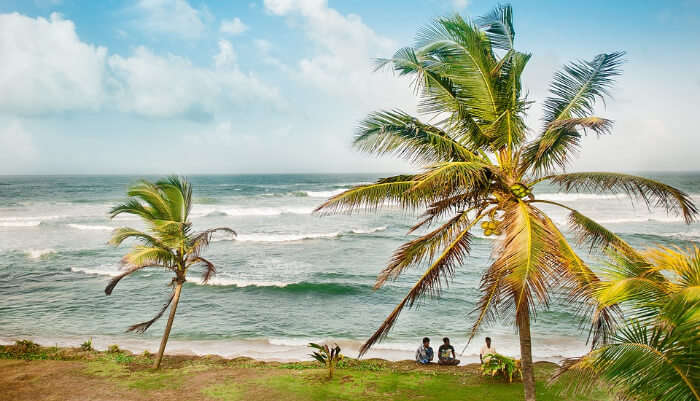
Sri Lanka doesn’t experience extremes when it comes to weather conditions. The best time to visit Sri Lanka depends upon the region you’re keen to visit. December to March is the perfect time for visiting most of the country (Highlands, West Coast, and South coast). May to September is ideal for visiting the Eastern Coasts.
Further Read: Beyond Thailand: 10 Alternate Travel Destinations in Asia
If you want to make a trip abroad and benefit from the exchange rate, then book your trip to Sri Lanka. So pamper yourself and indulge your senses in the rich heritage and diverse beauty by visiting these top Sri Lanka tourist places.
Disclaimer: TravelTriangle claims no credit for images featured on our blog site unless otherwise noted. All visual content is copyrighted to its respectful owners. We try to link back to original sources whenever possible. If you own rights to any of the images, and do not wish them to appear on TravelTriangle, please contact us and they will be promptly removed. We believe in providing proper attribution to the original author, artist or photographer.
Please Note: Any information published by TravelTriangle in any form of content is not intended to be a substitute for any kind of medical advice, and one must not take any action before consulting a professional medical expert of their own choice.
Frequently Asked Questions About Sri Lanka Tourist Places
How safe is sri lanka from the coronavirus epidemic.
The Sri Lankan government and the tourist department are taking strict measures to curb the situation related to the Coronavirus outbreak. Visa-on-arrival has been prohibited to tourists from China and screening tests are in effect at the international airports.
What are the most beautiful places in Sri Lanka?
There are various places in the country of Sri Lanka that are considered to be quite beautiful. Some of them are: 1. Polonnaruwa 2. Yala National Park 3. Temple of the Tooth Relic 4. Pinnawala Elephant Orphanage 5. Adams Peak 6. Nuwara Eliya 7. Beira Lake
What is Sri Lanka famous for?
Sri Lanka is known for its culture. There’s a lot to explore and experience in this country. You can even go shopping at this place for a great experience. You can buy gems, tea, fabrics, handicrafts, antiques, ceramics, leather products, and more.
How many days are enough for Sri Lanka?
To cover maximum places in the country of Sri Lanka during your vacay and make the most of it, you need to plan a trip for at least 5 days and 4 nights.
What are the best Buddhist places in Sri Lanka?
The best Buddhist places in Sri Lanka are Mirisawetiya Stupa, Gangaramaya Buddhist Temple, and Kelaniya Raja Maha Vihara.
Looking To Book An International Holiday?

Trip to Sri Lanka at Rs 13,500/-
Plan Your Vacation Today!

Trip to Singapore at Rs 20,499/-
Get Quotes From Local Experts

Mauritius Holiday Starting at Rs 65,000/-
Talk to Our Experts Today

Maldives Honeymoon Trip at Rs 39,800/-
Pay with easy EMI Option

Europe Trip at Rs 89,999/-
All Inclusive Deals

Vacation in Dubai at Rs 27,499/-

Hong Kong Holiday at Rs 24,999/-
Money Safe Guarantee

Thailand Holiday at Rs 7,999/-
Flights Excluded
People Also Read:
Tourist Places In Bhutan Tourist Places In Dubai Tourist Places In Nepal
Recent Posts

17 Meilleurs endroits à visiter en Hongrie en 2024, le joyau de la couronne d’Europe!
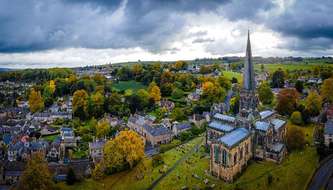
12 Amazing Small Towns In UK That You Must Visit
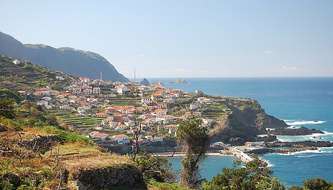
10 Prettiest Small Towns In Portugal That You Must Visit
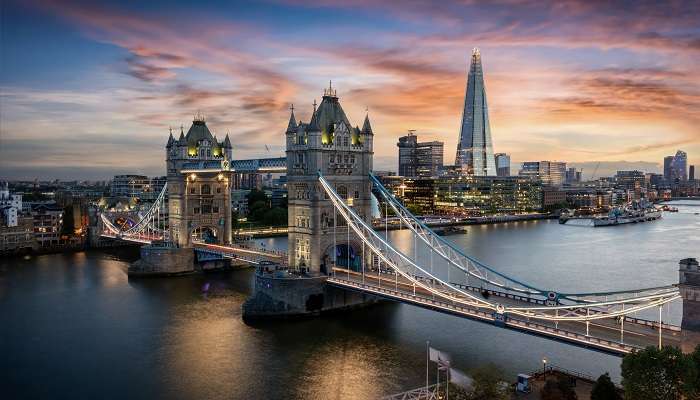
5 Endroits à visiter en Europe en juin pour une expérience merveilleuse
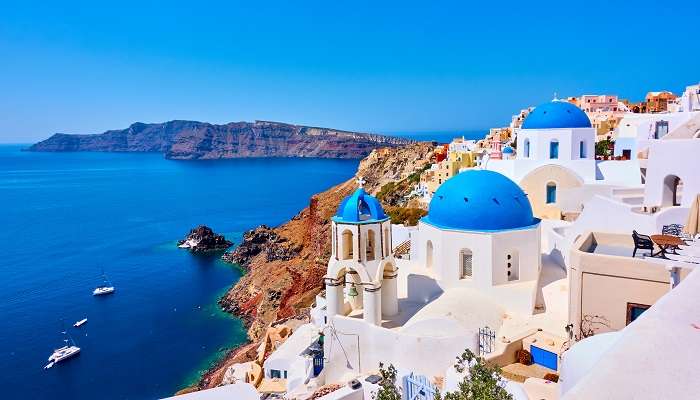
Les meilleurs 27 des endroits à visiter en Grèce en 2024 pour des vacances parfaites en Méditerranée
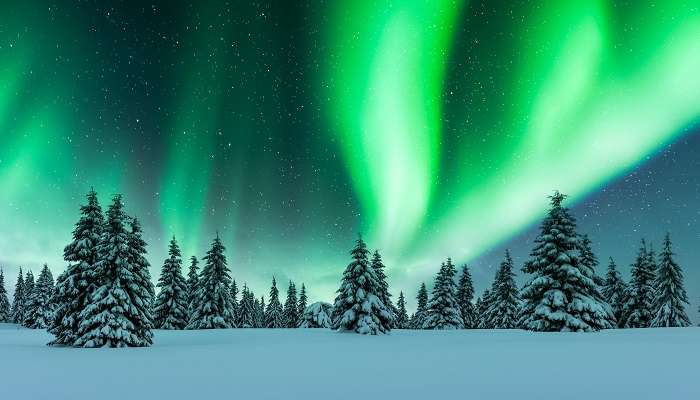
12 Les plus fascinants endroits à visiter en Finlande pour explorer le paradis préservé en 2024.
Trending Blogs

20 Mysterious Places In India To Visit In 2023 More Bizarre Than The Bermuda Triangle

10 Scariest Roads In India That Are A Driver’s Nightmare

101 Places To Visit In India Before You Turn 30 in 2024

35 Exotic Places To Visit In December In India 2024 To Enjoy A Surreal Vacation

60 Best Honeymoon Destinations In India In 2024

95 Best Honeymoon Destinations In The World In 2023 For A Romantic Escape!
Best Places To Visit In India By Month
Best places to visit outside india by month.
- TravelTriangle
- International
- Sri Lanka »
- Tour Packages
- Honeymoon Packages
- Family Packages
- Budget Tour Packages
- Luxury Tour Packages
- Adventure Tour Packages
- Group Tour Packages
- Maldives Tour Packages
- Bali Tour Packages
- Dubai Tour Packages
- Singapore Tour Packages
- Thailand Tour Packages
- Europe Tour Packages
- Sri Lanka Tour Packages
- Tour Packages From Delhi
- Tour Packages From Mumbai
- Tour Packages From Bangalore
- Tour Packages From Chennai
- Tour Packages From Kolkata
- Tour Packages From Hyderabad
- Tour Packages From Ahmedabad
- Thailand Tourism
- Bali Tourism
- Singapore Tourism
- Maldives Tourism
- Mauritius Tourism
- Dubai Tourism
- Europe Tourism
- Hotels in Thailand
- Hotels in Maldives
- Hotels in Mauritius
- Hotels in Bali
- Hotels in Dubai
- Hotels in Singapore
- Hotels in Sri Lanka

Is Sri Lanka worth visiting?
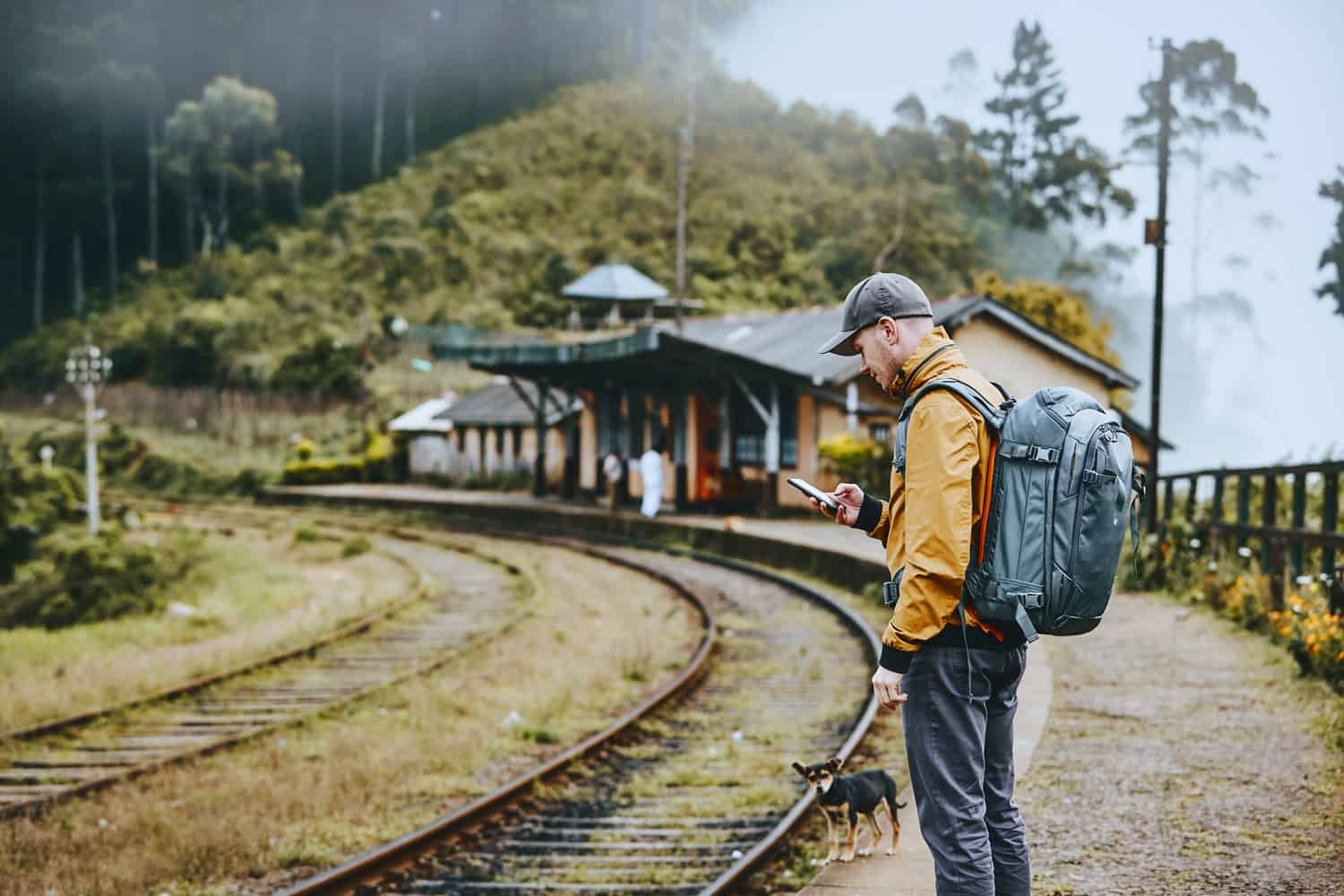
If you are a regular reader here, you might already know that I come from a middle-class family in Sri Lanka. And like most middle-income families in Sri Lanka, we weren't familiar with a lot of travelling growing up. So, do not be surprised when I tell you that I asked this very question (Is Sri Lanka worth visiting?) from my manager when I freshly joined a travel agency as a Tour Coordinator in 2014.
After travelling all over Sri Lanka over the last 8 years, I can tell you with absolute certainty that Sri Lanka is well worth visiting. However, do not take my word for it.
The well-renowned travel guidebook publisher, Lonely Planet, named Sri Lanka the best destination to travel to in 2019. This year CNN Travel listed Colombo, the capital of Sri Lanka, as one of the must-visit destinations in the world.
If you are still not convinced Sri Lanka is worth visiting, keep reading. In today's Travellers Isle article, I will explain why Sri Lanka is an excellent choice for your next holiday.
Why is Sri Lanka worth visiting?
Three main things make Sri Lanka well worth visiting. Namely, its diverse travel experiences, year-round great weather and the affordability. Let us explore these factors one by one:
1. A Wide Range of Travel Experiences
You can expect to see so much diversity in landscapes, architecture, and culture within Sri Lanka's total land area of 65,610 square kilometres (roughly 1/4th the size of the United Kingdom).
This diverse nature of the country makes it a great holiday destination, especially for families travelling with little ones. You will have no problem finding activities that match the taste of everyone in your family when travelling this picturesque island nation.
Here are some of the popular travel experiences for which Sri Lanka is famous:
Note - You may check the travel times between popular tourist destinations in Sri Lanka here .
Wildlife safaris
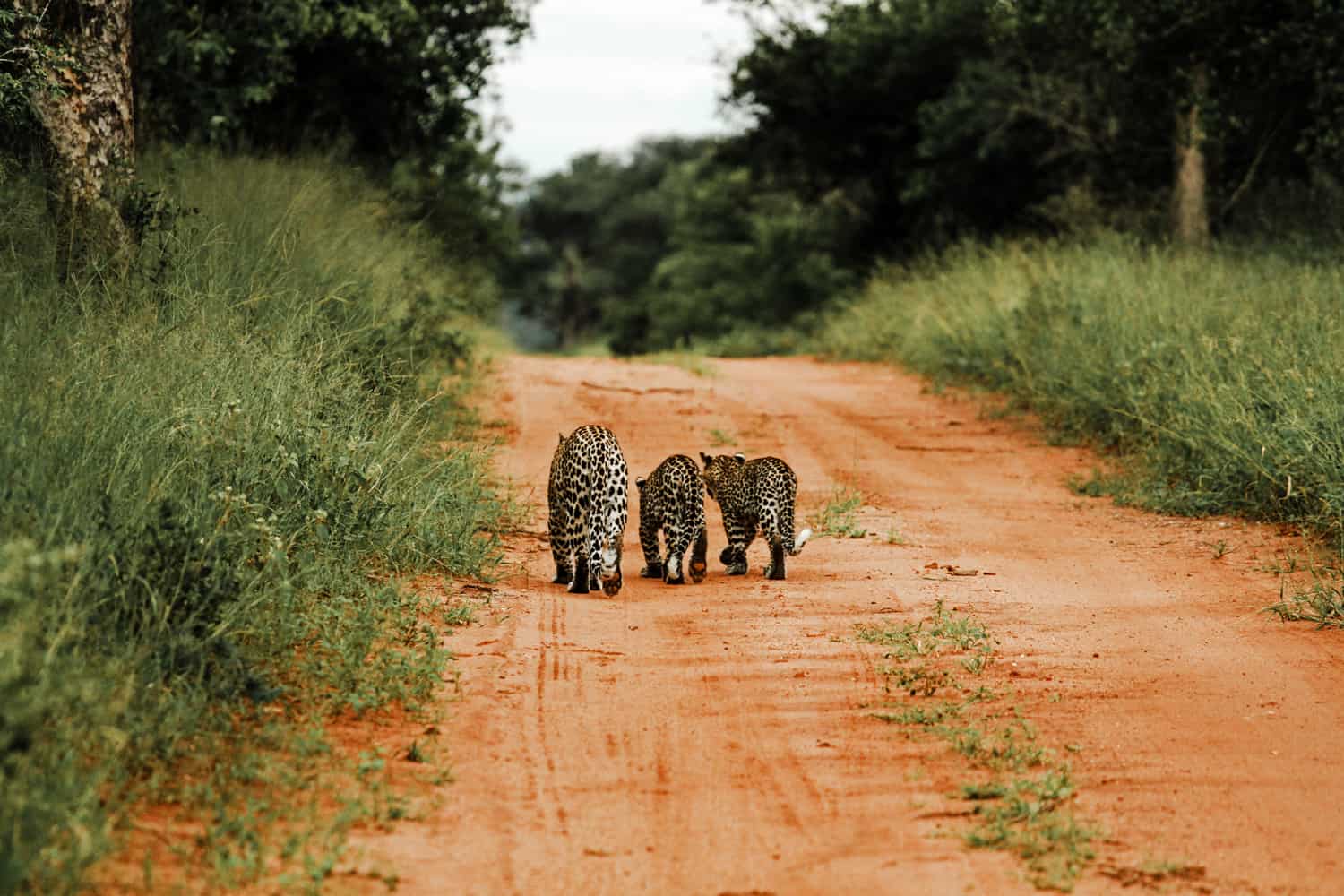
One of the main reasons for visiting Sri Lanka is its abundant wildlife and natural resources, unparalleled in other countries in the region.
Head off the beaten path on a wildlife safari at any one of the major national parks in the country for a unique and captivating holiday experience on the island. You can take in an authentic wildlife safari as you head into the thick of the jungle in a 4x4 vehicle.
Some of the key attractions in the Sri Lankan wildlife safaris are the elephants, leopards, and sloth bears, all subspecies native to the land.
While the Sri Lankan Elephant can be easily seen in the most significant national parks, the leopards and the sloth bear are elusive creatures that are more difficult to spot. Your best chance to catch a glimpse of these fascinating creatures is in the Yala National Park in the south of Sri Lanka.
And that's not all. Among the 100+ species of mammals that roam the wilderness, wild boar, spotted deer, macaques, and the sambar deer are some of the other familiar sights to behold on your Sri Lankan safari.
The diverse landscapes in the country, from wetland to dry arid regions and inland lagoons shrouded in mangroves, offer a range of habitats for over 300 species of birds, reptiles and amphibians that call the island their home.
Hiking and trekking
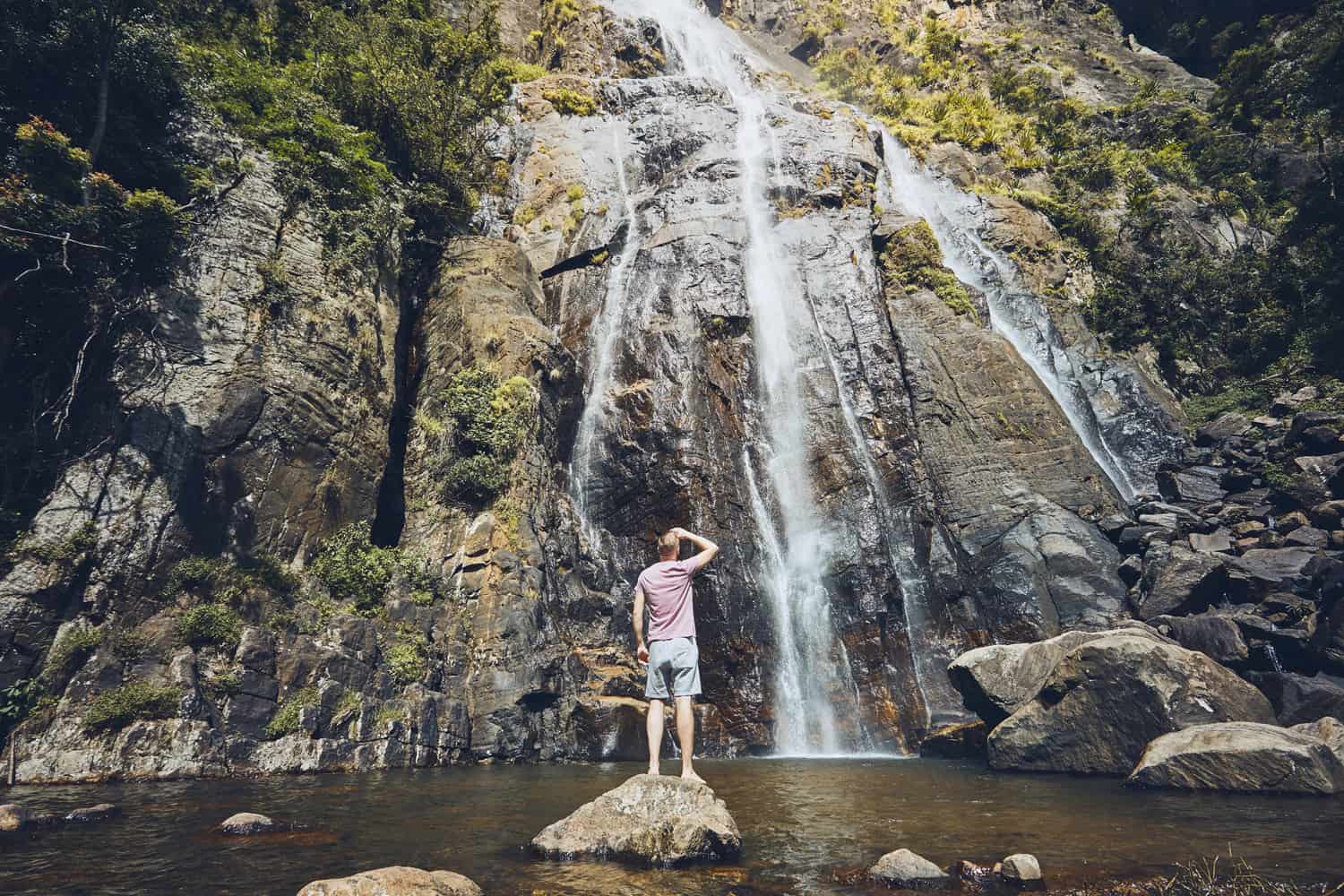
Another great reason to visit Sri Lanka is its beautiful hiking trails.
The tea country in the central highlands offer fantastic destinations for the nature-loving, hiking enthusiast. Within a 4-hour car journey from the Colombo airport, you can reach the town of Hatton, which is at the heart of the tea capital in Sri Lanka.
Adam's Peak mountain, which can be reached via Hatton, offers one of the most recognized hiking trails with multiple routes you can take to reach the top. Towering over 2200m in height, you require 4 to 8 hours to complete the hike, depending on your fitness levels and the chosen hiking trail.
For less intensive high-altitude hiking expeditions, head towards the town of Ella tucked away in the Badulla region.
For a bucket-list-worthy travel experience, consider the train ride from Nanu Oya to Ella, as it offers some of the most scenic views your eyes can behold. Make note, the train ride from Nanu Oya will take you approximately 4 hours to reach Ella, whereas the trip can be made within 2 hours by road.
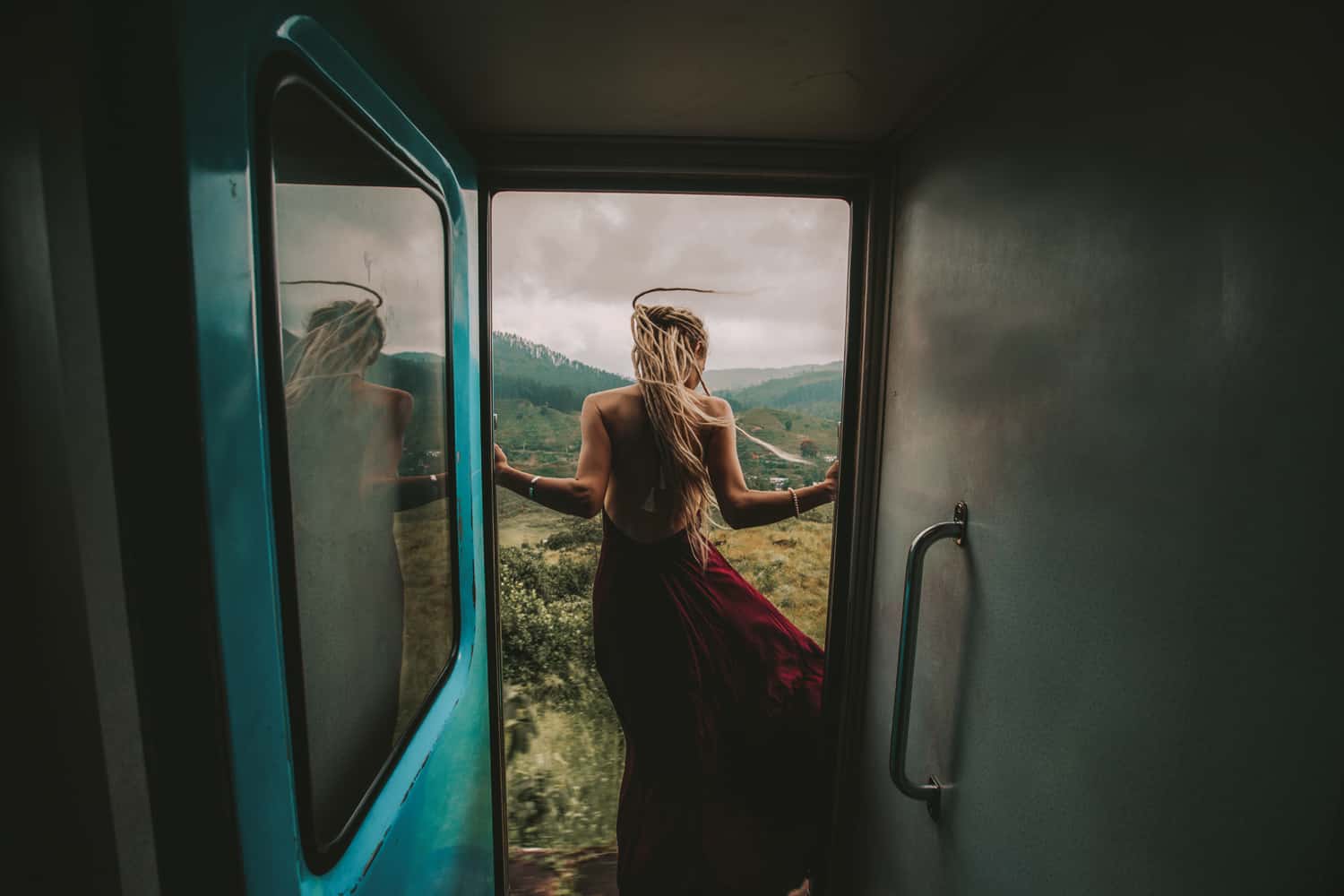
In Ella, you can embark on a number of nature walks and hikes.
If you're travelling with family and have little ones on tow, I highly recommend Little Adams Peak. It will take less than two hours to reach the summit on its relatively moderate trail.
Brace yourself for breath-taking views of the mountainous landscape and lavish tea plantations spread out for miles beneath you. Aim to be at the top during sunset to capture some of the most stunning images on your camera reel.
Another convenient trail to explore with your family is the 9 Arch Bridge in Ella. A 30-minute walk from the Ella town will take you to the majestic construction dating back to the British Colonial period. Built purely of cement, rock and bricks, this fascinating 'Bridge in the Sky' stands at about 100ft in height and 300ft in length and is a must to capture in your travel photo reel.
Water sports & ocean expeditions
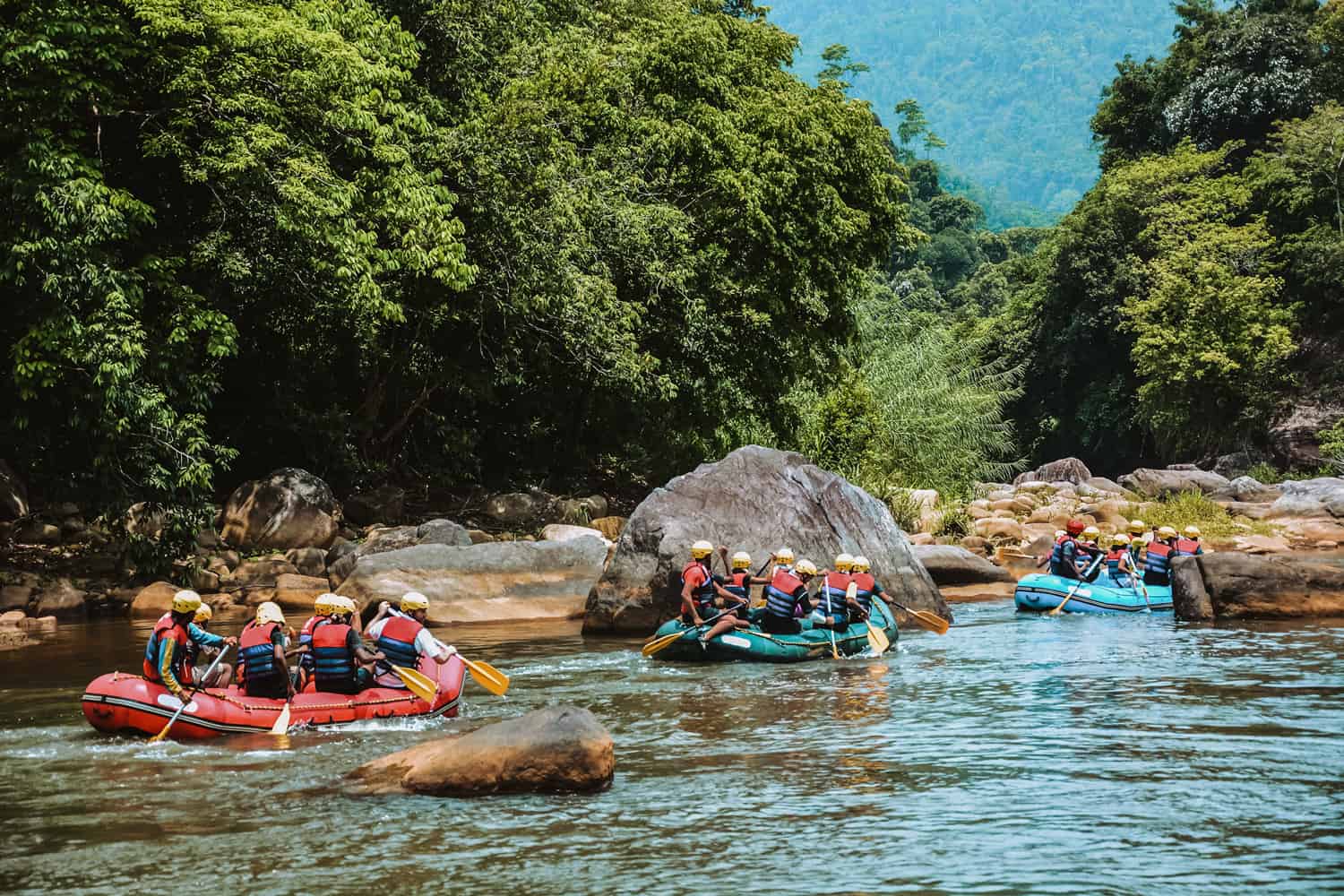
If you're a water sports enthusiast, get ready to buckle down for some adventure as you go white water rafting along the Kelani river. The turbulent waters of the Kelani river during the months of May to December are perfect for thrill-seeking travellers with an affinity for water sports.
Here's a fun fact: Kithulgala was the destination for filming the epic 1950s film Bridge on the River Kwai!
Surfing and scuba diving are other favourite water sports for tourists in Sri Lanka. If you're a beginner or intermediate surfer, head over to the calmer waters of the Weligama Bay for some practise lessons and get your feet wet!
Rideable waves in Weligama are most prominent from December to April. This region is also great for experiencing an ocean safari where you can take your family on an unforgettable dolphin and whale watching expedition.
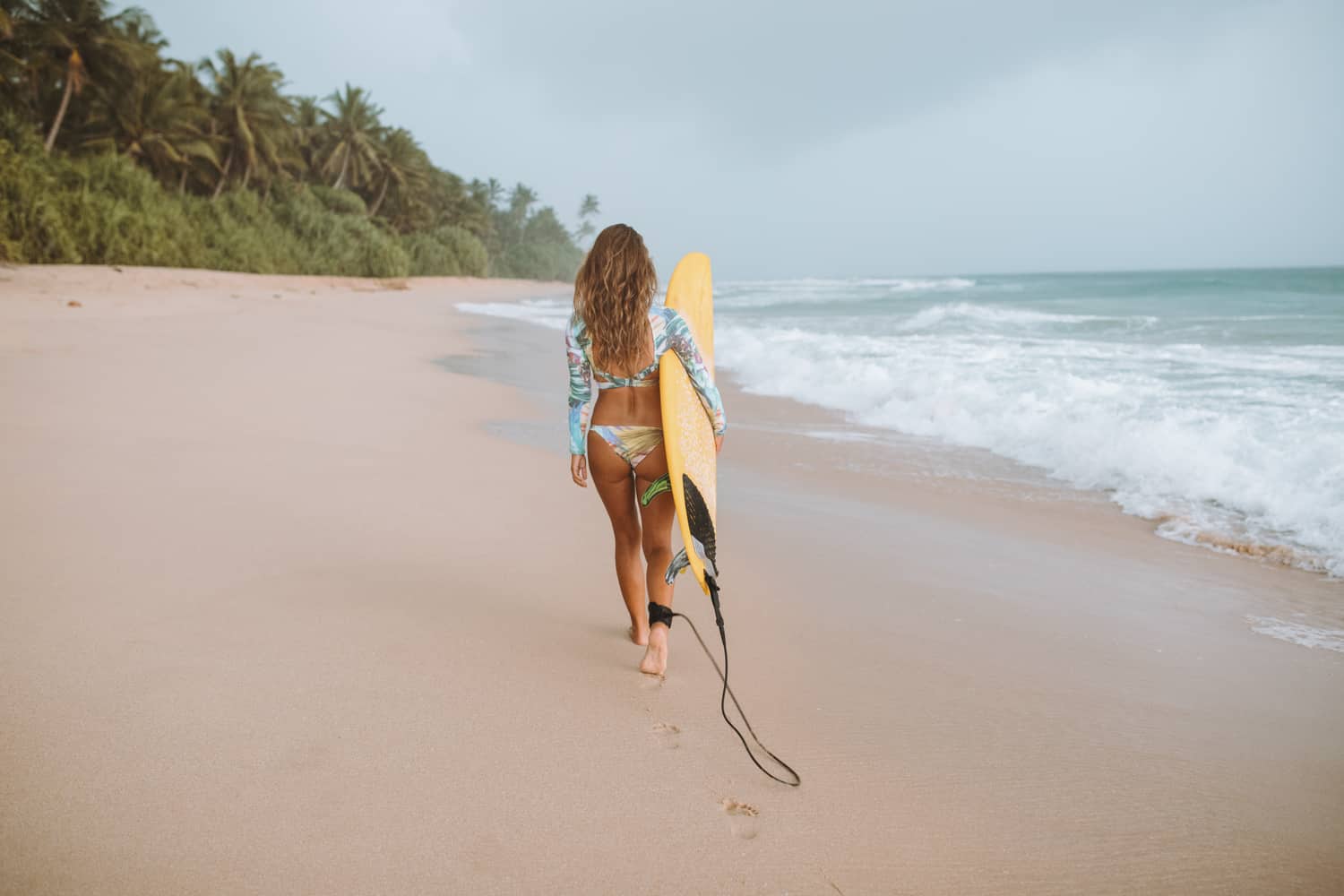
Pro surfers touring the county's south coast can experience the full force of great waves and offshore winds in the Hikkaduwa and Hiriketiya areas during the period December to April. Yet, Arugam Bay on the island's east coast is arguably the most popular among intermediate and advanced surfers as it offers some of the best surf spots in South Asia. You can find the entire surf community headed this way during the period May to October to enjoy the epic waves of Arugam Bay.
While you're on the east coast, make use of the fantastic dive spots where you can swim with reef sharks and giant turtles. Visit Pigeon Island off the coast of Trincomalee, where you can explore the mysterious waters of the deep seas and take in the abundant marine life amidst its breath-taking coral reefs.
Historical sites
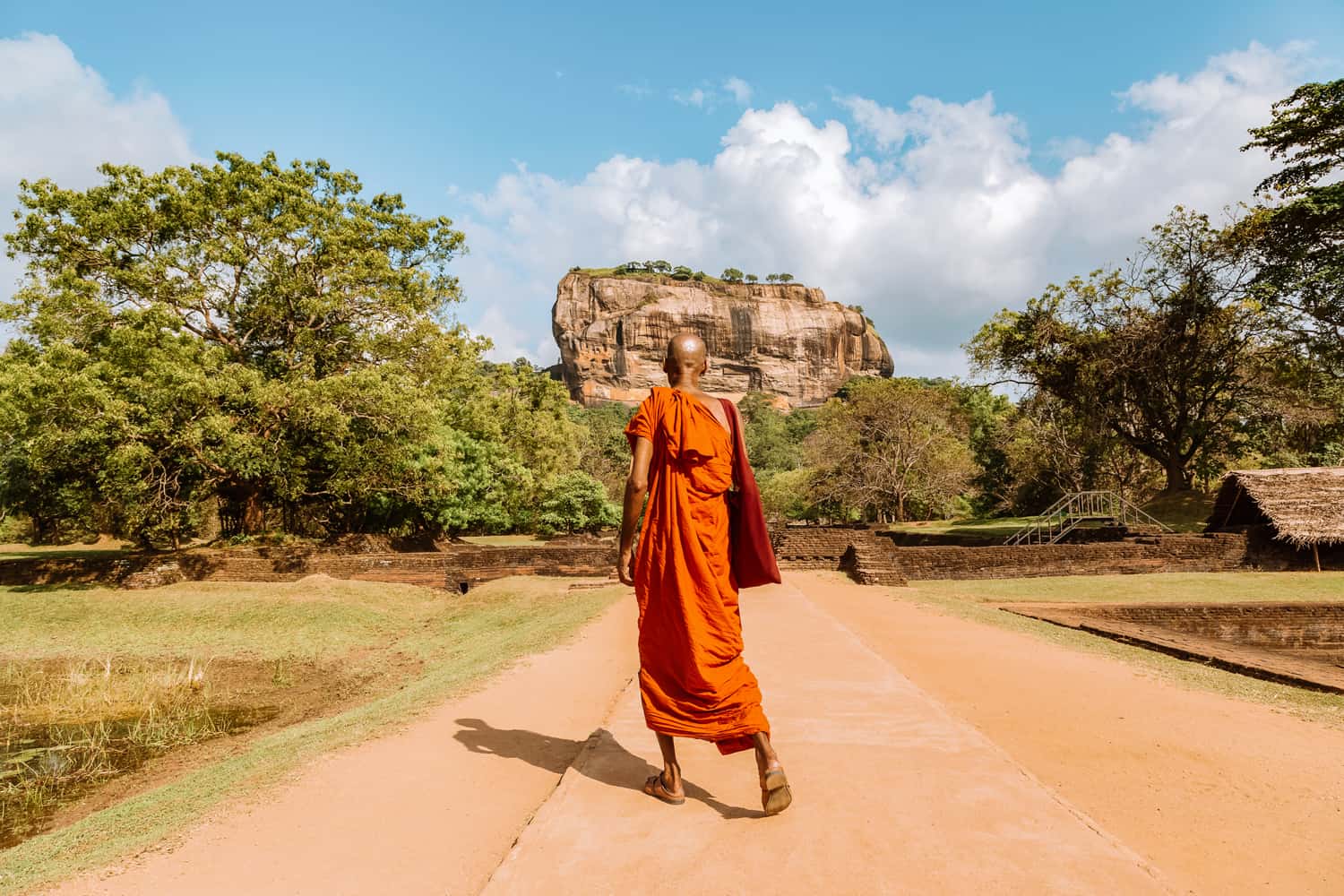
Home to some of the most significant historical treasures in the South Asian region, you must explore at least a couple of the major historical sites while you're in Sri Lanka.
Sigiriya is a world-renowned landmark destination that dates back to 5th century, where you can explore the ruins of the ancient 'Palace in the Sky' as you ascend to the top of the rock through the lion's staircase.
Anuradhapura and Pollonnaruwa in the North Central Province offer the ruins of entire ancient kingdoms and religious monuments, some of which still stand strong. These display the intricate rock carvings and architectural wonders of this forgotten era.
For a little piece of history from the country's colonial-era, you should head down to Galle Fort. The old trading port town offers a unique blend of Portuguese, Dutch and British influence through its elegant architecture. You may wander through the quaint little cobblestone streets, explore the Galle Maritime Museum, and visit the Dutch Reformed Church amidst a variety of trendy little cafes and boutiques that provide a charming atmosphere to this beachside town.
Mouth-watering cuisine
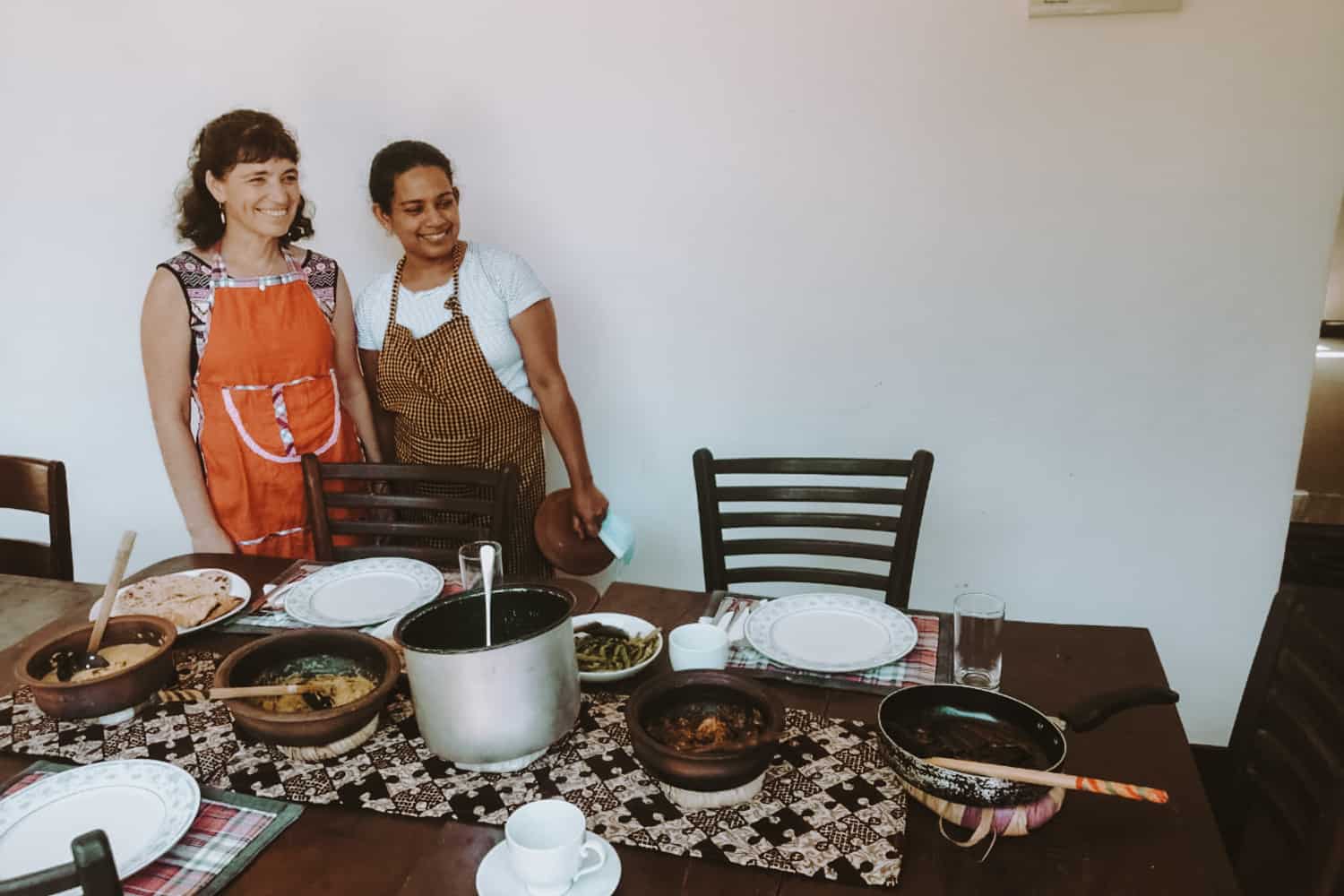
A trip to Sri Lanka cannot be complete without indulging in its authentic cuisine. A divine range of herbs, spices, and coconuts found in abundance within the island play a pivotal role in the taste profile of the Sri Lankan gastronomical experience.
The popular Sri Lankan main meal of rice and curry incorporates boiled rice with an assortment of vegetable and fish curries made with rich coconut milk and fragrant spices. You can also expect to be served a range of pickled fruits and vegetables and chutneys together with shredded greens mixed with coconut, crushed red onions, and a dash of lime and salt with almost every traditional rice meal.
Other local favourites to try are Hoppers with Katta Sambol, and Pittu served with more coconut-based curries. You are bound to appreciate not only the range of choices and delectable flavours that are on offer with every Sri Lankan meal but also the painstaking effort and time that goes into the careful preparation of each delightful dish you're being served.
2. Sri Lanka is a Year-Round Travel Destination
While December to March is the best time to travel Sri Lanka for tourists hoping to escape the harsh winters of the west, the country offers great weather all year round. If you are a sunseeker looking to travel and cannot make it during the peak season, fear not, as there are always places with sunny weather in this picturesque island nation, and at a great price.
If you are visiting Sri Lanka during the period November to April, you may choose the cultural triangle, hill country, and the coastal regions of the south and the west for your trip. If your plan is to visit the country during the period May to October, visiting the northern and eastern parts of Sri Lanka will allow you to have the best weather conditions during your holiday.
3. Sri Lanka is Affordable
With a wide variety of accommodation options to choose from and a range of activities to engage in all across the island, you can curate an action-packed, memorable holiday experience in Sri Lanka that is suitable to your budget.
Sri Lanka is a relatively inexpensive holiday destination, especially compared to destinations like Maldives. To give you some context: you can spend 10-days in Sri Lanka with 5-star accommodation for the cost of a 5-day holiday in Maldives.
Add to that fact that there is so much more you can do and see in Sri Lanka, all concentrated within its minute landmass, and you know you have a holiday destination worth visiting!
In answer to your question "Is Sri Lanka worth visiting", it is most definitely so!
Sri Lanka is one of the most beautiful countries in the South Asia. Not only is it reasonably affordable to travel to Sri Lanka, but the multitude of experiences you can hope for within just 14-day holiday makes it well worth a visit. Sri Lanka is also a true year-round travel destination.
Whether you're travelling with family or are looking for an exciting holiday getaway with your partner, you can't go wrong by choosing Sri Lanka as your next travel destination.
Hope this bit of information can help you plan out your next island holiday!
Happy travels!
You might also like
Sri lanka with toddler itinerary, top 10 things to do in galle, sri lanka – indepth guide, top 10 things to do in jaffna, sri lanka – jaffna attractions, the 7 best beaches in sri lanka for swimming, wildlife in sri lanka | what to expect on your holiday, where to see turtles in sri lanka, dress code in sri lanka | what you need to know, top 10 things to do in ella, sri lanka, is sri lanka good for honeymoon, where to see leopards in sri lanka, 6 thoughts on “ is sri lanka worth visiting ”.
Pls can recommend visiting places in Sri Lanka for family group. Around 1week
Hi Chezhian,
Following are two itineraries that can be recommended for a 7-day Sri Lanka family holiday. If you would like to see a detailed itinerary for this, please drop us a message specifying your requirements. We would love to help your family.
Airport – Negombo (1 night) – Dambulla (2 nights) – Kandy (1 night) – Bentota (2 nights) – Airport
Airport – Negombo (1 night) – Kandy (2 night) – Bentota (3 nights) – Airport
Is Sri Lanka a suitable holiday for a 76 and 78 couple. I have been told there is a lot of walking involved. we are relativity fit
There are many sites in Sri Lanka that do not involve a lot of walking. For example, Kandy Temple of the Tooth, Polonnaruwa Ancient City, Peradeniya Botanical Garden (You can take an electric buggy car to take you around), Udawalawe National Park jeep safari, Elephant Transit Home, and more. Sri Lanka is also famous for its beautiful beaches that are excellent for relaxation. I am sure you will enjoy the country very much if you give it a try. It is a perfectly good choice for someone in their seventies.
Is Srilanka good for travelling with a 1 year old baby?
Of course, it is a great country to travel with a 1-year-old baby. Please refer to our article, Sri Lanka with a baby, for more information.
Leave a Reply Cancel reply
Your email address will not be published. Required fields are marked *
- Skip to main content
- Skip to "About this site"
Language selection
Search travel.gc.ca.
Help us to improve our website. Take our survey !
COVID-19: travel health notice for all travellers
Sri Lanka travel advice
Latest updates: The Health section was updated - travel health information (Public Health Agency of Canada)
Last updated: April 15, 2024 13:01 ET
On this page
Safety and security, entry and exit requirements, laws and culture, natural disasters and climate, sri lanka - exercise a high degree of caution.
Exercise a high degree of caution in Sri Lanka due to the economic crisis which has led to shortages of basic necessities including fuel, food and medicines.
Back to top
Current economic situation
Sri Lanka is experiencing economic difficulties which may result in limited availability of resources, including basic necessities like medicines, fuel and specific food items. Power outages, though infrequent, may occur.
The fragile economic situation may also impact public services, including healthcare. Limited access to resources can impact the security environment.
If you are in Sri Lanka:
- keep supplies of food, water and fuel in case of lengthy disruptions
- make sure to have sufficient supply of any required medicines on hand as availability may be limited
- check that your travel documents are up to date
- avoid areas where demonstrations and large gatherings are taking place
- follow the instructions of local authorities
Demonstrations and civil unrest
Demonstrations occur frequently in Colombo, and occasionally elsewhere in the country. Security forces may use tear gas and water cannons during violent protests. Even peaceful demonstrations can turn violent at any time. They can also lead to disruptions to traffic and public transportation.
- Avoid areas where demonstrations and large gatherings are taking place
- Follow the instructions of local authorities
- Monitor local media for information on ongoing demonstrations
More about mass gatherings (large-scale events)
Security forces
The Sri Lankan military continues to maintain a strong presence in the country’s North and East, including the Jaffna Peninsula. Military and police checkpoints can be established and road closures can occur suddenly.
Security forces have wide-ranging powers, including the authority to:
- impose curfews
- detain without charge for extended periods
- search individuals, vehicles, residences and commercial premises
Individuals of Sri Lankan heritage, including those who don’t have Sri Lankan citizenship, have been detained on occasion by police or security forces.
- Always carry formal photographic identification with you
- Keep an eye out for signage warning of military or demining zones
- Keep to well-traveled roads
- Avoid venturing in forested areas or abandoned properties
- Monitor local news for latest updates
- If you’re detained, ask the authorities to contact the High Commission of Canada
There is a threat of terrorism. Past attacks have resulted in fatalities.
Further attacks can’t be ruled out. Targets could include:
- government buildings, including schools
- places of worship
- airports and other transportation hubs and networks
- public areas such as tourist attractions, restaurants, bars, coffee shops, shopping centres, markets, hotels and other sites frequented by foreigners
Always be aware of your surroundings when in public places.
Violent crime occurs, including harassment and assault aimed at Western foreigners.
Petty crime such as purse snatching and pickpocketing is common, especially on public transportation. Theft has occurred in hotels and guesthouses.
Credit card fraud is common. Pay very close attention to your credit card when it is being handled. To minimize risks, you should opt to pay in cash whenever possible.
Ensure that your personal belongings, including passports and other travel documents, are secure at all times.
Inter-communal tensions
Inter-communal and religious tensions exist throughout the country and have led to violence. Further violent incidents could occur.
Spiked food and drinks
Foreigners have been targeted in incidents of drink spiking, often combined with sexual assault or theft. Never leave food or drinks unattended or in the care of strangers. Be wary of accepting snacks, beverages, gum or cigarettes from new acquaintances. These items may contain drugs that could put you at risk of sexual assault and robbery.
Women’s safety
Women are often the target for unwanted attention. They should exercise caution when travelling alone.
Advice for women travellers
Swimming conditions may be unsafe. Follow the advice and warnings of local authorities.
Water safety abroad
Tourist facilities
Tourist facilities are widely available but quality varies, especially inland. You should arrange travel to remote areas through a reputable travel agency.
Road safety
Road conditions are usually poor outside major cities.
Road accidents, often causing death and injuries, are common due to poorly maintained vehicles, erratic driving practices and pedestrians and roaming animals on the road.
Roads may be closed on short notice.
Public transportation
Travel by bus is generally unsafe due to aggressive drivers and the risk of theft.
We do not make assessments on the compliance of foreign domestic airlines with international safety standards.
Information about foreign domestic airlines
Every country or territory decides who can enter or exit through its borders. The Government of Canada cannot intervene on your behalf if you do not meet your destination’s entry or exit requirements.
We have obtained the information on this page from the Sri Lankan authorities. It can, however, change at any time.
Verify this information with the Foreign Representatives in Canada .
Entry requirements vary depending on the type of passport you use for travel.
Before you travel, check with your transportation company about passport requirements. Its rules on passport validity may be more stringent than the country’s entry rules.
Regular Canadian passport
Your passport must be valid for at least 6 months beyond the date you expect to leave Sri Lanka.
Passport for official travel
Different entry rules may apply.
Official travel
Passport with “X” gender identifier
While the Government of Canada issues passports with an “X” gender identifier, it cannot guarantee your entry or transit through other countries. You might face entry restrictions in countries that do not recognize the “X” gender identifier. Before you leave, check with the closest foreign representative for your destination.
Other travel documents
Different entry rules may apply when travelling with a temporary passport or an emergency travel document. Before you leave, check with the closest foreign representative for your destination.
Useful links
- Foreign Representatives in Canada
- Canadian passports
Tourist visa: required Business visa: required Student visa: required Work visa: required
For stays of up to 30 days, you can apply online for a tourist visa. You can obtain all other visas at a Sri Lankan government office in Canada or abroad.
Visas may be extended at Sri Lanka’s Department of Immigration and Emigration in Colombo.
You cannot convert a visa status once in Sri Lanka. Non-compliance with visa restrictions may result in deportation.
You will also need to fill out an online arrival card. You can complete the online form three days before arriving in Sri Lanka.
- Apply for the Electronic Travel Authority - Sri Lankan Department of Immigration and Emigration
- Arrival Card form - Sri Lankan Department of Immigration and Emigration
Special permissions
Journalists and media crews need permission to travel to some northern districts.
Entry into Sri Lankan waters, at any point, requires prior permission.
Other requirements
An onward or return ticket and proof of sufficient funds to sustain you while you are in the country are required to visit Sri Lanka.
Children and travel
Learn more about travelling with children .
Yellow fever
Learn about potential entry requirements related to yellow fever (vaccines section).
Relevant Travel Health Notices
- Global Measles Notice - 13 March, 2024
- COVID-19 and International Travel - 13 March, 2024
- Dengue: Advice for travellers - 8 April, 2024
This section contains information on possible health risks and restrictions regularly found or ongoing in the destination. Follow this advice to lower your risk of becoming ill while travelling. Not all risks are listed below.
Consult a health care professional or visit a travel health clinic preferably 6 weeks before you travel to get personalized health advice and recommendations.
Routine vaccines
Be sure that your routine vaccinations , as per your province or territory , are up-to-date before travelling, regardless of your destination.
Some of these vaccinations include measles-mumps-rubella (MMR), diphtheria, tetanus, pertussis, polio, varicella (chickenpox), influenza and others.
Pre-travel vaccines and medications
You may be at risk for preventable diseases while travelling in this destination. Talk to a travel health professional about which medications or vaccines may be right for you, based on your destination and itinerary.
Yellow fever is a disease caused by a flavivirus from the bite of an infected mosquito.
Travellers get vaccinated either because it is required to enter a country or because it is recommended for their protection.
- There is no risk of yellow fever in this country.
Country Entry Requirement*
- Proof of vaccination is required if you are coming from or have transited through an airport of a country where yellow fever occurs.
Recommendation
- Vaccination is not recommended.
- Discuss travel plans, activities, and destinations with a health care professional.
- Contact a designated Yellow Fever Vaccination Centre well in advance of your trip to arrange for vaccination.
About Yellow Fever
Yellow Fever Vaccination Centres in Canada * It is important to note that country entry requirements may not reflect your risk of yellow fever at your destination. It is recommended that you contact the nearest diplomatic or consular office of the destination(s) you will be visiting to verify any additional entry requirements.
There is a risk of hepatitis A in this destination. It is a disease of the liver. People can get hepatitis A if they ingest contaminated food or water, eat foods prepared by an infectious person, or if they have close physical contact (such as oral-anal sex) with an infectious person, although casual contact among people does not spread the virus.
Practise safe food and water precautions and wash your hands often. Vaccination is recommended for all travellers to areas where hepatitis A is present.
Measles is a highly contagious viral disease. It can spread quickly from person to person by direct contact and through droplets in the air.
Anyone who is not protected against measles is at risk of being infected with it when travelling internationally.
Regardless of where you are going, talk to a health care professional before travelling to make sure you are fully protected against measles.
Japanese encephalitis is a viral infection that can cause swelling of the brain. It is spread to humans through the bite of an infected mosquito. Risk is very low for most travellers. Travellers at relatively higher risk may want to consider vaccination for JE prior to travelling.
Travellers are at higher risk if they will be:
- travelling long term (e.g. more than 30 days)
- making multiple trips to endemic areas
- staying for extended periods in rural areas
- visiting an area suffering a JE outbreak
- engaging in activities involving high contact with mosquitos (e.g., entomologists)
Hepatitis B is a risk in every destination. It is a viral liver disease that is easily transmitted from one person to another through exposure to blood and body fluids containing the hepatitis B virus. Travellers who may be exposed to blood or other bodily fluids (e.g., through sexual contact, medical treatment, sharing needles, tattooing, acupuncture or occupational exposure) are at higher risk of getting hepatitis B.
Hepatitis B vaccination is recommended for all travellers. Prevent hepatitis B infection by practicing safe sex, only using new and sterile drug equipment, and only getting tattoos and piercings in settings that follow public health regulations and standards.
Coronavirus disease (COVID-19) is an infectious viral disease. It can spread from person to person by direct contact and through droplets in the air.
It is recommended that all eligible travellers complete a COVID-19 vaccine series along with any additional recommended doses in Canada before travelling. Evidence shows that vaccines are very effective at preventing severe illness, hospitalization and death from COVID-19. While vaccination provides better protection against serious illness, you may still be at risk of infection from the virus that causes COVID-19. Anyone who has not completed a vaccine series is at increased risk of being infected with the virus that causes COVID-19 and is at greater risk for severe disease when travelling internationally.
Before travelling, verify your destination’s COVID-19 vaccination entry/exit requirements. Regardless of where you are going, talk to a health care professional before travelling to make sure you are adequately protected against COVID-19.
The best way to protect yourself from seasonal influenza (flu) is to get vaccinated every year. Get the flu shot at least 2 weeks before travelling.
The flu occurs worldwide.
- In the Northern Hemisphere, the flu season usually runs from November to April.
- In the Southern Hemisphere, the flu season usually runs between April and October.
- In the tropics, there is flu activity year round.
The flu vaccine available in one hemisphere may only offer partial protection against the flu in the other hemisphere.
The flu virus spreads from person to person when they cough or sneeze or by touching objects and surfaces that have been contaminated with the virus. Clean your hands often and wear a mask if you have a fever or respiratory symptoms.
Typhoid is a bacterial infection spread by contaminated food or water. Travellers going to countries in South Asia should speak to a health care professional about getting vaccinated.
In this destination, rabies is commonly carried by dogs and some wildlife, including bats. Rabies is a deadly disease that spreads to humans primarily through bites or scratches from an infected animal. While travelling, take precautions , including keeping your distance from animals (including free-roaming dogs), and closely supervising children.
If you are bitten or scratched by a dog or other animal while travelling, immediately wash the wound with soap and clean water and see a health care professional. In this destination, rabies treatment may be limited or may not be available, therefore you may need to return to Canada for treatment.
Before travel, discuss rabies vaccination with a health care professional. It may be recommended for travellers who are at high risk of exposure (e.g., occupational risk such as veterinarians and wildlife workers, children, adventure travellers and spelunkers, and others in close contact with animals).
Safe food and water precautions
Many illnesses can be caused by eating food or drinking beverages contaminated by bacteria, parasites, toxins, or viruses, or by swimming or bathing in contaminated water.
- Learn more about food and water precautions to take to avoid getting sick by visiting our eat and drink safely abroad page. Remember: Boil it, cook it, peel it, or leave it!
- Avoid getting water into your eyes, mouth or nose when swimming or participating in activities in freshwater (streams, canals, lakes), particularly after flooding or heavy rain. Water may look clean but could still be polluted or contaminated.
- Avoid inhaling or swallowing water while bathing, showering, or swimming in pools or hot tubs.
Travellers' diarrhea is the most common illness affecting travellers. It is spread from eating or drinking contaminated food or water.
Risk of developing travellers' diarrhea increases when travelling in regions with poor standards of hygiene and sanitation. Practise safe food and water precautions.
The most important treatment for travellers' diarrhea is rehydration (drinking lots of fluids). Carry oral rehydration salts when travelling.
Typhoid is a bacterial infection spread by contaminated food or water. Risk is higher among children, travellers going to rural areas, travellers visiting friends and relatives or those travelling for a long period of time.
Travellers visiting regions with a risk of typhoid, especially those exposed to places with poor sanitation, should speak to a health care professional about vaccination.
Insect bite prevention
Many diseases are spread by the bites of infected insects such as mosquitoes, ticks, fleas or flies. When travelling to areas where infected insects may be present:
- Use insect repellent (bug spray) on exposed skin
- Cover up with light-coloured, loose clothes made of tightly woven materials such as nylon or polyester
- Minimize exposure to insects
- Use mosquito netting when sleeping outdoors or in buildings that are not fully enclosed
To learn more about how you can reduce your risk of infection and disease caused by bites, both at home and abroad, visit our insect bite prevention page.
Find out what types of insects are present where you’re travelling, when they’re most active, and the symptoms of the diseases they spread.
There is a risk of chikungunya in this country. The risk may vary between regions of a country. Chikungunya is a virus spread through the bite of an infected mosquito. Chikungunya can cause a viral disease that typically causes fever and pain in the joints. In some cases, the joint pain can be severe and last for months or years.
Protect yourself from mosquito bites at all times. There is no vaccine available for chikungunya.
- In this country, dengue is a risk to travellers. It is a viral disease spread to humans by mosquito bites.
- Dengue can cause flu-like symptoms. In some cases, it can lead to severe dengue, which can be fatal.
- The level of risk of dengue changes seasonally, and varies from year to year. The level of risk also varies between regions in a country and can depend on the elevation in the region.
- Mosquitoes carrying dengue typically bite during the daytime, particularly around sunrise and sunset.
- Protect yourself from mosquito bites . There is no vaccine or medication that protects against dengue.
Animal precautions
Some infections, such as rabies and influenza, can be shared between humans and animals. Certain types of activities may increase your chance of contact with animals, such as travelling in rural or forested areas, camping, hiking, and visiting wet markets (places where live animals are slaughtered and sold) or caves.
Travellers are cautioned to avoid contact with animals, including dogs, livestock (pigs, cows), monkeys, snakes, rodents, birds, and bats, and to avoid eating undercooked wild game.
Closely supervise children, as they are more likely to come in contact with animals.
Person-to-person infections
Stay home if you’re sick and practise proper cough and sneeze etiquette , which includes coughing or sneezing into a tissue or the bend of your arm, not your hand. Reduce your risk of colds, the flu and other illnesses by:
- washing your hands often
- avoiding or limiting the amount of time spent in closed spaces, crowded places, or at large-scale events (concerts, sporting events, rallies)
- avoiding close physical contact with people who may be showing symptoms of illness
Sexually transmitted infections (STIs) , HIV , and mpox are spread through blood and bodily fluids; use condoms, practise safe sex, and limit your number of sexual partners. Check with your local public health authority pre-travel to determine your eligibility for mpox vaccine.
Tuberculosis is an infection caused by bacteria and usually affects the lungs.
For most travellers the risk of tuberculosis is low.
Travellers who may be at high risk while travelling in regions with risk of tuberculosis should discuss pre- and post-travel options with a health care professional.
High-risk travellers include those visiting or working in prisons, refugee camps, homeless shelters, or hospitals, or travellers visiting friends and relatives.
Medical services and facilities
Medical services and facilities do not meet the standards you might normally expect in Canada.
Medical facilities in certain areas outside of Colombo are limited, particularly in the north. In the event of a major accident or illness, medical evacuation is often necessary. Medical transport is very expensive.
Medical facilities may require confirmation of insurance coverage, guarantee of payment or an up-front deposit before admitting patients.
Make sure you get travel insurance that includes coverage for medical evacuation and hospital stays.
Travel health and safety
Keep in Mind...
The decision to travel is the sole responsibility of the traveller. The traveller is also responsible for his or her own personal safety.
Be prepared. Do not expect medical services to be the same as in Canada. Pack a travel health kit , especially if you will be travelling away from major city centres.
You must abide by local laws.
Learn about what you should do and how we can help if you are arrested or detained abroad .
Penalties for possession, use or trafficking of illegal drugs are strict.
Alcohol consumption in public places is prohibited.
Drugs, alcohol and travel
Smoking is prohibited in many indoor public places, workplaces and on public transport. Use designated smoking areas.
Exporting antiques without a proper licence is illegal.
Photography
Photographing and videotaping government and military installations, as well as in any designated high-security zone, is prohibited.
Dress and behaviour
Dress conservatively, behave discreetly and respect religious and social traditions and artefacts to avoid offending local sensitivities. Posing for a photograph next to a statue of Buddha is a serious offence, punishable by a fine or an arrest. Tattoos, jewellery and clothing associated with Buddhism are considered offensive and may lead to fines, arrest or deportation.
Identification
Carry official identification at all times.
2SLGBTQI+ travellers
2SLGBTQI+ travellers should carefully consider the risks of travelling to Sri Lanka.
Travel and your sexual orientation, gender identity, gender expression and sex characteristics
Traffic drives on the left.
Checkpoints may be set up. Carry personal identification at all times and comply with government and security force instructions.
You should carry an international driving permit.
International Driving Permit
Dual citizenship
Dual citizenship is legally recognized in Sri Lanka.
If you are a Canadian citizen, but also a citizen of Sri Lanka, our ability to offer you consular services may be limited while you're there. You may also be subject to different entry/exit requirements .
Travellers with dual citizenship
International Child Abduction
The Hague Convention on the Civil Aspects of International Child Abduction is an international treaty. It can help parents with the return of children who have been removed to or retained in certain countries in violation of custody rights. The convention applies between Canada and Sri Lanka.
If your child was wrongfully taken to, or is being held in Sri Lanka, and if the applicable conditions are met, you may apply for the return of your child to the Sri Lankan court.
If you are in this situation:
- act as quickly as you can
- contact the Central Authority for your province or territory of residence for information on starting an application under The Hague Convention
- consult a lawyer in Canada and in Sri Lanka to explore all the legal options for the return of your child
- report the situation to the nearest Canadian government office abroad or to the Vulnerable Children’s Consular Unit at Global Affairs Canada by calling the Emergency Watch and Response Centre
If your child was removed from a country other than Canada, consult a lawyer to determine if The Hague Convention applies.
Be aware that Canadian consular officials cannot interfere in private legal matters or in another country’s judicial affairs.
- List of Canadian Central Authorities for the Hague Convention
- International Child Abduction: A Guidebook for Left-Behind Parents
- Travelling with children
- The Hague Convention - Hague Conference on Private International Law
- Canadian embassies and consulates by destination
- Emergency Watch and Response Centre
The currency is the Sri Lankan rupee (LKR).
Credit cards are widely accepted in major urban and tourist centres. You may encounter difficulties in making Visa and MasterCard cash withdrawals. There are ATMs in major cities, but some do not accept international cards.
Monsoon and rainstorms
The rainy (or monsoon) season extends from December to March in the northeast and June to October in the southwest.
Severe rainstorms can cause flooding and landslides, which can lead to deaths, injuries and large population displacements.
- Stay informed of the latest regional weather forecasts
- Tornadoes, cyclones, hurricanes, typhoons and monsoons
- Large-scale emergencies abroad
- Weather forecasts - Sri Lankan Department of Meteorology
- Disaster warnings and weather reports – Sri Lankan Disaster Management Center
Earthquakes and tsunamis
Sri Lanka is located in an active seismic zone and may be prone to earthquakes and tsunamis.
Local services
In case of emergency, dial:
- police: 119 / 118
- tourist police: 94 (11) 242 1052
- medical assistance: 110
- firefighters: 94 (11) 242 2222
Consular assistance
For emergency consular assistance, call the High Commission of Canada to Sri Lanka in Colombo and follow the instructions. At any time, you may also contact the Emergency Watch and Response Centre in Ottawa.
The decision to travel is your choice and you are responsible for your personal safety abroad. We take the safety and security of Canadians abroad very seriously and provide credible and timely information in our Travel Advice to enable you to make well-informed decisions regarding your travel abroad.
The content on this page is provided for information only. While we make every effort to give you correct information, it is provided on an "as is" basis without warranty of any kind, expressed or implied. The Government of Canada does not assume responsibility and will not be liable for any damages in connection to the information provided.
If you need consular assistance while abroad, we will make every effort to help you. However, there may be constraints that will limit the ability of the Government of Canada to provide services.
Learn more about consular services .
Risk Levels
take normal security precautions.
Take similar precautions to those you would take in Canada.
Exercise a high degree of caution
There are certain safety and security concerns or the situation could change quickly. Be very cautious at all times, monitor local media and follow the instructions of local authorities.
IMPORTANT: The two levels below are official Government of Canada Travel Advisories and are issued when the safety and security of Canadians travelling or living in the country or region may be at risk.
Avoid non-essential travel
Your safety and security could be at risk. You should think about your need to travel to this country, territory or region based on family or business requirements, knowledge of or familiarity with the region, and other factors. If you are already there, think about whether you really need to be there. If you do not need to be there, you should think about leaving.
Avoid all travel
You should not travel to this country, territory or region. Your personal safety and security are at great risk. If you are already there, you should think about leaving if it is safe to do so.
We Wish Happy New Year

If you don't save, your changes will be lost.

KNOW SRI LANKA

WHY HOLIDAY IN SRI LANKA

VISA / IMMIGRATION & CUSTOMS

GETTING AROUND

TRAVEL TIPS

INTERACTIVE MAP

IMAGE GALLERY

UNESCO WORLD HERITAGE SITES

CULTURE & HERITAGE

HILL COUNTRY & TEA PLANTATIONS

WILD LIFE & NATURE

WHALE & DOLPHIN WATCHING

WATER SPORTS

LAND SPORTS

SPECIAL INTEREST ADVENTURES

AYURVEDA & SPA

WEDDINGS & HONEYMOON

- ACCOMMODATION

Email us : [email protected]
WELCOME TO DESTINATION SRI LANKA
Ayubowan (which means, may you be gifted with a long life).
Thank you for visiting Destination Sri Lanka!
Who we are & what we do:
Destination Sri Lanka is a division of Serendipity Escapes (PVT) LTD. We are specialists in creating bespoke holidays to Sri Lanka. We are based in Sri Lanka and our business is all about using our intimate knowledge of this wonderful island to craft the perfect holiday for you . This could be an entire itinerary across the Island or just a car hire with a specialist chauffeur/guide or even a straight-forward booking made for you at your favourite Resort , Bungalow , Boutique hotel , Villa . We know from experience that no two travellers are the same and we are here to help!
Our difference:
We take the time to get to know you and create something perfect for you. We will consider your interests, the experiences you seek, how much you already know about Sri Lanka, the time you have available, your travelling circumstances and your budget.
What's important to us:
Above all we value the relationships and trust we build with our clients, our suppliers and the communities we work in. Our clients love us because we are dedicated to crafting a perfect Sri Lanka experience for each and every one of them. We hope you find what you are looking for on our web-site. Please get in touch if we can help in anyway.
Dream Explore Discover

We are Specialised in Bespoke Tours (FITS & Groups) – MICE (Meetings, Incentives, Conferances & Events) –Special Interest Tours – VIP's & Luxury Travel
IDEAS FOR ITINERARIES
Explore sri lanka, explore sri lanka.
9 Nights 10 Days
- Nature
- Culture
ULTIMATE SRI LANKA
Ultimate sri lanka.
14 nights 15 days
CHARMING SRI LANKA
Charming sri lanka.
7 Nights 8 Days
SCENIC SRI LANKA
Scenic sri lanka.
5 nights 6 Days
SPLENDID SRI LANKA
Splendid sri lanka.
6 Nights 7 Days
WONDERFUL SRI LANKA
Wonderful sri lanka.
6 Nights / 7 Days
WILD SRI LANKA
Wild sri lanka.
12 Nights 13 Days
UNTAMED SRI LANKA
Untamed sri lanka, amazing sri lanka, amazing sri lanka.
11 Nights 12 Days
RELISH SRI LANKA
Relish sri lanka.
3 nights 4 Days
VIBRANT SRI LANKA
Vibrant sri lanka.
5 Nights 6 Days
MARINE SRI LANKA
Marine sri lanka.
4 Nights 5 Days

We never forget the less fortunate children in our community.
We give back US $ 10 from every booking you make to Singithi Sevana Children's Home in Kandy.
If you wish you can visit the children's home during your stay in Kandy. www.singithisevana.org
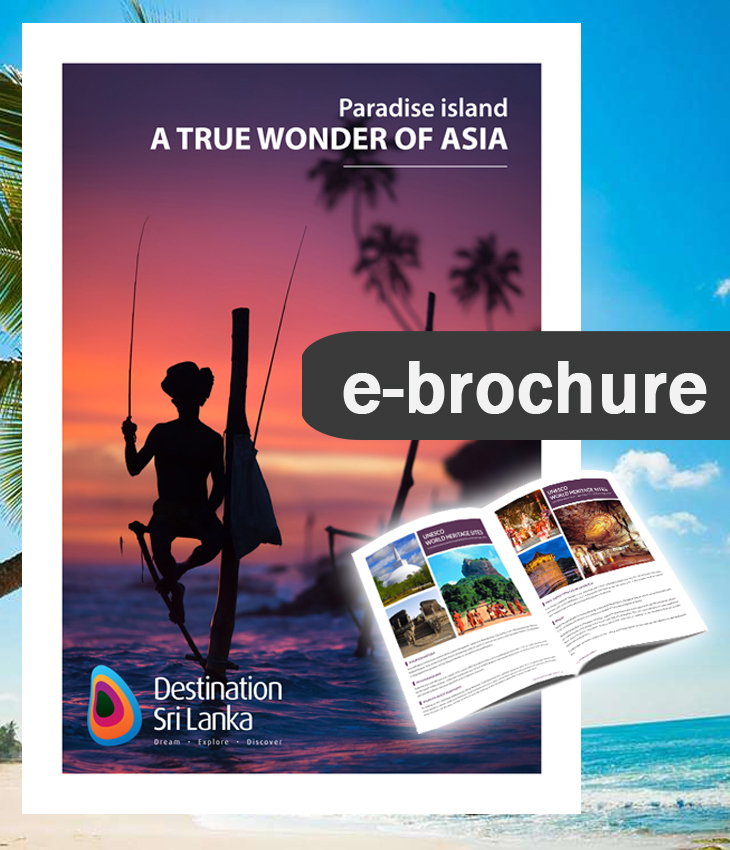
DAY TOURS FROM KANDY
Day tour to tea plantations - nuwara eliya, day tour to elephant orphanage & kandy city, day tour to sigiriya & minneriya park, day tour to sigiriya & polonnaruwa.

Conatct Details

Do you want to save changes you made to document before closing?
Note: Press Tab key on the keyboard to enter inside the modal window after that press the Esc key. By default keyboard option is true that means modal hide on the press of escape key.


Country Living
8 Off-The-Beaten-Path Destinations to Visit in 2024
Posted: April 20, 2024 | Last updated: April 20, 2024
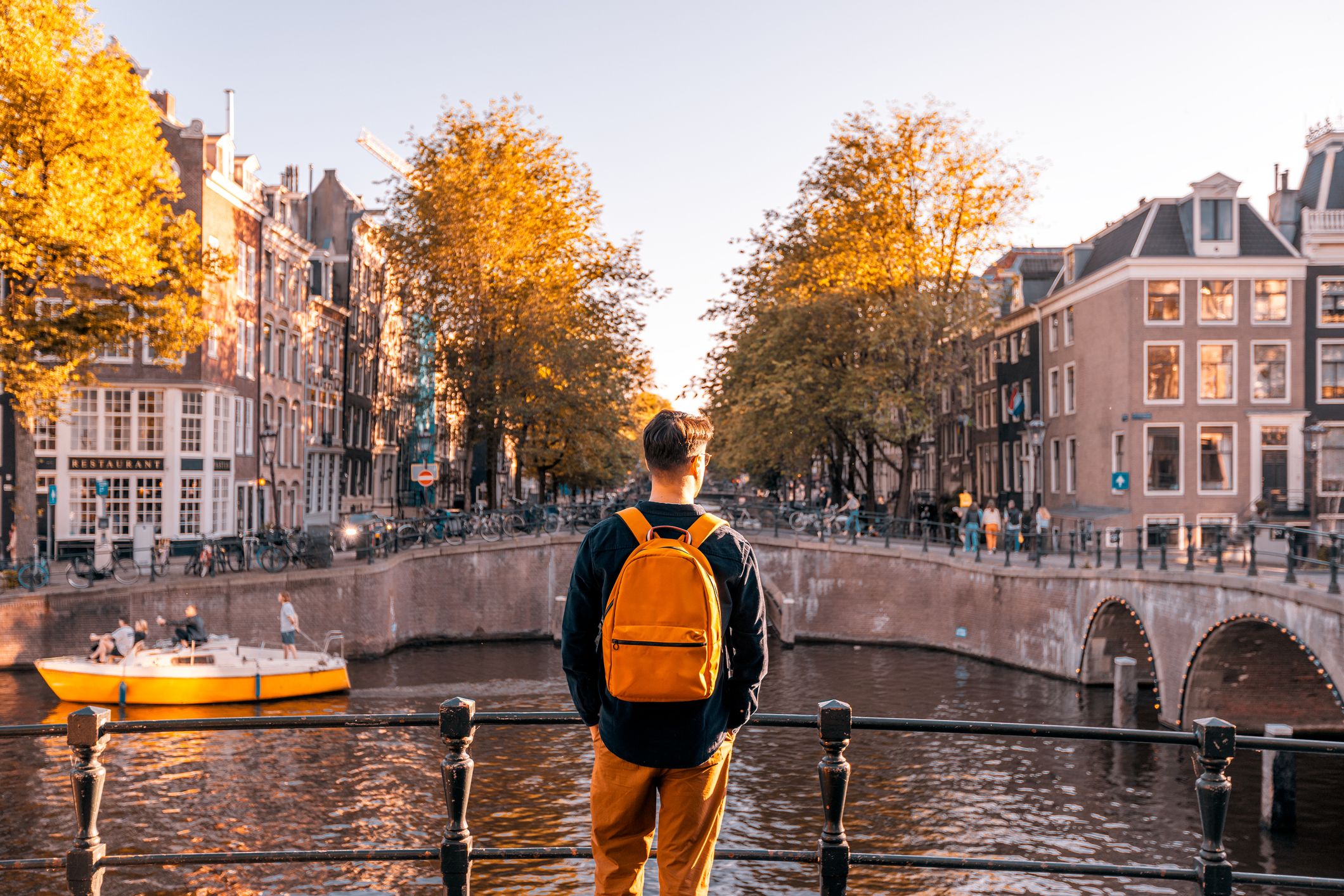
Every travel bucket list should include those major cities that are sure to blow you away: Paris, Dubai, New York City, Sydney, the list goes on. While traveling to these hotspots is sure to provide a memorable vacation—don’t skip the lesser-known but equally impressive destinations tucked in small towns and metropolitan suburbs all over the world. You can find few crowds besides flocks of flamingos in the Caribbean, hike to an active volcano in Guatemala, and relax in ancient Roman baths in England. Planning a new vacation? Consider these eight off-the-beaten-path destinations.

1) Bath, England
Come for the ancient Roman baths in this English town of the same name , but stay for the charm you’ll find on every side street. The city was founded by the Romans in the first century, developing into a beautiful town that today houses an impressive collection of Roman remains. The stunning architecture, charming pubs, and countryside location combine to make this city a must-visit. Plus, it’s a quick train ride from the travel hub of London.
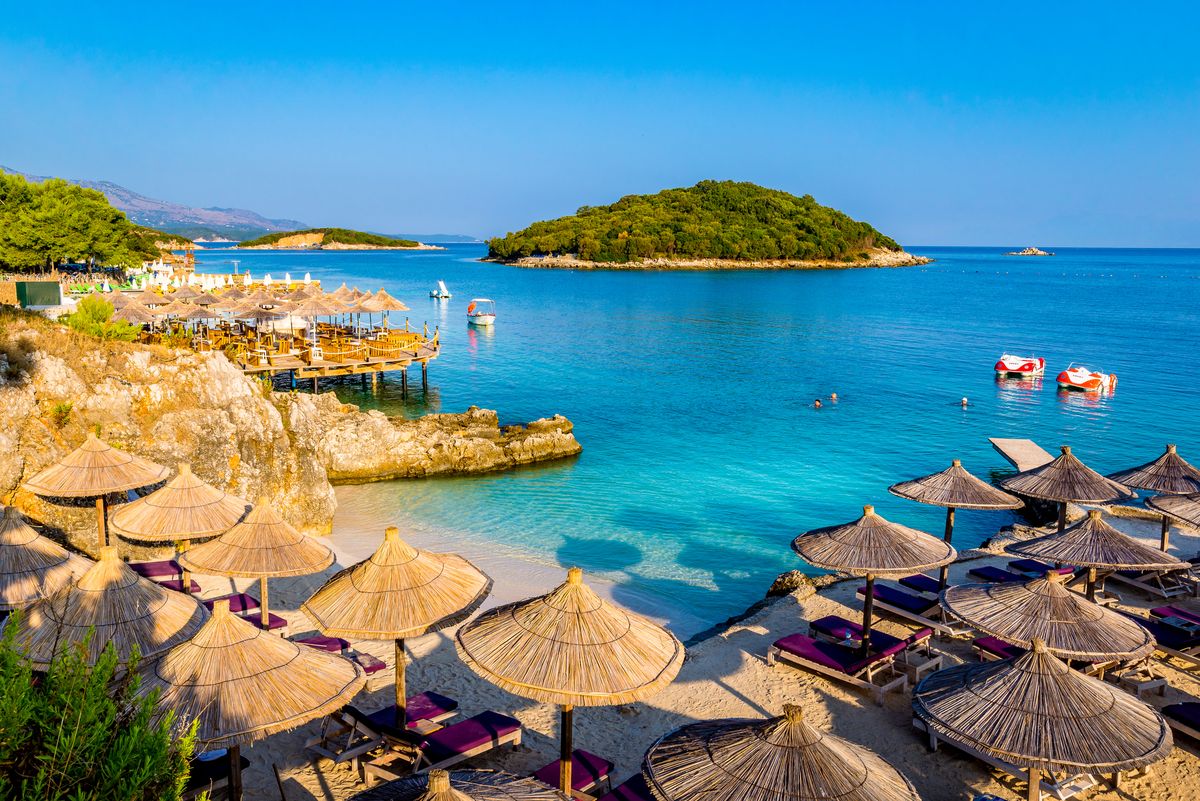
Many have Greece or Italy's Amalfi Coast high on the list of dream destinations, but the coastal cities of Albania match the beauty but not the price tag. Head to Sarande, Ksamil, or Vlore to enjoy pristine beaches and luxury lodging options including bungalows.
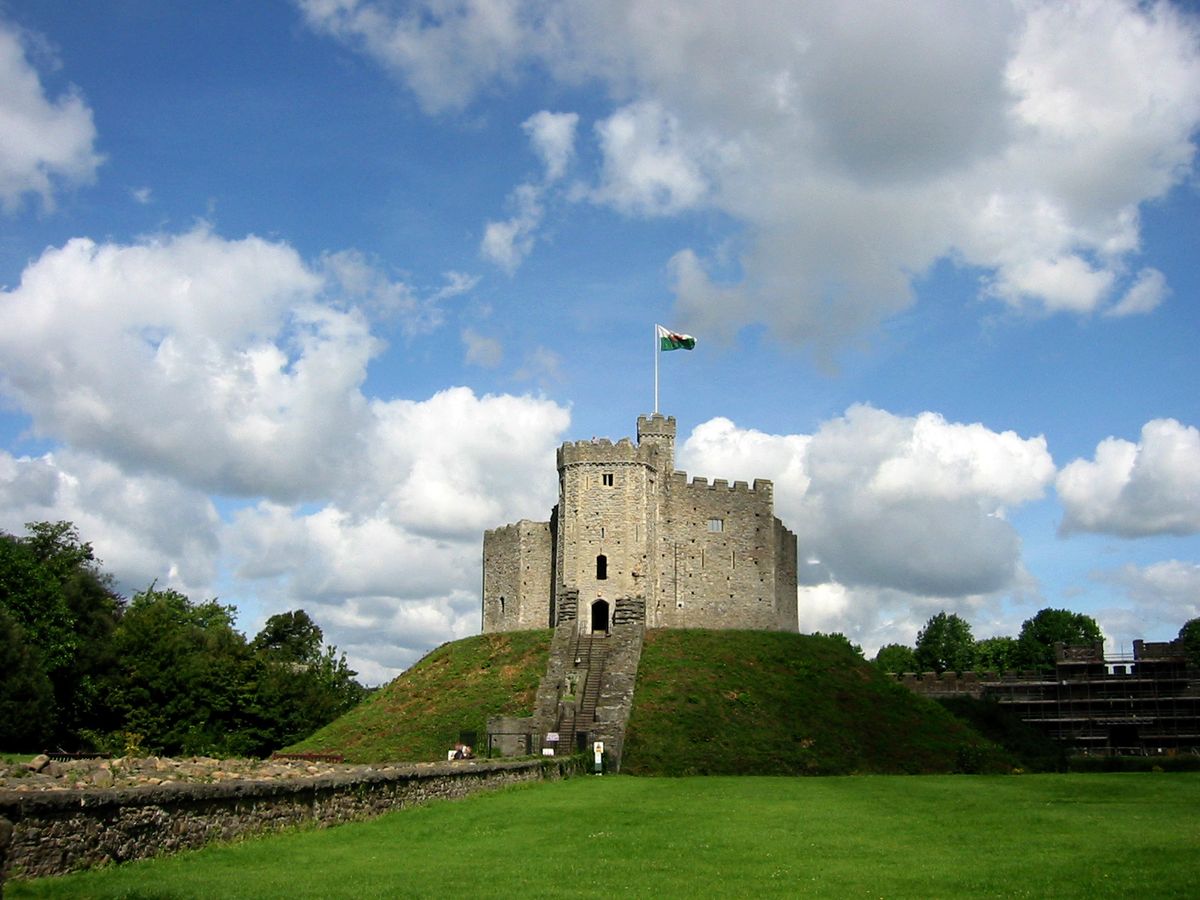
3) Cardiff, Wales
This city-meets-coast town is a quick train ride from London, offering a comparable yet vastly different British experience. In Cardiff , you’ll find lively pubs, Victorian architecture, and excellent dining options all housed within a compact downtown center, plus a charming waterfront district and some of the friendliest people you’ll ever meet.
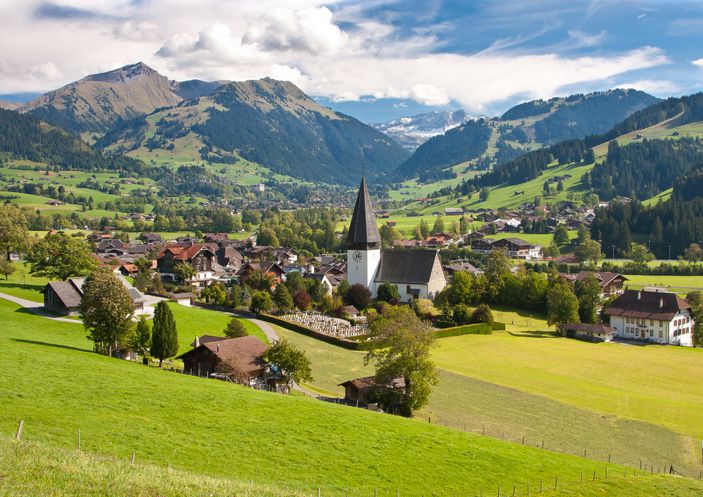
4) Gstaad, Switzerland
If you’re planning a Swiss vacation, you have no shortage of options when it comes to picturesque towns, winter sports, and mountain views. While St. Moritz, Zermatt, Lucerne, or the Interlaken region may top the typical lists, make plans to visit the ultra-lux city of Gstaad instead. Stay in a posh five-star property, browse designer shops, and get your winter thrills at the nearby Glacier 3000.
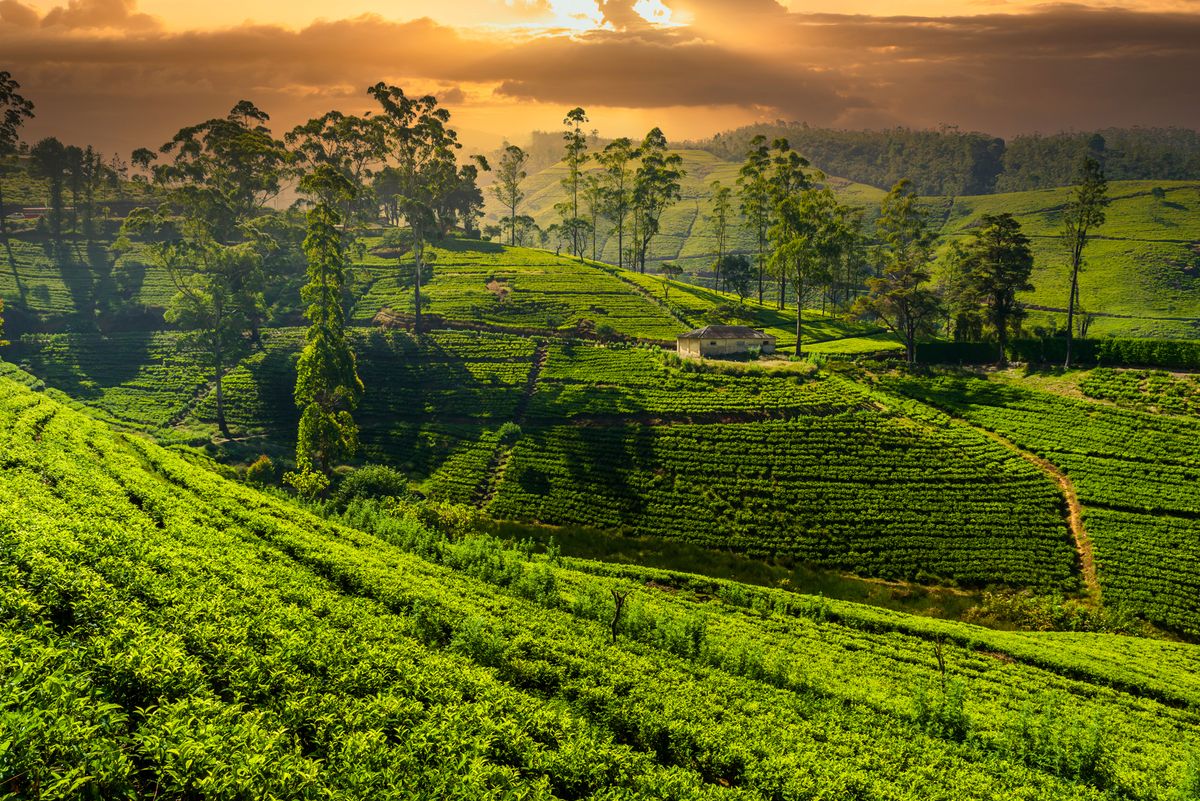
5) Sri Lanka
Swap wine country for tea country when you visit Sri Lanka , which houses seven distinct tea districts each producing their own variety. These growing regions are stunning, with many offering lodging options for the most immersive experience. In addition to tea plantations, Sri Lanka is known for its fascinating wildlife, flavorful cuisine, and beautiful beaches.
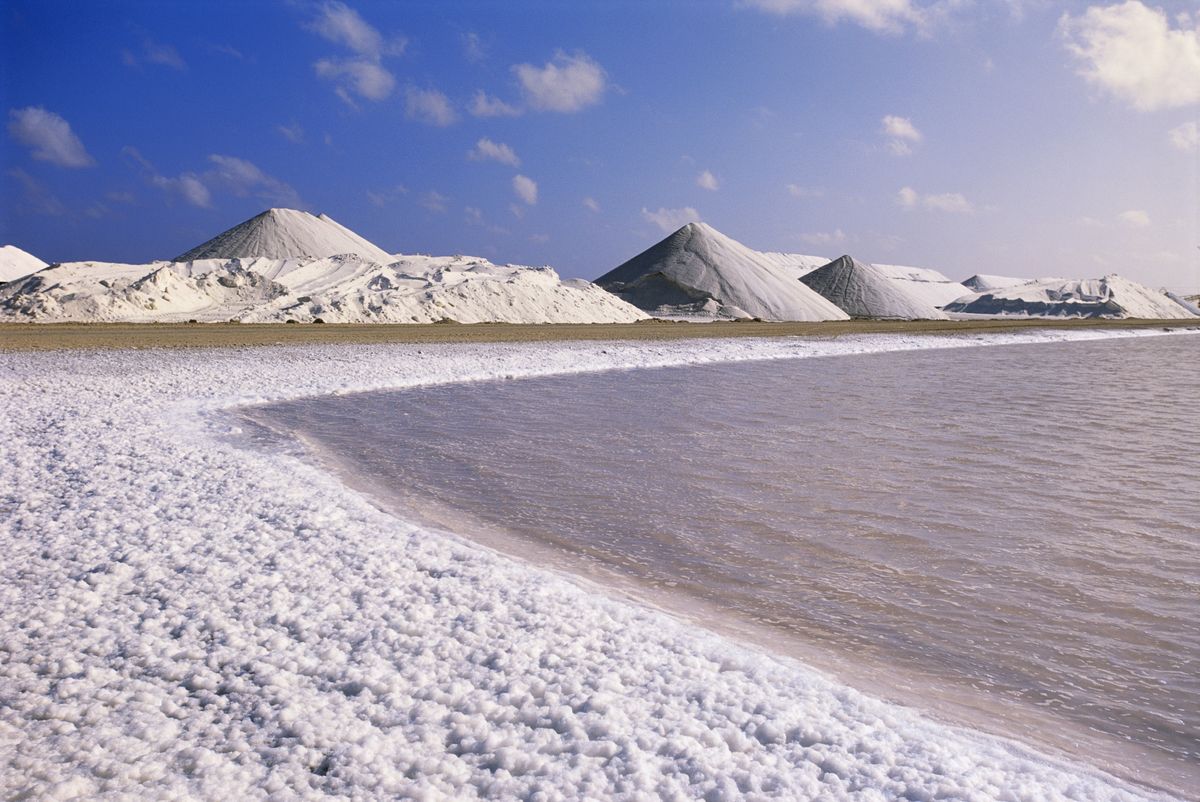
Part of the “ABC Islands” in the Dutch Caribbean, Bonaire is has made impressive sustainability efforts dating back more than 80 years, plus it has luxury boutique properties and stunning beaches. It’s said just as many flamingos are living there as there are permanent residents (tens of thousands), which are extra pink thanks to the salt flats on the island. Skip the high-traffic Caribbean destinations for this hidden, sustainable gem instead.
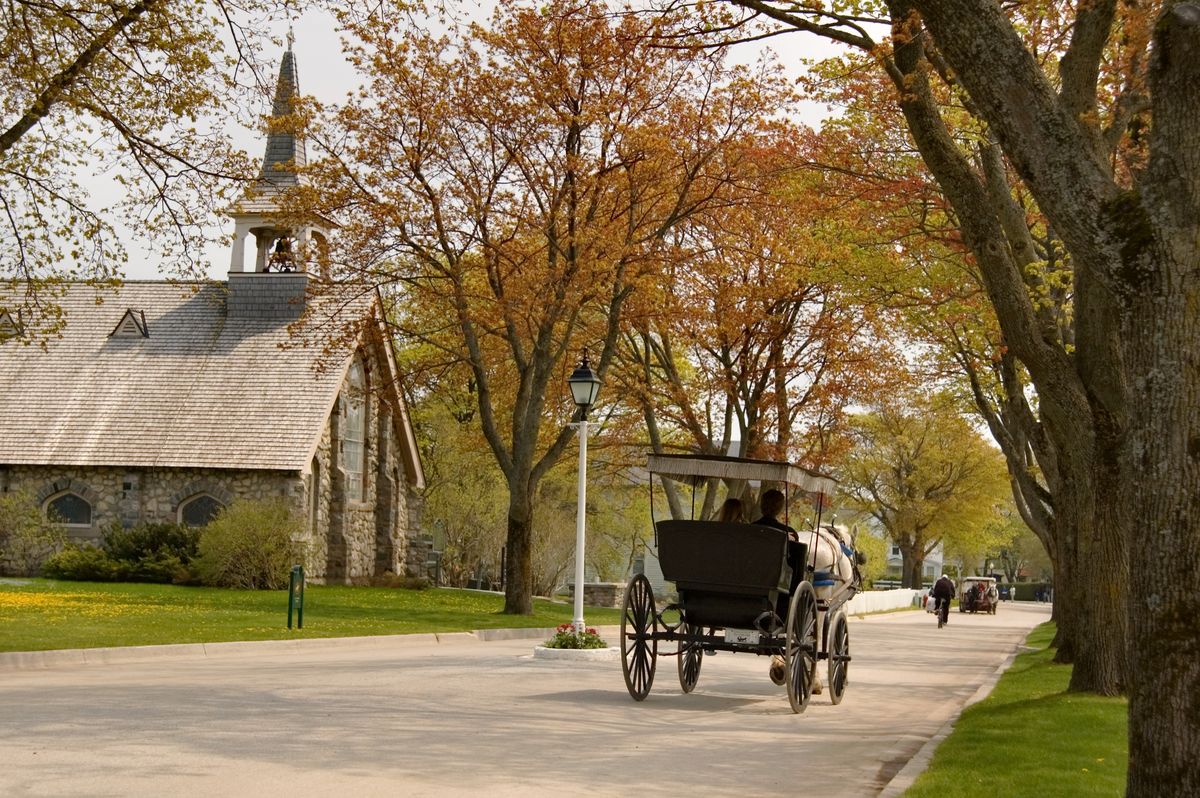
7) Mackinac Island, Michigan
This island swaps cars for horse-drawn carriages, and that’s just scratching the surface of the charm of Mackinac Island . You’ll have to hop aboard a ferry to reach the town, which is best known for its world-famous fudge, quaint downtown district, hiking and biking trails, and spectacular sunsets.
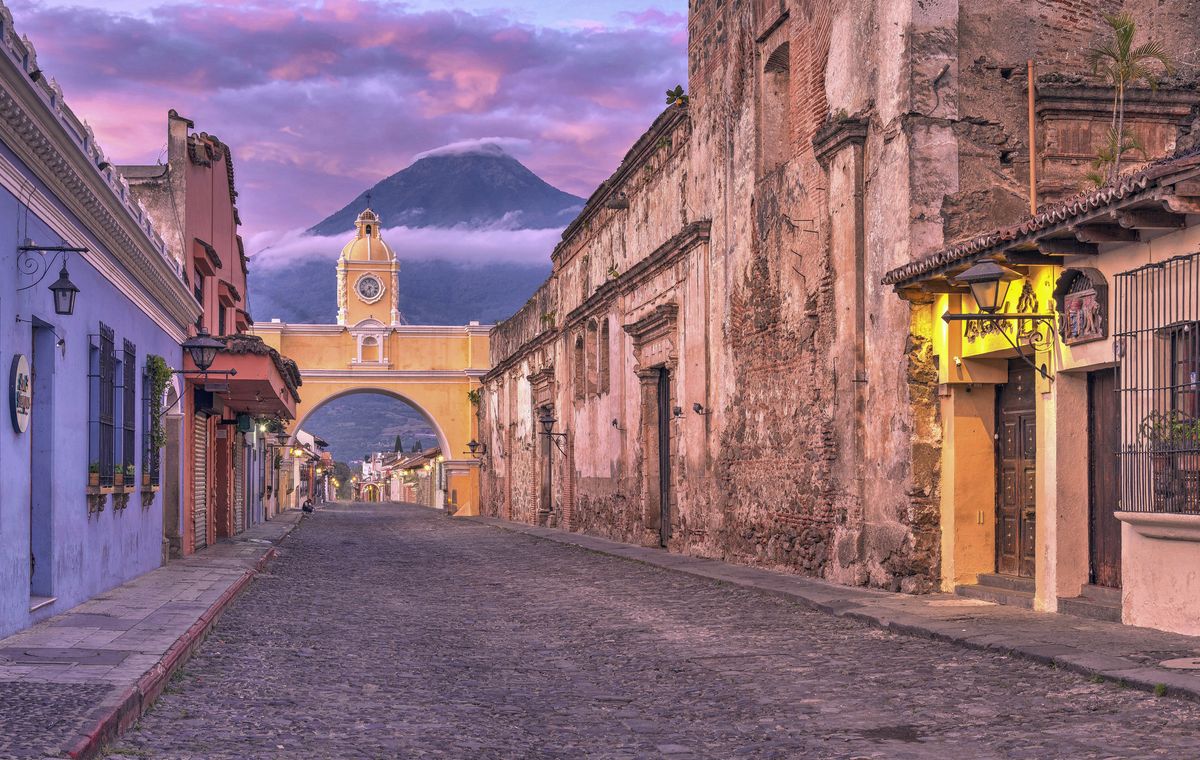
8) Antigua, Guatemala
Antigua has seen its fair share of natural and not-so-natural disasters—from an intentional fire to earthquakes, avalanches, floods, and volcanoes. Don’t let that deter you, because it's a resilient and colorful city. While there, creator Sarah Woodard shares tips for taking a guided hike up the Acatenango Volcano for views of Fuego Volcano—which is so active, it has small eruptions every 15 to 20 minutes.
More for You
Don't use these 3 types of phrases in your resume, says ex-Google recruiter
F-16 Video Shows First-Ever Human Vs. AI Aerial Dogfight
20 of the Most Dangerous Foods From Around the World
Olivia Dunne's LSU gymnastics team wins NCAA title: 'Best day ever'
‘CSI: Vegas' and ‘So Help Me Todd' Canceled at CBS
‘SNL' Star Kenan Thompson on How He Kept a Straight Face During ‘Beavis and Butt-Head' Sketch After Losing It in Rehearsal: ‘I Started to Panic'
5 people explain what it actually feels like to die
55 Easy Graduation Desserts Worth Celebrating
Tenant stunned by message from landlord forbidding them from using EV charger: 'You can do what you want'
Saudi Arabia Spent $500B to Build a Futuristic City in the Desert, and Now Reality Is Setting In
McDonald’s adds a pair of new sandwiches — and a brand-new spicy sauce
I quit teaching to work at Costco and I'm much happier. I never thought I'd leave my dream job, but these 5 things drove me out.
The most successful people never use these 5 toxic phrases when talking to themselves, says psychologist at Yale
The health condition many women are getting diagnosed with after COVID
Sir Nick Faldo doubles down on Jon Rahm disdain amid Masters debacle
Your senses will shut down in a specific order when you’re about to die
Target will 'greatly reduce' items on shelves for sale in its stores next year
17 High Protein Snack Ideas for When You’re Hungry
How to 'quiet quit,' from a former teacher who did it for 2 years so she could enjoy a better life while still getting a paycheck
Trump makes new plea for immunity ahead of Supreme Court case
- Logout Login
- Adventure Holidays
- Weekend Getaways
- Driving Holidays
- Travel News
Top Searches
Scenic Train Journeys
India Hill Stations
Uttarakhand Luxury Resorts
Sri Lanka Visa
India Stargazing Guide
6 stunning sustainable travel destinations to explore on your next vacation
Times of India TIMESOFINDIA.COM / TRAVEL TRENDS , WORLD / Created : Apr 13, 2024, 21:00 IST
You're Reading
Global destinations prioritize sustainability in tourism, integrating eco-friendly practices and conservation efforts. From Thailand to Sri Lanka, initiatives like wildlife protection, plastic reduction, and community support shap … Read more
Global destinations prioritize sustainability in tourism, integrating eco-friendly practices and conservation efforts. From Thailand to Sri Lanka, initiatives like wildlife protection, plastic reduction, and community support shape the future of travel. Read less
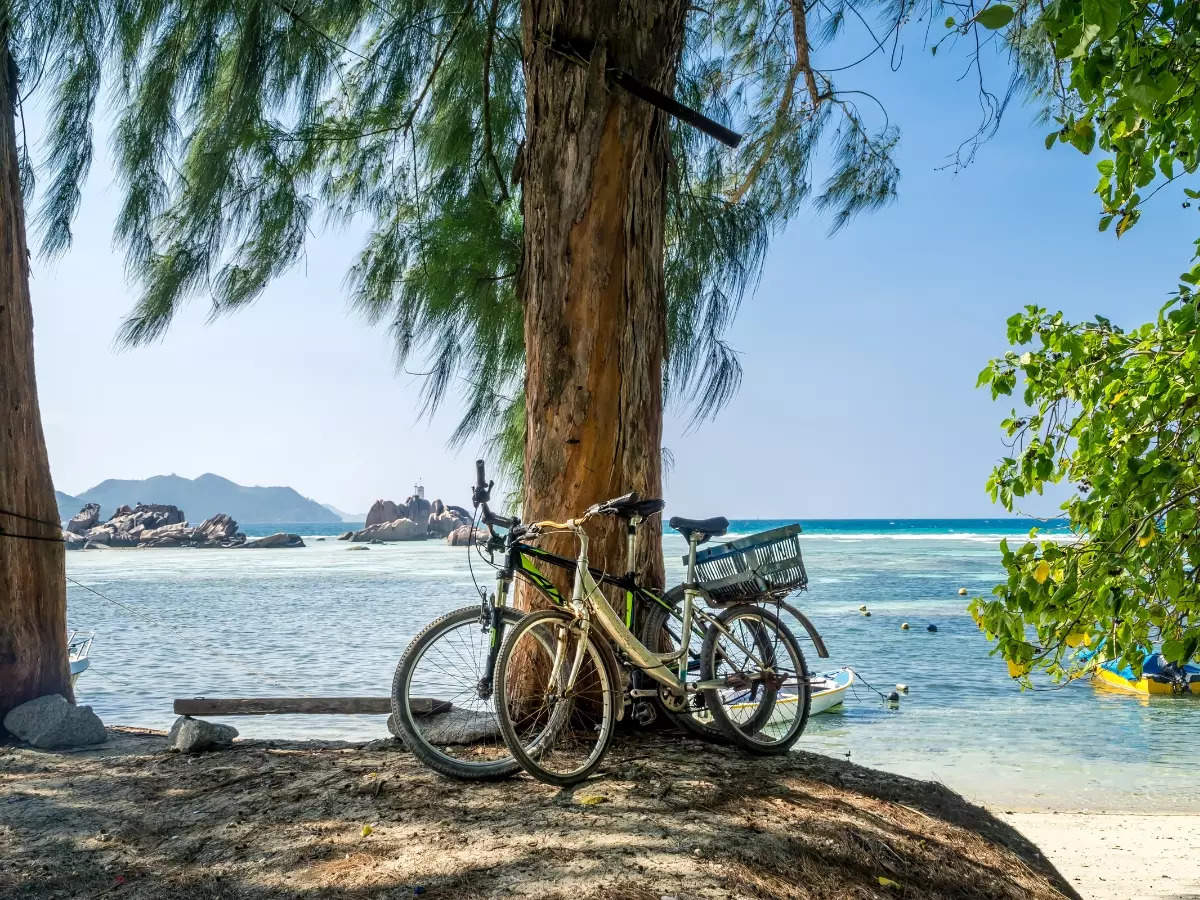
The perfect one-week itinerary for Kerala, and places to cover
More from travel news.

Comments (0)

Refrain from posting comments that are obscene, defamatory or inflammatory, and do not indulge in personal attacks, name calling or inciting hatred against any community. Help us delete comments that do not follow these guidelines by marking them offensive . Let's work together to keep the conversation civil.
Comments ( ) Sort: Newest UpVoted Oldest Discussed Down Voted closecomments

SIGN IN WITH
Or post without registration.

Visual Stories
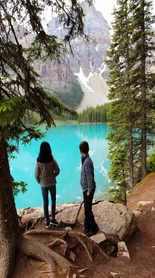
Popular Galleries
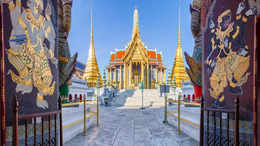
A first-timer's guide to exploring Bangkok: 5 handy tips

Luxury resorts in Uttarakhand that are unique and best for adventure travellers TRAVEL TRENDS , UTTARANCHAL

8 coolest hill stations in India accessible via direct flights! TRAVEL TRENDS , INDIA
Trending stories.
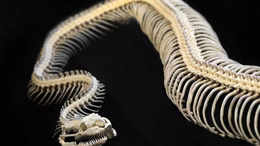
Scientists discover fossil of the world’s 'largest snake’ in Gujarat

Jodhpur's 5 iconic historical attractions

Himachal Pradesh High Court sets age limit for adventure sports

Pompeii: Beautiful painting of Helen of Troy discovered after nearly 2000 years

This glowing forest in Indian's Western Ghats is a natural wonder!
- 1 6 stunning sustainable travel destinations to explore on your next vacation
- 2 Kedarnath Dham: Here’s how to reach and things to do
- 3 Darjeeling: How to best enjoy your trip to the historic tea gardens
- 4 Gujarat: Exploring the rich biodiversity of Marine National Park in Jamnagar
- 5 Croatia implements stricter animal welfare laws to fight cruelty and abandonment

THE DEFINITIVE GUIDE TO DESTINATIONS, ITINERARIES, THINGS TO DO, RESTAURANTS, NIGHTLIFE and LOTS MORE!
FOLLOW US ON
Places to visit.
- Places to visit in Bangalore
- Places to visit in Mumbai
- Places to visit in Delhi
- Places to visit in Goa
- Hotels in Goa
- Hotels in Jaipur
- Hotels in Shimla
- Hotels in Mumbai
Things To do
- Things to do in Goa
- Things to do in Mumbai
- Things to do in Bangalore
- Things to do in Delhi
Travel Inspiration
- Visa on arrival for Indians
- Honeymoon Places in india
- Hill Stations in India
- Weekend getaways in Mumbai
- Weather in Delhi
- Weather in Chennai
- Weather in Bangalore
- Weather in Mumbai
Best Beaches
- Goa Beaches
- Mumbai Beaches
- Pondicherry Beaches
- Kerala Beaches
- Restaurants in Bangalore
- Restaurants in Chennai
- Restaurants in Pune
- Restaurants in Jaipur
- Hill Station near Delhi
- Winter trip to Ladakh
- Places to visit in Kerala
- Winter Honeymoon Destinations
- UK visa guide for Indians
- Winter Trip to Manali
- Vaishno Devi Yatra
- Special Train Ticket Booking
- HP inter-state Bus
- Honeymoon Destinations India
Latest News
- Scientists discover enormous fossil of the world’s 'largest snake’ in Kutch, Gujarat
Congratulations!
You have been successfully added to the mailing list of Times of India Travel. To complete the subscription process, kindly open your inbox and click on the confirmation link which has been emailed to you.
Share with friends
Thank You for sharing! Your friend will receive the article link on email mentioned.
- (For more than one recipient, type addresses separated by commas)
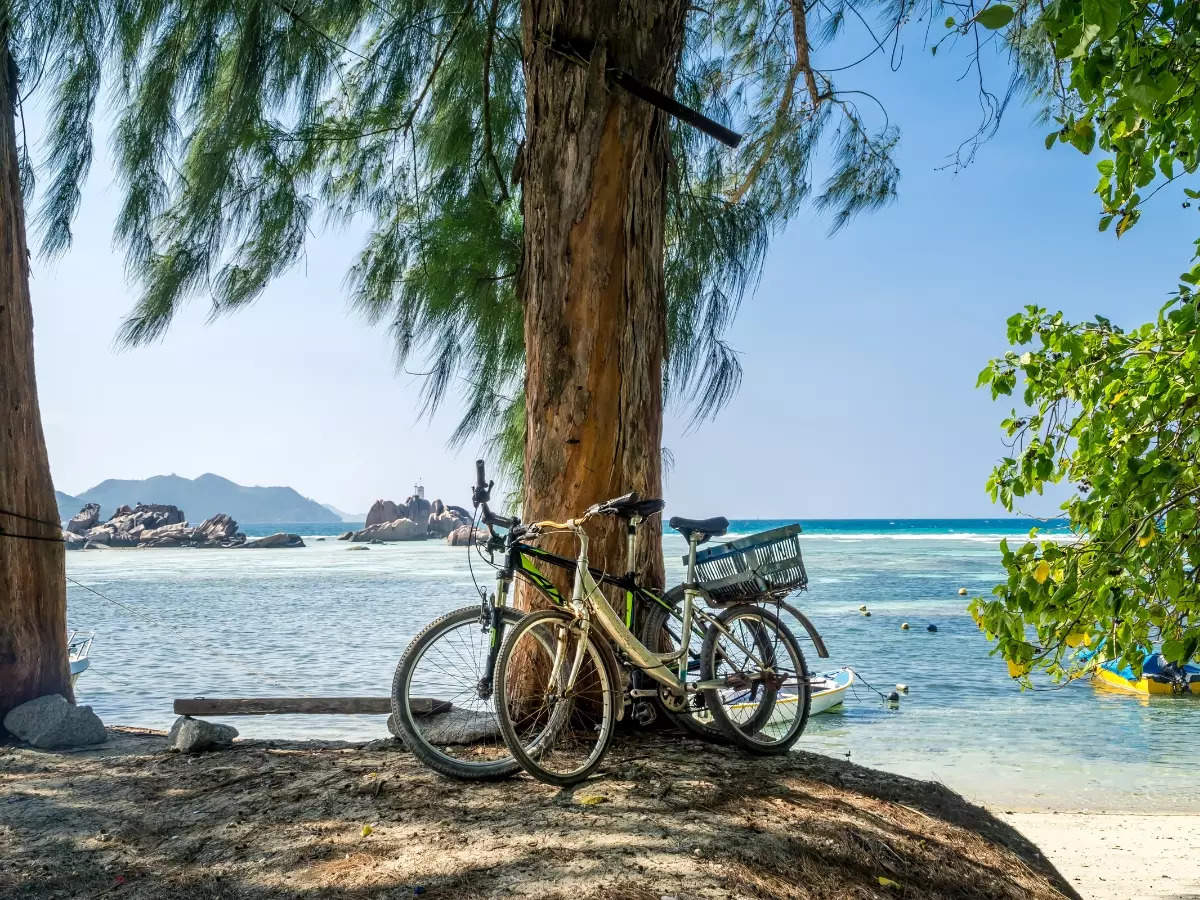
Global destinations prioritize sustainability in tourism, integrating eco-friendly practices and conservation efforts. From Thailand to Sri Lanka, initiatives like wildlife protection, plastic reducti...

IMAGES
VIDEO
COMMENTS
Best for experiencing Sri Lanka's Hill Country. ... We asked a pair of passionate writers to make the case for two of Asia's most fabulous destinations. Budget Travel. Sri Lanka on a budget: 17 ways to make your money go further. Nov 7, 2023 • 8 min read. Destination Practicalities.
Kandy. Jamie Hergenrader. Kandy, a major city in Sri Lanka's hill country, is one of the most popular tourist destinations and one corner of the country's Cultural Triangle. It's surrounded by mountains of rainforest and tea plantations and is home to a beautiful lake within the city.
Welcome to Sri Lanka. See what's waiting for you on your next island getaway. Savour the unique experiences this island treasure has to offer. What the world has to say. The best destinations to travel to in 2023 mentions Sri Lanka as one of the tourist hotspots this year. Golden Paradise Visa - Department of Immigration and Emigration, Sri Lanka.
Sri Lanka has to be one of the greatest travel destinations of all time, a beautiful tropical island in the middle of the warm Indian ocean waters. ... Travel on a budget in Sri Lanka, from $190 − $410 USD weekly per person, mid-range $530 − $960 USD, and high-end from $920 − $1250 USD. However, costs depend on factors like accommodation ...
Sri Lanka is an amazing travel destination offering a wide range of places to visit and things to do. This island, located in the Indian Ocean off the coast of India, presents visitors with an incredible array of environments and tourist attractions to enjoy and experience.
Explore the wonders of Sri Lanka, a land of rich culture, natural beauty and diverse attractions. Whether you are looking for a relaxing beach holiday, a scenic hill country retreat, a heritage tour or an adventure-filled journey, Sri Lanka has something for everyone. Visit the official website of Sri Lanka Tourism and plan your dream trip today.
It is a great way to spend a couple of hours learning a little bit about Sri Lanka's history in such a picturesque location. Galle city is a beautiful place to stay in Sri Lanka, in fact, it is a top tourist destination FULL of amazing hotels right on the water! Browse all of the beautiful hotels available in Galle here! 19. Train from Ella ...
To help you make the most of your holiday, here's our complete Sri Lanka travel guide - full of all the practical information you need to make your trip brilliant. ... Sri Lanka has always felt like an incredibly safe destination to travel to for us. That being said, the recent terrorist bombings in April 2019 left the world in shock and the ...
Another of the most beautiful travel destinations in Sri Lanka is Anuradhapura. It is one of the ancient capitals in Sri Lanka and is famously known for its Bodhi Tree and is a must-see beautiful place in Sri Lanka. It is the same tree under which Lord Buddha achieved his enlightenment. Hence, the tree is also called the Tree of Enlightenment.
For more details on train travel in Sri Lanka, I recommend The Man in Seat 61. It's the best resource for train travel information. Flying - As Sri Lanka is a relatively small island, flying domestically doesn't make much sense. There is only one airline that even offers domestic routes (Cinnamon Air) and those are expensive, starting at ...
Sri Lanka is a year-round destination. December to April is considered the high season. December and January are the peak months with relatively pleasant weather throughout the island, but expect chilly mornings and nights in hill towns such as Nuwara Eliya. The end of March to April is hot. Unbearably hot.
The tropical island has become more of a hot-spot to keen travellers in recent years, although tourism in Sri Lanka remains relatively low key. The country's wonderful individuality - evident in its contrasting landscapes and its distinct culture, is helping to shape Sri Lanka as a top destination. Sri Lanka travel facts
Philip Briggs, author of Sri Lanka: the Bradt Guide. Sri Lanka is a fantastic all-round travel destination. Most people know about the sumptuous surf-lapped palm-lined beaches that line the island's long tropical Indian Ocean coastline. But the small Asian country formerly known as Ceylon - extending over an area comparable to the Republic ...
Today, Gal Viharaya is one of Sri Lanka's most popular sites of pilgrimage. 11. Kataragama Festival [SEE MAP] One of the most popular tourist attractions in Sri Lanka, the Kataragama Festival takes place every year in July or August and is dedicated to one of the Hindu gods. It takes place over a two-week period and people from all over the ...
Galle is an important city in Sri Lanka and is a one-stop destination wherein you can take in all sights and sounds. One of the best places to visit in Sri Lanka is the Galle Fort. ... Suggested Read: Sri Lanka Travel Tips: 21 Dos And Don'ts For A Memorable Vacation. 10. Trincomalee- An Unmissable Beach Getaway.
By Jake Emen. April 20, 2024 10:20 pm. Tea Plantation near Nurawa Eliya, Sri Lanka. Getty Images. Sri Lanka can be translated as Resplendent Island, or Great Island, and with its lush, varied landscapes and abundance of resources, it's easy enough to see why. Now the oft-struggling island nation is seeking to reclaim that destiny for itself.
The well-renowned travel guidebook publisher, Lonely Planet, named Sri Lanka the best destination to travel to in 2019. This year CNN Travel listed Colombo, the capital of Sri Lanka, as one of the must-visit destinations in the world. If you are still not convinced Sri Lanka is worth visiting, keep reading.
Before the British invaded Sri Lanka in the early 1800s, the ruling family would keep Buddha's sacred tooth in their possession. So when the British invaded in 1815 and the Last Kingdom of Sri Lanka ended in Kandy, the sacred tooth stayed here as well. While in Kandy, you can dive into its culture and visit the Temple of the Sacred Tooth Relic.
If you are in Sri Lanka: keep supplies of food, water and fuel in case of lengthy disruptions. make sure to have sufficient supply of any required medicines on hand as availability may be limited. check that your travel documents are up to date. avoid areas where demonstrations and large gatherings are taking place.
Destination Sri Lanka is a division of Serendipity Escapes (PVT) LTD. We are specialists in creating bespoke holidays to Sri Lanka. We are based in Sri Lanka and our business is all about using our intimate knowledge of this wonderful island to craft the perfect holiday for you. This could be an entire itinerary across the Island or just a car ...
Herbal tea at 5.30 before a 90-minute sunrise yoga session at six; Ayurvedic treatments from 9.30; lunch at half past one, then more treatments, plus yoga and meditation. As well as a seven-day ...
4) Gstaad, Switzerland. If you're planning a Swiss vacation, you have no shortage of options when it comes to picturesque towns, winter sports, and mountain views. While St. Moritz, Zermatt ...
Global destinations prioritize sustainability in tourism, integrating eco-friendly practices and conservation efforts. From Thailand to Sri Lanka, initiatives like wildlife protection, plastic ...
Discover the top destinations for solo female travelers in 2024. From Sri Lanka's ancient sites to Portugal's sunny beaches and Japan's respectful culture, find your perfect solo adventure.